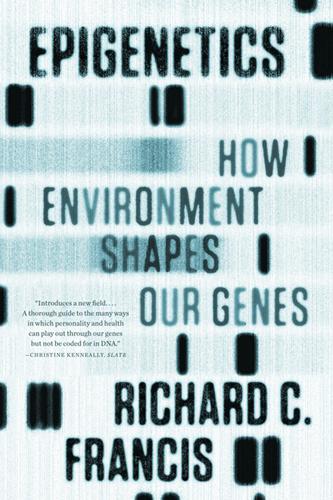
Epigenetics: How Environment Shapes Our Genes
by
Richard C. Francis
Published 14 May 2012
According to this view, cancer cells are actually derived from somatic stem cells gone bad.12 On this stem cell theory of cancer, the reason cancer cells resemble stem cells is that their mother cells were stem cells. After their birth, they took a wrong turn, converting from normal somatic stem cells to cancer stem cells. Actually, only a minority of the cancer cells retain stem cell properties. Like normal stem cells, these cancer stem cells undergo asymmetric cell division, resulting in one cancer stem cell and one more differentiated cancer cell. The more-differentiated cancer cells then undergo the symmetrical form of cell division typical of all non–stem cells. The net result is a tumor that consists of a small number of cancer stem cells, and a large number of cancer cells that are—to varying degrees—more differentiated.
…
Embryonic stem cells could help those who have been paralyzed for years to walk again—just one of countless potential applications. Somatic stem cells can be utilized in some of the same ways. For example, neural stem cells might be able to do the job for spinal cord injuries. That would be a great boon because somatic stem cells are much easier to come by than embryonic stem cells. Until very recently, embryonic stem cells could only be harvested from blastula-stage embryos, a practice opposed by many on religious grounds. But we retain reservoirs of somatic stem cells even into adulthood, which is why somatic stem cells are often misguidedly referred to as adult stem cells (a misnomer since somatic stem cells are present in all but the earliest stages of embryonic development).
…
(Somatic stem cells are often misleadingly referred to as “adult stem cells” in the media.) Somatic stem cells have lost much of that potential possessed by the embryonic stem cells, but they still retain a large amount of potential, compared with cone cells or heart muscle cells. They are said to be multipotent, which means, roughly, the capacity to become multiple cell types—in contrast to both no potential (for example, cone cells) and almost total potential (as in embryonic stem cells). There are a number of types of somatic stem cells, including neural stem cells and blood stem cells. A schematic diagram of cellular differentiation from zygote to terminal differentiation of cone cells.

Ageless: The New Science of Getting Older Without Getting Old
by
Andrew Steele
Published 24 Dec 2020
DOI: 10.1016/j.trci.2016.06.004 ageless.link/kkt6m9 Chapter 6: In with the new Stem cell therapy A good general primer on stem cell biology and therapies is Jonathan Slack, Stem Cells: A Very Short Introduction (Oxford University Press, 2012) ageless.link/rc4udv The term ‘stem cell’ is thrown around by charlatans … A good resource for evaluating claims about stem cell treatments, as well as general information about stem cells, is A closer look at stem cells (International Society for Stem Cell Research) ageless.link/miqgch … over one million HSC transplants … Alois Gratwohl et al., ‘One million haemopoietic stem-cell transplants: A retrospective observational study’, Lancet Haematol. 2, e91–100 (2015).
…
The definition of a stem cell is a cell which has a choice when it divides: it can either do what most cells do when they divide, and form two of the same kind of cell (which in this case would be two stem cells, used for replenishing the stem cell population), it can divide into a stem cell and another kind of cell (thus not depleting the stem cell population, and adding a fresh, new cell to wherever it finds itself, from the skin to the lining of the intestines), or it can turn into two non-stem cells (to maximise tissue replenishment at the expense of the stem cell population). The process of turning from a stem cell to a specific type of body cell is known as ‘differentiation’. It’s easiest to think about these abilities in the context of a developing embryo.
…
The irony is that all of these changes actually increase the number of HSCs overall – in part because these factors bias them slightly towards dividing to make two stem cells, thus increasing their own population, rather than into a stem cell and a blood cell precursor. As well as producing too many stem cells and not enough of the type of cells they’re meant to top up, stem cells can produce the wrong ratio of cell types with age, too. One example of this is mesenchymal stem cells (another mouthful – let’s call them MSCs). These are a group of stem cells whose progeny include bone-building osteoblast cells, tissue-joining cartilage cells, muscle cells and a type of fat cell found in bone marrow.
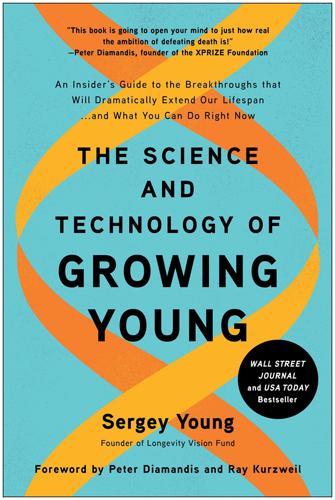
The Science and Technology of Growing Young: An Insider's Guide to the Breakthroughs That Will Dramatically Extend Our Lifespan . . . And What You Can Do Right Now
by
Sergey Young
Published 23 Aug 2021
Let’s take a look at four approaches in more detail: stem cell therapy, organ regeneration, human augmentation, and future “young blood” therapies. BACK TO THE FUTURE: STEM CELL THERAPY Stem cells are the “master cells” from which all of our cells, tissues, and organs were initially produced as we were growing in the womb. Each stem cell has the potential to become a duplicate stem cell, or to differentiate into skin cells, brain cells, bone cells, muscle cells, or virtually any other type of cell in the body. Your body contains hundreds of thousands of stem cells—in your fat, bone marrow, blood, muscle, and even in your teeth.
…
Until fairly recently, research and treatment using stem cells were things to be debated about but not to be done. Previously, only embryonic stem cells (stem cells taken from embryos) were used in the procedure. Many readers will recall the passionate debates that took place a decade or so ago regarding the ethics of harvesting embryonic stem cells from unused embryos prepared for IVF fertilization procedures. This quandary held back research in stem cell therapies for years. Then, when Shinya Yamanaka discovered how to reprogram cells back into their original, pluripotent state, the need for embryonic stem cells was eliminated, and stem cell research stepped into the spotlight.
…
Medical research leaders like the Mayo Clinic and the Stanford Medical Center are conducting studies on the use of stem cells to regenerate spinal cords in patients with traumatic injuries and to regenerate cartilage in patients with osteoarthritis of the knee. There are thousands more clinical trials using stem cells currently underway in the United States alone.3 And at the time of writing, a search for the subjects stem cell and stem cell therapy on start-up investment site Crunchbase lists more than four hundred companies that are working on this. Slowly but surely, stem cell research is beginning to bear fruit. Take the case of Chris Barr, a middle-aged California man whose neck was broken in seven places in a surfing accident in 2017.
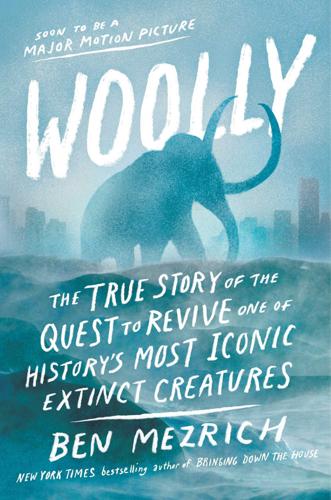
Woolly: The True Story of the Quest to Revive History's Most Iconic Extinct Creature
by
Ben Mezrich
Published 3 Jul 2017
Because the cells in the Petri dish in front of him, suspended in the pinkish medium, were not stem cells. Though the placental tissue that his friend from Chicago had provided them had indeed been fresh, they had been unable to generate workable stem cells from the material, no matter how much they harvested. A quick search of the literature told them that they were not alone in this failure: It turned out that nobody had successfully generated and manipulated elephant stem cells yet. Mouse stem cells, pig stem cells, even human stem cells had been used in genetic engineering experiments, but never elephant stem cells. Luhan had a theory about that. It was widely known that elephants did not get cancer.
…
“And when that succeeds—when we’ve proven our ability to insert a Woolly Mammoth gene into an elephant cell—we shift our work to the stem cells.” Stem cells are the undifferentiated cells within every living thing that can give rise to the diversity of other cells that make up the living whole. Most cells are specialized and don’t change that specialty—the cells making up an ear or a hair remain that of an ear or hair. But stem cells can differentiate to become anything: ears, hair, heart, lungs, hemoglobin, tusks. A genetically changed stem cell could give rise to all the different traits of a Woolly Mammoth. And those traits would then be inheritable and inherited.
…
“Well, we don’t need the whole elephant,” she said. “What do you mean?” Margo asked. “Our eventual goal is stem cells, right?” In order to implant a genetic change—Mammoth DNA—into the elephant species DNA, they needed a stem cell. Originally, that was going to be something they would seek after they’d experimented on living elephant cells. “Sure,” Bobby said. “But it’s hard enough getting live elephant samples. Where do we find elephant stem cells?” “Elephant placenta,” Luhan responded. Mammalian placenta is rich in stem cells, and placental cells were as young as fetal cells, thus easier to reprogram than adult somatic cells (any biological cell that forms an animal’s body).
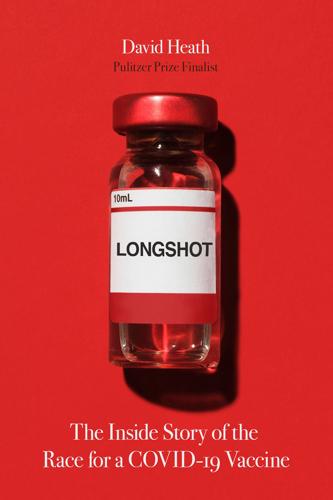
Longshot
by
David Heath
Published 18 Jan 2022
“ModeRNA Therapeutics, a new startup out of Cambridge, MA-based Flagship VentureLabs, announced it has developed a method for producing human induced pluripotent stem cells, which are embryonic-like stem cells that are formed by reprogramming adult stem cells,” said one article. It was a bit ironic considering that Afeyan later said that he instantly rejected the notion of making stem-cells.8 The announcement went on to give Moderna’s research team credit for developing modified RNA to reprogram cells back to embryonic stem cells.9 Of course, it was really Rossi and Warren who did that. ModeRNA wasn’t even incorporated yet and had only one employee, who was busy ordering supplies for his new rented laboratory.
…
Ken Chien, who is one of Moderna’s academic cofounders, he is a professor at Karolinska [Institute] in Sweden, has spent his life studying the heart. He is a cardiologist, and what Ken taught me is that on every one of your hearts we have stem cells until the day we die. All your life you have stem cells sleeping on your heart tissue. And what Ken taught me is that there is one protein in the body called VEGF, that if you send that protein to the stem cell it’s going to tell that stem cell, go back to work. Make more heart. Okay? And so what Ken has done… years ago, he tried to make a drug with recombinant protein—the technology that the biotech industry has used.
…
Chemical & Engineering News, September 3, 2018, https://cen.acs.org/business/start-ups/mRNA-disrupt-drug-industry/96/i35. 7. Scott Hensley, “Researchers Take Another Step toward Stem Cells without Embryos,” NPR, October 1, 2010, https://www.npr.org/sections/health-shots/2010/10/01/130262558/researchers-take-another-step-toward-stem-cells-without-embryos. 8. Erin Kutz, “ModeRNA, Stealth Startup Backed by Flagship, Unveils New Way to Make Stem Cells,” Xconomy, October 4, 2010, https://xconomy.com/boston/2010/10/04/moderna-stealth-startup-backed-by-flagship-unveils-new-way-to-make-stem-cells. 9. Erin Kutz, “ModeRNA, Stealth Startup.” 10. Alice Park, “People Who Mattered: Derrick Rossi,” Time, http://content.time.com/time/specials/packages/article/0,28804,2036683_2036767_2037437,00.html. 11.
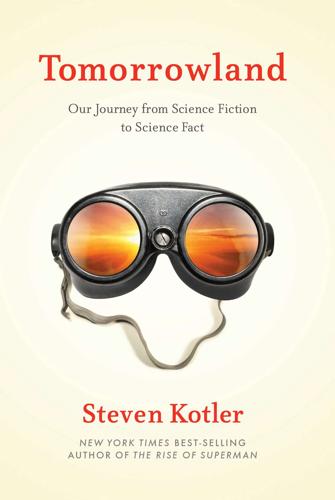
Tomorrowland: Our Journey From Science Fiction to Science Fact
by
Steven Kotler
Published 11 May 2015
The second method is parthenogenesis, the Greek word for virgin birth, in which an unfertilized egg is tricked into cell division and then mined for stem cells. The third idea is hybridization, or using existing stem cell lines (meaning cell lines that researchers have already isolated) to create new cell lines via genetic manipulation. And while both of these notions are exciting, no one really knows if either will work. So, for now, both are off the radar. In the remaining two methods, fetal stem cells are culled from aborted fetuses or embryonic stem cells are removed from unused embryos taken from in vitro fertilization clinics. And it is these final two methods that have put stem cells into the middle of America’s reproductive rights debate.
…
But to get this information, he needs stem cells. Currently, much of Goldstein’s work involves nonhuman-derived stem cells, which are not technically a point of contention. “But five years from now,” he says, “if I want to actually cure these diseases, I’ll need access to human embryonic stem cells, and I want to make sure they’re available.” The issue of stem-cell availability is another front in this battle. In the summer of 2001, just after his first State of the Union, President Bush issued an executive order restricting federal research money to seventy-eight previously harvested lines of stem cells. These lines were cultivated between 1998, when human embryonic stem cells were first isolated, and that 2001 moment further research was nixed.
…
The group has gathered to celebrate an announcement made the day prior at Stanford, when the institution declared its plans to capitalize on $12 million of anonymously donated seed money and build a $120 million Institute for Stem Cell Biology to be headed up by Weissman. In other words, in the war over stem cells, Stanford just declared itself the Western Front. And make no mistake, the research they plan to do there is much needed. Building on Weissman’s previous work with blood-forming stem cells, the Stanford institute will initially focus on discovering the stem cells that become the other major organs of the body — that way, if these organs become cancerous, they’ll have new ways to fight the disease.

Immortality, Inc.
by
Chip Walter
Published 7 Jan 2020
There was talk among the triumvirate—Hariri, Venter, and Diamandis—that it might be best to split off the stem cell work to create an entirely new business. It wasn’t that there was any ill will among the three. But Venter, as CEO, had pretty much focused HLI on genomics and Health Nucleus. Hariri’s investigations of stem cell therapy were undeniably interesting, and related to longevity and health span, but were a little out of the orbit of HLI’s current plans. For his part, Hariri really wanted to focus on placental stem cells, and felt he was making serious progress. Sure enough, in early 2017, the stem cell side of HLI split off, and Hariri and Diamandis, with a fresh supply of Silicon Valley investors, formed a new company called Celularity, designed exclusively “to turn stem cells into medicine.”
…
In fact, it provided everything an embryo needed to develop into a healthy, living, breathing child: It brimmed with pluripotent stem cells, life’s purest form of cell, capable of morphing into whatever the body required—liver, muscle, even neurons. This was how living things were made as they developed. Some pluripotent stem cells transformed into skin. Others became bones or hearts or kidneys—all the cellular matter that made a human possible. This also made placentas magnificent stem cell factories. Yet every day nearly all of them were tossed in the rubbish! A discovery like this might have prompted a lot of scientists to write a paper extolling their findings in a peer-reviewed journal; Hariri had done it himself plenty of times.
…
But what if you had access to medicines created by placental stem cells? Those, at least theoretically, could solve all three problems: regenerating body, mind, and appearance. This was not an entirely new idea. Before Diamandis and Hariri had begun brainstorming their longevity play, scientists outside the United States had undertaken stem cell research more aggressively than the FDA in the United States. Among them was the Karolinska Institutet in Stockholm, Sweden, unequivocally regarded as one of Europe’s best medical establishments. At Karolinska, scientists had injected stem cells into patients with blood, brain, eye, bone, and liver disorders, including cancer.
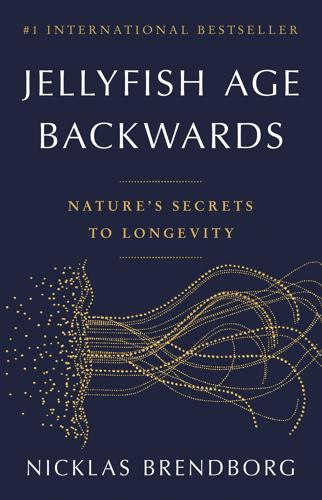
Jellyfish Age Backwards: Nature's Secrets to Longevity
by
Nicklas Brendborg
Published 17 Jan 2023
But the general rule is that your cells need to be replaced occasionally, and that makes adult stem cells important. In fact, your stem cells determine your ability to regenerate at tissue level. Autophagy and similar recycling or repair processes help individual cells recover from damage. But on a tissue level, repair and maintenance is taken care of by stem cells. Like so many other repair mechanisms in the body, though, the ability of your stem cells deteriorates over time. As we age, stem cells become passive and worse at making new cells to replace lost ones. This phenomenon is usually called ‘stem cell exhaustion’. The result is that we get worse at recovering from injury as we age, and eventually even normal maintenance cannot be upheld.
…
For instance, the stem cells responsible for making new immune cells get worse over time, and that is one of the reasons old people have weaker immune systems. They also take longer to recover from injuries or surgeries, while having a higher risk of long-term complications, all because the ability to regenerate worsens as stem cells give up. So while we envision replacing entire organs with new ones made from pluripotent stem cells, we could also replace adult stem cells to increase regenerative ability. Even though it sounds like a scammy procedure from Hollywood, you can imagine getting stem cell injections to fight ageing.
…
Even though it sounds like a scammy procedure from Hollywood, you can imagine getting stem cell injections to fight ageing. This approach is especially developed for what is called mesenchymal stem cells. These are stem cells that make cells of bone, muscle, cartilage and fat. In one experiment, researchers isolated mesenchymal stem cells from young mice and injected them into old mice. Originally, the research was meant to examine if mesenchymal stem cell injections could be a treatment for osteoporosis, a disease of old age in which bones lose density and become weaker. One reason for this disease could be that stem cells don’t produce the cells required for maintenance. To the researchers’ surprise, though, their treatment didn’t just affect bone health.
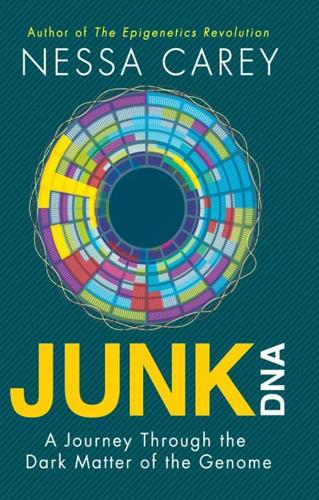
Junk DNA: A Journey Through the Dark Matter of the Genome
by
Nessa Carey
Published 5 Mar 2015
Many human tissues contain cells known as stem cells. These are responsible for producing replacement cells when needed. When new cells are needed, a stem cell will copy its DNA and then split it between two daughter cells. Typically, one of these daughter cells will develop into a fully fledged replacement cell. The other will become a new stem cell, which can continue to create replacements in the same way. One of the ‘busiest’ cell types in the human body is the type of stem cell that gives rise to all the blood cells,f including red blood cells and those that we rely on to fight infection. These stem cells proliferate at an incredible rate.
…
The smallRNAs bind to the messenger RNAs that carry the code for these proteins, and less protein is produced. The brakes are taken off the stem cells and they convert into mature muscle.15,16 Figure 18.2 When a stem cell divides it can create either another stem cell, which can also keep dividing, or a differentiated cell that will not create more stem cells. A similar effect can be seen in the heart. The adult cardiac muscle does contain some stem cells, although they aren’t huge in number and they are hard to convert into mature heart tissue. This is one of the reasons why heart attacks are so damaging.
…
All three of these tissues produce cells required for fighting infection and were expected to have a large population of stem cells. This finding was consistent with the smallRNA systems having a role in stem cell control. The mice all died, but this was due to a massive deterioration of their intestinal tracts. This is also consistent with a role in stem cells. Our intestines are constantly losing cells that are sloughed off during the continuing activity of the digestive system. These cells have to be replaced every day so we would expect there to be a very active stem cell population.13 However, it wasn’t clear exactly how the loss of the scissors enzyme resulted in dramatic damage to the intestines, although it may have been related to abnormalities in the way the mice processed fats in their diet.
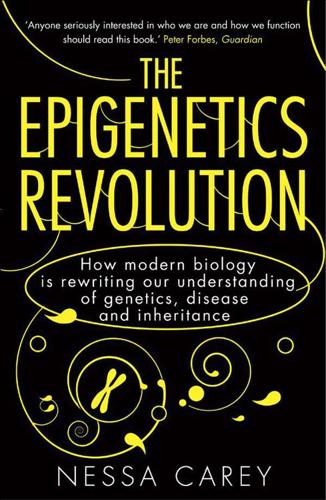
Epigenetics Revolution: How Modern Biology Is Rewriting Our Understanding of Genetics, Disease and Inheritance
by
Nessa Carey
Published 31 Aug 2011
This is because in most adult animals the only genuinely pluripotent stem cells are the tightly controlled cells of the germline which give rise to eggs or sperm. But active pluripotent stem cells are a completely normal part of a plant. In plants these pluripotent stem cells are found at the tips of stems and the tips of roots. Under the right conditions, these stem cells can keep dividing to allow the plant to grow. But under other conditions, the stem cells will differentiate into specific cell types, such as flowers. Once such a cell has become committed to becoming part of a petal, for example, it can’t change back into a stem cell. Even plant cells roll down Waddington’s epigenetic landscape eventually.
…
Just like the Lin28 protein, these miRNAs also improve reprogramming of somatic cells into iPS cells27. When we compare stem cells with their differentiated descendants, we find that they express very different populations of mRNA molecules. This seems reasonable, as the stem and differentiated cells express different proteins. But some mRNAs can take a long time to break down in a cell. This means that when a stem cell starts to differentiate, there will be a period when it still contains many of the stem cell mRNAs. Happily, when the stem cell starts differentiating, it switches on a new set of miRNAs. These target the residual stem cell mRNAs and accelerate their destruction.
…
It’s the one that’s a mixture of black and ginger splodges, sometimes on a white background. The colour of each hair in a cat’s coat is caused by cells called melanocytes that produce pigment. Melanocytes are found in the skin, and develop from special stem cells. When melanocyte stem cells divide, the daughter cells stay close to each other, forming a little patch of clonal cells from the same parent stem cell. Now, here’s an amazing thing: if a cat’s colour is tortoiseshell, it’s a female. There is a gene for coat colour that encodes either black pigment or orange pigment. This gene is carried on the X chromosome. A cat may receive the black version of the gene on the X chromosome inherited from her mother and the orange version on the X chromosome inherited from her father (or vice versa).
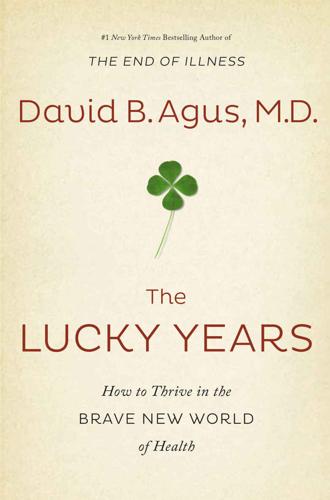
The Lucky Years: How to Thrive in the Brave New World of Health
by
David B. Agus
Published 29 Dec 2015
But in all the years of debating the topic, we’ve forgotten one important part of the equation: the male versus female stem cell. Because one of the hallmarks of aging is the decline of stem cells’ functionality, we must ask whether the aging of stem cells differs between men and women, and whether this has consequences for disease and life span. Studies thus far have shown that some stem-cell populations in females are superior to those in males thanks to estrogen, the female sex hormone. Stem cells destined to be blood cells, for example, are more abundant in female mice than in male mice, an effect that is dependent on estrogen signaling. A similar paradigm has been described in neural stem cells where estrogen increases the proliferation of these cells in a transient manner that fluctuates throughout the menstrual cycle.
…
That observation motivated Tomasetti and Vogelstein to dig a little deeper and try to understand why, for example, the lifetime risk for cancer in the large intestine is 24 times higher than in the small intestine. What they found is that the large intestine houses more stem cells than the small intestine. Moreover, the large intestine’s stem cells divide four times more frequently than do the stem cells in the small intestine. This relationship between rates of stem-cell division and risk of cancer was also seen in many other tissues. Unfortunately, their analysis didn’t include two of the most common types of cancer—breast and prostate—because there wasn’t enough information on rates of stem-cell division in those tissues, an omission that was criticized by others upon their reporting.
…
A similar paradigm has been described in neural stem cells where estrogen increases the proliferation of these cells in a transient manner that fluctuates throughout the menstrual cycle. Estrogen signaling is not the sole contributor to differences in stem-cell regulation between the sexes. Other studies have shown that females also exhibit increased capacity for rapid wound healing and liver regeneration, processes that are likely dependent on resident stem-cell populations. So females tend to show increased stem-cell self-renewal, regeneration potential, and in some cases, proliferation. But the big question remains: Does this tendency toward increased self-renewal in females alter the capacity of stem cells to regenerate tissues throughout aging? Does it actually influence longevity?
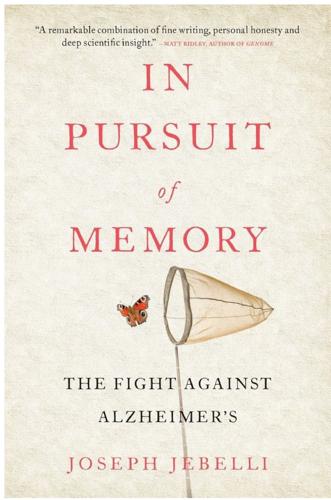
In Pursuit of Memory: The Fight Against Alzheimer's
by
Joseph Jebelli
Published 30 Oct 2017
The entire procedure is a prolonged and complicated process, involving a series of unstable, transient culture steps: an initial culture of human skin cells known as fibroblasts, made by dicing a small chunk of skin no bigger than a pea and leaving it in nutrient broth (a liquid containing essential nutrients and amino acids) for around six weeks; another fibroblast culture in which the four reprogramming genes, called Oct4, Sox2, c-Myc and Klf4–collectively known as Yamanaka factors–are subsequently added; a three-month-long pluripotent stem cell culture, where individual fibroblasts begin to form colonies of stem cells; a neuronal precursor cell culture, composed of infant neurons which develop once the stem cells have been submerged in a special, neuron-promoting nutrient broth; and a 100-day-long period of neuronal maturation known as corticogenesis, where the neurons make synapses, fire electrical impulses, and release neurotransmitter–in this case glutamate–to finally assume a culture of adult, human, cortical glutamatergic neurons.
…
Using primate models of Parkinson’s, Hallett’s team has shown that auto-SCT of iPS cells taken from the skin can partially rebuild the substantia nigra, the brain region destroyed by Parkinson’s disease. This improved the animals’ movement symptoms for up to two years. Other data suggests that stem cells needn’t engraft at all. Rather, their mere presence may help by providing restorative, ‘neurotrophic’ support to diseased brain regions. That was illustrated in 2009 at the University of California, Irvine, when Frank LaFerla injected stem cells into the brain of Alzheimer’s transgenic mice.11 Within a month the animals’ memory improved. And yet, the stem cells didn’t turn into neurons. Or have any impact on plaques and tangles. Instead, they were quietly churning out the protein BDNF (brain-derived neurotrophic factor), which alone was enough to boost synapse density in the hippocampus by 67 per cent.
…
Chapter 14: Regeneration 1. Yamanaka, Lasker Lecture at Albert Einstein College of Medicine, https://www.youtube.com/watch?v=DQNoyDwCPzM 2. Thomson, Itskovitz-Eldor, et al., ‘Embryonic stem cell lines derived from human blastocysts’. 3. Takahashi and Yamanaka, ‘Induction of pluripotent stem cells from mouse embryonic and adult fibroblast cultures by defined factors’. 4. Takahashi, Tanabe, et al., ‘Induction of pluripotent stem cells from adult human fibroblasts by defined factors’. 5. Van der Worp, Howells, et al., ‘Can animal models of disease reliably inform human studies?’. 6. Warren, Tompkins, et al., ‘Mice are not men’. 7.
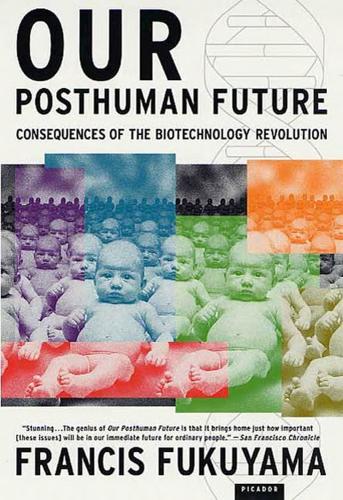
Our Posthuman Future: Consequences of the Biotechnology Revolution
by
Francis Fukuyama
Published 1 Jan 2002
Unlike organs transplanted from donors, such cloned body parts will be almost genetically identical to cells in the body into which they are placed, and so presumably free from the kinds of immune reactions that lead to transplant rejection. Stem cell research represents one of the great frontiers of contemporary biomedical research. It is also hugely controversial as a result of its use of embryos as sources of stem cells—embryos which must be destroyed in the process.9 The embryos usually come from the extra embryos “banked” by in vitro fertilization clinics. (Once created, stem cell “lines” can be replicated almost indefinitely.) Out of concern that stem cell research would encourage abortion or lead to the deliberate destruction of human embryos, the U.S.
…
Klopp et al., “Gene Expression Profile of Aging and Its Retardation by Caloric Restriction,” Science 285 (1999): 1390–1393. 8 Kirkwood (1999), p. 166. 9 For a sample of the discussion on stem cells, see Eric Juengst and Michael Fossel, “The Ethics of Embryonic Stem Cells—Now and Forever, Cells without End,” Journal of the American Medical Association 284 (2000): 3180–3184; Juan de Dios Vial Correa and S. E. Mons. Elio Sgreccia, Declaration on the Production and the Scientific and Therapeutic Use of Human Embryonic Stem Cells (Rome: Pontifical Academy for Life, 2000); and M. J. Friedrich, “Debating Pros and Cons of Stem Cell Research,” Journal of the American Medical Association 284, no. 6 (2000): 681–684. 10 Gabriel S.
…
Other gerontologists, such as Tom Kirkwood, assert flatly that aging is the result of a complex series of processes at the level of cells, organs, and the body as a whole, and that there is therefore no single, simple mechanism that controls aging and death.8 If a genetic shortcut to immortality exists, the race is already on within the biotech industry to find it. The Geron Corporation has already cloned and patented the human gene for telomerase and, along with Advanced Cell Technology, has an active research program into embryonic stem cells. The latter are cells that make up an embryo at the earliest stages of development, before there has been any differentiation into different types of tissue and organs. Stem cells have the potential to become any cell or tissue in the body, and hence hold the promise of generating entirely new body parts to replace ones worn out through the aging process. Unlike organs transplanted from donors, such cloned body parts will be almost genetically identical to cells in the body into which they are placed, and so presumably free from the kinds of immune reactions that lead to transplant rejection.
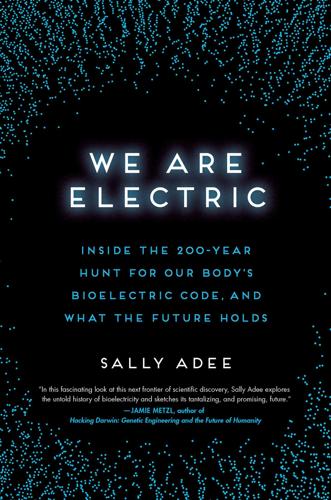
We Are Electric: Inside the 200-Year Hunt for Our Body's Bioelectric Code, and What the Future Holds
by
Sally Adee
Published 27 Feb 2023
“In the Flesh: The Embedded Dangers of Untested Stem Cell Cosmetics,” Scientific American, 17 December 2012 <https://www.scientificamerican.com/article/stem-cell-cosmetics/> 48 Aldhous, Peter. “An Experiment That Blinded Three Women Unearths the Murky World of Stem Cell Clinics,” BuzzFeed News, 21 March 2017 <https://www.buzzfeednews.com/article/peteraldhous/stem-cell-tragedy-in-florida> 49 Coghlan, Andy. “How ‘stem cell’ clinics became a Wild West for dodgy treatments,” New Scientist, 17 January 2018 <https://www.newscientist.com/article/mg23731610-100-how-stem-cell-clinics-became-a-wild-west-for-dodgy-treatments/> 50 Feng J.
…
Preliminary work by Sarah Sundelacruz—a former protégé of Levin who was immediately snapped up into private industry—suggests you could tweak stem cells’ bioelectrical parameters to influence their eventual identity. More recently, Sundelacruz showed that you could even analyze stem cells’ bioelectric profiles to determine if they were any good at keeping their shape, or if they would revert into a kind of cell you didn’t want—perhaps staving off the fate of the lady with the clicking eyes. This approach can even be used to guide stem cells into the specific physical locations where they are needed: Min Zhao’s team have used electrical stimulation to guide stem cells to grow into replacement neurons in brain-damaged areas, which has been nearly impossible before.50 But what happens when the bioelectric signals that shape cellular identity go wrong?
…
“Regenerative medicine” is an umbrella term that was only invented about thirty years ago to cover the wide variety of ways people have tried to replace what has been lost to trauma or age.2 The discipline was stitched together, a bit like Frankenstein’s monster, from a disparate collection of other subdisciplines that included implant and transplant medicine, prosthetics, and tissue engineering. What united them all into a coherent framework was the discovery, and the galvanizing promise, of stem cells. The reason you’re always hearing about stem cells is because of their unique ability to turn into many other kinds of cells. They’re a bit like kids: initially infinitely malleable, but as they mature and grow into their eventual vocation, they specialize into specific adult roles like muscle or nerve or bone. When you were a three-to-five-day-old blastocyst, you were all stem cells (about 150 of them, in fact). By the time you’re an adult, you don’t have many of them left, and what few you have are mostly generated in your bone marrow.

The Future Is Faster Than You Think: How Converging Technologies Are Transforming Business, Industries, and Our Lives
by
Peter H. Diamandis
and
Steven Kotler
Published 28 Jan 2020
Earlier in this book we mentioned neurosurgeon and entrepreneur Bob Hariri, who helped pioneer the field of cellular medicine with his year 2000 discovery that the human placenta houses an abundant supply of stem cells—providing a noncontroversial supply of this potential treatment option. After Hariri’s company was acquired by pharma giant Celgene, he led a team of over a hundred scientists and engineers in an effort to turn placental stem cells into real medicines. Along the way, they made two other critical discoveries. First, as people age, their supply of stem cells rapidly diminishes, a process known as “stem cell exhaustion” (that we’ll explore in depth in our next chapter). Second, the placenta doesn’t just contain stem cells, but also houses immunological cells such as natural killer cells and T-cells, both of which are critical in the body’s natural ability to fight cancer—as long as they recognize the danger.
…
While germline engineering remains controversial—now think Gattaca—it could mean ridding families of scourges like cystic fibrosis and sickle cell anemia, making it a medical advance as potentially important to this century as vaccines were to the last. There’s also stem cells to consider. One of the body’s main repair mechanisms, stem cells have the remarkable ability to turn into any other type of cell, which is why the body uses them to repair worn-out tissue. Stem cell therapy works the same way. Currently, there are only a handful of approved stem cell therapies in the United States, but this doesn’t account for the incredible amount of work being done in labs all over the globe. Researchers are pioneering treatments for cancer, diabetes, arthritis, heart disease, macular degeneration, skeletal tissue repair, pain management, neurological diseases, auto-immune conditions, burns and other skin diseases, blindness, and much more.
…
When injected into older mice, GDF11 has been able to regenerate their hearts, brains, muscles, lungs, and kidneys. Stem cells, our third approach, are showing the most promise. Samumed, LLC, for example, is targeting the signaling pathways that regulate the self-renewal and differentiation of adult stem cells. If successful, their patented molecules should be able to regrow cartilage, heal tendons, remove wrinkles, and, by the way, stop cancer. This also explains why Samumed, a company still in stealth mode, has a $13 billion valuation. A different approach is being pioneered by Celularity, a company founded by stem cell pioneer Bob Hariri (Peter is also a cofounder).
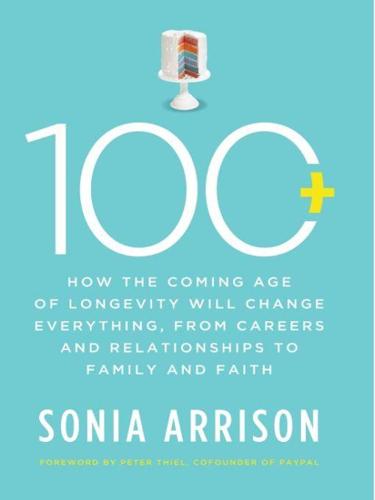
100 Plus: How the Coming Age of Longevity Will Change Everything, From Careers and Relationships to Family And
by
Sonia Arrison
Published 22 Aug 2011
Keirstead, Gabriel Nistor et al., “Human Embryonic Stem Cell-Derived Oligodendrocyte Progenitor Cell Transplants Remyelinate and Restore Locomotion After Spinal Cord Injury,” Journal of Neuroscience, May 11, 2005, http://neuro.cjb.net/cgi/content/abstract/25/19/4694. 42 See two of the informative videos here: http://singularityhub.com/2010/08/02/gerons-embryonic-stem-cell-clinical-trials-for-spinal-cord-injury-have-returned/ . 43 David Wright and Dan Childs, “Medical Milestone: Genetics Company Begins First Embryonic Stem-Cell Treatment on Patient,” ABC News, October 11, 2010, http://abcnews.go.com/print?id=11853497. See also Geron, “Geron Initiates Clinical Trial of Human Embryonic Stem Cell-Based Therapy,” October 11, 2010, www.geron.com/media/pressview.aspx?id=1235. 44 National Institutes of Health, “Stem Cells and Diseases,” http://stemcells.nih.gov/info/health.asp. 45 Paolo Rama, M.D., Stanislav Matuska, M.D. et al., “Limbal Stem-Cell Therapy and Long-Term Corneal Regeneration,” New England Journal of Medicine , July 8, 2010, http://www.nejm.org/doi/full/10.1056/NEJMoa0905955. 46 See www.tcacellulartherapy.com/fda_clinical_trials.html; and www.cytori.com/Innovations/ClinicalTrials/HeartDisease.aspx. 47 See www.regenexx.com/. 48 Regenexx, “Regenerative-Science FAQ,” www.regenexx.com/wp-content/uploads/2010/08/Regenerative-Science-FAQs-8.21.10.pdf (last accessed January 11, 2011). 49 “Jarvis Green Gets Contract with Houston Texans, Attributes It to Regenexx Stem Cell Injections,” Regenerative Sciences, December 15, 2010, www.regenexx.com/2010/12/jarvis-green-gets-contract-with-houston-texans-attributes-it-to-regenexx-stem-cell-injections/ . 50 Phone conversation with Jarvis Green.
…
Another FDA-approved trial is being conducted by Santa Monica–based Advanced Cell Technology (ACT) and is focused on treating patients with an eye disease called Stargardt’s macular dystrophy, which causes blindness, usually among youths.44 As we know, not all stem cell applications require embryonic cells. Dr. Bhatia’s cells were created from adult skin cells but have yet to reach the trial phase. Other researchers, however, are already testing adult stem cells to treat a number of diseases. In Italy, for example, researchers were able to cure blindness in humans resulting from burns. They took stem cells from the limbus in the patient’s own eye, cultured the cells, and then grafted them onto the eye. Seventy-seven percent of their patients were either cured or experienced partially restored sight.
…
This work, which was conducted over ten years, was published in the New England Journal of Medicine in July 2010.45 Other trials that have been FDA approved in the United States include using adult stem cells to treat heart disease, Lou Gehrig’s disease, and limb ischemia.46 For those with little patience, it is frustrating to see all of this great work being conducted but not yet being made widely available to the general public. FDA trials typically take years, and as of this writing, the FDA has not approved any stem cell treatments in the United States. That, however, hasn’t stopped some doctors from forging ahead in some areas. At the Centeno-Schultz Clinic in Broomfield, Colorado, doctors are using stem cell therapy to treat knee and hip pain as well as for other types of joint repair.47 The therapy involves taking bone marrow stem cells from the patient’s hip with a needle, as well as some blood.
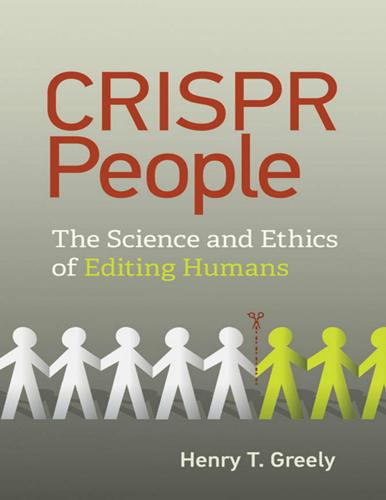
CRISPR People: The Science and Ethics of Editing Humans
by
Henry T. Greely
Published 22 Jan 2021
Mitinori Saitou and Hidetaka Miyauchi, “Gametogenesis from Pluripotent Stem Cells,” Cell Stem Cell 18, no. 6 (2016): 721–735, https://doi.org/10.1016/j.stem.2016.05.001; Chika Yamashiro, Kotaro Sasaki, Yukihiro Yabuta, et al., “Generation of Human Oogonia from Induced Pluripotent Stem Cells in Vitro,” Science 362, no. 6412 (2018): 356–360, https://doi.org/10.1126/science.aat1674. See also I. Glenn Cohen and Alex Pearlman, “Creating Eggs and Sperm from Stem Cells: The Next Big Thing in Assisted Reproduction?,” STAT, June 5, 2019, https://www.statnews.com/2019/06/05/creating-eggs-sperm-stem-cells. 9. Henry T. Greely, The End of Sex and the Future of Human Reproduction (Cambridge, MA: Harvard University Press, 2016). 10.
…
Even California, a state very friendly to medical research, banned such payments until a bill passed in October 2019—and that bill imposes specific consent and approval requirements on such paid donations as well as limiting them to compensation for the donor’s time, discomfort, and inconvenience.6 (The recent California law repealed a prohibition on paying women for eggs for research—but not for egg “donations” for reproduction—that had passed in 2006 as a result of pro-life groups and feminist groups concerned about the possible exploitation of poor women.7) But rather than soliciting the egg donations, with or without compensation, as mentioned in passing in chapter 13, researchers might be able to make eggs. The process of making gametes from stem cells is sometimes referred to as “in vitro gametogenesis” (IVG). This method, using either embryonic stem cells or induced pluripotent stem cells, has already been done successfully in mice, and work is proceeding on making this available for people.8 My 2016 book, The End of Sex and the Future of Human Reproduction, is based in large part on the assumption that this will become safe, effective, and widely available for humans in the next 20 to 40 years (or earlier).9 The use of IVG to provide eggs (plenty of cheap sperm will, no doubt, be available through more traditional methods) could answer the problem of a possible egg (and hence embryo) shortage, but it would raise the question whether embryos made from these IVG eggs were identical (or close enough to identical) to naturally occurring embryos to be good comparisons.
…
The Nature article reporting the London patient specifically discusses that “one reported case,” the so-called “Essen patient”: The only other case of an HIV-infected patient transplanted with CCR5Δ32/Δ32 cells who interrupted ART [antiretroviral therapy] was the ‘Essen Patient’. In this case in which ART was interrupted one week before allo-HSCT [transplantation of blood-forming stem cells from another person], a rapid viral rebound of a pre-existing minority HIV-1 variant able to infect cells via the alternative CXCR4 co-receptor was observed three weeks later.38 The Essen patient later died from a recurrence of the lymphoma that had required the stem cell transplant.39 As the wording of the quotation from the Nature article implies, other HIV-infected cancer patients have received CCR5∆32 transplants and survived, but they have continued on their antiretroviral therapy, so it is not known whether the drugs or the transplant has kept their HIV levels low.
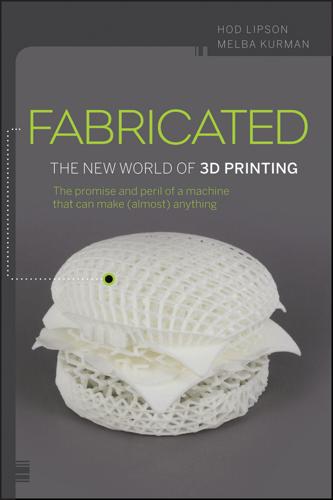
Fabricated: The New World of 3D Printing
by
Hod Lipson
and
Melba Kurman
Published 20 Nov 2012
If plastic is the favored raw printing material in industry, stem cells will be the favored raw material of bioprinting. The more regenerative medicine advances, the more it comes back to nature. The future of tissue engineering lies in 3D printing stem cells into precise configurations and letting them do the work growing the living tissue. Stem cells are the raw clay of the human body and are much more skillful at making body parts than we are. Stems cells are unspecialized, meaning they have not yet committed to a particular career path in terms of which sort of bodily cell they will grow into. Since stem cells can be pushed to differentiate into any one of the approximately 210 cell types found in the human body, stem cells are pure gold, medically speaking.
…
Much of Jonathan’s focus is on defining the optimal shape for the deposit of bioprinted stem cells. Since cells on a heart valve must be densely packed in a particular placement to function, cell placement is critical. Stem cells are like hard-working, self-directed employees that just need the right kind of work environment. “Think of a stem cell as a worker bee,” explained Jonathan. “If you can find a way to print certain types of stem cells into exactly the right location on the engineered tissue, it’s like having a stem cell walk into an empty office and start to look for work to do.” As researchers like Jonathan continue to unwrap the mysteries of 3D printed living tissue, hopefully the risks of organ transplants will someday diminish.
…
Since stem cells can be pushed to differentiate into any one of the approximately 210 cell types found in the human body, stem cells are pure gold, medically speaking. The first stem cells identified in the 1980s were extracted from the tissue of unborn human fetuses, triggering emotional debates about medical ethics. Since then, researchers continue to uncover more stem cells, including some scattered around different parts of the adult human body called “somatic” or “adult” stem cells. More recently, some differentiated cells have been shown even to be able to revert back to their pre-differentiated state. Columbia professor Jeremy Mao 3D printed new hip bones in lab rabbits and seeded them with stem cells.
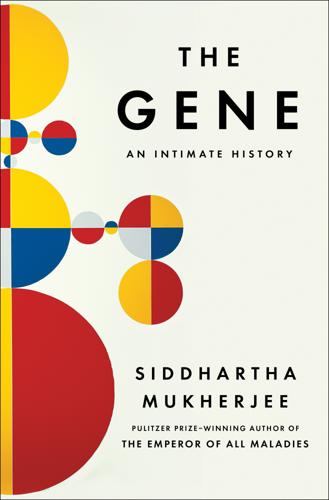
The Gene: An Intimate History
by
Siddhartha Mukherjee
Published 16 May 2016
And it can renew itself—i.e., give rise to more stem cells, which can, in turn, differentiate to form the functional cells of an organ. A stem cell is somewhat akin to a grandfather that continues to produce children, grandchildren, and great-grandchildren, generation upon generation, without ever losing his own reproductive fecundity. It is the ultimate reservoir of regeneration for a tissue or an organ. Most stem cells reside in particular organs and tissues and give rise to a limited repertoire of cells. Stem cells in the bone marrow, for instance, only produce blood cells. There are stem cells in the crypts of the intestine that are dedicated to the production of intestinal cells.
…
Perhaps predictably, the RAC rejected the protocol outright, citing the poor animal data, the barely detectable level of gene delivery into stem cells, and the lack of a detailed experimental rationale, while noting that gene transfer into a human body had never been attempted before. Anderson and Blaese returned to the lab to revamp their protocol. Begrudgingly, they admitted that the RAC’s decision was correct. The barely detectable infection rate of bone marrow stem cells by the gene-carrying virus was clearly a problem, and the animal data was far from exhilarating. But if stem cells could not be used, how could gene therapy hope to succeed? Stem cells are the only cells in the body that can renew themselves and therefore provide a long-term solution to a gene deficiency.
…
Thwarted by these original studies, the field of gene therapy stagnated for another decade or so, until biologists stumbled on a critical discovery: embryonic stem cells, or ES cells. To understand the future of gene therapy in humans, we need to reckon with ES cells. Consider an organ such as the brain, or the skin. As an animal ages, cells on the surface of its skin grow, die, and slough off. This wave of cell death might even be catastrophic—after a burn, or a massive wound, for instance. To replace these dead cells, most organs must possess methods to regenerate their own cells. Stem cells fulfill this function, especially after catastrophic cell loss. A stem cell is a unique type of cell that is defined by two properties.
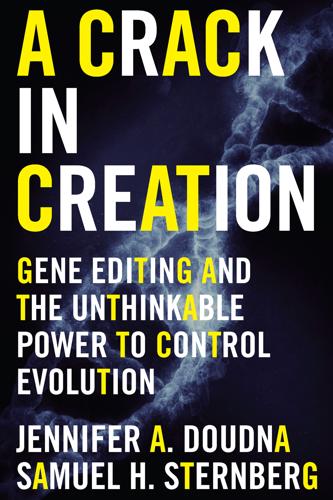
A Crack in Creation: Gene Editing and the Unthinkable Power to Control Evolution
by
Jennifer A. Doudna
and
Samuel H. Sternberg
Published 15 Mar 2017
In Kim’s body, though, chromothripsis turned out to have quite another effect. Not only did the mutated cell grow normally, but—because it was now rid of the diseased copy of CXCR4—the cell was free of the gene causing WHIM syndrome. But Kim’s blind luck had not ended there. The NIH scientists determined that the fortunate cell must have been a hematopoietic stem cell, a type of stem cell from which every kind of blood cell in the body originates and that has an almost unlimited potential to proliferate and self-renew. That cell had passed along its rearranged chromosome to all its daughter cells, eventually repopulating Kim’s entire immune system with healthy new white blood cells that were free of the CXCR4 mutation.
…
Gene editing via homologous recombination By the time I completed my PhD at the end of the 1980s, gene targeting had been widely used to edit DNA in cultured mouse and human cells and even in live mice. Seminal work in Martin Evans’s lab demonstrated that by targeting genes in mouse embryonic stem cells and then injecting those modified stem cells back into mouse embryos, scientists could create live mice with designer changes. The breakthroughs by Capecchi, Smithies, and Evans were eventually recognized with the 2007 Nobel Prize in Physiology or Medicine. Despite its earth-shaking implications, however, gene editing in its early days had far more appeal for basic research than it did for human therapeutic applications.
…
The sources of these molecular defects are DNA mutations in the beta-globin gene, which encodes one of the two unique protein chains that make up the hemoglobin molecule. Sickle cell disease and beta-thalassemia can actually both be cured by bone marrow transplantation. When physicians transplant the bone marrow from a healthy individual into a sick patient, the abundant blood stem cells in the marrow produce healthy new red blood cells for the rest of the patient’s life. The problem with this sort of stem cell transplantation, however, is that there aren’t nearly enough donors who both match the recipient immunologically and are willing to undergo the invasive procedure. Even when a matching donor is found and the patient’s body accepts the transplanted cells, the procedure is still risky; many patients develop graft-versus-host disease, a sort of reverse immunological reaction, which can be fatal.
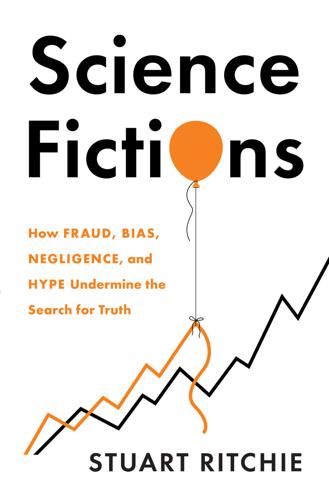
Science Fictions: How Fraud, Bias, Negligence, and Hype Undermine the Search for Truth
by
Stuart Ritchie
Published 20 Jul 2020
Incidentally, the process of making induced pluripotent stem cells hadn’t been discovered back in 2004–2005, hence Hwang’s focus on creating stem cells from embryos. 55. Nobel Media, ‘The Nobel Prize in Physiology or Medicine 2012’ (Oct. 2012); https://www.nobelprize.org/prizes/medicine/2012/summary/ 56. According to the Japan Times, kappogi sales shot up following Obokata’s rise to fame. Rowan Hooper, ‘Stem-Cell Leap Defied Japanese Norms’, Japan Times, 14 Feb. 2014; https://www.japantimes.co.jp/news/2014/02/15/national/science-health/stem-cell-leap-defied-japanese-norms/ 57. Shunsuke Ishii et al., ‘Report on STAP Cell Research Paper Investigation’ (31 March 2014); http://www3.riken.jp/stap/e/f1document1.pdf 58.
…
The next year, in the same journal, he reported that he’d produced, from those embryos, the first cloned human stem cell lines. What gives stem cells their potential, beyond the fact that they can keep multiplying indefinitely, is that they’re ‘pluripotent’, meaning they can be transformed in the lab, Swiss-Army-knife-like, into many different types of tissues (neurons, liver cells, blood cells, and so on). Cloned cell lines – eleven of them had been produced for Hwang’s paper – might have allowed the production of personalised stem cell treatments, and thus the repair of damaged tissues and the regeneration of injured or diseased organs.
…
This is where the tampering comes in. A decade after Hwang’s ‘discoveries’, in 2014, scientists at Japan’s RIKEN institute published two papers in Nature reporting new results on induced pluripotent stem cells.53 Unlike the stem cells that were part of Hwang-gate, induced pluripotent cells can be produced from mature adult cells, reducing the need to use cells from embryos.54 The trouble is that the standard process for creating this kind of stem cell, which won its inventors a Nobel Prize in 2012, is laborious and inefficient, taking several weeks and producing a lot of waste.55 The RIKEN group, though, claimed to have found another way to produce the cells: a technique called STAP, for ‘Stimulus-Triggered Acquisition of Pluripotency’.
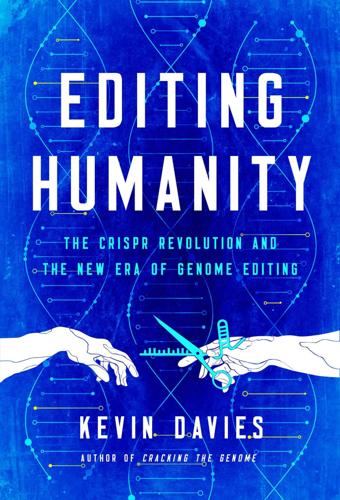
Editing Humanity: The CRISPR Revolution and the New Era of Genome Editing
by
Kevin Davies
Published 5 Oct 2020
Meanwhile, studies by Merlin Crossley’s group in Sydney are developing an approach he calls “organic gene therapy,” using CRISPR-Cas9 to recapitulate specific HPFH mutations to boost HbF levels.6 Stanford’s Matthew Porteus has been on a quest to use genome editing in the clinic since the early 2000s.7 Using CRISPR-Cas9 to break the DNA before fixing the sequence, Porteus says, is like fixing the headlight on someone’s car by first busting the headlight with a hammer before repairing it. The goal is to ensure that about 20 percent of the stem cells repopulating the bone marrow are genetically fixed. That means harvesting some 500 million stem cells from any given patient. In a specialized facility, those cells are mixed with Cas9 and the AAV vector. The modified cells will be transplanted back into patients, after they have recovered from chemotherapy to make room for the modified stem cells. The biggest hurdle is to improve the efficiency of delivering the Cas nuclease into the appropriate cells. “We’ll cure people who have sickle-cell disease, not because they have a genetic defect but because they’re human beings and deserve all the rights, responsibilities, and value we should confer on any human being,” Porteus says.8 He calls genome editing “an anti-eugenics program.”
…
Matthew Herper, “This protein could change biotech forever,” Forbes, March 19, 2013, https://www.forbes.com/sites/matthewherper/2013/03/19/the-protein-that-could-change-biotech-forever/. 34. K. Karczewski, “Progress in genomics according to bingo: 2013 edition,” Genome Biology 14, (2013): 143, https://genomebiology.biomedcentral.com/articles/10.1186/gb4148. 35. Q. Ding et al., “Enhanced Efficiency of Human Pluripotent Stem Cell Genome Editing through Replacing TALENs with CRISPRs,” Cell Stem Cell 12, (2013): 393–394, https://www.cell.com/cell-stem-cell/fulltext/S1934-5909(13)00101-X 36. T. J. Cradick, online interview, June 30, 2020. 37. Jon Cohen, “The Birth of CRISPR Inc.,” Science 355, (2017): 680–684, https://science.sciencemag.org/content/355/6326/680.summary. 38. R. Coontz, “Science’s top ten breakthroughs of 2013,” Science, December 19, 2013, https://www.sciencemag.org/news/2013/12/sciences-top-10-breakthroughs-2013. 39.
…
See also SPIDR Spacers, 22, 22–25, 35–43, 50, 50–56, 63, 181 Spark Therapeutics, 150, 163, 164, 172 Spectator, xii Specter, Michael, 253, 257 Spencer, Helen, 163 SPIDR, 35, 41–42 Spielberg, Steven, 76 Spinal muscular atrophy (SMA), 151, 158–159 “Spontaneous Emergence of Hierarchy in Biological Systems,” 207 Stadler, Lewis, 303 Stanchi, Giovanni, 305 Stanford University, 11, 21, 50, 76, 78, 86, 114, 128, 158, 168, 177, 196, 202, 208–209, 219–220, 228, 245, 251–254, 329, 366 Staphylococcus epidermis, 56 Star is Born, A, 166 Star Trek, 76, 129, 350 Star Wars, 113 Stargardt, Karl, 151 Stark, Tony, 325 Starter cultures, 39–45, 54–57 STAT, 20, 335 Stein, Rob, 170 Steinberg, Jeffrey, 340 Steinman, Ralph, 97 Stem cells allogeneic, 168 cloning and, 223 CRISPR and, 73–74 embryonic stem cells, 107, 355 ethics of, 238 funding, 204 gene therapy and, 119, 136, 144, 181 genome editing and, 84, 116 harvesting, 12 hematopoietic stem cell, 157–158, 168 regulation of, 267–269 Stephenson, Jennelle, 155–156 Steptoe, Patrick, 216–217 Stern, Curt, 123 Sternberg, Samuel, 95, 102 Steve Jobs, 279 Strathdee, Tom, 163 Streptococcus pneumoniae, 60 Streptococcus pyogenes, 26, 59–64, 83, 99 Streptococcus thermophilus, 40–44, 54–57, 69, 82 Structure of Scientific Revolutions, The, 95 Sturtevant, A.
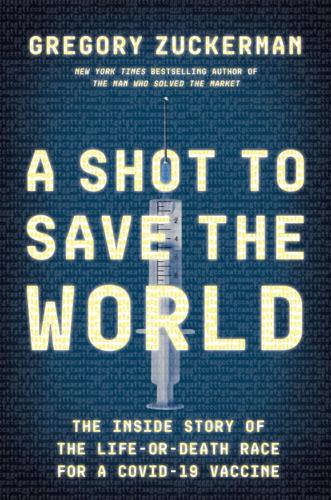
A Shot to Save the World: The Inside Story of the Life-Or-Death Race for a COVID-19 Vaccine
by
Gregory Zuckerman
Published 25 Oct 2021
As the lab leader, he got his way—the paper was submitted to Cell. It took just a few days for the journal’s editors to reject it, just as Warren had feared. Cell suggested that Rossi send the paper to its sister journal, Cell Stem Cell, a specialized journal but still the most prestigious in the stem-cell world. Rossi was hopeful even as Warren stewed. Months later, an editor for Cell Stem Cell named Deborah Sweet called Rossi. Reviewers had raised a series of unexpected and thorny questions about the paper. To Rossi and his colleagues, some of the objections seemed excessive, even suspicious. He pushed back on some of the requests but acceded to taking the time to answer others, viewing them as part of the sometimes messy process of getting a paper published.
…
Soon Warren had packed up and moved back to California. He was no longer on speaking terms with Rossi and had begun a new leg of his career, consulting in the stem-cell world and then going on to own companies that produced induced pluripotent stem-cell lines for clients. “I regret that the situation deteriorated,” says Warren, who eventually profited from his work. * * * • • • The importance of Warren and Rossi’s work was instantly understood. They had reprogrammed ordinary cells into pluripotent stem cells simply by injecting them with synthetic mRNA, developing a technology that had “broad applicability for basic research, disease modeling, and regenerative medicine,” they argued in their paper.
…
Rossi and Warren began an audacious project, with the goal of improving on landmark work by a future Nobel laureate. A year earlier, Shinya Yamanaka, a stem-cell researcher at Japan’s Kyoto University, and one of his graduate students had astonished the scientific world by placing genes in retroviruses—viruses that invade host cells and integrate their genomes into the DNA of those cells—to reprogram adult cells. Yamanaka had used this technique to create “pluripotent” forms of the cells, which act much like embryonic stem cells. Yamanaka had, in effect, reverted the cells to their primitive state, turning the clock back on time. The discovery changed the way scientists viewed cell identity and how fixed it truly was.
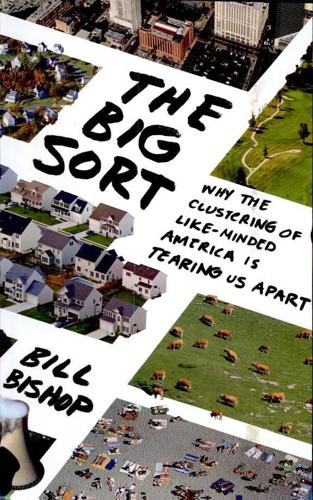
The Big Sort: Why the Clustering of Like-Minded America Is Tearing Us Apart
by
Bill Bishop
and
Robert G. Cushing
Published 6 May 2008
When the religious right came out against embryonic stem cell research, however, it created "this reflexive response to that religious point of view. What's happened is fascinating." The opposition of the religious right and President George W. Bush turned stem cell research into a Democratic bugle call, but the sides could have been reversed. After all, without the opposition of the religious right, isn't it possible that the $3 billion California stem cell initiative would have been couched as a giveaway to the pharmaceutical industry and Frankenstein research? Instead, the stem cell initiative became a surrogate for the presidential contest between Bush and Kerry.
…
"Conservatives, for their part, are now citing the constitutional views of government centralizers they once despised."44 After the federal government allowed only limited kinds of stem cell research and Congress was unable to resolve the dispute between researchers and the religious right, the states stepped in. California voted $3 billion for stem cell research, and other blue states—Illinois, New Jersey, Maryland, and Connecticut—provided funding, too. Stem cell research is now clearly a Democratic cause, but that seems more a consequence of divided politics than of either ideology or biomedical research. After all, the first town to place limits on DNA research was Cambridge, Massachusetts.
…
In 2003, liberals created ALICE, the anti-ALEC American Legislative Issue Campaign Exchange; now every state legislator could meet with lawmakers from other states and be ideologically "at home." Liberals created think tanks in states to match white papers with think tanks established by the conservative State Policy Network. Pro—stem cell research groups battled anti—stem cell groups. The National Center for Science Education, founded in 1981, set out to defend "the teaching of evolution in public schools." Its conservative doppelganger was the Discovery Institute, founded in 1990 to promote the teaching of "intelligent design" as an alternative to evolution.* Republican lawyers had the Federalist Society; Democrats had the American Constitution Society.
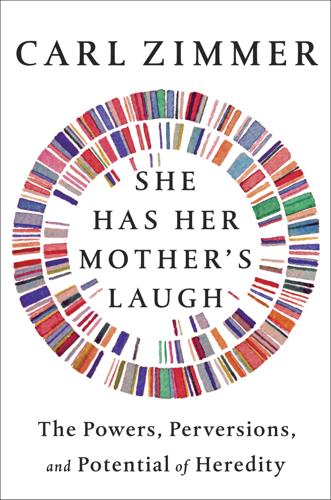
She Has Her Mother's Laugh
by
Carl Zimmer
Published 29 May 2018
Bianchi developed a tag that would mark only the stem cells that give rise to red and white blood cells. In adults, these stem cells are locked away in bone marrow and never slip into circulation. Any stem cells in a pregnant woman’s blood would almost certainly have been shed by her fetus. Bianchi crafted a new set of molecular tags, which she successfully used to fish out fetal stem cells. She was delighted with her success—until some of the pregnant women she had studied started giving birth. From some of the women, Bianchi had drawn out stem cells with Y chromosomes. This was to be expected from women who were pregnant with boys.
…
The lymphoid cells have a different tree: They develop into T cells, which can command infected cells to commit suicide, and B cells, which make antibodies that can precisely attack certain pathogens. The stem cells lurking in the stomach lining rebuild it as old cells slough off. The same renewal happens in our skin. Some stem cells generate new tissue only in an emergency. So-called satellite cells, nestled in our muscles, will produce new muscle cells to help repair damage. If you cut your hand, stem cells lurking in hair follicles will make new skin cells that crawl to the wound and heal it over. Stem cells need to hide in their refuges to cling to their special nature. There they can swim in a pool of chemical signals, ensuring that the right network of genes stays turned on.
…
There they can swim in a pool of chemical signals, ensuring that the right network of genes stays turned on. In these refuges, the stem cells perform the same magic trick over and over again. They divide in two: One daughter cell goes on dividing to become mature types of cells, while the other is yet another stem cell. The cells manage this feat by manipulating the way their daughter cells inherit their molecules. Stem cells don’t simply split up their molecules fifty-fifty. They move certain proteins and RNA molecules to one side but not the other. When they split in two, one of the new cells inherits a combination of molecules that allow it to stay a stem cell. The other cell flips its network to a new wiring and takes on its new identity.

The Cancer Chronicles: Unlocking Medicine's Deepest Mystery
by
George Johnson
Published 26 Aug 2013
On the other hand, a few scientists have proposed that cancer actually begins with epigenetic disruptions, setting the stage for more wrenching transformations. Even more unsettling is a contentious idea called the cancer stem cell theory. In a developing embryo, stem cells are those with the ability to renew themselves indefinitely—they are essentially immortal—dividing and dividing while remaining in an undifferentiated state. They are agents of pure potentiality. When a certain type of tissue is needed, genes are activated in a specific pattern and the stem cells give rise to specialized cells with fixed identities. Once the embryo has grown into a creature, adult stem cells play a similar role, standing ready to differentiate and replace cells that have been damaged or reached the end of their life.
…
Imagine if instead the growth and spread of a cancer is driven by a fraction of special cells, those that have somehow become endowed with an intrinsic quality called “stemness.” Just as normal stem cells generate skin, bone, and other tissues, the cancer stem cells would generate the variety of cells that form the rest of a tumor. But only the cancer stem cells would have the ability to replicate endlessly, metastasize, and seed another malignancy. How much easier that might make things for oncologists. Maybe chemotherapies fail because they spare the cancer stem cells. Remove these linchpins and the malignancy would collapse. It is a promising possibility, but the further I ventured into the subject, the more confusing it seemed.
…
[http://www.ncbi.nlm.nih.gov/pubmed/14732866] 7. a contentious idea called the cancer stem cell theory: Piyush B. Gupta, Christine L. Chaffer, and Robert A. Weinberg, “Cancer Stem Cells: Mirage or Reality?” Nature Medicine 15, no. 9 (2009): 1010–12; [http://www.nature.com/nm/journal/v15/n9/full/nm0909-1010.html] Jerry M. Adams and Andreas Strasser, “Is Tumor Growth Sustained by Rare Cancer Stem Cells or Dominant Clones?” Cancer Research 68, no. 11 (June 1, 2008): 4018–21; [http://cancerres.aacrjournals.org/content/68/11/4018.abstract] and Peter Dirks, “Cancer Stem Cells: Invitation to a Second Round,” Nature 466, no. 7302 (July 1, 2010): 40–41.
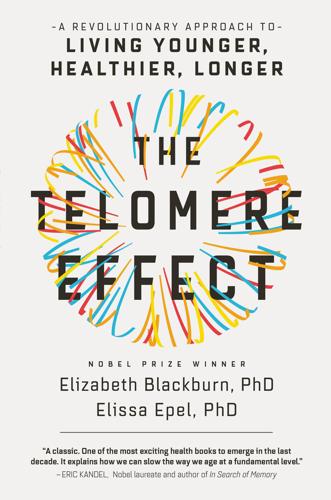
The Telomere Effect: A Revolutionary Approach to Living Younger, Healthier, Longer
by
Dr. Elizabeth Blackburn
and
Dr. Elissa Epel
Published 3 Jan 2017
When cells can no longer renew themselves, the body tissues they supply will start to age and function poorly. Cells in our tissues originate from stem cells, which have the amazing ability to become many different types of specialized cells. They live in stem cell niches, which are a kind of VIP lounge where stem cells are protected and lie dormant until they are needed. The niches are usually in or near the tissues that the stem cells will replace. Stem cells for skin live under the hair follicles, some stem cells for the heart live in the right ventricular wall, and muscle stem cells live deep in the fiber of the muscle. If all is well, the stem cells remain in their niche. But when there is a need to replenish tissues, the stem cell appears on deck.
…
If you go jogging and tear your calf muscle, some of your muscle stem cells will divide, each stem cell creating two new cells. One of those cells replaces the original stem cell and remains comfortably in its niche; the other can become a muscle cell and help replenish the damaged tissue. Having a good supply of stem cells that are able to renew themselves is key to staying healthy and to recovering from sickness and injury. But when a cell’s telomeres become too short, they send out signals that put the cell’s cycle of division and replication under arrest. An arrested cell stops in its tracks. The cell can no longer renew itself. It becomes old; it becomes senescent.
…
But when there is a need to replenish tissues, the stem cell appears on deck. It divides and produces proliferative cells—sometimes called progenitor cells—and some of their progeny cells transform into whatever specialized cell is needed. If you get sick and need more immune cells (white blood cells), freshly divided stem cells for blood that were hiding out in the bone marrow will enter the bloodstream. Your gut lining is constantly being worn down by normal digestive processes, and your skin is being sloughed off, and stem cells keep these body tissues replenished. If you go jogging and tear your calf muscle, some of your muscle stem cells will divide, each stem cell creating two new cells.

Lifespan: Why We Age—and Why We Don't Have To
by
David A. Sinclair
and
Matthew D. Laplante
Published 9 Sep 2019
Take stem cells, which have the potential to develop into many other kinds of cells: if we can keep these undifferentiated cells from tiring out, they can continue to generate all the differentiated cells necessary to heal damaged tissues and battle all kinds of diseases. Meanwhile, we’re improving the rates of acceptance of bone marrow transplants, which are the most common form of stem cell therapy, and using stem cells for the treatment of arthritic joints, type 1 diabetes, loss of vision, and neurodegenerative diseases such as Alzheimer’s and Parkinson’s. These stem cell–based interventions are adding years to people’s lives. Or take senescent cells, which have reached the end of their ability to divide but refuse to die, continuing to spit out panic signals that inflame surrounding cells: if we can kill off senescent cells or keep them from accumulating in the first place, we can keep our tissues much healthier for longer.
…
SOMATIC CELLS: All the cells in a multicellular organism except for germ cells (eggs or sperm). Mutations or changes to the DNA in the soma will not be inherited by subsequent generations unless cloning takes place. STEM CELLS: Cells with the potential to turn into a specialized type of cell or divide to make more stem cells. Most cells in your body are differentiated; that is, their fate has already been decided and they cannot morph into a different kind of cell. For example, a cell in your brain cannot suddenly transform into a skin cell. Adult stem cells replenish the body as it becomes damaged over time. STRAND: A string of connected nucleotides; can be DNA or RNA. Two strands of DNA can zip together when complementary; bases match up to form base pairs.
…
In this more nuanced view, aging and the diseases that come with it are the result of multiple “hallmarks” of aging: • Genomic instability caused by DNA damage • Attrition of the protective chromosomal endcaps, the telomeres • Alterations to the epigenome that controls which genes are turned on and off • Loss of healthy protein maintenance, known as proteostasis • Deregulated nutrient sensing caused by metabolic changes • Mitochondrial dysfunction • Accumulation of senescent zombielike cells that inflame healthy cells • Exhaustion of stem cells • Altered intercellular communication and the production of inflammatory molecules Researchers began to cautiously agree: address these hallmarks, and you can slow down aging. Slow down aging, and you can forestall disease. Forestall disease, and you can push back death. Take stem cells, which have the potential to develop into many other kinds of cells: if we can keep these undifferentiated cells from tiring out, they can continue to generate all the differentiated cells necessary to heal damaged tissues and battle all kinds of diseases.

Physics of the Future: How Science Will Shape Human Destiny and Our Daily Lives by the Year 2100
by
Michio Kaku
Published 15 Mar 2011
But because the brain is “plastic”—that is, it constantly rewires itself after it learns a new task—it might be able to integrate these new neurons so that they fire correctly. STEM CELLS One step beyond this is to apply stem cell technology. So far, the human organs were grown using cells that were not stem cells but were cells specially treated to proliferate inside molds. In the near future, it should be possible to use stem cells directly. Stem cells are the “mother of all cells,” and have the ability to change into any type of cell of the body. Each cell in our body has the complete genetic code necessary to create our entire body.
…
For example, although a skin cell may have the genes to turn into blood, these genes are turned off when an embryonic cell becomes an adult skin cell. But embryonic stem cells retain this ability to regrow any type of cell throughout their life. Although embryonic stem cells are more highly prized by scientists, they are also more controversial, since an embryo has to be sacrificed in order to extract these cells, raising ethical issues. (However, Lanza and his colleagues have spearheaded ways in which to take adult stem cells, which have already turned into one type of cell, and then turn them into embryonic stem cells.) Stem cells have the potential to cure a host of diseases, such as diabetes, heart disease, Alzheimer’s, Parkinson’s, even cancer.
…
Davies says, “By using the right astrocytes to repair spinal cord injuries, we have all the gains without the pain, while these other types of appear to provide the opposite—pain but no gain.” Moreover, the same techniques he is pioneering with stem cells will also work on victims of strokes and Alzheimer’s and Parkinson’s diseases, he believes. Since virtually every cell of the body can be created by altering embryonic stem cells, the possibilities are endless. However, Doris Taylor, director of the Center for Cardiovascular Repair at the University of Minnesota, cautions that much work has yet to be done. “Embryonic stem cells represent the good, the bad, and the ugly. When they are good, they can be grown to large numbers in the lab and used to give rise to tissues, organs, or body parts.
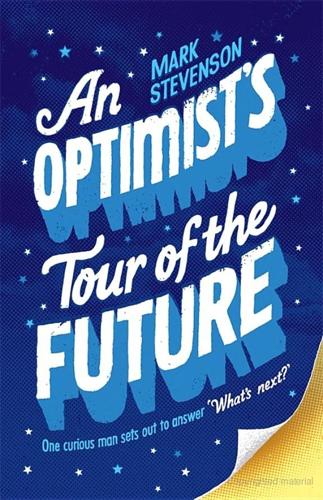
An Optimist's Tour of the Future
by
Mark Stevenson
Published 4 Dec 2010
These reduce your body’s desire to reject the new part, but at the same time can severely hamper its ability to combat infection. Instead, aged thirty, Castillo became a pioneer for ‘stem cell’ therapy – one of the most rapidly advancing areas of medical science. Stem cells are cells that are yet to pick a career – or to put it another way they are ‘blank’ cells, which can ultimately be ‘programmed to perform particular tasks.’ This is why human embryos naturally have a ready supply and is where researchers have often got them from (leading to all that controversy). But adults also carry around their own supply of ‘tissue-specific’ stem cells. These cells are also still waiting to be ‘programmed’ but have a smaller palette of career choices, based on their tissue of origin.
…
It’s now possible, however, to take ordinary cells (say, from the skin on your hand) and ‘re-boot’ them back to their earlier stem cell selves, doing away with many ethical concerns altogether. But even that may not be necessary. Early in 2010, scientists at Stanford University in California announced they had managed to convert mouse skin cells directly into mouse brain cells (with no intermediate stem cell phase). A few months later a team from Harvard declared they could convert human blood cells to stem cells that may have the ability to grow into any kind of tissue. Castillo received a donated trachea that had been stripped of cells from the donor (leaving just a collagen pipe).
…
Castillo received a donated trachea that had been stripped of cells from the donor (leaving just a collagen pipe). This was then ‘seeded’ with stem cells harvested from her own body (and nurtured by a team at the University of Bristol) that grew into tissue. The result? Her body accepted the new windpipe as its own and medical history was made. It sounds like science fiction, but the patient is out dancing.* Castillo isn’t the only person wandering around with a stem cell-grown body part. Kaitlyne McNamara’s doctors isolated healthy adult stem cells from the diseased bladder she was born with and used them to grow an entire, fully functioning (and healthy) replacement, which they then implanted.
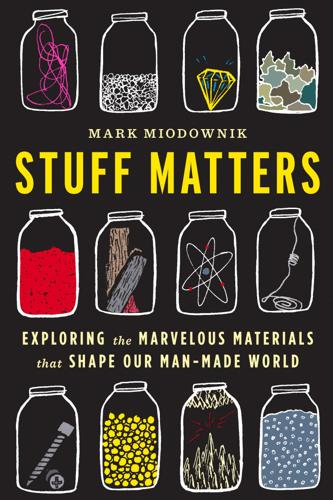
Stuff Matters: Exploring the Marvelous Materials That Shape Our Man-Made World
by
Mark Miodownik
Published 5 Jun 2013
Using a 3D printer, Professor Alex Seifalian and his team created an exact replica of his patient’s windpipe made from a special scaffold material they had developed, one that was tailor-made to accommodate the patient’s stem cells. The role of adult stem cells is to renew our tissues, and each type of cell has an equivalent stem cell to produce it. The stem cells that produce bone cells are called mesenchymal stem cells. Having built the scaffold, Professor Seifalian’s team implanted it with mesenchymal stem cells taken from the patient’s bone marrow and placed the whole object into the bioreactor. These stem cells then turned into a range of different cells that started to build cartilage and other structures, creating a living, self-sustaining cellular environment, while at the same time dissolving the scaffold around them.
…
(Collagen is a molecular cousin of gelatin and the most common protein molecule in the human body, responsible for giving skin and other tissues their elastic firmness—which is why anti-wrinkle creams often mention the inclusion of collagen in their formulations.) Unlike a gel, though, within this skeleton there are living cells, which are responsible for creating and maintaining it. These cells are called chondroblast cells. It is now possible to grow chondroblast cells from a patient’s own stem cells. However, simply injecting these into an existing joint doesn’t result in the repair of the cartilage, partly because the cells cannot survive outside their homemade habitat, their collagen skeleton. In the absence of this habitat, they die. It would be like trying to start the human race again by landing Londoners on the Moon: without the infrastructure of an existing city they are mostly helpless.
…
These stem cells then turned into a range of different cells that started to build cartilage and other structures, creating a living, self-sustaining cellular environment, while at the same time dissolving the scaffold around them. Eventually, all that was left was a new windpipe. The windpipe scaffold, developed by Professor Seifalian’s team, with stem cells incorporated before transplantation. One of the major advantages of this technique is that the implant is made of the patient’s own cells, and once implanted becomes part of his body. The patient therefore does not need to take any immunosuppressant drugs, which have significant side effects, to stop the body from rejecting the transplant. (Suppressing the immune system in order to protect the implant can make the patient much more vulnerable to infections of all kinds, as well as to parasites.)
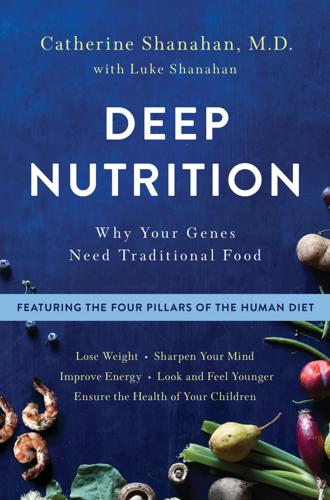
Deep Nutrition: Why Your Genes Need Traditional Food
by
Catherine Shanahan M. D.
Published 2 Jan 2017
Unlike genes, which function as a relatively static repository of encoded data, the so-called junk DNA (more properly called non-coding DNA) seems designed for change, both over the short term—within our lifetimes—and over periods of several generations, and longer. It appears that junk DNA assists biology in making key decisions, like turning one stem cell (an undifferentiated cell that can mature into any type of cell) into part of an eye, and another stem cell with identical DNA into, say, part of your liver. These decisions seem to be made based on environmental influences. We know this because when you take a stem cell and place it into an animal’s liver, it becomes a liver cell. If you took that same stem cell and placed it into an animal’s brain, it would become a nerve cell.20 Junk DNA does all this by using the chemical information floating around it to determine which genes should get turned on when, and in what quantity.
…
It also explains why those who have the toughest time losing weight often have kitchens full of fat-free products. STEP 3: LEARN WHERE FAT COMES FROM—AND WHERE IT GOES Fat Grows from Stem Cells You’ve probably heard of stem cells, immature cells derived from embryos with the potential to grow replacement parts for any organ. These are the cells you’ve seen researchers use to grow ears on the backs of mice. Many believe stem cells hold the cure for Alzheimer’s, Parkinson’s, and a host of other currently incurable diseases—and some day they may. But if you want to reshape your body, harnessing stem cell versatility can help you achieve that goal today. One of the most frustrating things about fat is its ability to seemingly appear from nowhere.
…
Draining fat cells requires building new nerves to blood vessels that will assist in more efficient export of the fat.542 New muscle and reinforced bone and tendon to support the more intense force generation all require new infrastructure, too. And the technology to build all this is encapsulated in every stem cell in our bodies. What’s even more remarkable than stem cell versatility is the fact that grown-up fat cells seem capable of changing their identity almost as readily as stem cells can. That means you don’t need to starve to get rid of all that flab; it can be transformed into the healthy tissues of a brand-new beautiful you. Fat Can Transform Back into Stem Cells and Other Types of Cells You might find this hard to believe, but fat cells require constant attention to maintain their girth.
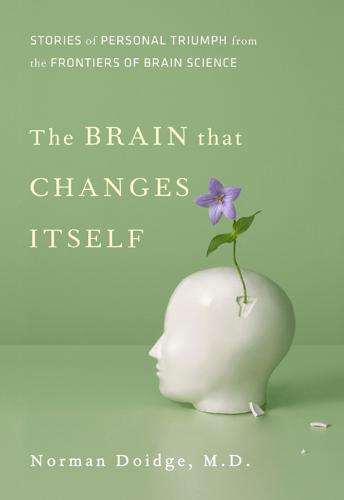
The Brain That Changes Itself: Stories of Personal Triumph From the Frontiers of Brain Science
by
Norman Doidge
Published 15 Mar 2007
I am staring down a microscope in the most advanced lab I have ever visited, at the Salk Laboratories in La Jolla, California, looking at living, human neuronal stem cells in a petri dish in the lab of Frederick “Rusty” Gage. He and Peter Eriksson of Sweden discovered these cells in 1998, in the hippocampus. The neuronal stem cells I see are vibrating with life. They are called “neuronal” stem cells because they can divide and differentiate to become neurons or glial cells, which support neurons in the brain. The ones I am looking at have yet to differentiate into either neurons or glia and have yet to “specialize,” so they all look identical. Yet what stem cells lack in personality, they make up for in immortality. For stem cells don’t have to specialize but can continue to divide, producing exact replicas of themselves, and they can go on doing this endlessly without any signs of aging.
…
Thus we learned from these dying patients that living neurons form in us until the very end of our lives. The search continues for neuronal stem cells in other parts of the human brain. So far they’ve also been found active in the olfactory bulb (a processing area for smell) and dormant and inactive in the septum (which processes emotion), the striatum (which processes movement), and the spinal cord. Gage and others are working on treatments that might activate dormant stem cells with drugs and be useful if an area where they are dormant suffers damage. They are also trying to find out whether stem cells can be transplanted into injured brain areas, or even induced to move to those areas.
…
Studying the mice, the team found that learning how to use the other toys, balls, and tubes didn’t make new neurons, but it did cause the new neurons in the area to live longer. Elizabeth Gould also found that learning, even in a nonenriched environment, enhances survival of stem cells. Thus physical exercise and learning work in complementary ways: the first to make new stem cells, the second to prolong their survival. Though the discovery of neuronal stem cells was momentous, it is only one of the ways the aging brain can rejuvenate and improve itself. Paradoxically, sometimes losing neurons can improve brain function, as happens in the massive “pruning back” that occurs during adolescence when synaptic connections and neurons that have not been extensively used die off, in perhaps the most dramatic case of use it or lose it.
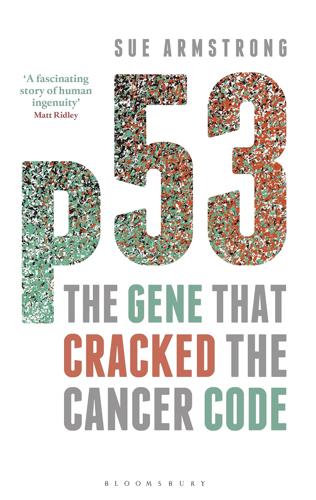
P53: The Gene That Cracked the Cancer Code
by
Sue Armstrong
Published 20 Nov 2014
Researchers interested in the gene’s role in ageing believe that both apoptosis and senescence are significant to the process – senescence for all the reasons discussed above, and apoptosis because it gradually depletes the pool of stem cells our bodies need for repair and maintenance. ‘The simplest model would be that you’re born with a limited number of stem cells,’ explained David Lane. ‘Those stem cells are very easily killed off by DNA damage, so they’re the ones most tightly controlled by p53. If you set a stress-response threshold where they’re too easily killed, then you don’t get cancer but you run out of stem cells more quickly. If you set the threshold such that they’re hard to kill, then you could live a long time, but you’re more likely to get cancer.’
…
Imagine for a minute what would happen if, in the normal course of events, our biological clocks could go backwards in time; if our mature cells could revert to their original undifferentiated state as stem cells, complete with the potential to develop afresh into something new. It’s a nightmare scenario in which your liver cells might morph spontaneously into bone cells, gut into teeth, blood into kidney, and no bodies would be stable. It is p53’s job to ensure that such de-differentiation doesn’t happen; that biological time moves inexorably forward and that our bodily development cannot unravel (except, that is, in the deranged environment of cancer). Scientists creating what are known as ‘induced pluripotent stem cells’ (IPSs) – stem cells with the potential to become any kind of specialised cells that have been engineered in the lab from already differentiated body cells – are frustrating a fundamental law of nature, and they must overcome p53’s defences to do so.
…
‘But if a kid can be born with cancer it’s about as simple as it can get. That was my thinking.’ Retinoblastoma met this criterion; it was the ideal topic for research. A rare tumour of the retina, or light-detecting cells of the eye, retinoblastoma affects children almost exclusively below the age of five, because it starts in the stem cells of the developing retina that, like the stem cells of all organs of the body, experience an explosion of division and growth during gestation and the early years of life. An early sign of the disease is a milky-white appearance to the pupil of the eye which, left undiagnosed and untreated, as it often is in the developing world, will grow into a grotesque spongy-looking mass of red and white flesh that distorts the child’s whole face and will eventually kill.
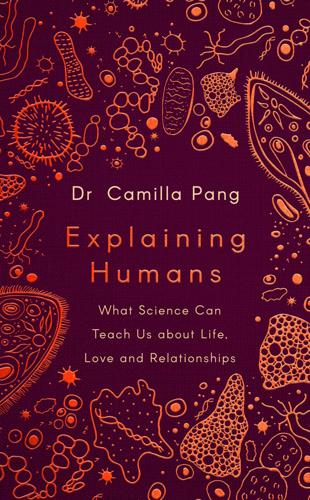
Explaining Humans: What Science Can Teach Us About Life, Love and Relationships
by
Camilla Pang
Published 12 Mar 2020
It’s their ability to split, re-form and renew that makes them the essential building blocks of humanity, and such an important part of medical treatments for blood and immune system disorders – helping to rebuild the body they created in the first place. A stem cell is the foundation for every human, and it’s also the ideal lens through which to better understand empathy in human relationships. Like a stem cell, every relationship essentially begins as a generic, unspecialized entity: two people seeing if they might like each other. Over time, where the stem cell divides into endless daughter cells with their own very specific uses, a relationship also becomes more defined and complex: an intricate web of shared experiences, understandings, language and unspoken meaning. Just like the stem cell, our relationships keep on specializing and differentiating over time – undergoing more mitosis (division) to meet newly encountered needs.
…
Yet despite these numerous contrasts, we once all started as essentially the same thing: an embryonic stem cell, one that endlessly divided and divided to create the skin, organs, bones and blood that hold us together. Stem cells are the ultimate in evolutionary wonder: single entities that can divide and specialize into any of the cells needed in the human body (multi- or pluripotent, if you want the fancy word). For example, all of the blood cells in our bodies have ultimately diverged from a common stem cell, via a process called haematopoiesis (one of my favourite words). This is something that’s going on in your body right now, as we are topped up daily with the right balance of red blood cells to transport oxygen, and white blood cells to constantly update our immune system.
…
All relationships depend on an ability to read between the lines – to judge when it matters even if someone says it doesn’t, or when something might not seem important but really is. To make these precise judgements, we need to fine-tune our understanding of evolutionary biology, acknowledging where our differences stem from, and how a relationship between people will evolve over time, just as our bodies did from a single stem cell. We need to harness probability theory to help us decide what is and isn’t relevant evidence. And we can benefit from fuzzy logic (yes, that’s the technical term), as a framework for judging a decision when there is no black-and-white, yes-or-no answer; and for managing the inevitable conflicts that crop up in any human relationship.
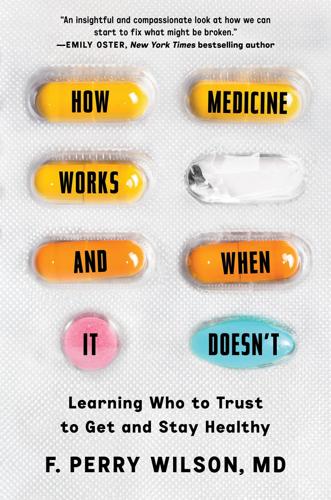
How Medicine Works and When It Doesn't: Learning Who to Trust to Get and Stay Healthy
by
F. Perry Wilson
Published 24 Jan 2023
Donaldson (Washington, DC: National Academies Press, 2000), http://www.ncbi.nlm.nih.gov/books/NBK225182. 7 The use of ACE inhibitors: Adriana Albini et al., “The SARS-CoV-2 Receptor, ACE-2, Is Expressed on Many Different Cell Types: Implications for ACE-Inhibitor- and Angiotensin II Receptor Blocker-Based Cardiovascular Therapies,” Internal and Emergency Medicine 15, no. 5 (August 2020): 759–66, https://doi.org/10.1007/s11739-020-02364-6. 8 It’s big business: Research and Markets, “Global Stem Cell Therapy Market Report 2021–2030: Allogeneic Stem Cell & Therapy Autologous Stem Cell Therapy/Adult Stem Cells, Induced Pluripotent Stem Cells, & Embryonic Stem Cells,” news release, May 19, 2021, accessed February 16, 2022, https://www.prnewswire.com/news-releases/global-stem-cell-therapy-market-report-2021-2030-allogeneic-stem-cell--therapy-autologous-stem-cell-therapy--adult-stem-cells-induced-pluripotent-stem-cells--embryonic-stem-cells-301294924.html. 9 In fact, a 2018 journal article by: Michael J. Hayes et al., “Most Medical Practices Are Not Parachutes: A Citation Analysis of Practices Felt by Biomedical Authors to Be Analogous to Parachutes,” CMAJ Open 6, no. 1 (March 2018): E31, https://doi.org/10.9778/cmajo.20170088. 10 There is plenty of research showing: Mahesh Chandra et al., “The Free Radical System in Ischemic Heart Disease,” International Journal of Cardiology 43, no. 2 (February 1, 1994): 121–25, https://doi.org/10.1016/0167-5273(94)90001-9; Aaron J.
…
Over the past few years, for example, stem cell therapy clinics have sprung up all over the country, offering treatment for a variety of ailments, ranging from arthritis pain to thinning hair. The clinics take a sample of your blood and put it through a machine to separate out stem cells (cells that have the capacity to grow and divide into a variety of tissue types). The theory goes that injecting such cells into an arthritic joint, for example, might promote the formation of cartilage, reducing pain. Is this theory biologically plausible? Sure. One stem cell clinic’s website proudly states that it will “harness your body’s natural healing ability.”
…
And though it took time, what I figured out will shine a light on why doctors have lost touch with their patients, why patients have lost faith in their doctors, and how we can get back to that therapeutic alliance that we all need in order to be truly healthy. That is what this book is all about. It turns out the most powerful force in Medicine is not an antibiotic. It isn’t stem cell therapy, genetic engineering, or robotic surgery. The most powerful force in Medicine is trust. It is the trust that lives between a patient and a physician, and it goes both ways. I trust you to tell me the truth about how you feel and what you want. You trust me to give you the best advice I can possibly give.
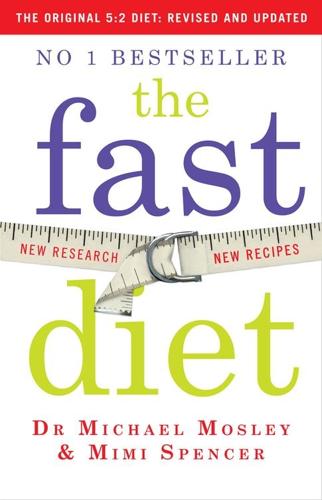
The Fast Diet: Revised and Updated: Lose Weight, Stay Healthy, Live Longer
by
Mimi Spencer
Published 18 Dec 2014
One of the things that calorie restriction does, for example, is switch on a process called autophagy.7 Autophagy, meaning ‘self eat’, is a process by which the body breaks down and recycles old and tired cells; just as with a car, it is important to get rid of damaged or ageing parts if you are going to keep things in good working order. Intermittent fasting and stem cell regeneration Fasting not only helps clear out damaged old cells but can also spark the production of new ones. In a particularly fascinating study published in June 2014, Valter and his colleagues showed, for the first time, that fasting can switch on stem cells and regenerate the immune system.8 Stem cells are cells that, when activated, can grow into almost any other cell. They can become brain, liver, heart tissue, whatever. The study findings are exciting because as we age our immune system tends to get weaker.
…
It seems that fasting not only clears out the old, damaged white blood cells and lowers levels of IGF-1, but also reduces the activity of a gene called PKA. PKA produces an enzyme that normally acts like a brake on regeneration. ‘PKA is the key gene that needs to be shut down in order for stem cells to switch into regenerative mode,’ Valter says. Intermittent fasting seems to give the ‘okay’ for stem cells to go ahead and begin proliferating. This research certainly suggests that if your immune system is not as effective as it was (either because you are older or because you have had a medical treatment such as chemotherapy), then periods of intermittent fasting may help regenerate it.
…
Bergamini, E, Cavallini, G, Donati, A and Gori, Z, Pisa, Italy. ‘The role of autophagy in aging: its essential part in the anti-aging mechanism of caloric restriction’. Annals of the New York Academy of Science, October 2007 8. Longo, Valter D et al. ‘Prolonged fasting reduces IGF-1/PKA to promote hematopoietic-stem-cell-based regeneration and reverse immunosuppression’. Cell Stem Cell, 14(6), June 2014 9. Varady, KA, Surabhi Bhutani, Church EC and Kempel M. ‘Short-term modified alternate-day fasting: a novel dietary strategy for weight loss and cardio-protection in obese adults’. American Journal of Clinical Nutrition, November 2009 10. Harvie, MN, ‘The effect of intermittent energy and carbohydrate restriction v. daily energy restriction on weight loss and metabolic disease risk markers in overweight women.’

Nine Pints: A Journey Through the Money, Medicine, and Mysteries of Blood
by
Rose George
Published 22 Oct 2018
Although they have five children and four grandchildren and though blood transfusions are often given in childbirth, the Jenkinses had no cause to test their belief until recently. First, Bob was diagnosed with myeloma, a cancer of certain white blood cells. Severe cases are often treated with a stem cell transplant, whereby the bone marrow is killed off, new stem cells are injected, and, if all goes to plan, new and undamaged blood cells begin to reproduce within weeks. Although the removed and replanted stem cells are hematopoietic—they produce blood—Witnesses will accept stem cell transfusions. But the weeks of having reduced immunity are perilous, and blood transfusions would normally be given. A patient with leukemia, a cancer of white blood cells that can also be treated with bone marrow transplants, might receive 30 units a year.
…
“It isn’t even close to providing as much blood as we can provide Guinness,” says Klein, with one of the more unexpected analogies I’ve encountered while interviewing blood experts. “The research in the stem cell and hematopoiesis space is scientifically very satisfying,” says Devine. “But the economic picture is just awful.” It could be useful for giving blood to people with rare diseases or rare blood types. Watkins points to the famous case of a French teenager with sickle cell disease. Sickle cell is caused by a defect in the gene that governs hemoglobin, which causes hemoglobin to clump, and blockages and awful pain. It can be successfully treated with a stem cell transplant, but finding a donor is as easy as with any other transplant: it’s not.
…
Perhaps they think bones are white and brittle, not vivid and vital. Perhaps they believe blood circulates ready-made, unchanging. Blood is always dying, always renewing, and rapidly: you can’t yet grow back an arm, but you can lose plenty of blood and survive. The bone marrow produces two million red blood cells every second. It produces pluripotent stem cells that can become any cell, and red blood cells with no nucleus that can slink and slither through the tiniest of capillaries. Images of red blood cells show filled-in Cheerios or enticing pillows, so when I see a simulation of red blood cells, I want to jump into the picture and curl up in the middle of one.
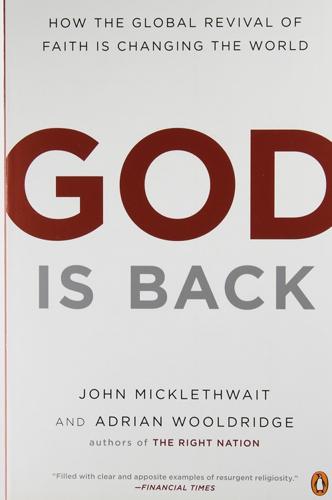
God Is Back: How the Global Revival of Faith Is Changing the World
by
John Micklethwait
and
Adrian Wooldridge
Published 31 Mar 2009
But gradually, the discussion of revelation gives way to a passionate attack on Darwinism. Evolutionary theory, argues Wang, breaking into English to reiterate the words, is “the biggest lie,” because it pretends to be rigorous science. This is immediately confirmed by a biotechnologist who works on stem cells. Every day she looks at them, admiring their beauty and complexity: stem cells must be divine. If you trust evolution, you distrust God, rejoins the surgeon. Evolution is another false idol—not unlike Buddhism, Taoism, Confucianism or any of the other mock religions that China’s Communists are trying to promote, now that they have discovered that they cannot kill God.
…
In 2006 more than twenty senators and representatives who supported the Schiavo intervention were defeated while all Republicans, and all but one Democrat, who opposed the intervention were reelected. But there were plenty of other examples of overreaching. The right’s hard-line opposition to stem-cell research put it well beyond the mainstream: as even Bush has been known to point out privately, stem cells are a tricky subject for devout pro-lifers, because they can involve two lives, that of the sacrificed embryo and that of the potential beneficiary from the research. The right’s preoccupation with “the homosexual agenda” also slid into the quirky.
…
But in its Arab heartland, it plainly does not. And, overall, it remains the world religion that has found pluralism hardest to cope with. Islam has not been through a Reformation, let alone an Enlightenment. Look at every debate, from the relationship between the mosque and the state to the ethics of stem cells, and you tend to discover that Christian culture has got there first. Islam is still relevant to our argument—especially when it comes to the competition between religions. But, for all its power, we believe it is less of a harbinger of the future than Christianity. The first part of the book tries to explain why Europe and America have evolved in such different ways over the past two hundred or so years.
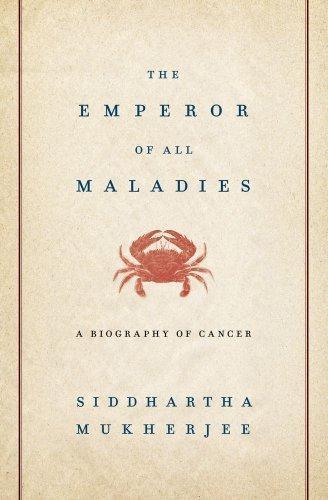
The Emperor of All Maladies: A Biography of Cancer
by
Siddhartha Mukherjee
Published 16 Nov 2010
The human embryo and many of our adult organs possess a tiny population of stem cells that are capable of immortal regeneration. Stem cells are the body’s reservoir of renewal. The entirety of human blood, for instance, can arise from a single, highly potent blood-forming stem cell (called a hematopoietic stem cell), which typically lives buried inside the bone marrow. Under normal conditions, only a fraction of these blood-forming stem cells are active; the rest are deeply quiescent—asleep. But if blood is suddenly depleted, by injury or chemotherapy, say, then the stem cells awaken and begin to divide with awe-inspiring fecundity, generating cells that generate thousands upon thousands of blood cells.
…
These “cancer stem cells” act as the persistent reservoir of cancer—generating and regenerating cancer infinitely. When chemotherapy kills the bulk of cancer cells, a small remnant population of these stem cells, thought to be intrinsically more resistant to death, regenerate and renew the cancer, thus precipitating the common relapses of cancer after chemotherapy. Indeed, cancer stem cells have acquired the behavior of normal stem cells by activating the same genes and pathways that make normal stem cells immortal—except, unlike normal stem cells, they cannot be lulled back into physiological sleep. Cancer, then, is quite literally trying to emulate a regenerating organ—or perhaps, more disturbingly, the regenerating organism.
…
In each well, I have placed two hundred human leukemia cells, then added a unique chemical from a large collection of untested chemicals. In parallel, I have its “twin” plate—containing two hundred normal human blood-forming stem cells, with the same panel of chemicals added to every well. Several times each day, an automated microscopic camera will photograph each well in the two plates, and a computerized program will calculate the number of leukemia cells and normal stem cells. The experiment is seeking a chemical that can kill leukemia cells but spare normal stem cells—a specifically targeted therapy against leukemia. I aspirate a few microliters containing the leukemia cells from one well and look at them under the microscope.
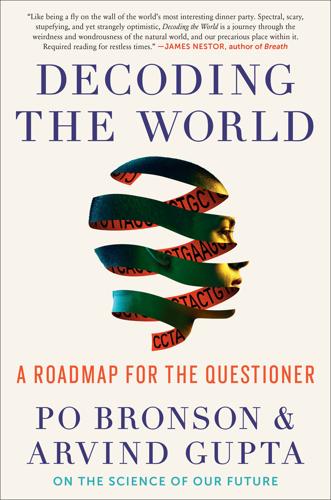
Decoding the World: A Roadmap for the Questioner
by
Po Bronson
Published 14 Jul 2020
These four magic proteins have the ability to turn cells into other cells. From stem cells into connective tissue or skin. Amazingly, they can also get cells to reverse direction, regressing from skin cells or blood cells back to stem cells. To use the tree analogy, we can transform a root cell into a trunk cell and into a leaf cell, and back again. This technique is called reprogramming. In vitro gametogenesis is the technique of reprogramming a woman’s or man’s skin cells backward, not just back to a pluripotent stem cell, but to the Holy Grail of cells, an embryonic stem cell. And then reprogramming it forward, to go through the branches that lead to sex cells like egg and sperm.
…
Beyond Meat would be the only company that was singular in that thesis. Their stock quadrupled on the first day. I got text messages and emails from VCs—the very ones who had said I was crazy—now congratulating me on our food portfolio. The gold rush was on. Stem cell engineers are suddenly seeing hot demand for their skills. Venture capitalists are fearful of missing out on the next big food company. Software investors are asking about stem cells and fetal bovine serum. Journalists are writing thousands of news articles. I now receive industry reports on synthetic meat from major banks and data services. As of this writing, there are fifty-nine cell-based-meat companies, and double that many alternative protein companies.
…
In a computer, you can design an antibody in days. But you have no idea if it will have off-target effects, so that testing takes months and months.” Melanie said she could do it in 32 days. Melanie’s approach was truly unique. Her company, Prellis, was the world leader in 3D-printing human organ tissue, using lasers and stem cells. Her goal for Prellis was right out of a science-fiction movie: She wants to print a new liver for patients when their liver is shot. She was getting close. She’d been making mini-livers. But this was wartime. “I can make dozens of mini-lymph nodes, little immune systems. I’ll inoculate them with the virus.
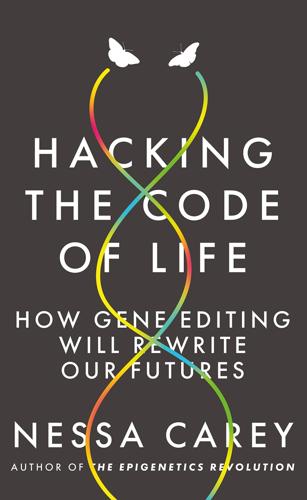
Hacking the Code of Life: How Gene Editing Will Rewrite Our Futures
by
Nessa Carey
Published 7 Mar 2019
The gene editing company CRISPR Therapeutics has taken advantage of this clinical knowledge. Their strategy is to take bone marrow cells from patients with a haemoglobin disorder and edit the DNA in the lab, so that the resulting stem cells contain the protective mutation sometimes found so fortuitously in nature. They will then repopulate the patient’s bone marrow with these edited stem cells. The stem cells will produce red blood cells which express foetal haemoglobin, protecting the patient. You might wonder why the company has chosen to take this approach, rather than correcting the disease-causing mutation in the adult haemoglobin gene.
…
So we know that in sufferers, converting one of their mutant copies to the normal one should be enough to restore them to a healthy condition, on par with the carriers. Although healthy red blood cells only last about 120 days in the body, we should still be able to treat with gene editing using only a small number of interventions. This is because we can extract stem cells from bone marrow, edit the DNA and then re-seed the bone marrow with the corrected cells. Once they re-establish in the bone marrow, the stem cells should continue to produce healthy red blood cells for decades. There are also enough patients to make this economically worthwhile. Although the haemoglobin disorders evolved where malaria was rife – which is usually in poor regions – global migration means that the conditions are also fairly common in countries with well established healthcare infrastructure.
…
Ihry, R.J., Worringer, K.A., Salick, M.R., Frias, E., Ho, D., Theriault, K., Kommineni, S., Chen, J., Sondey, M., Ye, C., Randhawa, R., Kulkarni, T., Yang, Z., McAllister, G., Russ, C., Reece-Hoyes, J., Forrester, W., Hoffman, G.R., Dolmetsch, R., Kaykas, A. ‘p53 inhibits CRISPR-Cas9 engineering in human pluripotent stem cells’. Nat. Med. (July 2018); 24(7): 939–946. 11. Haapaniemi, E., Botla, S., Persson, J., Schmierer, B., Taipale, J. ‘CRISPR-Cas9 genome editing induces a p53-mediated DNA damage response’. Nat. Med. (July 2018); 24(7): 927–930. 12. https://www.cnbc.com/2018/06/11/crispr-stocks-tank-after-research-shows-edited-cells-might-cause-cancer.html 13.

The Singularity Is Nearer: When We Merge with AI
by
Ray Kurzweil
Published 25 Jun 2024
BACK TO NOTE REFERENCE 286 For a representative sampling of recent research on iPS therapies, see Krista Conger, “Old Human Cells Rejuvenated with Stem Cell Technology,” Stanford Medicine, March 24, 2020, https://med.stanford.edu/news/all-news/2020/03/old-human-cells-rejuvenated-with-stem-cell-technology.html; Qiliang Zhou et al., “Trachea Engineering Using a Centrifugation Method and Mouse-Induced Pluripotent Stem Cells,” Tissue Engineering Part C: Methods 24, no. 9 (September 14, 2018): 524–33, https://doi.org/10.1089/ten.TEC.2018.0115; Kazuko Kikuchi et al., “Craniofacial Bone Regeneration Using iPS Cell-Derived Neural Crest Like Cells,” Journal of Hard Tissue Biology 27, no. 1 (January 1, 2018): 1–10, https://doi.org/10.2485/jhtb.27.1; “The World’s First Allogeneic iPS-Derived Retina Cell Transplant,” Japan Agency for Medical Research and Development, September 20, 2018, https://www.amed.go.jp/en/seika/fy2018-05.html; Hiroo Kimura et al., “Stem Cells Purified from Human Induced Pluripotent Stem Cell-Derived Neural Crest-Like Cells Promote Peripheral Nerve Regeneration,” Scientific Reports 8, no. 1, article 10071 (July 3, 2018), https://doi.org/10.1038/s41598-018-27952-7; Suman Kanji and Hiranmoy Das, “Advances of Stem Cell Therapeutics in Cutaneous Wound Healing and Regeneration,” Mediators of Inflammation, article 5217967 (October 29, 2017), https://doi.org/10.1155/2017/5217967; David Cyranoski, “ ‘Reprogrammed’ Stem Cells Approved to Mend Human Hearts for the First Time,” Nature 557, no. 7707 (May 29, 2018): 619–20, https://doi.org/10.1038/d41586-018-05278-8; Yue Yu et al., “Application of Induced Pluripotent Stem Cells in Liver Diseases,” Cell Medicine 7, no. 1 (April 22, 2014): 1–13, https://doi.org/10.3727/215517914X680056; Susumu Tajiri et al., “Regenerative Potential of Induced Pluripotent Stem Cells Derived from Patients Undergoing Haemodialysis in Kidney Regeneration,” Scientific Reports 8, no. 1, article 14919 (October 8, 2018), https://doi.org/10.1038/s41598-018-33256-7; Sharon Begley, “Cancer-Causing DNA Is Found in Some Sem Cells Being Used in Patients,” STAT News, April 26, 2017, https://www.statnews.com/2017/04/26/stem-cells-cancer-mutations.
…
We are now growing organs using iPS cells (adult cells that are converted into stem cells via the introduction of specific genes). As of 2023, iPS cells have been used for the regeneration of tracheas, craniofacial bones, retinal cells, peripheral nerves, and cutaneous tissue, as well as tissues from major organs like the heart, liver, and kidneys.[287] Because stem cells are similar in some ways to cancer cells, an important line of research going forward will be finding ways to minimize the risk of uncontrolled cell division. These iPS cells can act like embryonic stem cells and can differentiate into almost all types of human cells.
…
v=7qWvVcBZzRg. BACK TO NOTE REFERENCE 286 For a representative sampling of recent research on iPS therapies, see Krista Conger, “Old Human Cells Rejuvenated with Stem Cell Technology,” Stanford Medicine, March 24, 2020, https://med.stanford.edu/news/all-news/2020/03/old-human-cells-rejuvenated-with-stem-cell-technology.html; Qiliang Zhou et al., “Trachea Engineering Using a Centrifugation Method and Mouse-Induced Pluripotent Stem Cells,” Tissue Engineering Part C: Methods 24, no. 9 (September 14, 2018): 524–33, https://doi.org/10.1089/ten.TEC.2018.0115; Kazuko Kikuchi et al., “Craniofacial Bone Regeneration Using iPS Cell-Derived Neural Crest Like Cells,” Journal of Hard Tissue Biology 27, no. 1 (January 1, 2018): 1–10, https://doi.org/10.2485/jhtb.27.1; “The World’s First Allogeneic iPS-Derived Retina Cell Transplant,” Japan Agency for Medical Research and Development, September 20, 2018, https://www.amed.go.jp/en/seika/fy2018-05.html; Hiroo Kimura et al., “Stem Cells Purified from Human Induced Pluripotent Stem Cell-Derived Neural Crest-Like Cells Promote Peripheral Nerve Regeneration,” Scientific Reports 8, no. 1, article 10071 (July 3, 2018), https://doi.org/10.1038/s41598-018-27952-7; Suman Kanji and Hiranmoy Das, “Advances of Stem Cell Therapeutics in Cutaneous Wound Healing and Regeneration,” Mediators of Inflammation, article 5217967 (October 29, 2017), https://doi.org/10.1155/2017/5217967; David Cyranoski, “ ‘Reprogrammed’ Stem Cells Approved to Mend Human Hearts for the First Time,” Nature 557, no. 7707 (May 29, 2018): 619–20, https://doi.org/10.1038/d41586-018-05278-8; Yue Yu et al., “Application of Induced Pluripotent Stem Cells in Liver Diseases,” Cell Medicine 7, no. 1 (April 22, 2014): 1–13, https://doi.org/10.3727/215517914X680056; Susumu Tajiri et al., “Regenerative Potential of Induced Pluripotent Stem Cells Derived from Patients Undergoing Haemodialysis in Kidney Regeneration,” Scientific Reports 8, no. 1, article 14919 (October 8, 2018), https://doi.org/10.1038/s41598-018-33256-7; Sharon Begley, “Cancer-Causing DNA Is Found in Some Sem Cells Being Used in Patients,” STAT News, April 26, 2017, https://www.statnews.com/2017/04/26/stem-cells-cancer-mutations.
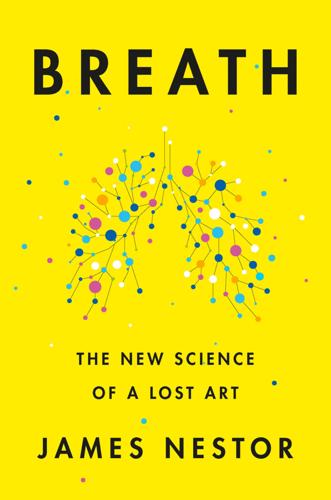
Breath: The New Science of a Lost Art
by
James Nestor
Published 25 May 2020
Kokich, a professor in the Department of Orthodontics at the University of Washington and one of the world’s experts in dentistry, postulated that adults “retain the capacity to regenerate and remodel bone at the craniofacial sutures.” Liao, Six-Foot Tiger, 176–77. the more stem cells release: We create stem cells throughout the body as well. The stem cells made in the sutures and jaws are often used for local maintenance in the mouth and face. Stem cells will ship off to whatever area needs them most. What they are attracted to are stress signals—in this case, the signals that come with vigorous chewing. two to four years of age: “Weaning from the Breast,” Paediatrics & Child Health 9, no. 4 (Apr. 2004): 249–53.
…
Inside these sutures, the body creates stem cells, amorphous blanks that shift form and become tissues and bones depending on what our bodies need. Stem cells, which are used throughout the body, are also the mortar that binds the sutures together and that grows new bone in the mouth and face. Unlike other bones in the body, the bone that makes up the center of the face, called the maxilla, is made of a membrane bone that’s highly plastic. The maxilla can remodel and grow more dense into our 70s, and likely longer. “You, me, whoever—we can grow bone at any age,” Belfor told me. All we need are stem cells. And the way we produce and signal stem cells to build more maxilla bone in the face is by engaging the masseter—by clamping down on the back molars over and over.
…
And the way we produce and signal stem cells to build more maxilla bone in the face is by engaging the masseter—by clamping down on the back molars over and over. Chewing. The more we gnaw, the more stem cells release, the more bone density and growth we’ll trigger, the younger we’ll look and the better we’ll breathe. It starts at infancy. The chewing and sucking stress required for breastfeeding exercises the masseter and other facial muscles and stimulates more stem cell growth, stronger bones, and more pronounced airways. Until a few hundred years ago, mothers would breastfeed infants up to two to four years of age, and sometimes to adolescence.
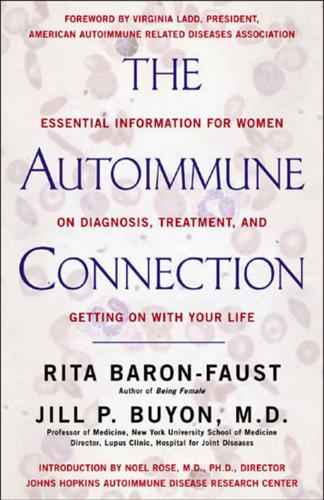
The Autoimmune Connection
by
Rita Baron-Faust
and
Jill Buyon
Published 21 Apr 2003
The medication is currently used in Britain as a routine therapy for finger ulcers. High-dose chemotherapy with stem cell rescue involves harvesting stem cells (the cells that grow into different kinds of cells, including white blood cells), purifying them and freezing them, and then destroying a patient’s abnormal immune system with high doses of chemotherapy. After the chemotherapy, the stem cells are infused back into the patient to reconstitute the immune system with lymphocytes that will not be autoreactive. Stem cell transplantation has a high mortality rate (20 percent) and is reserved for those people who have such severe disease that they’re at high risk of dying within the next five years or those women with early and rapidly progressive diffuse skin disease, who within the first year or so of diagnosis have some lung disease and heart disease, says Dr.
…
Kimberly points out. But what if a dysfunctional immune system could be replaced with a normal one? That’s the idea behind stem cell transplantation. In this still highly experimental treatment, the immune system is destroyed with high doses of chemotherapy drugs and then reconstituted with stem cells, the cells 36 The Autoimmune Connection that have the potential to grow into any kind of cell, including white blood cells. Before undergoing chemotherapy, patients have stem cells removed from their peripheral blood, purified, frozen, and then re-infused into the bloodstream to rebuild the immune system with “naïve” cells, immune cells that are not autoreactive.
…
If we had not treated them, 85 percent of the female mice would have developed diabetes and died of it.” Dr. Maclaren hopes to test the vaccine in women newly diagnosed with type 1 diabetes to see whether the destruction of beta cells can be halted. Another promising new treatment involves coaxing stem cells into becoming insulin-producing beta cells. The experiment, done with embryonic stem cells (which are known for their ability to transform into almost every cell type), might provide a better strategy for growing beta cells than merely transplanting normal beta cells. Scientists are also experimenting with transplanting beta cells from genetically modified pigs engineered so the cells would not be rejected.

Never Bet Against Occam: Mast Cell Activation Disease and the Modern Epidemics of Chronic Illness and Medical Complexity
by
Lawrence B. Afrin M. D.
,
Kendra Neilsen Myles
and
Kristi Posival
Published 15 Jan 2016
Hospitalization wasn’t required, but further evaluation by a hematologist was definitely in order to pin this down as the case of “polycythemia vera” it surely had to be. “P. vera” is a type of blood cell cancer, specifically one of the “chronic myeloproliferative neoplasms,” or MPNs, that’s rooted in a bone marrow stem cell gone genetically awry. Like the acute leukemias, in which stem cell mutations lead rapidly to life-threatening overgrowth (and underneath) of blood cells, the MPNs also are rooted in stem cell mutations eventually leading to a life-threatening accumulation of blood cells. The natural history of an acute leukemia, though, is that the time from initial detection of the disease to death from the disease is usually weeks to a few months, whereas with the MPNs, the natural history from initial detection to death due to disease is usually several years, if ever.
…
(Differentiation is the process by which a stem cell can mature into many different types of cells depending on various influences.) KIT is a “transmembrane” tyrosine kinase, meaning it’s a protein that’s anchored in the cell membrane, with part of the protein waving around up above the cell surface and part of it waving around down below the cell surface (i.e., inside the cell). The extracellular portion of KIT (the part waving around outside the cell) is a receptor, sort of like a lock, and when the matching key – in this case another protein called stem cell factor (SCF) – floats by the mast cell and inserts properly into KIT’s extracellular “lock” and thereby “activates” KIT, the interaction between key and lock causes the intracellular portion of KIT to instantly change shape, which might seem a modest consequence, but it turns out that this one little change in shape in one little protein molecule is like the lead domino whose toppling results in the triggering of many other domino falls which proceed, in parallel, in rapid chain reactions throughout the cell.
…
Acute lymphocytic leukemia (ALL) is a cancer of marrow stem cells leading to excessive production of the “lymphoid” type of leukocytes, or white blood cells, as opposed to excessive production of the “myeloid” type of leukocytes, which would result in a somewhat similar disease called acute myelogenous leukemia (AML). As the “acute” would imply, both ALL and AML progress rapidly and can easily cause death within weeks to a few months of first emerging. Acute myelogenous leukemia “Uh-kyoot´ my´-el-oj´-en-us loo-keem´-ee-uh.” Acute myelogenous leukemia (AML) is a cancer of marrow stem cells leading to excessive production of the “myeloid” type of leukocytes, or white blood cells, as opposed to excessive production of the “lymphoid” type of leukocytes, which would result in a somewhat similar disease called acute lymphocytic leukemia (ALL).
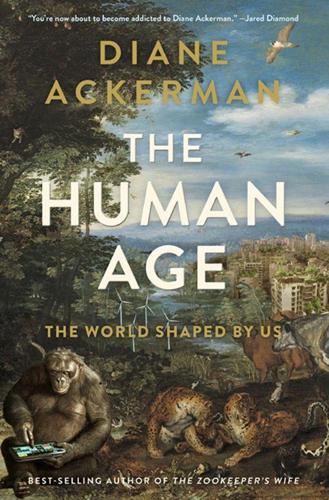
The Human Age: The World Shaped by Us
by
Diane Ackerman
Published 9 Sep 2014
In 2012, John Gurdon and Shinya Yamanaka shared the Nobel Prize for the breakthrough discovery of how to persuade adult skin cells to regress into jack-of-all-trades (“pluripotent”) stem cells capable of morphing into any type of cell in the body—heart, brain, liver, pancreas, egg. It’s as if Gurdon and Yamanaka had found a way to reset the body’s clock to early development, enabling it to mint wild-card cells that haven’t chosen their career yet—without using the fetal stem cells that cause so much controversy. Space may be only one of the final frontiers. The other is surely the universe of human imagination and creative prowess in genetics.
…
Almost ten years ago, Esmail Zanjani of the University of Nevada, Reno, announced that he had injected human stem cells into sheep embryos halfway through gestation, and the lambs emerged with human cells throughout their tissues. And not just a few cells. Some of the organs were nearly half human. Only the organs. No two-legged sheep with opposable thumbs emerged. Staring at them in photographs, I found they looked eerily human, with long faces, jelly roll falling over the forehead, and down-turned eyes. Would dogs detect an odor both human and sheep? What scientists still don’t know is if transplanted human stem cells would change an animal’s inherent behaviors, attributes, or personality.
…
Our relationship with nature has changed . . . radically, irreversibly, but by no means all for the bad. How we now relate to the land, oceans, animals, and our own bodies is being influenced in all sorts of unexpected ways by myriad advances in manufacturing, medicine, and technology. Many of nature’s mysterious stuck doors have shivered open—human genome, stem cells, other Earth-like planets—widening our eyes. Along the way, our relationship with nature is evolving, rapidly but incrementally, and at times so subtly that we don’t perceive the sonic booms, literally or metaphorically. As we’re redefining our perception of the world surrounding us, and the world inside of us, we’re revising our fundamental ideas about exactly what it means to be human, and also what we deem “natural.”

12 Bytes: How We Got Here. Where We Might Go Next
by
Jeanette Winterson
Published 15 Mar 2021
Understanding how blood stem cells manage this process of renewal has implications for all stem-cell research. Combatting degenerative diseases using stem-cell rejuvenation is being actively pursued as a chance to rewind the clock. We may not get sparkly skin like the Cullen family, but we won’t be deathly pale like Lestat either. The Harvard Stem Cell Institute studies healing, scarring, and skin regeneration. Skin aging can be thought of as a form of wounding, in which stem cells no longer maintain normal skin thickness, strength, function, and hair density. Understanding how to harness stem cells for scarless wound healing will also provide key insights into regenerating aged skin, a process termed rejuvenation.
…
Even its own Singularity. It’s AI. * * * Our new AI religion has what all religions have. Believers: the Singularity disciples, the Transhuman evangelists (there’s even a Mormon group), the Biohax converts, the life-extension enthusiasts, the start-up brain-uploaders, the science labs printing 3D body parts, the stem-cell researchers who will ‘match’ your perfect body ideal – so many, so different, yet all of these sharing a Gnostic unorthodoxy of loosely overlapping ideas anchored to the central, but updating text of accelerating change, inside and outside the human body. On the other side are the Sceptics, who take up the Orthodox position of believing in the unique specialness of being human.
…
Understanding how to harness stem cells for scarless wound healing will also provide key insights into regenerating aged skin, a process termed rejuvenation. Multidisciplinary collaborators in the HSCI Skin Program are investigating the biological basis for how the skin ages over time and when exposed to ultraviolet radiation. * * * We know that sunshine ages our skin. Sensible vampires go out at night. Skin stem cell biology has the potential to provide key insights into the mechanisms of regeneration for other organs in the body. Vampires and axolotls can grow new limbs. Humans can’t – at least not yet. It seems unlikely, though, that can’t means won’t. We are intensely interested in physical rejuvenation, and not because we are vain and silly – though we are both those things – but because for all of us, ageing is disagreeable and absurd.
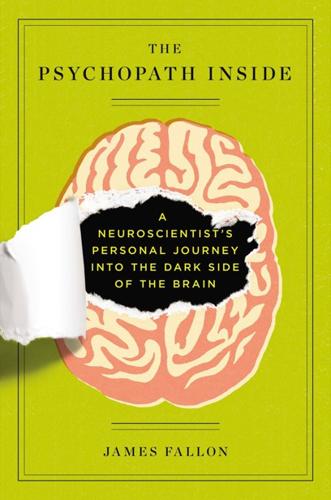
The Psychopath Inside: A Neuroscientist's Personal Journey Into the Dark Side of the Brain
by
James Fallon
Published 30 Oct 2013
By 1998, I was giving a mix of talks about stem cells and psychiatric research, and in 2000, our lab made a breakthrough discovery regarding how adult stem cells mobilize to repair brain injuries. The study was sent from the National Institutes of Health to the U.S. Congress as the first evidence that adult stem cells, as opposed to just embryonic stem cells, could be mobilized in the damaged adult brain, perhaps to cure Parkinson’s disease, stroke, and other neurodegenerative disorders. The work surrounding this finding diverted much of my energy and focus for the better part of six years starting in 2001. Meanwhile, our lab received three large federal grants, one to study the nature of tobacco addiction and two to design computing systems for medical imaging.
…
Collaborations with my clinical colleagues grew in scope in the early 1990s, and then they began to dominate my research interests by 2000, along with my studies of adult stem cells. Eventually this interest and involvement with human psychiatric studies led me to move my academic appointment to the Department of Psychiatry and Human Behavior. Based on these studies, starting in the early and mid-1990s, I started to give more and more scientific, and then public and lay, talks on personality, development, schizophrenia, addictions, male-female brain differences, emotional memory, and consciousness. By 1998, I was giving a mix of talks about stem cells and psychiatric research, and in 2000, our lab made a breakthrough discovery regarding how adult stem cells mobilize to repair brain injuries.
…
If you asked me what line of work I’m in, I’d say that I am a brain researcher, and if you pressed further I’d say I am a professor in the Department of Psychiatry and Human Behavior and affiliated with the Department of Anatomy and Neurobiology in the School of Medicine at the University of California, Irvine. I’d tell you how I’ve spent my career teaching medical students and residents and graduate students about the brain. If you seemed interested, I would then tell you about my research with adult stem cells and animal models of Parkinson’s disease and chronic stroke, and that the basic research from my lab has led to the creation of three biotech companies, one of which has been netting profits consistently for the past twenty-five years, and another that just won a national award from its peer biotech companies.
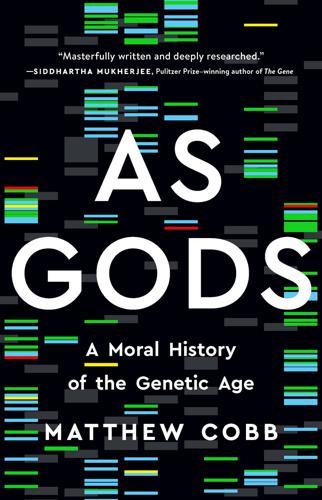
As Gods: A Moral History of the Genetic Age
by
Matthew Cobb
Published 15 Nov 2022
Damage to a single strand of the double helix is easy for the cell to repair – the sequence on the intact strand is used as a way of synthesising the required complementary bases. In the 1980s it was discovered that mammalian stem cells can respond to a double strand break by using the corresponding sequence on the other chromosome as a template to repair the missing bases. In this repair mechainism, called homologous recombination, the cell can be tricked into using an artificial DNA template to synthesise a new DNA sequence, which now forms part of the cell’s genome. This method of gene targeting eventually enabled the creation of recombinant mammals and raised the possibility of carrying out gene therapy in stem cells from the blood, skin or liver.1 But a number of problems remained.
…
-E., et al. (2013), Proceedings of the National Academy of Sciences USA 110:13904–9; Ren, X., et al. (2013), Proceedings of the National Academy of Sciences USA 110:19012–7; Tan, W., et al. (2013), Proceedings of the National Academy of Sciences USA 110:16526–31; Hou, Z., et al. (2013), Proceedings of the National Academy of Sciences USA 110:15644–9; Schwank, G., et al. (2013), Cell Stem Cell 13:653–8. 44 Choulika, Réécrire la vie, p. 66. 45 Shalem, O., et al. (2014), Science 343:84–7. 46 Ding, Q., et al. (2013), Cell Stem Cell 12:393–4. 47 Musunuru, K. (2019), The CRISPR Generation: The Story of the World’s First Gene-Edited Babies (n.p.), pp. 82–3. 48 Pennisi, E. (2013), Science 341:833–6. 49 https://twitter.com/UoM_GEU/status/1263057453320671235?
…
The impact of genetic engineering on virtually every part of biology over the last half-century has been so overwhelming that a book detailing those effects would turn into a history of modern biology itself. As a consequence, many scientific, technical and social developments that flowed from, or coincided with, the appearance of genetic engineering are deliberately not covered in any detail here – IVF, stem cell biology, embryo research, biotechnology, mammalian cloning, synthetic biology, genomics, DNA sequencing, transhumanism and many others. Some experts will undoubtedly find that their favourite technique, their favourite experiment or their favourite researcher has been missed out for reasons of space.
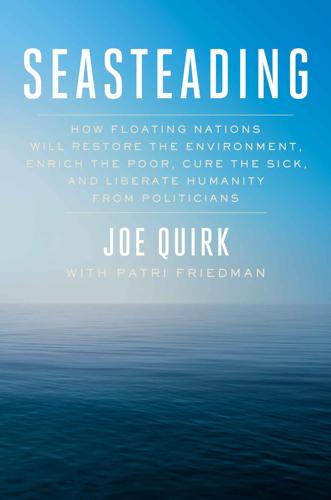
Seasteading: How Floating Nations Will Restore the Environment, Enrich the Poor, Cure the Sick, and Liberate Humanity From Politicians
by
Joe Quirk
and
Patri Friedman
Published 21 Mar 2017
“So one might well ask, How is it possible to make medical care on seasteads or ships a reality? Step one? You guessed it. Focus on the inaccessible, high-cost treatments for well-off locals.” Stem cells are mother cells that have the potential to become any type of cell in the body. “Stem cell treatments are absolutely incredible. Why is this exciting for seasteading? First, it’s inaccessibility in the US. The FDA [Food and Drug Administration] is still not behind it in any advanced or motivated way.” The FDA takes the position that any stem cell, once taken outside the body and cultured, is considered a drug and must be regulated as such before it can be reinjected into the same body.
…
Yet Dr. Christopher Centeno, one of the first physicians to repair severe orthopedic tears with a patient’s own stem cells, points out that in vitro fertilization requires a much more complex culturing process, and fertilized eggs are not regulated as drugs. “Asia and some parts of Latin America are ten years ahead of the US,” continues Nishant. “Why not market stem cell procedures for US patients for conditions that are rare or untreatable with typical medical options?” The marvel of stem cell cures is not held up by technology, lack of doctors, or lack of funding. They are held back only by politics.
…
Many suffer for decades and even die waiting for procedures to be approved in their home countries that have long been available elsewhere. Every time a government restricts a medical procedure, it simply migrates to another jurisdiction. Why wait for stem cell surgeries to be approved in your host country when Claudia Castillo, suffering for years in Colombia with a narrow trachea, or windpipe, caused by tuberculosis, travelled to Spain in 2008 to have her stem cells harvested from her leg bone marrow? It took four days to grow a brand new trachea in the lab, and four days after it was surgically implanted, the medical team found that the new organ was indistinguishable from the rest of Castillo’s body.
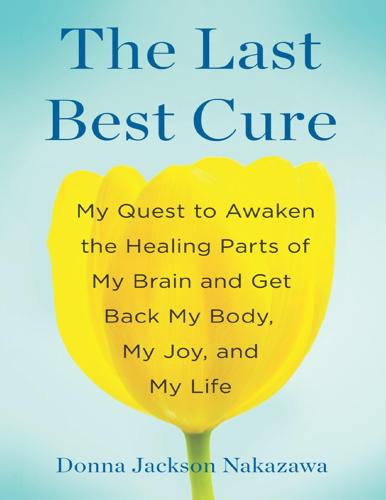
The Last Best Cure: My Quest to Awaken the Healing Parts of My Brain and Get Back My Body, My Joy, a Nd My Life
by
Donna Jackson Nakazawa
Published 21 Feb 2013
In a recent evaluation of a number of studies that show physical activity to be an effective treatment for depression, strong support emerged that the reason for patient recovery was, indeed, adult neurogenesis. And experts believe that yoga in particular may facilitate the potential for the brain to undergo these neuronal changes. *** PHYSICAL ACTIVITY ALSO helps generate stem cell growth and individual cell repair throughout the entire body. In animal studies, exercise increases the number of stem cells in muscle fiber by almost half. This increase in muscle stem cells makes rats more likely to demonstrate what researchers refer to as “spontaneous locomotion,” that feeling that signals our body to just get up and dance. A little like rats whose brains are on joy—or whatever the rat equivalent to joy might be.
…
In a process scientists now refer to as neurogenesis, given the right cues, these immature nerve cells can divide and differentiate into either new, baby neurons, or they can become additional neural stem cells that integrate into and enhance the brain’s neural network. These new neurons often come to life in the areas of the brain associated with higher learning. As we age, however, these neural stem cells tend to become less able to transform. They’re there, but it’s as if they’ve shut down and aren’t responsive; think of them as being in something akin to a cellular coma. They aren’t getting the cue that tells them to wake up.
…
This somnambulant state is caused by a protein found throughout the body known as bone morphogenetic protein (BMP), which inhibits cellular development. The more active BMP is in your brain, the less responsive your neural stem cells become, the less neurogenesis occurs, and the less vibrant your brain, your thinking, your state of mind, and your ability to learn new things. Exercise awakens these quiescent neural stem cells. Exercise in general influences the rate of neurogenesis as well as the survival of new neurons after they are born, and it does so through multiple pathways. To give just one example, when we exercise we increase another protein, what we might think of as one antidote to the BMP-induced cellular coma, appropriately named Noggin (yes, Noggin).

50 Future Ideas You Really Need to Know
by
Richard Watson
Published 5 Nov 2013
But if it were common to live to 110, 130 or 150, people might wait until they were 60, 70 or even 80 to have children. Future treatments Stem-cell medicine promises two radical future developments. The first is a series of treatments for diseases such as Alzheimer’s and Parkinson’s disease. The second is the production of genetically matching organs (farmed or printed using 3D fabricators) to replace those damaged by normal aging or disease, or by treatments for illness, for example, a liver damaged during cancer treatment. Historically, stem cells have been a difficult ethical area, because the process of stem-cell production for the most useful stem cells involved the destruction of human embryos.
…
In an experiment, pairs of mice were joined together to create artificially conjoined twins. The result was that old mice who were connected to young mice regenerated muscle cells much faster than pairs of old mice. Apparently, the effect has nothing to do with stem cells contained in the young blood either. This suggests that older bodies repair themselves more slowly because of a lack of some signal or other—not because the stem cells lose their regenerative ability. This finding is likely to result in various “fast repair” products for older people in the future. What’s possible? In the more optimistic corner, are those who believe that aging is genetically determined and that the “death program” or process that causes aging can be switched off, or at least amended.
…
the condensed idea Genetic prophesy timeline 1997 Release of the movie Gattaca about genetic enhancement 2008 Knome offers genome sequencing to individuals for $350,000 2009 Knome drops its price to $99,500 2012 23andMe offers gene sequencing for $299 2018 Cost falls to $49 via Walmart 2020 Hospitals and insurers offer free genome profiling 2030 Google dating based upon ideal DNA profiles 2050 DNA database creates human underclass 22 Regenerative medicine Is it possible to prevent or reverse the aging process, perhaps by fiddling with tired tissues and cells, or even growing new organs inside a laboratory? Some people regard this as a pipe dream. Others see it instead as increasingly inevitable. Physician, heal thyself. What if you are an aging surgeon and parts of your body are worn out? Options may include stem-cell therapy, the transplant of an artificial organ (a kidney grown in vitro), the printing of replacement teeth or bones using a fabricator, general life extension, some more hair, or perhaps some new fingers? This last idea may seem a little far-fetched, but if newts can repair themselves why not human beings?

Superintelligence: Paths, Dangers, Strategies
by
Nick Bostrom
Published 3 Jun 2014
For comparison, standard practice today involves the creation of fewer than ten embryos. 46. Adult and embryonic stem cells can be coaxed to develop into sperm cells and oocytes, which can then be fused to produce an embryo (Nagy et al. 2008; Nagy and Chang 2007). Egg cell precursors can also form parthenogenetic blastocysts, unfertilized and non-viable embryos, able to produce embryonic stem cell lines for the process (Mai et al. 2007). 47. The opinion is that of Katsuhiko Hayashi, as reported in Cyranoski (2013). The Hinxton Group, an international consortium of scientists that discusses stem cell ethics and challenges, predicted in 2008 that human stem cell-derived gametes would be available within ten years (Hinxton Group 2008), and developments thus far are broadly consistent with this. 48.
…
There is, however, a complementary technology, one which, once it has been developed for use in humans, would greatly potentiate the enhancement power of pre-implantation genetic screening: namely, the derivation of viable sperm and eggs from embryonic stem cells.46 The techniques for this have already been used to produce fertile offspring in mice and gamete-like cells in humans. Substantial scientific challenges remain, however, in translating the animal results to humans and in avoiding epigenetic abnormalities in the derived stem cell lines. According to one expert, these challenges might put human application “10 or even 50 years in the future.”47 With stem cell-derived gametes, the amount of selection power available to a couple could be greatly increased.
…
In current practice, an in vitro fertilization procedure typically involves the creation of fewer than ten embryos. With stem cell-derived gametes, a few donated cells might be turned into a virtually unlimited number of gametes that could be combined to produce embryos, which could then be genotyped or sequenced, and the most promising one chosen for implantation. Depending on the cost of preparing and screening each individual embryo, this technology could yield a severalfold increase in the selective power available to couples using in vitro fertilization. More importantly still, stem cell-derived gametes would allow multiple generations of selection to be compressed into less than a human maturation period, by enabling iterated embryo selection.
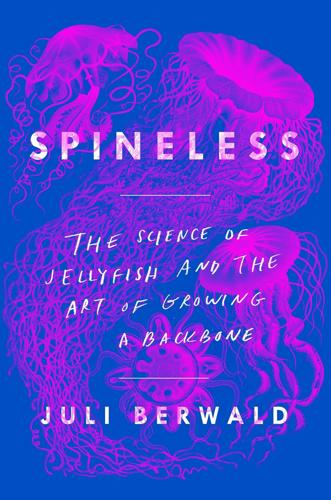
Spineless: The Science of Jellyfish and the Art of Growing a Backbone
by
Juli Berwald
Published 14 May 2017
Normally, the genetic switches that control the transformation of an embryo into a larva or a larva into a polyp are switched on in an order that is irreversible, Stefano explained. “But Turritopsis cells can hit the rewind button.” When the Turritopsis medusa rejuvenates, muscle cells, for example, turn certain genes on or off, essentially unbaking the cells and reverting them to doughlike stem cells. Then those stem cells re-form into new and different cells in the polyp. The idea that fully cooked cells can become stem cells again has enormous and tantalizing possibilities for medical research. If we could hit the rewind button in our cells, we could open the door to all kinds of cures for diseases in which cells have gone awry, ailments like Parkinson’s disease and cancer.
…
Eventually perfectly healthy polyps sprang to life from the medusa carcass. Rather than simply die, the jellyfish seemingly reversed its life cycle, going from the degraded medusa backward to the polyp stage. Like animals, individual cells proceed through a life cycle. All types of cells are born as generic stem cells, like a lump of dough with a lot of potential. Specific genes turn on and off inside each stem cell, changing it into a muscle cell, a skin cell, or a nerve cell in the same way a baker molds the dough into a pizza crust, a loaf of bread, or a pretzel. Certain steps are required for the transformation of dough, be it spinning it in the air, rolling it into a snake and giving it a twist, or mounding it into a loaf pan.
…
In the early 2000s, they injected mouse skin cells with between four and seven pieces of protein called transcription factors. Transcription factors attach on to DNA and control which genes are flipped on. The Japanese scientists discovered that the presence of just those few proteins had the power to transform skin cells backward—to the lump-of-dough stem-cell stage. And from those stem cells, scientists were able to grow nerve cells, blood cells, and heart muscle cells. For this rule-shattering work, Shinya Yamanaka received the Nobel Prize in 2012. One major roadblock, Maria Pia told me, is that most of the work on transcription factors has been done on cells grown in a culture dish.
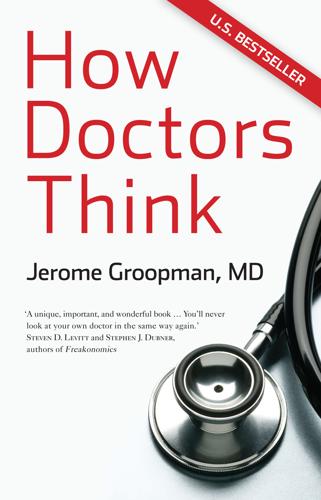
How Doctors Think
by
Jerome Groopman
Published 15 Jan 2007
Bone marrow transplantation is the most extreme measure in medicine to cure a disease. In essence, a person is given lethal doses of radiation and chemotherapy, doses that destroy the blood and immune system. Into this void, stem cells from the bone marrow of a compatible donor are seeded. These marrow stem cells have extraordinary biological potential. They grow and mature into all of the elements that have been destroyed: red blood cells, neutrophils, monocytes, platelets, T cells, and B cells. As the donor stem cells grow and mature, they begin to perform the chores that immune cells are programmed to do. Primary among these is to recognize foreign invaders, like microbes, and to purge them.
…
There was a new case for the fellow to present, and after exchanging pleasantries, he began: "Max Bornstein is a fifty-nine-year-old gentleman who had a large-cell lymphoma successfully treated two years ago and now has MDS." MDS stands for myelodysplastic syndrome—a conglomerate term of Greek roots that signifies injury to the primitive cells of the bone marrow, the stem cells; the injured stem cells grow in a stunted, disorderly way and fail to produce enough blood. In Bornstein's case, it was the chemotherapy that cured his lymphoma two years before that had injured the marrow stem cells. "His white blood cell count is 1,900, his platelets 74,000, and his hemoglobin 9.8," the fellow said. "I calculated all of his parameters, including his marrow findings. His calculated score puts him at intermediate-II risk on the IPSS.
…
They would try different drugs in the hope that one or more would reduce the amount of lymphoma in his body to the point where he could undergo a bone marrow transplant. Because Franklin did not have a matched donor, Nimer would harvest the stem cells from Franklin's own bone marrow, treat him with what would be lethal amounts of chemotherapy, and then "rescue" him with his own stem cells. "It scares me," Franklin said to Nimer, "but I really don't have a choice, do I?" Nimer replied that everyone always has a choice, but that this was the most rational way to proceed, and the only chance of a cure. The way a physician phrases his recommendations can powerfully sway a patient's choices.
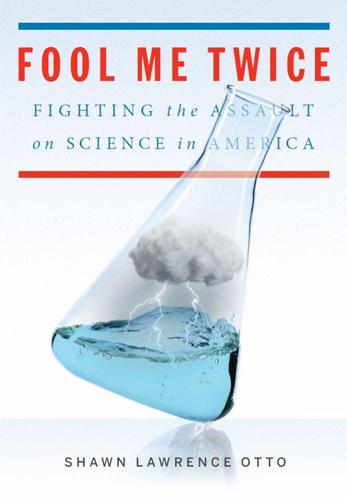
Fool Me Twice: Fighting the Assault on Science in America
by
Shawn Lawrence Otto
Published 10 Oct 2011
The field of genetics has the potential to improve human health and nutrition, but many people are concerned about the effects of genetic modification both in humans and in agriculture. What is the right policy balance between the benefits of genetic advances and their potential risks? 8. Stem Cells. Stem cell research advocates say it may successfully lead to treatments for many chronic diseases and injuries, saving lives, but opponents argue that using embryos as a source for stem cells destroys human life. What are your positions on government regulation and funding of stem cell research? 9. Ocean Health. Scientists estimate that some 75 percent of the world’s fisheries are in serious decline and habitats around the world like coral reefs are seriously threatened.
…
The earmark in question was secured by Representative Mike Thompson (D-CA) for research into the olive fruit fly, a widespread problem in Europe that is threatening the rapidly growing US olive industry—I kid you not. Palin followed this with “going rogue” on McCain by appearing without permission on Christian conservative James Dobson’s radio show, where she contradicted McCain’s position on stem cell research as stated to Science Debate. Concerned that he might be losing Bible Belt conservatives, McCain swung to the right. During the second presidential debate he criticized science spending in particular, singling out such congressional science earmarks as $3 million “to study the DNA of bears in Montana.
…
We have to ask, then, is every one that remains of the roughly 1½ million eggs a woman has in her ovaries at birth a life with rights? When does life begin? Is it true, as the comedy troupe Monty Python sang in The Meaning of Life, that “Every sperm is sacred”? Is it a life if we transform adult skin cells into stem cells and those into sperm and egg and then fertilize one with the other? And is that a clone or something else? Is it a life if we design its genome on a computer, as scientists at the J. Craig Venter Institute have done,8 buy a DNA synthesizer on eBay for $8,000 or so, use it to make fragments of the genome we designed, chemically stitch them together, inject the complete genome into a cell with an empty nucleus, and shock it into replicating?
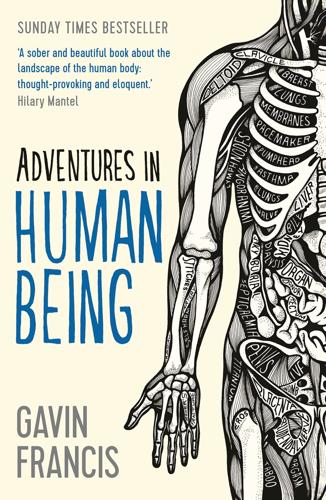
Adventures in Human Being (Wellcome)
by
Gavin Francis
Published 28 Apr 2015
The leaflets advertising umbilical cryogenics have two types of picture on them: cute and smiling children at play, or radiation-suited scientists engaged in some challenging laboratory task. There are no images representing multiple sclerosis, Parkinson’s disease or leukaemia, despite the companies’ claim that storing stem cells might be an insurance policy against these illnesses in later life. You can donate stem cells to a public bank, for use by anyone, or you can pay a private company to store your baby’s cord and stem cells for the sole use of your family. Some cultures maintain that a baby’s visceral connection to its umbilical cord is an association that lasts a lifetime, and for that reason the cord must always be handled with respect.
…
These cryogenics companies agree: if you want a private cord-bank to store your baby’s umbilical cord you can arrange for a lab scientist to be on standby for the birth of your child in order to extract the stem cells within the critical time period in which they’re still viable. Your baby’s lifetime’s association with the cord can be maintained through regular payments from a credit card. The National Health Service in the UK now has a cord-blood storage service, preserving stem cells for research, and investigating their use in bone marrow transplants for whoever might need them. Within a decade we’ve gone from throwing afterbirth out with the trash, to reinvesting it with a depth of significance that had almost been forgotten.
…
In wealthy, modern healthcare systems, a new possibility has arisen: to have it cryogenically preserved. Buried in the jelly of the umbilical cord are cells that are genetically identical to the baby, but which have not differentiated into any particular tissue type. These ‘undifferentiated’ cells are a type of ‘stem cell’ because, just as it’s possible to regrow a tree from a single cutting, they are stems from which other body parts can theoretically grow. The cells within the cord blood have the potential to develop into tissues such as bone marrow, while the cells within the jelly of the cord are related to the structural components of the body: bone, muscle, cartilage and fat.

The Singularity Is Near: When Humans Transcend Biology
by
Ray Kurzweil
Published 14 Jul 2005
In addition to generating new connections between neurons, the brain also makes new neurons from neural stem cells, which replicate to maintain a reservoir of themselves. In the course of reproducing, some of the neural stem cells become "neural precursor" cells, which in turn mature into two types of support cells called astrocytes and oligodendrocytes, as well as neurons. The cells further evolve into specific types of neurons. However, this differentiation cannot take place unless the neural stem cells move away from their original source in the brain's ventricles. Only about half of the neural cells successfully make the journey, which is similar to the process during gestation and early childhood in which only a portion of the early brain's developing neurons survive.
…
Celera has already demonstrated the ability to create synthetic viruses from genetic information and plans to apply these biodesigned viruses to gene therapy.37 One of the companies I help to direct, United Therapeutics, has begun human trials of delivering DNA into cells through the novel mechanism of autologous (the patient's own) stem cells, which are captured from a few vials of their blood. DNA that directs the growth of new pulmonary blood vessels is inserted into the stem cell genes, and the cells are reinjected into the patient. When the genetically engineered stem cells reach the tiny pulmonary blood vessels near the lung's alveoli, they begin to express growth factors for new blood vessels. In animal studies this has safely reversed pulmonary hypertension, a fatal and presently incurable disease.
…
Short of a worldwide totalitarian state, the economic and other forces underlying technical progress will only grow with ongoing advances. Consider the issue of stem-cell research, which has been especially controversial, and for which the U.S. government is restricting its funding. Stem-cell research is only one of numerous ideas concerned with controlling and influencing the information processes underlying biology that are being pursued as part of the biotechnology revolution. Even within the field of cell therapies the controversy over embryonic stem-cell research has served only to accelerate other ways of accomplishing the same goal. For example, transdifferentiation (converting one type of cell such as a skin cell into other types of cells) has moved ahead quickly.
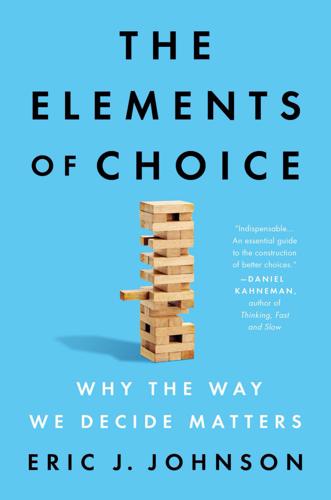
The Elements of Choice: Why the Way We Decide Matters
by
Eric J. Johnson
Published 12 Oct 2021
Now, thanks to two stem cell transplants, I have recovered. Fortunately, I could be my own stem cell donor. Stem cells mature into the cells that make up your blood and immune system. Having these cells is important during treatment for Hodgkin’s. When the procedure starts, powerful chemotherapy agents are dripped into your system. These drugs, with luck, kill the cancer cells. But, as collateral damage, they destroy your own bone marrow and immune system. So, doctors harvest stem cells from Hodgkin’s patients before chemotherapy. After the chemotherapy has done its work, these stem cells are transfused into your arm to create a new immune system.
…
She mentioned a floor and building that I knew was used for organ transplants. As we chatted, she explained that she was being evaluated as a kidney donor for her sister. Later, during my stem cell collection, I had lots of time to think. The process is long: you sit for hours after a port the size of your fist has been sewn into a large vein in your neck. Your blood is circulated through a large machine that separates the stem cells from the rest of your blood. You lie covered with a blanket as your blood circulates out of your body and returns. There is not much you can do, and I was too nervous to nap. My mind wandered to the decision that woman made to donate a kidney to her sister.
…
After the chemotherapy has done its work, these stem cells are transfused into your arm to create a new immune system. The cells circulate for a few days, then, like a flock of migrating birds, they find their way home to your empty bone hollows and reproduce your bone marrow. I was on my way for an initial doctor’s appointment for my stem cell collection when I did something I never do: I talked to a stranger on the subway. A young woman broke the silence and asked me a question (she obviously didn’t live by my rule): “Is 168th Street the stop for New York–Presbyterian Hospital?” I said yes, and since I was getting off there, I offered to point her in the right direction.

The Matter of the Heart: A History of the Heart in Eleven Operations
by
Thomas Morris
Published 31 May 2017
But at the turn of the millennium a new world of possibility opened up when researchers gained a powerful new tool: stem cell technology. In contrast to the endothelial cells in the blood vessels (for instance), stem cells are not specialised to one function but have the potential to develop into many different tissue types. One type of stem cell is found in growing embryos, and another in parts of the adult body, including the bone marrow (where they generate the cells of the blood and immune system) and skin. In 1998 James Thomson, a biologist at the University of Wisconsin, succeeded in isolating stem cells from human embryos and growing them in the laboratory,66 resulting in a wealth of new research into how cells differentiate and possible new therapies.
…
In 1998 James Thomson, a biologist at the University of Wisconsin, succeeded in isolating stem cells from human embryos and growing them in the laboratory,66 resulting in a wealth of new research into how cells differentiate and possible new therapies. But an arguably even more important breakthrough came nine years later. Shinya Yamanaka, a researcher at Kyoto University, showed that it was possible to genetically ‘reprogram’ skin cells and convert them into stem cells.67 The implications were enormous. In theory it would now be possible to harvest mature, specialised cells from a patient, reprogram them as stem cells, then choose which type of tissue they would become. One possible application of this discovery is in the treatment of heart attacks. When the cardiac muscle is damaged by an interruption in its blood supply the body does little to repair it: scar tissue forms, but few new muscle cells, or myocytes, appear.
…
To encourage the growth of new muscle, scientists first tried extracting adult stem cells from the patient’s bone marrow and injecting them into the coronary arteries, in the hope that some would adhere to the myocardium and convert into myocytes – but the results were disappointing.fn5 Rather than engineer new tissue in situ, Sanjay Sinha, a cardiologist at the University of Cambridge, is attempting to grow a ‘patch’ of artificial myocardium in the laboratory for later implantation in the operating theatre. His technique starts with undifferentiated stem cells, which are then encouraged to develop into several types of specialised cell: not just myocytes, but also smooth muscle tissue and vascular cells.

The Future of Technology
by
Tom Standage
Published 31 Aug 2005
That seems to trigger the desired reprogramming. Or instead of putting the nucleus into an egg cell, it might be put into a socalled stem cell from an early embryo. Embryonic stem cells can turn into any other sort of cell, so might possibly be persuaded to turn into entire people. Regardless of that possibility, embryonic stem cells have medical promise, and several firms are currently studying them. Geron, the most advanced of these firms, has worked out how to persuade embryonic stem cells to turn into seven different types of normal cell line that it hopes can be used to repair damaged tissue. Blood cells could be grown in bulk for transfusions.
…
In case that does not work, though, the discussion has turned to the idea of transplanting adult nuclei into embryonic stem cells as a way of getting round the rejection problem. This idea, known in the trade as therapeutic cloning, has caused alarm bells to go off. The technique would create organs, not people, and no one yet knows whether it would work. But some countries are getting nervous about stem-cell research. This nervousness has not been calmed by the activities of Advanced Cell Technology, a firm based in Worcester, Massachusetts, which announced in November 2001 that it had managed the trick of transplanting adult nuclei into stem cells and persuading the result to divide a few times.
…
This nervousness has not been calmed by the activities of Advanced Cell Technology, a firm based in Worcester, Massachusetts, which announced in November 2001 that it had managed the trick of transplanting adult nuclei into stem cells and persuading the result to divide a few times. In effect, act created the beginning of an embryo. In 2002 President George Bush issued a decree restricting federal funding in America to existing embryonic stem-cell lines. Attempts have even been made in Congress to ban it altogether. Reversing the usual traffic flow, some American scientists have upped sticks and gone to Britain, where the regulations on such research are liberal and settled. 268 CLIMBING THE HELICAL STAIRCASE Some countries, indeed, have more than just settled regulations. Singapore, for example, is actively recruiting people who want to work on the human aspects of biotechnology.
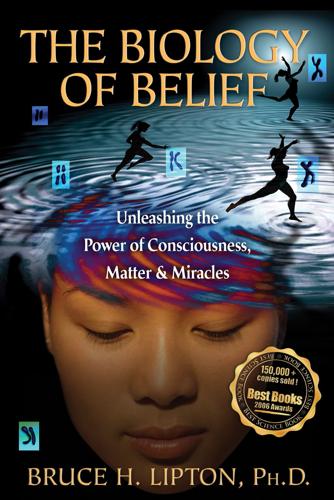
The Biology of Belief: Unleashing the Power of Consciousness, Matter & Miracles
by
Bruce H. Lipton
Published 1 Jan 2005
I had always had niggling doubts about genetic determinism. Some of those doubts stemmed from my eighteen years of government-funded research on cloning stem cells. Though it took a sojourn outside of traditional academia for me to fully realize it, my research offered incontrovertible proof that biology’s most cherished tenets regarding genetic determinism are fundamentally flawed. My new understanding of the nature of life not only corroborated my stem cell research but also, I realized, contradicted another belief of mainstream science that I had been propounding to my students—the belief that allopathic medicine is the only kind of medicine that merits consideration in medical school.
…
Suffice it to say that after four months in paradise, teaching in a way that clarified my thinking about cells and the lessons they provide to humans, I was well on my way to an understanding of the New Biology, which leaves in the dust the defeatism of genetic and parental programming as well as survival-of-the-fittest Darwinism. CHAPTER 2 IT’S THE ENVIRONMENT, STUPID I will never forget a piece of wisdom I received in 1967, on the first day I learned to clone stem cells in graduate school. It took me decades to realize how profound this seemingly simple piece of wisdom was for my work and my life. My professor, mentor, and consummate scientist Irv Konigsberg was one of the first cell biologists to master the art of cloning stem cells. He told me that when the cultured cells you are studying are ailing, you look first to the cell’s environment, not to the cell itself, for the cause. My professor wasn’t as blunt as Bill Clinton’s campaign manager, James Carville, who decreed, “It’s the economy, stupid,” to be the mantra for the 1992 presidential election.
…
This new awareness reveals that our genes are constantly being remodeled in response to life experiences. Which again emphasizes that our perceptions of life shape our biology. Months after this book was first published, an article in one of the most prestigious journals, Nature, revealed exciting new epigenetic insights on how the environment controls gene activity in stem cells, which coincidently is the same subject and conclusion I offer in Chapter 2. I must admit that I was amused by the fact that my chapter is entitled “It’s the Environment, Stupid” while the more recent Nature article was titled “It’s the Ecology, Stupid.” (2005 Nature 435:268) Essentially, we are on the same page!

Viruses: A Very Short Introduction (Very Short Introductions)
by
Crawford, Dorothy H.
Published 27 Jul 2011
We now know that HPVs target squamous epithelial cells, that is, the thick layer of cells that make up the skin on the outside of our bodies, and line certain internal areas such as the genital tract, the mouth, the throat, and upper larynx. The basal layer of the epithelium contains self-renewing stem cells capable of a lifetime of cell division. This production line is normally finely balanced by cell loss from the regular shedding of dead cells from the skin surface. Entering through a small cut or abrasion, HPVs set up a persistent infection in these epithelial stem cells. The HPV genome replicates each time the cell divides, with one copy being retained in the stem cell offspring so ensuring its long-term survival in the host. The second daughter cell progresses up the epithelium, and its maturation is the signal for HPV to begin virus production, so that when the cell dies and is shed from the surface, it contains thousands of virus particles ready to infect new hosts, spread by close contact such as sexual intercourse.
…
When this happens, it causes cytomegalic inclusion disease in around 10% of affected infants, inducing a wide range of symptoms including growth retardation, deafness, abnormalities of internal organsre0S blood clotting, and inflammation of the liver, lungs, heart, and brain. CMV establishes latency in the bone marrow stem cells that develop into blood monocytes and tissue macrophages. These cells transport the latent virus via the blood to the tissues where virus reactivation is common. In healthy hosts, this is dealt with by the immune system without causing disease, but CMV replication produces significant pathology in immunosuppressed patients, and was responsible for blindness, severe diarrhoea, pneumonia, and encephalitis in many HIV-positive people before effective antivirals were developed in the early 1990s.
…
base pairs: the pairs of nucleotides that form the ‘letters’ of the genetic code. In DNA, adenine (A) pairs with thymine (T), and cytosine (C) pairs with guanine (G). bluetongue virus: midge-borne virus of the Orbivirus genus, so called because of the orb-shaped capsid. B lymphocyte/B cell: an antibody-producing cell Q3 virusle c that develops from stem cells in the bone marrow, circulates in the blood, and matures in lymph nodes. bocavirus: a parvovirus, its name being derived from its two known hosts, cattle and dogs (i.e. bovine and canine), recently identified as a cause of childhood respiratory disease in humans. bronchiolitis: inflammation of the bronchioles – the smaller air passages of the lungs.
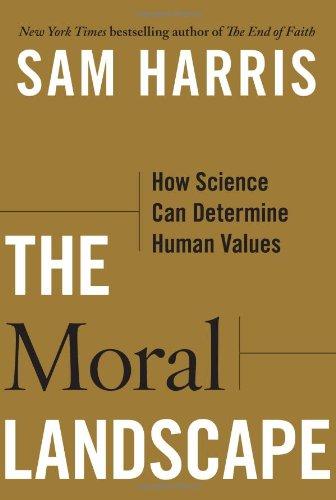
The Moral Landscape: How Science Can Determine Human Values
by
Sam Harris
Published 5 Oct 2010
And embryos themselves are not viable unless placed in the proper conditions. Indeed, embryos could be engineered to not be viable past a certain age even if implanted in a womb. Would this obviate the ethical concerns of those who oppose embryonic stem-cell research? At the time of this writing, the Obama administration still has not removed the most important impediments to embryonic stem-cell research. Currently, federal funding is only allowed for work on stem cells that have been derived from surplus embryos at fertility clinics. This delicacy is a clear concession to the religious convictions of the American electorate. While Collins seems willing to go further and support research on embryos created through somatic-cell nuclear transfer (SCNT), he is very far from being a voice of ethical clarity in this debate.
…
Concern over human embryos smaller than the period at the end of this sentence—when, for years they have constituted one of the most promising contexts for medical research—is one of the many delusional products of religion that has led to an ethical blind alley, and to terrible failures of compassion. While Collins appears to support embryonic stem-cell research, he does so after much (literal) soul searching and under considerable theological duress. Everything he has said and written about the subject needlessly complicates an ethical question that is—if one is actually concerned about human and animal well-being—utterly straightforward. The ethics of embryonic stem-cell research, which currently entails the destruction of human embryos, can be judged only by considering what embryos at the 150-cell-stage actually are.
…
It should concern us that these two orientations are not equally empowering. Increasingly, secular democracies are left supine before the unreasoning zeal of old-time religion. The juxtaposition of conservative dogmatism and liberal doubt accounts for the decade that has been lost in the United States to a ban on federal funding for embryonic stem-cell research; it explains the years of political distraction we have suffered, and will continue to suffer, over issues like abortion and gay marriage; it lies at the bottom of current efforts to pass antiblasphemy laws at the United Nations (which would make it illegal for the citizens of member states to criticize religion); it has hobbled the West in its generational war against radical Islam; and it may yet refashion the societies of Europe into a new Caliphate.6 Knowing what the Creator of the Universe believes about right and wrong inspires religious conservatives to enforce this vision in the public sphere at almost any cost; not knowing what is right—or that anything can ever be truly right—often leads secular liberals to surrender their intellectual standards and political freedoms with both hands.
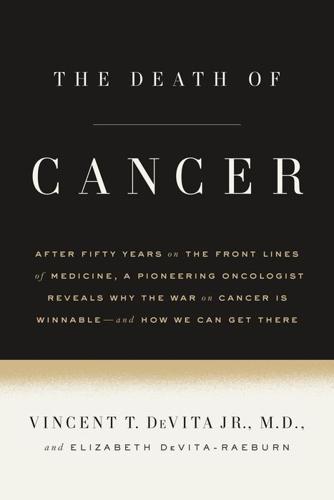
The Death of Cancer: After Fifty Years on the Front Lines of Medicine, a Pioneering Oncologist Reveals Why the War on Cancer Is Winnable--And How We Can Get There
by
Vincent T. Devita, Jr., M. D.
and
Elizabeth Devita-Raeburn
Published 3 Nov 2015
If you did a blood count during this time, the cell count would appear normal, even though the stem cell factory (stem cells generate all the cells in the marrow) had been shut down. But the damage had been done, and the storage compartment would be emptying. However, a second dose of a drug that is toxic to the marrow during the first ten days isn’t as damaging as the first. There are two reasons for this. The more mature cells left in the storage compartment aren’t all that sensitive to chemotherapy in the first place. And the stem cells would have been rendered quiescent by the first dose. Cells that are going through a lot of cell division, as stem cells normally do, are most vulnerable to the toxic effects of chemotherapy.
…
Inactive cells, however, aren’t dividing, so they’re less susceptible to damage. From day 9 after a dose of chemotherapy until about day 18, patients are out of white blood cells and platelets. While the stem cells in the marrow are awakening, they are not making many cells. This is the period of greatest danger for acquiring an infection or bleeding. After day 18, the marrow wakes up again in earnest, and the stem cells begin furiously churning out more white blood cells and platelets, although few of them leave the marrow until the storage compartment is full again. If you give another big dose of drug between days 14 and 18, it will cause severe marrow toxicity that could be fatal to the freshly dividing cells.
…
Pretty soon, we realized we had another problem. In childhood leukemia, the drug combinations were given intensively, every day, for as long as possible, with the intent to destroy every leukemic cell lingering in the bone marrow and circulating in the bloodstream. Then you stopped and prayed there were enough normal marrow stem cells left to regenerate the bone marrow. Often, there were. But in patients with solid tumors, we didn’t want to damage the marrow. In fact, we needed, as much as possible, to avoid damaging it, as our patients would become more fragile if their blood counts dipped. We needed a different dosing schedule, one that killed the Hodgkin’s cells but didn’t destroy our patients’ bone marrow.

Alive
by
Gabriel Weston
Published 15 Aug 2025
In a dead bone, what we were looking at had the appearance of hardened sponge. But cut across a real bone and the first thing you notice is how succulent its centre is. Bones aren’t just punctured here and there by blood vessels; their core is packed full of bone marrow. Red marrow is plush with stem cells, from which over 200 billion red and white blood cells are made each day. This is gradually replaced by yellow marrow, which is a great fat store, so that the only remaining red stuff we have as adults is found in our hips, ribs, spine, chest and the ends of our long bones. If I had to prepare for an exam, these osteological facts would press themselves on me like the wrong kind of kiss.
…
This happens to repair injuries, cracks and deformities as we go about the hazardous business of living, to thin down or bulk up individual bones in response to their daily load, and to supply our bloodstream with the exact levels of the minerals calcium and phosphate that are essential for so many of the body’s other functions. Two main types of bone cell collaborate in this remodelling, all of them starting out as stem cells in the bone marrow. Osteoclasts are called in when a piece of bone needs to be refashioned. This might be in the growing skeleton of a child, or at a site of injury, or just in a section that hasn’t been replaced for a while and is becoming decrepit. Once at their destination, osteoclasts fasten onto the bone and seal it off like roadworks.
…
He deduced she must have started out as a twin in her own mother’s womb, her own embryonic cells mingling with those of a deceased sibling she never knew existed. There are other examples too. In genetic mosaicism, an individual develops from a single fertilised egg but, due to an error in how the body’s cells divide as the embryo is forming, ends up with a patchwork of cells with slightly different genetics. And in microchimaerism, stem cells cross the placenta. In 2012, immunologist Lee Nelson from Seattle wowed the scientific community when she described having found XY cells in post-mortem samples of women’s brains who had once been pregnant with a boy. It turns out that these rogue cells aren’t passive but integrate into and perform special functions in their new environment.
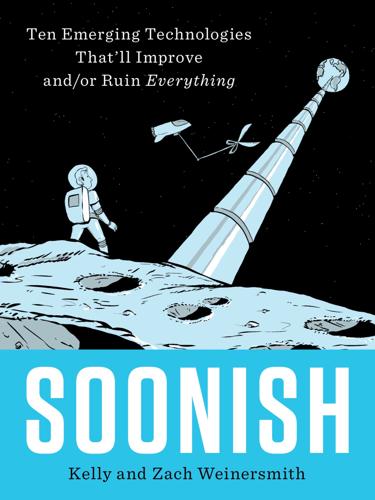
Soonish: Ten Emerging Technologies That'll Improve And/or Ruin Everything
by
Kelly Weinersmith
and
Zach Weinersmith
Published 16 Oct 2017
Suppose the Apple iLiver is way better than the Microsoft X-Liver. How long should Apple have the right to keep its product patented? The various ethical issues of stem cells may arise for organ printing, but at least so far it does not appear to be a major moral conundrum. Most ethical concerns with stem cells are associated with the use of embryonic stem cells. But the stem cells most likely to be used for bioprinters are pluripotent stem cells, which are like embryonic cells but are derived from patients. A few concerns may be unique to bioprinting, but they seem pretty mild to us. For example, one concern is that printed organs may acquire bacteria during the printing process.
…
Better still, a 3D printer would be able to make the product to order for each patient. This is handy, because a five-foot-tall woman does not want the same heart as a seven-foot-tall man. It’s also handy because an on-site 3D printer could use cells harvested and cultured from the individual patient that will receive the organ. For example, you could harvest immature stem cells from someone, coax them into replicating and becoming the cells that make up a particular organ, and then transplant an organ made from these cells back into the patient. Such an organ would not have the rejection problems that normally come from organ transplants. You may have the impression that 3D printing is mostly for weirdos with too much money who spend their time obsessively printing Star Wars miniatures.
…
Gerald Bull, Iraq and the Supergun (Lowther), 50 Army, U.S., 47, 313n arsenic, 211 art, 183 artemisinin, 198–200 artificial intelligence, 136, 139–40 artificial organs, see bioprinting artspeak, 138 Artsutanov, Yuri, 35 Asian elephants, 223 Asians, 196n asteroid mining, 52–69, 320n benefits of, 68–69 environmental degradation in, 66–67 finances of, 54–56 law and order in, 65–66 problems facing, 58–65 rights to, 63–64 safety and, 67 asteroid-moving technology, 67 asteroids: escape velocity of, 55 landing on, 62–63 net capture of, 63 rubble pile, 62 types of, 53–54 atmosphere, density of, 25, 29 atomic bombs, 79, 96, 98 atomic gardening, 191–92 ATP, 286 augmented reality (AR), 8n accuracy required for, 171 audio in, 174 benefits of, 183–86 concerns about, 180–83 hacking of, 183 hardware for, 168 location detection for, 171–74 markers in, 169–71 motion sickness in, 168 possible uses for, 164–66, 168, 177–79, 183–86 reference images in, 172–73 registration in, 166–68, 172–73 smell in, 174–75 vs. virtual reality, 165 where are we now in, 175–79 Augmented Reality Lab, 173, 177–78 Auschwitz, 183 Australia, 219 automotive industry, 136, 137 autonomous cars, 174 baby teeth, 99 bacteria, 203–5, 206, 210, 218 in bioprinted organs, 273 environmental monitoring by, 211–12 immune system of, 212–14 synthetic, 220–21 Bad Astronomy (blog), 36 Barbados, 47 Bartlett School of Graduate Studies, 141 Baseline Study, 254 bases, 192–93 Bauby, Jean-Dominique, 316 B cell, 242 behavior patterns, 231 Belize, 315, 316 Belleau Wood, Battle of, 178 Berger, Theodore, 308 beryllium, 92 Billinghurst, Mark, 176 biochar, 211, 239 bio-ink, 263–66 components of, 266–67 biomarkers, 230–31, 247 bioprinting, 144, 206, 257–81 benefits of, 274–75 concerns about, 272–74 state of the art in, 268–92 sugar sintering method in, 270 two techniques for, 263–66 Biostatistics Research and Consulting Center, 235 bioterrorism, 217 birds, 225 Blenner, Mark, 160 blind people, 310 bloodletting, 229 blood type, 195–96 blood vessels, 262, 268 bioprinting of, 269–71 Bloomberg View, 154 Boeing, 179 Bolonkin, Alexander, 62n bomb threats, 130 Booth, Serena, 129–30 Botella, Cristina, 179 Bovine Elite, LLC, 197n brain: drugs for modifying, 308 electric signals in, 285–86 invasive reading of, 294–95 metabolic signals in, 286–87 noninvasive electromagnetic reading of, 287–90 noninvasive metabolic reading of, 290–93 optimal conditions for learning in, 304–5 reading of, 285–99 superinvasive reading of, 295–99 upgrading of, 299–305 writing to the, 306–8 brain-computer interfaces, 282–317 benefits of, 311–14 brain reading and, 285–99 concerns about, 308–10 games for, 312 brain-to-brain connection, 312–13 brain tumors, 242–43 Brassica oleracea, 190 breast cancer, 240 breast exams, 238 breeding, 191 brewer’s yeast, 199 Brexit, 22n bricklaying, 139–42, 154 Brown University, 28 Brunner, Daniel, 91 Brussels, 50 Bucket of Stuff, 116–20, 124–25, 126, 128 Bull, Gerald, 45–50 Bull’s Eye: The Life and Times of Supergun Inventor Gerald Bull (Adams), 49 Bureau of Labor Statistics, 153, 155 Burj Khalifa, 25n Business Insider, 175 Butcher, Jonathan, 269 calcium, 99 California, University of: at Berkeley, 199, 212 at Davis, 234n, 328 at Santa Barbara, 176 at Santa Cruz, 222 Canada, 45–47, 48, 58, 321n Canadian Space Society, 53 cancer, 3, 206, 231, 234 continuing mutation of, 241 diagnosis of, 238–41 monitoring of, 243–44 treatment of, 241–43 cane toads, 219 Canterbury, University of, 176 capillaries, 262, 271 Caplan, Bryan, 56, 154 caraway seeds, 334–35 carbon, 52, 94, 211 carbon dioxide, 208–9, 210 carbon fiber, 143 carbon nanotube, 35–36 cardiac hypertrophy, 246–47 cars, 15, 24n cartilage, 271–72 Case for Space Solar Power, The (Mankins), 320 Case Western Reserve University, 151n Cas (protein), 213 cat bricks, 111 CD19 (molecule), 242 Cell and Organ Printing (Ringeisen), 259 cells, 192–93, 208, 260 bioprinting and, 264–66 mutant, 238 cellulose, 210 Center for Smell and Taste, 334 Centers for Disease Control, 217n Ceres, 60 Chagan, Lake, 100 Charpentier, Emmanuelle, 212 ChemBot, 124 chemical loop, 205 chemotherapy, 241, 247 Chicken McNuggets, 193n children, 110–11 children’s birthday parties, 178 China, 146, 219, 258 Chinese sweet wormwood plants, 198–99 chirality, 332–33 Church, George, 203, 214, 220, 223n, 252, 332, 335 CIA (Central Intelligence Agency), 48, 50 cilia, 187–88 Clemson University, 160 climate change, 41, 94 clothing, 154 cloud cover, 41 CNSA (China National Space Administration), 65 coal, 73 “Cobotics,” 141n cochlear implants, 306–7, 310 cognitive abilities, 304–5 cold fusion, 5 Cold War, 38 Collins, Francis, 214 Colorado, University of, 176 Comcast, 262 Comic-Con, 78n communications satellites, 34 Complete Anatomy Lab, 185 computerized manufacturing, 137 computers, 2, 101, 139 brain as, 283–84 prosthetics and, 322–23 quantum, 328–30 see also brain-computer interfaces concrete, 145, 155 Congress, U.S., 18, 64, 250, 274 construction, robotic, see robotic construction construction industry, 153–55 Construction Robotics, 141 construction workers, robots as, 139–44 contact lens, 176 Contour Crafting, 145, 146, 149, 156, 158 copper, 325 copper wire, 4, 5 Cornell University, 150, 162 cosmetic surgery, 185, 303 Cosmos 954, 58 Coulomb barrier, 77 cows, 210 CPS, 171 Craig, Alan, 182–83, 184 CRISPR-Cas9, 207, 212–14, 219, 236–37 Crohn’s disease, 247 ctDNA (circulating tumor DNA), 240, 244 C-type (carbonaceous) asteroids, 53 cyborg ear, 271–72 cystic fibrosis, 236–37, 248 D’Andrea, Raffaello, 152 Danforth, Christopher, 247 Daniels, Karen, 63 DAQRI, 179 DARPA (Defense Advanced Research Projects Agency), 124 Darth Vader (char.), 324 data encryption, 329 Dawn mission (NASA), 60 deaf people, 310 deep brain stimulation, 299–302, 304, 309 Deep Space Industries, 53 de-extinction, 221–25 Defense Department, U.S., 47 Delp, Michael, 59n Demaine, Erik, 102, 107–8, 118, 122, 128 dementia, 307 Dempsey, Gaia, 179 depression, 245, 247, 250, 301, 302 depth perception, via smell, 187 Derleth, Jason, 25–27, 35–36, 40 designer babies, 219 deuterium, 73–74, 77, 83 deuterium gas, 81–82 Deutsch, David, 330 diabetes, 245 diminished reality, 181–82 dinosaurs, 225 disease, 198–203, 217 Disney, Walt, 97 Diving Bell and the Butterfly, The (Bauby), 316 d-limonene, 210 DNA, 191, 192–98, 201–2, 204, 205, 213–14, 217, 221, 222, 234, 236, 239, 332 of mammoths, 222–23 as memory storage, 220 Doctor Who (TV show), 82 dogs, 187 Domburg, Jeroen, 161 Dong, Suyang, 177 Doudna, Jennifer, 212 Dowling, Jonathan, 330n drones, 152–53 drugs, 269 drug trials, 254–55, 268–69 Duff, David, 116 ears, 186 Earth, 16, 25, 31, 32, 33, 34, 37, 38, 39, 41, 42, 43, 49, 52, 53, 55, 56, 57, 59, 60, 67, 68, 69, 159, 169, 319 earwax, 196n East Germany, 135 ECoG (electrocorticography), 294–95, 298, 302 École Polytechnique Fédérale de Lausanne (EPFL), 112 ecology, 219 Edison, Thomas, 134, 146 education, 183–84 Edwards, Bradley, 31 EEG (electroencephalogram), 287–90, 291, 292, 294, 298, 299, 310 efficiency, 125–26 eGenesis, 207 EGFRvIII, 243 Egyptians, ancient, 6 Eiben, Gusz, 120n Eiffel Tower, 150, 171 Eisen, Jonathan, 234n electric shock therapy, 299 electromagnetic railgun, 24–25 electrons, 5 Elvis, Martin, 65–67, 68, 320n embryonic stem cells, 273 “emergency guide robot,” 130–32 Empire State Building, 172 environment: biosynthetic monitoring of, 210–12 fusion power and, 94 programmable matter in, 128 robotic construction and, 155–56 space flight damage to, 39–40 synthetic organisms and, 218–19 environmental movement, 97–98 EPFL Laboratory for Timber Construction, 143–44 epilepsy, 295, 302 escape velocity, 55 Escherichia coli, 198 ethanol, 286 Ethnobotany Study Book, 176 European Space Agency (ESA), 22, 27, 65 European Union, 22n Everett, Daniel, 140n evolution, 196 extinction, 221–25 eyes, 186 Faber, Daniel, 53, 68, 69 Fabricated: The New World of 3D Printing (Lipson and Kurman), 159 Fabric of Reality, The (Deutsch), 330 Facebook, 6n, 111, 180, 254 face-tracking software, 180 Falcon 9 rocket, 8n, 19 Faraday, Michael, 4, 6 fiducial marker, 169–70 fingertips, pruney, 126 Fisher, Caitlin, 173, 177–78 fission, 79n FitBit, 252n flexible electrode arrays, 298 Florida, University of, 300 Center for Smell and Taste at, 334 Florida State University, 59n flu, 247 flu vaccines, 217 flux pinning, 326–27 flying cars, 2 fMRI (functional magenetic resonance imaging), 290–91 fMRS (functional magnetic resonance spectroscopy), 292 fNIRS (functional near-infrared spectroscopy), 291 food, printed, 159–63 Food and Drug Administration (FDA), 254, 315, 316 foods, 190–91 Ford Motor Company, 97 Forgacs, Gabor, 268–69, 272 forked tongue, 187 “4D printing,” 103–5 France, 93n Frankenfood, 221 free fall, 42–43 “freezing of gait,” 301 Frostruder, 162 fuel cells, 208–9 fuels, 20, 208–10, 221 furniture, 127 Fusion: The Energy of the Universe (McCracken), 77 fusion bombs, 79 fusion power, 73–100 benefits of, 93–94 blast approach to, 84–85 breakeven point in, 88 concerns about, 91–93 confining and heating approach to, 85 research funding for, 92–93 where we are now with, 86–90 fusion reactors, 314 Fusor.net, 80 fusors, tabletop, 80–84 Gaia (robot), 129–30 Gatenholm, Dr., 269 gene drive, 201–3 gene expression, 239 General Fusion, 89 genes, 195–96, 197, 204, 215 gene sequencing, 2 Genetic Access Control (app), 251–52 genetic disorders, 3, 219, 235–37 Genetic Information Non-discrimination Act (2008), 250–51 genetic mutations, 40, 231 George Mason University, 56 Georgia Institute of Technology, 130 geostationary orbit, 32, 34, 43 Germany, Nazi, 135 Gilpin, Kyle, 118 GitHub, 251 Global Catastrophic Risks (book of essays), 125n glucose, 286 GMOs (genetically modified organisms), 221 Go-Between, The (Hartley), 331 gold, 52, 92 “Golden Promise” barley, 192 Google, 111, 180, 197n, 232, 254, 290 Google Glass, 175–76, 179, 186 Google Scholar, 247 gophers, 96–97 GPS, 171, 173 Gramazio, Fabio, 152 granite, 144 Grant, Dale, 46 gravity, 15–16, 42, 43, 52, 56, 78 “Gray Goo Scenario,” 125 gray wolves, 224 Graz University of Technology, 177 Great Britain, 22 Great Depression, 45 Greeks, ancient, 6 Greenpeace, 94n Gunduz, Aysegul, 300, 301 guns, 3D printed, 125 hacking, of brain implants, 309 hands, 323–24, 332 haptic pen, 175 Haque Design + Research (Umbrellium), 111 hard hats, 179 Hartley, L.
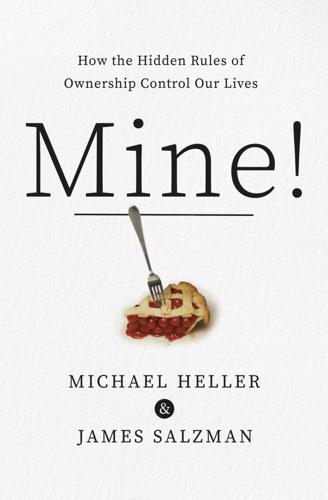
Mine!: How the Hidden Rules of Ownership Control Our Lives
by
Michael A. Heller
and
James Salzman
Published 2 Mar 2021
The rest die, and many more suffer on dialysis, knowing the kidneys they need exist, people are willing to sell them, and insurance would pay (because transplants are so much cheaper than dialysis), but NOTA and similar rules around the world put the organs out of reach. Finally, the idea of carefully designed kidney markets—pushing the dimmer halfway down—is not so fanciful. In 1984, NOTA also banned sales of stem cells, which were then harvested painfully from bone marrow via hip surgery. But today these cells can be easily filtered from your blood. In 2011, one federal appeals court covering nine western states changed the analogy for stem cells, describing them as more like blood plasma, which can be sold, than kidneys, which cannot. But the judges did not push the dimmer all the way up to full sales, either. Potential sellers must join the national donor registry.
…
Payments are capped at $3,000 to limit undue influence on vulnerable potential sellers—a cap like the one doctors tried to impose on egg sales. Using a dimmer to move between the sacred and the profane—between no sales and unrestricted sales—has the potential to save many of the three thousand people who die annually awaiting stem cell transplants. But the only potential sellers are in states like Montana, covered by the 2011 court ruling. Across the border in Wyoming, the dimmer is pushed all the way down. Paying for stem cells remains banned, a crime like selling a kidney. NOTA is not set in stone. The law is less than fifty years old. When Congress passed NOTA, it was concerned “that human body parts should not be viewed as commodities.”
…
There are many good objections to kidney sales—the coercion and dignity objections give us pause—but perhaps smart ownership design can address each concern directly. We can set the ownership dimmer partway up if we choose. If you want to uncover the rules of ownership, there’s no better place to start than by mastering the art of reasoning by analogy and distinction. That’s what the Montana court did with stem cells, and it’s a tool available to all of us in everyday life. Whenever you hear someone reason by analogy—“kidneys are like people”—consider distinctions—“kidneys don’t have identities; they don’t think for themselves.” Persuasive distinctions can make the difference between life and death. Golden Eggs, Revisited Now let’s circle back to Wendy Gerrish and her golden eggs.
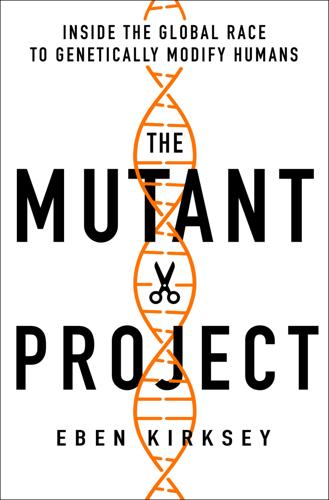
The Mutant Project: Inside the Global Race to Genetically Modify Humans
by
Eben Kirksey
Published 10 Nov 2020
Hurlbut shared my reservations about creating genetically engineered babies, but for very different reasons. As a Christian, with deep convictions about the sanctity of human embryos, Hurlbut was an outlier at the summit. But he did represent an important voting bloc in America, since for religious reasons many people are fundamentally opposed to research on human stem cells and embryos. Even though I do not share his Christian beliefs, I have found his writing compelling. In an essay called “Framing the Future,” Hurlbut suggests that “exaggerated expectations and images of human perfection” have led to imprudence in quickly entering the arena of human enhancement.9 The summit’s organizing committee was meeting behind closed doors a few feet away.
…
Twenty years ago, during the heyday of the original Human Genome Project, renowned biologists were bandying about similar claims. Scientists have largely failed to produce evidence supporting grand theories about genetic determinism. Genes are just a small part of the story about life. Excitement about stem cells, gut microbes, and epigenetics—a new field exploring how genes are regulated—has displaced DNA from center stage in biology. We were standing in the largest DNA repository in the world, she said. Living materials were being stored in live cultures, while a digitization platform transformed their DNA into bits of code: ATCG, for example, was becoming 00011110.
…
It is likely that a large number of genes are involved, each of which makes only a small contribution to a person’s intelligence.”12 While BGI had not yet unraveled the mystery of human intelligence, our guide claimed that the GeneBank would deliver one of the things that George Church had talked about in his keynote lecture: immortality. Careful attention to her words, however, revealed that “immortality” had a slippery shape. The actual promise of eternal life involved giving a sample of yourself to the bank. “We are storing blood, tissues, and stem cells,” she said. “The earlier in life you store your genetic material, the better it is for you,” she added. BGI employees were given the opportunity to preserve their immune cells every year. Everyone working at BGI was also offered a free genome sequencing test. These free offers came with a catch: that your employer could use your DNA and living cells in research
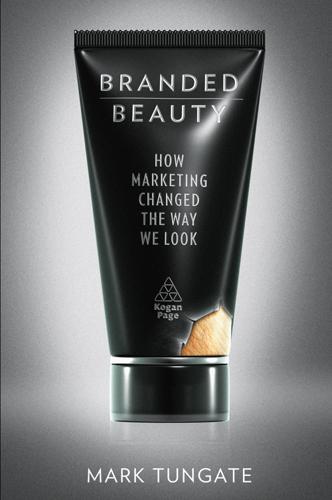
Branded Beauty
by
Mark Tungate
Published 11 Feb 2012
We have 260 researchers, which may seem quite a small number compared to the likes of L’Oréal, but we also work with exterior partners, such as Stanford’s Institute for Stem Cell Biology and Regenerative Medicine.’ Stem cell research has proved fertile terrain for skincare marketers. As stem cells have the power to renew themselves, the theory is that epidermal stem cells should be protected – or even boosted – in order to ensure that they do their job of keeping our skin looking fresh and radiant with maximum efficiency. Such is the thinking behind Dior’s best-selling Capture Totale anti-ageing line, long promoted with advertising images of an apparently ageless Sharon Stone. It defends stem cells with TP Vityl, a topical constituent derived from vitamin E.
…
Beauty companies tend to promote active ingredients with language that reflects their brand DNA. For instance, La Prairie (owned, like Nivea, by Beiersdorf) makes much of its Swiss origins, equating the pure air and snows of its homeland with health and purity. Thus it assures us that its Cellular Power Infusion contains ‘the stem cells of Swiss red grapes and extract of Swiss snow algae’. This somehow explains why it costs almost 500 dollars a pot. Anyway, let’s return to Mauvais-Jarvis. ‘I believe a smaller team with exterior partners is more flexible than an enormous research department that is practically a company within a company,’ he says.
…
So I find someone to ask: a friend of a friend, who works as a product manager at a major beauty company that has already been mentioned in these pages. She spoke on condition of anonymity, but let’s call her Caroline. As we’ve established, skincare trends come and go almost as fast as fashion fads. Plant extracts, antioxidants, peptides, stem cells, bio-electricity: all of them have had their time in the sun. Beauty companies watch one another like hawks to ensure that they don’t miss out on a new active ingredient. ‘You constantly monitor what your competitors are doing,’ confirms Caroline. ‘You want to be sure you’re maintaining your fair share of the market, so you may find yourself launching a product to react to the competition or respond to a success story, but that’s by no means the only impetus.
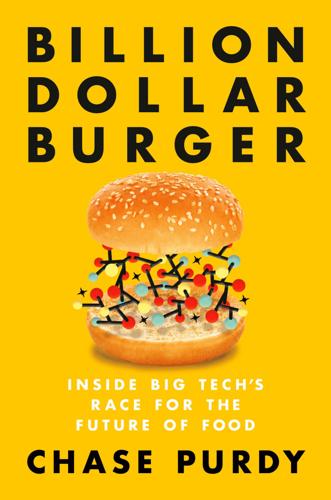
Billion Dollar Burger: Inside Big Tech's Race for the Future of Food
by
Chase Purdy
Published 15 Jun 2020
Avian cells often grow better in cultured settings than mammalian cells do. For starters, it’s easier to tinker with them and get them to do what you want—they have better plasticity. Mammal cells are harder to coax into compliance; source animals must be young because they have healthier muscle stem cells, for instance. By contrast, scientists have learned that muscle stem cells, sometimes even from older birds, are still efficient for proliferation in a laboratory setting. I bring the toast up to my mouth and take a bite, chewing for a moment, savoring—and judging—the pâté’s silky texture and rich aftertaste. My eyes, mouth, and nose instinctively registered what I was eating as meat—but crackling across the buzzing synapses of my brain was only one thought: Cells!
…
“The healthiest cells are going to be from a live biopsy and the healthiest of the healthiest cells are going to be from a biopsy of a very, very young animal,” says Mike Selden, who leads Finless Foods. “Honestly, the grocery store stuff is totally useless because everything there is dead.” The scientists at cell-cultured meat companies identify which cells are stem cells. Whereas ordinary cells have limited utility, stem cells can divide and multiply many times, and they can transform into any of the more than two hundred types of cells that operate within animal bodies. Think of our cells as individuals on a building construction site. Some are assigned to lay cement, some are trained as carpenters, and another might be an electrician.
…
Back in the United States, California-based Memphis Meats CEO Uma Valeti explains that a lot of open questions about cell-cultured meat will be answered as the products near the point at which they’re ready for market. Valeti, already an accomplished cardiologist in his own right, incorporated Memphis Meats in August 2015 after spending a decade thinking about using stem cells to grow meats. “I researched every single thing I could get my hands on,” he told me one sunny afternoon at his company’s headquarters in Berkeley. “I just got more and more convinced, the pieces are all here and we just need to put them together.” From the beginning, he said that gaining consumer trust has been at the top of his mind.
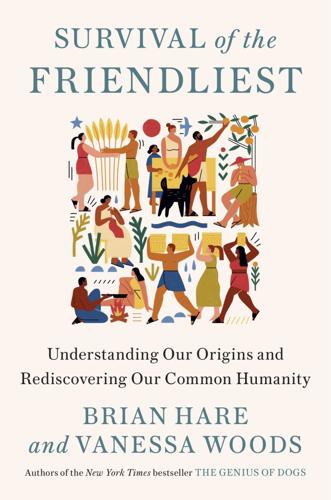
Survival of the Friendliest: Understanding Our Origins and Rediscovering Our Common Humanity
by
Brian Hare
and
Vanessa Woods
Published 13 Jul 2020
In attempting to explain the link between friendliness and the suite of traits that tend to make up the mammalian domestication syndrome, Richard Wrangham and the geneticist Adam Wilkinson became particularly interested in neural crest cells, which play an outsized role in development.23 Neural crest cells appear for a short time in all vertebrate embryos. These cells develop on the back of the neural tube, which eventually becomes the brain and spine. Neural crest cells are stem cells, which means that as the embryo develops, neural crest cells can transform into a variety of cell types. They are also migratory. As the embryo develops, these special stem cells travel all over the body. A set of librarian genes is thought to have powerful sway on which type of cell these stem cells become and when and where they migrate. Migratory neural crest cells play a role in the development of a host of traits associated with the domestication syndrome.
…
For almost every challenge, the Millennium Project proposes solutions involving technology. Climate change causing havoc? Switch to renewable energy and retrofit fossil fuel plants to reuse CO2. Overpopulation bursting the earth at the seams? Build eco-smart cities, grow steak in a petri dish from stem cells, and genetically engineer high-yield drought-resistant crops. Need to make education universal? Develop scalable software for children anywhere in the world to teach themselves reading, writing, and math online in eighteen months flat.76 But as Tim Cook, the CEO of Apple, said, “technology alone isn’t the solution.
…
Yu, “Selective Serotonin Reuptake Inhibitor Exposure Alters Osteoblast Gene Expression and Craniofacial Development in Mice,” Birth Defects Research Part A: Clinical and Molecular Teratology 100, 912–23 (2014). 55. C. Vichier-Guerre, M. Parker, Y. Pomerantz, R. H. Finnell, R. M. Cabrera, “Impact of Selective Serotonin Reuptake Inhibitors on Neural Crest Stem Cell Formation,” Toxicology Letters 281, 20–25 (2017). 56. S. Neubauer, J. J. Hublin, P. Gunz, “The Evolution of Modern Human Brain Shape,” Science Advances 4, eaao5961 (2018), published online EpubJan, 10:1126/sciadv.aao5961. 57. P. Gunz, A. K. Tilot, K. Wittfeld, A. Teumer, C. Y. Shapland, T.

A Generation of Sociopaths: How the Baby Boomers Betrayed America
by
Bruce Cannon Gibney
Published 7 Mar 2017
These bars were ultimately lifted in part by the Obama administration, which helps (though a new, if limply supported, witch hunt by Boomer Congresswoman Marsha Blackburn does not), as did the development of nonembryonic sources.38 While stem cell research is now proceeding well, years were lost—though not by everyone. Even as some states were banning stem cell research, others (e.g., California and New York) saw beyond the nonsense and promoted stem cell research at their own expense, and this is what gives the Right its walk-on role in science history. Over the coming years, we will see the results of a certain rough experiment, comparing New York’s and California’s achievements in biology to whatever is going on in the various places that restrict such research.* It may seem odd to mention the arcane world of stem cells in a chapter about existential issues, but stem cells are existential, at least for individuals.
…
Over the coming years, we will see the results of a certain rough experiment, comparing New York’s and California’s achievements in biology to whatever is going on in the various places that restrict such research.* It may seem odd to mention the arcane world of stem cells in a chapter about existential issues, but stem cells are existential, at least for individuals. If the therapies work, people live longer; if they don’t exist, people die. And stem cells are but one example of potential and serious losses due to underfunded science. The Boomer Left has a much healthier attitude toward R&D, though it has made its own dogmatic mistakes and in its early years was much too skeptical about the net benefits of research.
…
However, the dogmatic Right does occasionally participate in a sort of scientific process, if only by accident, as in the case of stem cells. Researchers discovered the therapeutic potential of these entities but were forced, early on, to rely on fetal tissue as a prime source of material. The Right sensed a chance to score points with the dogmatists, whatever the lost opportunities for wellness. It spun up the whole apparatus of the pro-life movement, and the Bush II administration limited federal funding for embryonic stem cell research. These bars were ultimately lifted in part by the Obama administration, which helps (though a new, if limply supported, witch hunt by Boomer Congresswoman Marsha Blackburn does not), as did the development of nonembryonic sources.38 While stem cell research is now proceeding well, years were lost—though not by everyone.

The Laws of Medicine: Field Notes From an Uncertain Science
by
Siddhartha Mukherjee
Published 12 Oct 2015
He has published articles in Nature, Cell, The New England Journal of Medicine, and The New York Times. In 2015, Mukherjee collaborated with Ken Burns on a six-hour, three-part PBS documentary on the history and future of cancer. Mukherjee’s scientific work concerns cancer and stem cells, and his laboratory is known for the discovery of novel aspects of stem cell biology, including the isolation of stem cells that form bone and cartilage. He lives in New York with his wife and two daughters. Read the book and watch the talk. Siddhartha Mukherjee’s TED Talk, available online: www.TED.com Meet the authors, watch videos and more at: SimonandSchuster.com authors.simonandschuster.com/Siddhartha-Mukherjee WATCH SIDDHARTHA MUKHERJEE’S TED TALK Siddhartha Mukherjee’s TED Talk, available for free at TED.com, is the companion to The Laws of Medicine.
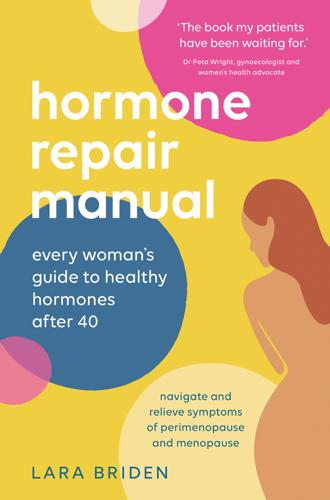
Hormone Repair Manual
by
Lara Briden
Published 14 Apr 2021
That could, of course, change if medicine discovers ways to keep the ovaries switched on for additional years or even decades. Such a scenario is possible because it is looking more likely that ovaries do not run out of eggs but actually contain ovarian stem cells that could, in theory, be stimulated to grow to make new follicles or eggs. It’s a theory that’s been around for a while and has been hotly debated from both sides, with some scientists claiming ovarian stem cells don’t exist and others insisting that it’s only logical that they do. For example, researcher Jonathan Tilly says, ‘There’s no fathomable reason why a woman would have evolved to carry stale eggs around for decades before attempting to get pregnant while men evolved to have fresh sperm always available’.
…
For example, researcher Jonathan Tilly says, ‘There’s no fathomable reason why a woman would have evolved to carry stale eggs around for decades before attempting to get pregnant while men evolved to have fresh sperm always available’. Through my lens as a biologist, I suspect we do have ovarian stem cells. What we do with them, however, is another matter. Our normal physiology is to shut down ovarian function at about the age of 50, and no diet or lifestyle can change that. The only way to reactivate ovarian stem cells will be with technology, such as the PRP (platelet-rich plasma) technology, which is currently under investigation. It uses an isolate of growth factors derived from a person’s own blood serum and has been used by a team of Greek researchers to ‘rejuvenate’ ovaries and restore fertility.
…
It uses an isolate of growth factors derived from a person’s own blood serum and has been used by a team of Greek researchers to ‘rejuvenate’ ovaries and restore fertility. In one study, the treatment was given to thirty women between the ages of 46 and 49, two-thirds of whom went on to restart their menstrual cycles and produce eggs, and one woman to give birth. The other technology under investigation does not involve stem cells but instead freezes the ovarian tissue of a woman when she is young and then reimplants it when she reaches the age of menopause. By doing so, the researchers say, the technique could delay the age of menopause by twenty years. The freezing part of the technique is currently being offered by a fertility clinic in the UK.
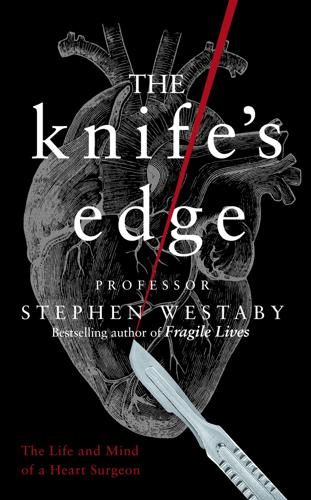
The Knife's Edge
by
Stephen Westaby
Published 14 May 2019
I attracted high-risk cases like a magnet, then revelled in the contest, me versus Grim Reaper. I was repeatedly told that my schemes would never work – that silicone rubber tubes in the windpipe would clog (they didn’t); that pulseless people couldn’t survive (they did); that putting electricity into people’s heads was dangerous (it wasn’t); that injecting stem cells directly into scarred hearts would cause sudden death (not so; we use them to treat heart failure now). Risk-taking is a vital part of medical innovation, and life itself is a risk. If deprived of the opportunity to innovate, cardiac surgery is finished. 4 hubris Through that retrospectoscope I viewed the next stages of my career with deep embarrassment.
…
When allegations of ‘inappropriate process’ and misinformation were used against Safe and Sustainable in court – which we had rechristened ‘Dodgy and Distainable’ – the whole process was discredited and thrown out. As a result, the other threatened centres remain open years later. After our paediatric service was closed down, other children were not as lucky as Oliver. By then I was involved with a number of different and exciting projects, such as the artificial hearts and cardiac stem cells, but I missed the immense satisfaction that comes from saving a child. Who else gets messages like this last line from Nicky’s letter? I know how lucky we were as a family to have had you in our lives for that brief moment of time. Every day for us, every family get together, every Christmas or special occasion is that much happier for what you did.
…
Much of the surgery we did for coronary artery disease has been superseded by coronary stenting under local anaesthetic, often on a day-case basis. When performed during a heart attack, this technique restores blood flow to the dying muscle and if done in time can salvage a significant amount of it. Some of those saved do go on to suffer heart failure, but they might soon receive an injection of stem cells down that catheter too. Even though the results are marginally better with coronary bypass surgery, who would honestly prefer a foot-long incision up the sternum and another in the leg or arm to harvest the graft conduits? Even prosthetic heart valves can now be inserted by a cardiologist. They are rolled on to the end of a catheter, then unfurled forcibly within the diseased valve, an approach that is already routine in older age groups in some European countries.
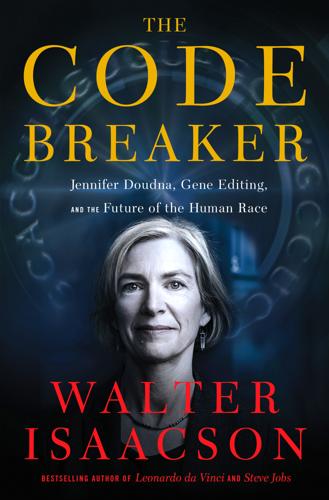
The Code Breaker: Jennifer Doudna, Gene Editing, and the Future of the Human Race
by
Walter Isaacson
Published 9 Mar 2021
“I was collegial and tried to find out who was working in the field to see if they would mind if I did so,” he recalls. An early riser, he dispatched it just after 4 a.m. one day: Jennifer and Emmanuelle, Just a quick note to say how inspiring and helpful is your CRISPR paper in Science. My group is trying to apply some of the lessons from your study to genome engineering in human stem cells. I’m sure that you have received similar appreciative comments from other labs. I look forward to staying in contact as things progress. Best wishes, George Later that day, Doudna wrote back: Hi George, Thanks for your message. We will be very interested to hear how your experiments progress.
…
Haydar Frangoul of the Sarah Cannon Research Institute in Nashville with Victoria Gray CHAPTER 32 Therapies Sickle cell In July 2019, a doctor at a Nashville hospital plunged the needle of a large syringe into the arm of a thirty-four-year-old African American woman from a small town in central Mississippi and infused her with stem cells that had been extracted from her blood and edited using CRISPR-Cas9.They were now being reinserted in an attempt to cure her of the sickle-cell disease that had plagued her with debilitating pain since she was a baby. Thus did Victoria Gray, a mother of four children, become the first person in the United States to be treated with a CRISPR gene-editing tool.
…
Sickle-cell disease afflicts more than four million people worldwide, about 80 percent of them in sub-Saharan Africa, and about ninety thousand people in the U.S., mainly African Americans. The simplicity of the genetic glitch and the severity of the syndrome make it a perfect candidate for gene editing. In the case of Victoria Gray, doctors extracted stem cells from her own blood and edited them, using CRISPR, to activate a gene that produces a type of blood cell that is normally made only during the fetal stage of life. That fetal-stage hemoglobin is healthy, so if the genetic modification works, patients can start producing their own good blood. A few months after she was injected with her edited cells, Gray drove up to the Nashville hospital to see if the therapy was working.
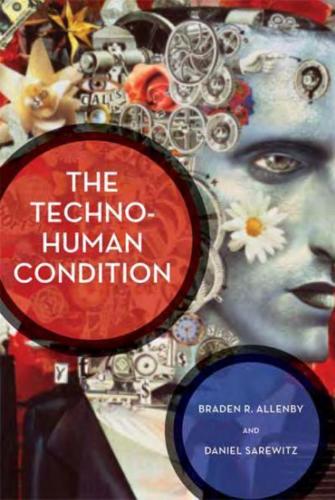
The Techno-Human Condition
by
Braden R. Allenby
and
Daniel R. Sarewitz
Published 15 Feb 2011
(Such a dialectic was absent in the Soviet Union, and the result was Chernobyl.) Embryo research is telling a similar story. Advocates of embryonic stem cell research promise amazing benefits, at this point largely as a matter of faith, imagination, and the need to justify more research funding. Opponents, in their own creative space, see in the instrumental exploitation of embryos a cheapening of the value of life that will undermine civil society. One effect of these ignorance-based disputes has been to stimulate the search for alternative approaches to stem cell research that don't require destruction of the embryo. Option spaces are widening. The organizational challenge is to take these sorts of unbounded and often pathological disputes and mainstream them-move them into the institutions and activities where technological change is created-into laboratories, universities, government offices, corporate boardrooms-while ignorance is still rampant.
…
Even when we did things to enhance our inner capabilities, we did them with external interventions-eyeglasses, education, and the like. Now, we are told, with powerful new genetic technologies on the horizon, with the increasing fusion of human and machine intelligence, and with neuropharmaceuticals, artificial body parts, and stem cell therapies, we are beginning the business of transforming ourselves from the inside out, of exerting explicit and conscious control over our existing selves and our evolving selves in ways that create new opportunities, new challenges, and new ways of thinking about who we are and where we are going.
…
An assumption underlying all these ethical formulations is that decisions about ethics by individuals or by specific political entities are meaningful because they will lead toward the desired consequences. Recent history suggests otherwise: .neither the European Union's strong stance against agricultural genetically modified organisms nor the George W. Bush administration's efforts to limit federal funding of embryonic stem cell research has prevented the rapid advance of the science and technology in question-nor, for that matter, have anti-pirating laws prevented people from illegally downloading or copying software or music. Many technologies, including pharmaceuticals, supersonic air transport, and nuclear power generation, are limited by regulatory actions, but rarely has a society been able to forgo a powerful technological capability unless (as in the case of nuclear power, for example), there was an existing and economically feasible substitute.
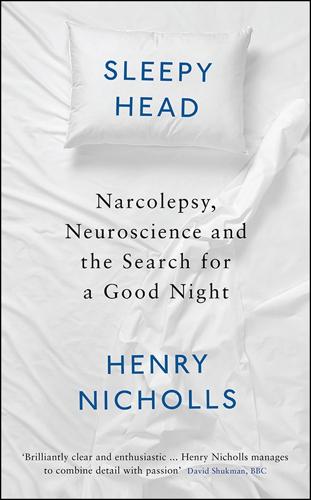
Sleepyhead: Narcolepsy, Neuroscience and the Search for a Good Night
by
Henry Nicholls
Published 1 Mar 2018
Something that tickled up the hypocretins would be useful for any condition where excessive daytime sleepiness is an issue, not to mention the myriad other situations where low levels of these messengers may play a role, including obesity, depression, post-traumatic stress disorder and dementia. Then there is stem cell therapy. Sergiu Paşca has the office next to Emmanuel Mignot at Stanford. He can do clever things with cells, like taking a skin cell, rewinding it to an early developmental stage known as a pluripotent stem cell and then letting it mature into a brain cell. ‘You can use this system to derive various brain regions and like a Lego game assemble them to form circuits in a dish,’ he says. Recently, his lab has succeeded in taking a skin cell from someone with narcolepsy and transforming it into a neuron that manufactures hypocretins.
…
Second, this kind of operation – to insert cells into the brain – is not something to be taken lightly, as there’s always a risk of doing more bad than good. Third, it’s unlikely that a hypocretin neuron would ever grow projections to all the right places. Fourth, it’s possible that the same autoimmune response that took out the hypocretin neurons in the first place could do the same again for the stem cells. The story of narcolepsy and the hypocretins is of still wider significance to the entire field of sleep medicine. Nobody has yet come up with a satisfying neurological explanation for idiopathic hypersomnia or Kleine-Levin Syndrome, for instance. Similarly sleepwalking, sleep talking, REM sleep behaviour disorder, sleep paralysis, restless legs syndrome and periodic limb movement disorder.
…
p. 263 dementia Stephanie Lessig and others, ‘Reduced Hypocretin (Orexin) Levels in Dementia with Lewy Bodies’, Neuroreport, 21.11 (2010), 756–60 <https://doi.org/10.1097/WNR.0b013e32833bfb7c>. p. 263 mature into a brain cell Anca M. Paşca and others, ‘Functional Cortical Neurons and Astrocytes from Human Pluripotent Stem Cells in 3D Culture’, Nature Methods, 12.7 (2015), 671–78 <https://doi.org/10.1038/nmeth.3415>. p. 263 derive various brain regions Sergiu P. Paşca, Correspondence with author, 23 August 2017. p. 265 seasonal fluctuations Shengwen Zhang and others, ‘Lesions of the Suprachiasmatic Nucleus Eliminate the Daily Rhythm of Hypocretin-1 Release’, Sleep, 27.4 (2004), 619–627.
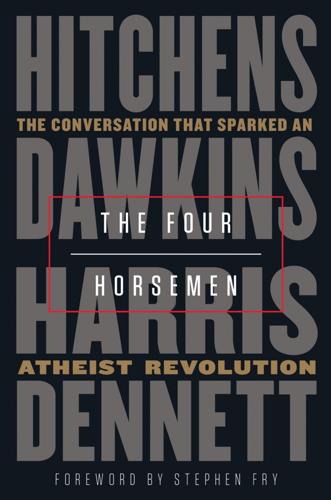
The Four Horsemen
by
Christopher Hitchens
,
Richard Dawkins
,
Sam Harris
and
Daniel Dennett
Published 19 Mar 2019
When your mode of interacting with others and the universe is to affirm truths you’re in no position to affirm, the liabilities of that are potentially infinite. To take a case that I raised a moment ago, stem-cell research, you don’t know in advance that the idea that the soul enters the zygote at the moment of conception will turn out to be a dangerous idea. It seems totally benign, until you invent something like stem-cell research, where it stands in the way of incredibly promising, life-saving research. You can almost never foresee how many lives dogmatism is going to cost, because its conflicts with reality just erupt.
…
A majority of people in the United States clearly agree that the doctrine of martyrdom in Islam is appalling and not at all benign, and liable to get a lot of people killed, and that it is worthy of criticism. Likewise the doctrine that souls live in Petri dishes: even most Christians, 70 per cent of Americans, don’t want to believe that, in light of the promise of embryonic stem-cell research. So it seems to me that once we focus on particulars, we have a real strength in numbers, and yet when we stand on the ramparts of atheism and say it’s all bogus, we lose 90 per cent of our neighbours. DAWKINS: Well, I’m sure that’s right. On the other hand, my concern is actually not so much with the evils of religion as with whether it’s true.
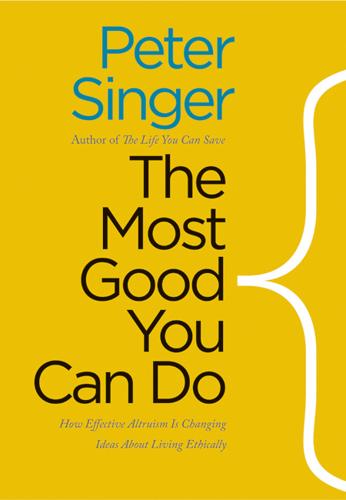
The Most Good You Can Do: How Effective Altruism Is Changing Ideas About Living Ethically
by
Peter Singer
Published 1 Jan 2015
National Marrow Donor Program, and there are about eleven million on donor registries worldwide.5 Bone marrow donation requires anesthesia and leaves the donor feeling sore for a day or two, but there is now an alternative procedure for harvesting stem cells from the blood that does not require anesthesia and in the majority of cases serves the same function as bone marrow donation. Blood, bone marrow, and stem cell donations are relatively simple forms of effective altruism, and as the cells soon regenerate, they can become a regular part of an altruistic life. The donation of a nonregenerative organ has long been regarded very differently.
…
Effective altruists donate to charities that, instead of making an emotional appeal to prospective donors, can demonstrate that they will use donations to save lives and reduce suffering in a way that is highly cost-effective. In order to be able to do more good, effective altruists limit their spending or take a different career path so that they will have more to give or will be more useful in some other way. They may also donate blood, stem cells, bone marrow, or a kidney to a stranger. What motivates them? Obviously it is not conformity to social norms. The people we have met are distinctive precisely because they go beyond—in some cases, far beyond—social norms. Perhaps the first answer that comes to mind is that effective altruists are motivated by the kind of universal love we hear about so often, when people say, “All we need is love” or declare that our fellow humans are our brothers and sisters.
…
See also happiness and well-being Sagan, Agata, (i) “Savings for Change,” (i) Scanlon, Thomas, (i), (ii) Schott, Diana, (i) Science, (i) Scott, Miles, (i) Sethu, Harish, (i), (ii) severe burden, concept of, (i) Shapiro, Jeremy, (i) Sidgwick, Henry, (i), (ii), (iii)n9 SNAP (Supplemental Nutritional Assistance Program), (i), (ii) Sober, Elliott, (i) socialism, (i) Society of Friends (Quakers), (i) Sollicitudo Rei Socialis, (i) speciesism, (i), (ii) Spira, Henry, (i), (ii) State University of New York at Stony Brook, (i) stem cell donation, (i) sugar industry, (i) Superintelligence (Bostrom), (i) Supplemental Nutritional Assistance Program (SNAP), (i), (ii) sustainability, (i), (ii), (iii) Thomas Aquinas, (i) trachoma, (i), (ii), (iii)n7 Transplantation, (i) trolley dilemmas, (i) Tuna, Cari, (i) Turner, Ted, (i) Tzu Chi (Compassionate Relief), (i) UN Consolidated Appeal for the Horn of Africa, (i) UNICEF, (i) United Kingdom: kidney donation, (i); National Institute for Health and Care Excellence (NICE), (i); World War II MI5 rocket deception, (i) United Network for Organ Sharing, (i) United States: poverty in, (i); Rockefeller Philanthropy Advisors list, (i) universal love, (i).
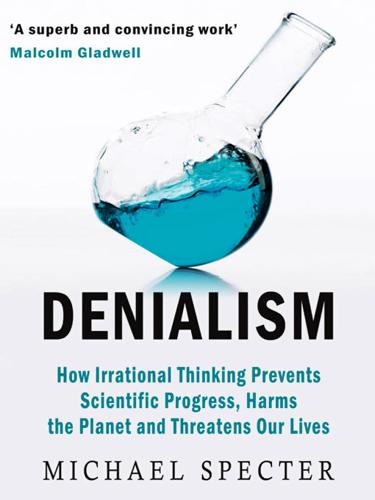
Denialism: How Irrational Thinking Hinders Scientific Progress, Harms the Planet, and Threatens Our Lives
by
Michael Specter
Published 14 Apr 2009
Who doesn’t have a family member with diabetes, Parkinson’s disease, Alzheimer’s, or some form of cancer? When faced with genuine solutions (not just promises) to such terrible fates, few will continue to question the value of stem cell research or cloning. Even Nancy Reagan, whose husband served as commander-in-chief of the American war against legal abortion, became an ardent and vocal supporter of stem cell research after watching him submit to the dark fog of Alzheimer’s disease. We have acquired more knowledge in the past decade than in the previous two centuries. Even bad news soon proves its worth. Look at avian influenza: bird flu may cause a devastating epidemic.
…
Obama has assembled a uniformly gifted team of scientific leaders, and when he speaks publicly about issues like swine flu or HIV, the president routinely makes a point of saying that he will be guided by their advice. That is quite a departure from the attitude of his predecessor, who, in one of his first major initiatives, announced that he would prohibit federal funding for research on new stem cell lines. George W. Bush encouraged schools to teach “intelligent design” as an alternative to the theory of evolution, and he all but ignored the destruction of our physical world. His most remarkable act of denialism, however, was to devote one-third of federal HIV- prevention funds to “abstinence until marriage” programs.
…
At the NIH workshop, Celeste Condit, a professor of speech communication at the University of Georgia, spoke about the way she thought Lahn’s study was framed. “The papers could be seen as having a political message,” Condit told Science magazine: in other words, the research might have implied that those genes contribute to differences in IQ. Lahn, who has since shifted the focus of his work to stem cell research in part because of the controversy, has repeatedly stated he had not meant to suggest that. During the bicentennial celebration of Darwin’s birth, in 2008, the journal Nature invited distinguished scientists to debate whether the subject of race and IQ was even worthy of study. The dispute was lively.

The End of Medicine: How Silicon Valley (And Naked Mice) Will Reboot Your Doctor
by
Andy Kessler
Published 12 Oct 2009
“Four rounds of VAD cocktail, two rounds of DT-PACE, which has thalidomide—” “No plans on getting pregnant any time soon?” I kidded. “—and then two rounds of stem cell transplants. They basically pump your blood through a machine, which pulls out all of your stem cells, like 50 million of them. Then they give you this high dose of melphan, which is like battery acid. It kills all your bone marrow and then they bring you back by reintroducing your own stem cells, which regrows the bone marrow.” “I had no idea,” I said in wonderment. “It’s gone. I get tested every month. $900 in blood tests—how that’s paid for is another nightmare, a keg’s worth of discussion.
…
You need a statin to lower your bad LDL and this new torcetrapib thing or the peptides to increase your HDL. Bingo,” goatee practically shouted. “Match, set, point.” Wow, the cholesterol conspiracy lives on. This drug sounds pretty neat. I just wonder if it reduces heart attacks. At the end of the day, that’s all that really matters. There were the two hedgies again. “Stem cells,” one of them said. “What about ’em?” “You figure out how to invest yet?” “Lobbyists.” “Thought so.” “Look, they may work someday. Rebuild organs. Get the crippled to walk again. Solve Alzheimer’s.” “Yeah?” “But if there was a public company today, I’d short it. There’s plenty of time to see if they really work or not.
…
Simpson, John Sinclair, Bob single base pair differences (SNPs) singularities Site 515 area skin transplants Smalley, Richard smallpox Smartphones smoking Social Security Social Security Amendment (1983) solar activity sonograms Sony Sorrell, Michael Space, Telecommunications and Radioscience Laboratory (STAR Lab) spectroheliograms spectrometers spinal cancer Sputnik launching (1957) standard of living Stanford Linear Accelerator Stanford Radio Propagation Lab Stanford University statins stem cell transplants stenosis stents Stereotaxis stethoscopes Steve (resident) Stewart, Martha stock market stomach-stapling surgery Strandberg, Steve stress tests strokes: costs of incidence of medications as cause of prevention of scanning for survival rate for surgeons surgery: eye heart-bypass insurance coverage for laparoscopic gallbladder micro- noninvasive procedures vs.
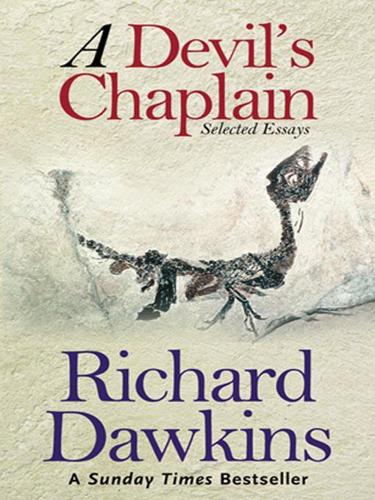
A Devil's Chaplain: Selected Writings
by
Richard Dawkins
Published 1 Jan 2004
It can tell you that, if you want to object to cloning humans, you must not appeal to arguments such as ‘The clone wouldn’t be a full person’ or ‘The clone wouldn’t have a soul’. Science cannot tell you whether anybody has a soul, but it can tell you that, if ordinary identical twins have souls, so do Dolly-style clones.6 You cannot have it both ways. Science cannot tell you whether stem cell cloning for ‘spare parts’ is wrong. But it can challenge you to explain how stem cell cloning differs morally from something that has long been accepted: tissue culture. Tissue culture has been a mainstay of cancer research for decades. The famous HeLa cell line, which originated in the late Henrietta Lacks in 1951, is now being grown in labs all over the world.
…
A typical lab, at the University of California, grows 48 litres of HeLa cells per day, as a routine service to researchers in the university. The total daily worldwide production of HeLa cells must be measured in tons – all a gigantic clone of Henrietta Lacks. In the half century since this mass production began, nobody seems to have objected to it. Those who agitate to stop stem cell research today have to explain why they do not object to the mass cultivation of HeLa cells. You cannot have it both ways. Science cannot tell you whether it is right to kill ‘Mary’ to save her conjoined twin ‘Jodie’ (or whether both twins should be allowed to die).7 But science can tell you that a placenta is a true clone of the baby it nourishes.
…
At present we get away with our flagrant speciesism because the evolutionary intermediates between us and chimpanzees are all extinct. In my contribution to The Great Ape Project I pointed out that the accidental contingency of such extinction should be enough to destroy absolutist valuings of human life above all other life.72 ‘Pro life’, for example, in debates on abortion or stem cell research, always means pro human life, for no sensibly articulated reason. The existence of a living, breathing Lucy in our midst would change, forever, our complacent, human-centred view of morals and politics. Should Lucy pass for human? The absurdity of the question should be self-evident, as in those South African courts which tried to decide whether particular individuals should ‘pass for white’.
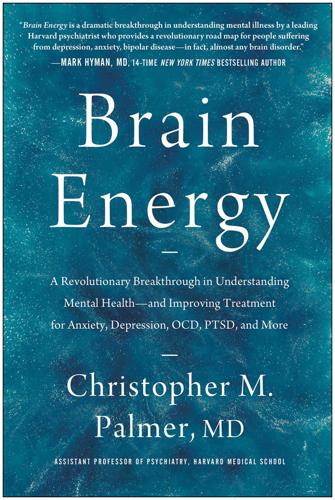
Brain Energy: A Revolutionary Breakthrough in Understanding Mental Health--And Improving Treatment for Anxiety, Depression, OCD, PTSD, and More
by
Christopher M. Palmer Md
Published 15 Nov 2022
The research on exercise for mental illness didn’t factor any of this into their studies. Mitochondria play a direct role in translating exercise into beneficial effects in the brain. When people exercise, one of the benefits is that they usually develop new neurons in the hippocampus from stem cells. This process has been found to be directly related to both mood and cognitive disorders. The growth of these stem cells into new neurons depends upon mitochondria. When researchers genetically manipulated mitochondria to inhibit or enhance their function, the development of these new neurons was inhibited or enhanced, respectively.7 Based on this research, it appears likely that if someone has poor mitochondrial function in this brain region, they may not get the same benefits from exercise that other people get.
…
We also know that the number of mitochondria decreases with many diseases. People who are considered the “fittest” among us—athletic champions—have more mitochondria than most, and their mitochondria appear to be healthier. Mitochondria Are Involved in Cell Growth and Differentiation Cell growth and differentiation is a complicated process during which a generic stem cell becomes a specialized cell. Differentiation means that the cells become different from each other and take on specialized roles. Some become heart cells. Others become brain cells. Within the brain, different cells take on varying roles. Brain cells change throughout life. Some form new synapses.
…
One research group directly demonstrated that mitochondrial dysfunction causes hyperexcitability by deleting a protein in mice, sirtuin 3, known to be essential to mitochondrial health. Sure enough, the mice developed mitochondrial dysfunction, hyperexcitability, and seizures, and they died early deaths.15 Another research group turned stem cells from people with bipolar disorder and healthy controls into neurons and found that the neurons from the people with bipolar disorder had mitochondrial abnormalities and the cells were hyperexcitable.16 Interestingly, lithium reduced this hyperexcitability. Hyperexcitability of neurons has been found in many mental and metabolic disorders.
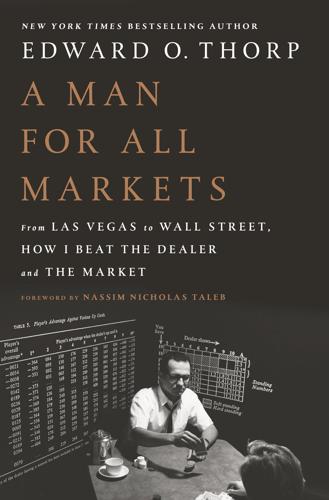
A Man for All Markets
by
Edward O. Thorp
Published 15 Nov 2016
California voters stepped in, approving a $3 billion bond issue to create CIRM, the California Institute for Regenerative Medicine. The purpose was to provide ten years of support for stem cell research freed from the Bush restrictions. CIRM intended to fund five or six centers at university campuses throughout the state, each one of which would eventually get hundreds of millions of dollars. The money would help construct research facilities entirely separate from any federal funding, as well as fund grants for faculty to develop new stem cell treatments for diseases. UCI already had an important group of stem cell experts and was strategically placed in biotech-rich Orange County. However, to qualify, the campus had to complete building the research center in two years, and significant portions of the funding had to come from both the university and private donors.
…
The George W. Bush administration had severely restricted the allowed federal funding of stem cell research. Further, labs doing proscribed research had to be absolutely separate from federally funded facilities. Theoretically, if a pencil paid for by government funds was used for forbidden work, the entire federal grant could and would be revoked. The nation faced a delay in the development of lifesaving therapies, a massive brain drain as our scientists moved overseas to continue their work, and the loss of our lead in stem cell technology. California voters stepped in, approving a $3 billion bond issue to create CIRM, the California Institute for Regenerative Medicine.
…
The Duke senior had become a billionaire known worldwide as William H. Gross, the Bond King. Bill and his wife, Sue, had already donated tens of millions for medical causes, so a group at UCI arranged a lunch meeting with Bill to see if he and Sue would give $10 million and become the lead donors for a new CIRM-subsidized stem cell research center. In the course of the conversation, I mentioned that a $10 million gift would lead to as much as $600 million in the years to come, leveraging their donation sixty times. I saw an instant flash in Bill’s eyes and thought: Bill and Sue must value the chance to make an impact far greater than the value of the amount donated, just as Vivian and I do.
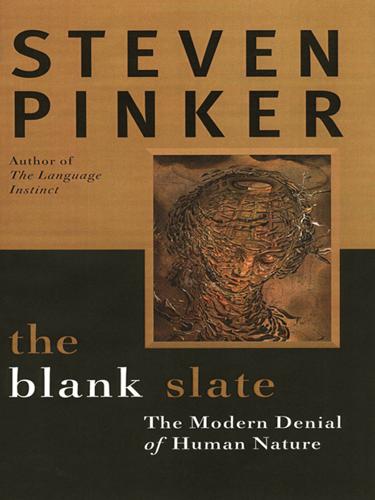
The Blank Slate: The Modern Denial of Human Nature
by
Steven Pinker
Published 1 Jan 2002
Bush announced that the American government will not fund research on human embryonic stem cells if scientists have to destroy new embryos to extract them (the policy permits research on stem-cell lines that were previously extracted from embryos). He derived the policy after consulting not just with scientists but with philosophers and religious thinkers. Many of them framed the moral problem in terms of “ensoulment,” the moment at which the cluster of cells that will grow into a child is endowed with a soul. Some argued that ensoulment occurs at conception, which implies that the blastocyst (the five-day-old ball of cells from which stem cells are taken) is morally equivalent to a person and that destroying it is a form of murder.16 That argument proved decisive, which means that the American policy on perhaps the most promising medical technology of the twenty-first century was decided by pondering the moral issue as it might have been framed centuries before: When does the ghost first enter the machine?
…
As the creationist advocate John West put it, “If human beings (and their beliefs) really are the mindless products of their material existence, then everything that gives meaning to human life—religion, morality, beauty—is revealed to be without objective basis.”30 The other moral doctrine (which is found in some, but not all, Christian denominations) is that the soul enters the body at conception and leaves it at death, thereby defining who is a person with a right to life. The doctrine makes abortion, euthanasia, and the harvesting of stem cells from blastocysts equivalent to murder. It makes humans fundamentally different from animals. And it makes human cloning a violation of the divine order. All this would seem to be threatened by neuroscientists, who say that the self or the soul inheres in neural activity that develops gradually in the brain of an embryo, that can be seen in the brains of animals, and that can break down piecemeal with aging and disease.
…
And since unverifiable beliefs have to be passed along from parents and peers rather than discovered in the world, they differ from group to group and become divisive identity badges. And who says the doctrine of the soul is more humane than the understanding of the mind as a physical organ? I see no dignity in letting people die of hepatitis or be ravaged by Parkinson’s disease when a cure may lie in research on stem cells that religious movements seek to ban because it uses balls of cells that have made the “ontological leap” to “spiritual souls.” Sources of immense misery such as Alzheimer’s disease, major depression, and schizophrenia will be alleviated not by treating thought and emotion as manifestations of an immaterial soul but by treating them as manifestations of physiology and genetics.10 Finally, the doctrine of a soul that outlives the body is anything but righteous, because it necessarily devalues the lives we live on this earth.
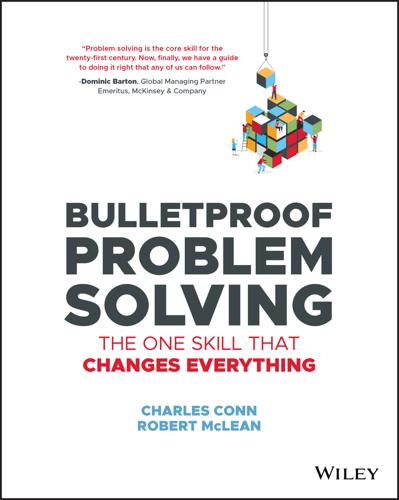
Bulletproof Problem Solving
by
Charles Conn
and
Robert McLean
Published 6 Mar 2019
For Rob's knee arthroscopy, discussed in the next chapter, he framed the hypothesis that he should have surgery now and then set out the supporting analyses. He set a clear threshold for those: that the outcome would be better than doing nothing and that no improved technology solution was imminent. The end product of his analysis was the completed decision tree where he compiled research studies and the latest timing of new treatments such as stem cells for meniscal repair. They porpoise frequently between the hypothesis and data. They are flexible in the face of new data. This means they are ready to cease analysis where it has reached a dead end and start work on promising new lines of inquiry. In the Avahan HIV project in India that we introduced in Chapter 2, the team started with an initial hypothesis that was directionally useful but provided no leverage for action.
…
On the other hand, he learned from the sports medicine specialist of cases of football players with an average age of 22 with knee injuries who were going in for surgery immediately. He had also heard of research suggesting that APMs led to no better outcome than physiotherapy, and that he might be better waiting for stem cell treatments or printable hydrogel menisci, new technologies in development. How would you make this decision faced with so many disparate pieces of information? As in most problem solving you need to gather some facts. In Rob's case, he read a Finnish study in The New England Journal of Medicine that indicated that when there is low discomfort and age‐degenerative meniscal tear, there is no significant improvement from APM compared to physical therapy.
…
The conclusions of the 12‐month follow‐up were that the outcomes for the APM surgery were no better than for the sham APM surgery, notwithstanding that “both groups had significant improvement in primary outcomes.”15 Rob also wanted to assess whether he should wait for a new technology solution to develop, such as stem‐cell treatment or a printable hydrogel meniscus. It turns out that clinical trials are getting underway for articular cartilage but not meniscal repair, so a reasonable conclusion can be drawn that any alternative to an arthroscopy is more than five years away.16 3D printable hydrogel menisci are now getting a lot of interest but he couldn't estimate when they might be an option.17 With the best facts and estimates in hand, things now started to fall into place.

The Transhumanist Reader
by
Max More
and
Natasha Vita-More
Published 4 Mar 2013
The idea of a symbiogenesis is an underlying theme of life expansion,8 in relation to a “biotechnogenesis”9 of emerging and speculative technologies, which form the media of life expansion. The biotechnogenesis media of life expansion for the human and transhuman include biotechnology (genetic engineering, and methods of regenerative medicine, i.e., stem cell cloning and regenerative cells growing organs), nanotechnology (nanomedicine, nanorobotics, and molecular manufacturing) and human–computer interaction, including artificial intelligence (artificial general intelligence), and processes for whole brain emulation. The quintessence of being alive – that element of you, the psyche according to Aristotle, form the biotechnogenesis of matter as they repeatedly collapse and expand into each other.
…
Manipulating these biological processes produces technologies that can directly or indirectly influence human enhancement. Increasingly, researchers are thinking of biological systems as a technology and applying them to address global challenges in the advancement of human development in areas such as stem cell research, cloning, genetic modification, in vitro fertilization, the science of aging, and tissue grafting. Human enhancement can be achieved by direct interventions where the body hosts the technology, such as in the case of neural implants. However, indirect methods in human enhancement are possible, although seldom considered in transhumanist discussions.
…
One can potentially chart paths that transition from Narrow AI to AGI, and this may be a viable way to get to advanced AGI, but it’s certainly not the fastest or easiest way – and it’s different than what would happen if society were to explicitly fund AGI research in a big way. The relatively paltry funding of AGI isn’t just due to its speculative nature – society is currently willing to fund a variety of speculative science and engineering projects: billion-dollar particle accelerators, space exploration, the sequencing of human and animal genomes, stem cell research, and so forth. If these sorts of projects merit Big Science-level funding, why is AGI research left out? After all, the potential benefits should AGI proceed and get done right are obviously tremendous. There are potential dangers too, to be sure – but there are also clear potential dangers of particle physics research (discovering better bombs is arguably a hazardous pursuit), and that doesn’t stop us.
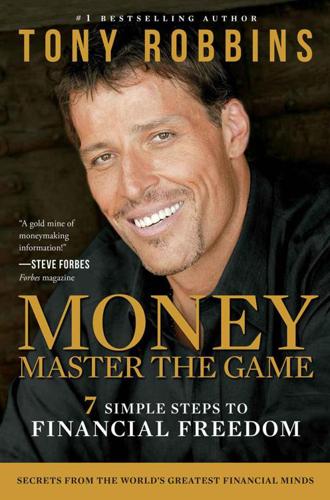
MONEY Master the Game: 7 Simple Steps to Financial Freedom
by
Tony Robbins
Published 18 Nov 2014
These cells are cultured, and before long, a spray gun is gently painting the wounds with a solution of Matt’s own stem cells. Three days later, his arms and face are completely healed. (And this miracle has to be seen to be believed! Go to www.youtube.com/watch?v=eXO_ApjKPaI and see the difference.) There’s barely a scar visible on him. I know it sounds like a scene from a sci-fi film. But it’s a real story that took place in Pittsburgh just a few years ago. While the technique that healed Matt Uram is still in clinical trials in the United States, a similar stem cell procedure has already been used on hundreds of burn victims in Europe and Australia.
…
In the last 15 years, none of the tissues made from stem cells has ever been rejected by the body. He and others are already working on more complex organs, like hearts, kidneys, and livers. So someday, if a heart attack or virus damages your heart valves, your doctors will be able to order you up some new ones. Or maybe they’ll just grow you a new heart from a few of your skin cells! If you have means, some of these miraculous cures are available already. There’s something called “extracellular matrix,” or ECM, made of cells from a pig’s bladder. When you apply it to injured human tissue, the matrix coaxes our own stem cells to regrow muscles, tendons, even bone.
…
The concept behind regenerative therapies is simple: our body already knows how to regrow its parts; we just have to learn how to turn on the stem cells that already live inside us. We already know that when we lose our baby teeth, another set grows in. But did you realize that, according to Dr. Stephen Badylak from the University of Pittsburgh, if a newborn loses a finger, another one can grow in its place up to the age of two? We lose that ability as we grow older, so the question is: How do we stimulate it? Salamanders grow back their tails—why not human limbs or spinal cords? When we figure out how to harness the full power of stem cells, the medical and cosmetic applications are limitless.
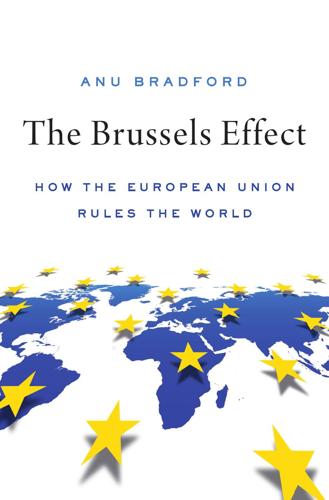
The Brussels Effect: How the European Union Rules the World
by
Anu Bradford
Published 14 Sep 2020
Times (Mar. 15, 2018), https://www.ft.com/content/e38b60ce-27d7-11e8-b27e-cc62a39d57a0 (on file with author); Commission Proposal for a Council Directive on Laying Down Rules Relating to the Corporate Taxation of a Significant Digital Presence, COM (2018) 147 final (Mar. 21, 2018). 172.Case C-34/10, Brüstle v. Greenpeace eV., EUR-Lex62010CJ0034 (Oct. 18, 2011). 173.See Scientists Fear Stem Cell Ruling Deals Blow to EU Research, EurActiv.com (Oct. 19, 2011), https://www.euractiv.com/section/health-consumers/news/scientists-fear-stem-cell-ruling-deals-blow-to-eu-research/ [https://perma.cc/275L-3M9Z]. 174.Mary Beth Warner, ‘German Reasoning Won Out’ in Stem Cell Ruling, Spiegel (Oct. 19, 2011) http://www.spiegel.de/international/the-world-from-berlin-german-reasoning-won-out-in-stem-cell-ruling-a-792721.html [https://perma.cc/E4UB-M2ZR]. 175.Until recently, China received and repurposed approximately 14% of the EU’s paper waste and 20% of the EU’s plastic waste.
…
While most elastic regulatory targets pertain to the regulation of capital markets, other examples can be found elsewhere. For instance, the ECJ’s recent denial of the patentability of embryonic stem cells is unlikely to lead to a global standard.172 Critics claim that the EU’s regulatory stringency only drives stem cell research and business out of the EU, highlighting the elasticity of patent protection and the mobility of the industry relying on patents.173 Stem cell research remains patentable in many parts of the world, including the United States, where critical research activity could easily relocate in response to the EU’s strict regulatory stance.174 Another example comes from the EU’s approach to regulating waste management.
…
Mario Costeja, C-131/12, 75, 134–35 labor standards, 11–12 Spolaore, Enrico, 28 standards and standardization. See also specific topics contracts, benefits, 57, 306n188 leading standard, 54 treaty-driven harmonization and spread, 88–89, 314n115 US accession and adoption, 262, 379n174 Stasi, 136 stem cell research, 52 Stiglitz, Joseph, 249 stock market regulation, 49–50 Strategy for the Protection and Welfare of Animals, 209 stringent regulations, xvii–xviii, 25–26, 37–41 Brexit, 287 case studies, 95–96 China, 287 domestic preference, 37 EU preference vs. US, 37 fundamentals, 37 ideology: markets vs. government, 38–39 preference heterogeneity on, 46 process: administrative rule making preference and precaution tendency, 38–39, 41 wealthy countries, 37 Substances of Very High Concern (SVHCs), 193–94, 197–98, 255, 256, 377n139 supremacy, doctrine of, Costa/Enel, 75–76 Sustainable Fishing Partnership Agreements (SFPAs), 71–72 swaps, 50 Szpunar, AG, 146–47 Taiwan animal welfare, 226 food safety, 189–90 hazardous substances and electronic waste, 215, 222, 223–24 REACH, 199–200 Tatham, Alan, 81 tax Common Consolidated Corporate Tax Base, 46 corporate, harmonization, 46 digital, 51–52 technical non-divisibility, 57 data privacy, 142–43 technology revolution.

Bold: How to Go Big, Create Wealth and Impact the World
by
Peter H. Diamandis
and
Steven Kotler
Published 3 Feb 2015
In fact, along just these lines, in March of 2013, I joined forces with genetics wizard Dr. J. Craig Venter and stem-cell pioneer Dr. Robert Hariri to found perhaps my boldest venture ever: Human Longevity, Inc. (HLI).61 Venter, who serves as CEO, described HLI’s mission as “using the combined power of genomics, infinite computing, machine learning, and stem cell therapies to tackle one of the greatest medical, scientific, and societal challenges—aging and aging-related diseases.” Hariri, who pioneered the use of placental-derived stem cells, goes on to say: “Our goal is to help all of us live a longer and healthier life. By reenergizing our stem cells, the regenerative engine of our bodies, we can maintain our mobility, cognition, and aesthetics long into our later years.”
…
Part of the reason for this velocity is that the company sits at the intersection of many of the exponential technologies discussed in this chapter: robotics, which enables lightning-fast sequencing; AI and machine learning, which can make sense of petabytes of raw genomic data; cloud computing and networks for transmitting, handling, and storing that data; and synthetic biology for correcting and rewriting the corrupted genome of our aging stem cells. Couple that with the incredible value proposition of abundant, longer, and healthier lives—there is over $50 trillion locked up in the bank accounts of people over the age of sixty-five—and you understand the potential. And understanding this potential is critical if you’re going to succeed as an exponential entrepreneur.

A New History of the Future in 100 Objects: A Fiction
by
Adrian Hon
Published 5 Oct 2020
But you need a backstop, and that’s the 500 Project. Oh, and the work we do highlights the importance and joy that revived species can bring and that helps everyone in the conservation community.” She doesn’t mention the spin-offs. Maybe she’s tired. Two years ago, the Project worked out how to reliably make induced pluripotent stem cells—reprogrammed adult cells that can differentiate into specialized cells—from fibroblast cell cultures. They use them to create germ cells for the de-extinction process, but the same technique can also help increase genetic variability among highly endangered species. Sometimes the help travels the other way: cellular reprogramming and phenotypic simulation tools developed by the conservation community gave the Project a vital breakthrough in devising optimal surrogate chains.
…
Now, if I left it at that and provided only the necessary nutrient bath, your burger would basically be an unsightly blob of animal cells. I imagine that’s not the sort of thing you’d enjoy eating, so I needed to encourage the formation of blood vessels and arteries so that the tissue would turn into muscles that are, well, tastier and look better. Those muscles were stimulated electrically, and I made sure that the stem cells worked right. Well, I could go on, but I won’t. Anyway, if you know exactly how to do it and you have the right tools, it’s easy enough to make cloned meat. But the pioneers had to work it all out from scratch and make their own tools. Compared to the usual way of obtaining meat by rearing and killing animals, it must have been incredibly frustrating!
…
Shortly after she was born in 2034, Xu suffered a severe ventral pontine stroke from an accidental house fire following the unrest of the USTC crash. The stroke caused total locked-in syndrome, leaving her unable to control any voluntary muscles in her body, including her eyes. The severity of her condition led to Xu being selected for an experimental suite of treatments in Hong Kong that included neuromuscular electrical patches, neural stem cell therapy—and a then-cutting-edge neural lace, as seen on this brain scan from around her third birthday. The lace was a crude but effective version of the ones we still use today, and, like our own, it read Xu’s brain activity and gave her basic control over her muscles. During those years of constant treatment, Xu developed an affinity for music.
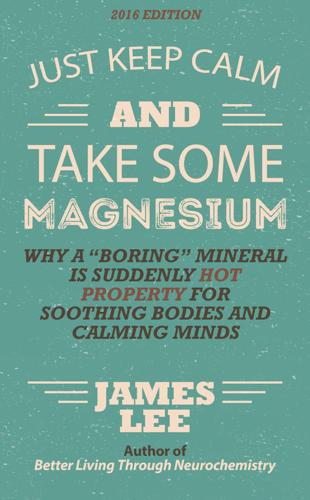
Just Keep Calm & Take Some Magnesium - Why a "Boring" Mineral Is Suddenly Hot Property for Soothing Bodies and Calming Minds
by
James Lee
Published 10 Feb 2014
You will be quite the popular one. There is also considerable excitement regarding SIRT3, another sirtuin which is central to the process of mitochondrial function and the generation of stem cells. Researchers from the University of California, Berkeley, found that by up-regulating SIRT3 activity (which usually declines with age), they could reverse some of the markers of aging. Most importantly, increasing SIRT3 activity improves the ability of hematopoietic stem cells to regenerate. The researchers unambiguously said that “aging-associated degeneration can be reversed by a sirtuin”. A commercially available drug that targets either SIRT1 or SIRT3 is a while away, however sirtuin-related therapy appears to be one of the most promising areas of current research into delaying or reversing the aging process.

Scotland’s Jesus: The Only Officially Non-Racist Comedian
by
Frankie Boyle
Published 23 Oct 2013
I had some caterpillars, and a month or so later the prospect of eating more insects filled me with a mix of excitement and nervous anticipation that there is sadly no expression for. A Dutch lab has created beef from stem cells. It sounds frivolous, but making burgers like this might be the only way to get most American voters to ever accept stem-cell research. The researchers produced a mince-like substance, although by all accounts it takes just a simple tweak to make sausages, by swapping the beaker for a test tube. It’s highly significant news for the UK, as by 2020 the demand for talent-show contestants is predicted to be so high it’ll be impossible to generate enough naturally. Stem cells could cure cancer, diabetes, autism and Alzheimer’s. I like the attitude of any scientist who thinks, ‘Fuck that.
…
I like the attitude of any scientist who thinks, ‘Fuck that. Get those stem cells in a bun and find me a pickle.’ A hundred years from now scientists will come up with a solution to the problems of producing beef in a laboratory when someone discovers that dead cow meat makes an almost convincing substitute. A man has been given a face transplant and regained his sense of smell. Which isn’t the best time for that to return, considering all he can smell is the smoky barbecue wafts of a dead man’s flesh that’s been soldered on to his own skull. Another guy had the world’s first successful hand transplant.
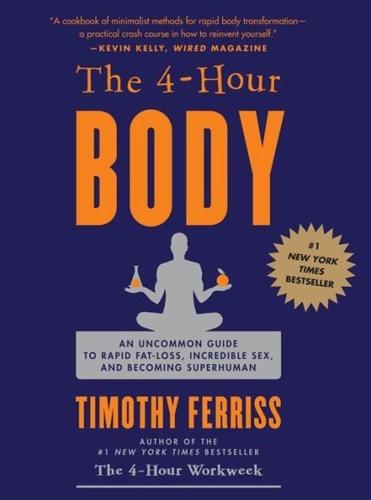
The 4-Hour Body: An Uncommon Guide to Rapid Fat-Loss, Incredible Sex, and Becoming Superhuman
by
Timothy Ferriss
Published 1 Dec 2010
Platelets are packed with growth and healing factors and are part of the body’s normal tissue repair system. The PRP is prepared using a special centrifuge after whole blood is drawn from your arm, similar to getting blood drawn for lab work. Making platelet-rich plasma. PRP formed the base to which the following were added: Stem cell factor (SCF), flown in from Israel, which assists in blood cell production. Bone morphogenic protein 7 (BMP-7), which helps adult stem cells (mesenchymal) develop into bone and cartilage. In retrospect, I believe this to be the most dangerous substance in all of the cocktails I tried. Insulin-like growth factor 1 (IGF-1) IGF-1 has anabolic (tissue-building) effects in adults and is produced in the liver after stimulation by growth hormone.
…
The wider world thinks I’m obsessed with time management, but they haven’t seen the other—much more legitimate, much more ridiculous—obsession. I’ve recorded almost every workout I’ve done since age 18. I’ve had more than 1,000 blood tests1 performed since 2004, sometimes as often as every two weeks, tracking everything from complete lipid panels, insulin, and hemoglobin A1c, to IGF-1 and free testosterone. I’ve had stem cell growth factors imported from Israel to reverse “permanent” injuries, and I’ve flown to rural tea farmers in China to discuss Pu-Erh tea’s effects on fat-loss. All said and done, I’ve spent more than $250,000 on testing and tweaking over the last decade. Just as some people have avant-garde furniture or artwork to decorate their homes, I have pulse oximeters, ultrasound machines, and medical devices for measuring everything from galvanic skin response to REM sleep.
…
There are at least two distinct types: white adipose tissue (WAT) and brown adipose tissue (BAT). WAT is what we usually think of as fat, like the marbling on a steak. A WAT cell—an adipocyte—is composed of a single large fat droplet with a single nucleus. BAT, in contrast, is sometimes referred to as “fat-burning fat” and appears to be derived from the same stem cells as muscle tissue. A BAT cell is composed of multiple droplets that are brown in color because of a much higher volume of iron-containing mitochondria. Normally associated with muscle tissue, mitochondria are best known for producing ATP and oxidizing fat in muscle tissue. BAT helps dissipate excess calories as heat.

This Will Make You Smarter: 150 New Scientific Concepts to Improve Your Thinking
by
John Brockman
Published 14 Feb 2012
Socially, the act of expressing uncertainty is a display of weakness. But our lives are awash in uncertainty, and rational consideration of contingencies and likelihoods is the only sound basis for good decisions. As another example, a federal judge recently issued an injunction blocking stem-cell research funding. The probability that stem-cell research will quickly lead to life-saving medicine is low, but if successful, the positive effects could be huge. If one considers outcomes and approximates the probabilities, the conclusion is that the judge’s decision destroyed the lives of thousands of people, based on probabilistic expectation.
…
And of course it is technology that matters here, because technology is where the rubber hits the road—where science and the real world meet and must communicate effectively. Examples of failure in this regard abound—so much so that they are hardly worthy of enumeration. Whether it be swine flu, bird flu, GM crops, or stem cells, the public debate departs so starkly from the scientist’s comfort zone that it is hard not to sympathize with the errors scientists make, such as letting nuclear transfer be called “cloning,” which end up holding critical research fields back for years. One particular aspect of this problem stands out in its potential for public self-harm, however: risk aversion.
…
That judge didn’t actually cause thousands of people to die . . . or did he? If we follow the “many worlds” interpretation of quantum physics—the most direct interpretation of its mathematical description—then our universe is continually branching into all possible contingencies: There is a world in which stem-cell research saves millions of lives and another world in which people die because of the judge’s decision. Using the “frequentist” method of calculating probability, we have to add the probabilities of the worlds in which an event occurs to obtain the probability of that event. Quantum mechanics dictates that the world we experience will happen according to this probability—the likelihood of the event.
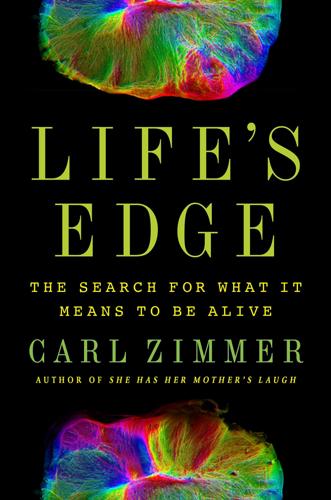
Life's Edge: The Search for What It Means to Be Alive
by
Carl Zimmer
Published 9 Mar 2021
This futile condition was, Goulon once said, “a new, previously undescribed, state.” At a conference in 1959, he and Mollaret gave it a name: coma dépassé, beyond a coma. Modern medicine was now challenging the familiar boundaries of death, just as it has changed how we think about birth. The beginning of life was once out of our control, until stem cell biologists learned how to turn an ordinary skin cell into an embryo, one that might potentially become a human being or something new like a brain organoid. There was a time when death was likewise inevitable if Bichat’s vital tripod lost one of its three legs. Now artificial ventilation undermined Bichat’s law, giving rise to a new kind of life.
…
“A Physicist’s Renewed Look at Biology: Twenty Years Later.” Science 168:1312–15. Desmond, Adrian J. 1999. Huxley: From Devil’s Disciple to Evolution’s High Priest. New York: Basic Books. Devolder, Katrien, and John Harris. 2007. “The Ambiguity of the Embryo: Ethical Inconsistency in the Human Embryonic Stem Cell Debate.” Metaphilosophy 38:153–69. Diamond, Jared. 1994. “Dining with the Snakes.” Discover, January 18. https://www.discovermagazine.com/the-sciences/dining-with-the-snakes (accessed June 8, 2020). Dick, Steven J., and James E. Strick. 2004. The Living Universe: NASA and the Development of Astrobiology.
…
“Beyond Abortion: The Implications of Human Life Amendments.” Journal of Social Philosophy 43:140–60. Marchetto, Maria C. N., Cassiano Carromeu, Allan Acab, Diana Yu, Gene W. Yeo, Yangling Mu, Gong Chen et al. 2010. “A Model for Neural Development and Treatment of Rett Syndrome Using Human Induced Pluripotent Stem Cells.” Cell 143:527–39. Mariscal, Carlos, Ana Barahona, Nathanael Aubert-Kato, Arsev U. Aydinoglu, Stuart Bartlett, María L. Cárdenas, Kuhan Chandru et al. 2019. “Hidden Concepts in the History and Philosophy of Origins-of-Life Studies: A Workshop Report.” Origins of Life and Evolution of the Biosphere 49:111–45.
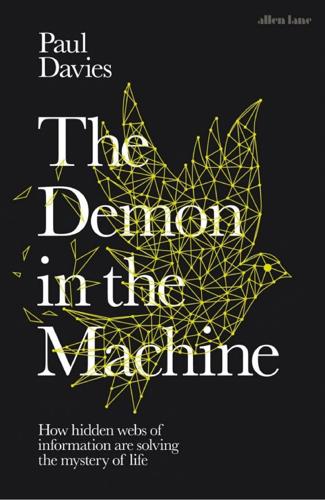
The Demon in the Machine: How Hidden Webs of Information Are Finally Solving the Mystery of Life
by
Paul Davies
Published 31 Jan 2019
Cells in a Petri dish will happily divide if they are treated well and receive nutrients, but division will stop if the cells become claustrophobic, such as when the colony pushes up against a boundary and the population becomes overcrowded. Cancer cells turn off contact inhibition. They also undergo drastic changes in their shape and stiffness when they leave the primary tumour and spread around the body. Another example: when a stem cell is placed next to a hard surface, it will express different genes than when embedded in soft tissue, affecting the type of cell it differentiates into, a phenomenon of obvious importance to embryogenesis. There is a popular aphorism in the cancer research community: ‘What a cell touches determines what a cell does.’
…
A typical skin cell, for example, can divide – between fifty and seventy times. When a given somatic cell reaches its use-by datefn6 it either goes dormant (a state called senescence) or commits suicide (apoptosis). That does not spell the end of the organ, because replacement cells of the same type are made by stem cells. But eventually the replacement process also wears out and the whole body dies, leaving the germ-line progeny, if any, to carry the genetic heritage into the future. Fig. 13. Cancer across the tree of life. Why would any cell in its right mind sign up for a multicelled existence that involves a short burst of replication followed by suicide?
…
Michael Levin, ‘The wisdom of the body: future techniques and approaches to morphogenetic fields in regenerative medicine, developmental biology and cancer’, Regenerative Medicine, 6 (6), 667–73 (2011). 7. Ibid. 8. Recent experiments have demonstrated that a whole range of genes may be activated according to the shape of the cells’ surroundings. This was demonstrated by incarcerating human stem cells in tiny cylinders, cubes, triangles, and so on. See Min Bao et al., ‘3D microniches reveal the importance of cell size and shape’, Nature Communications, vol. 18, 1962 (2017). 9. S. Sarker et al., ‘Discovery of spaceflight-regulated virulence mechanisms in salmonella and other microbial pathogens’, Gravitational and Space Biology, 23 (2), 75–8 (August 2010). 10.

The Rise and Fall of American Growth: The U.S. Standard of Living Since the Civil War (The Princeton Economic History of the Western World)
by
Robert J. Gordon
Published 12 Jan 2016
Another area that holds promise but that has had little mainstream effect to date is stem cell therapy. As a regenerative therapy, the field of stem cell transplantation provides a ray of hope in today’s age of chronic, degenerative diseases. However, though stem cell therapy has been practiced since the late 1980s for bone marrow transplants,76 its practical application has thus far failed to extend far beyond that. The very prevalence of the phrase “stem cell research,” compared to the relative absence of the phrase “stem cell therapy,” attests to the therapy’s limited practical implementation: In 2008, according to Google’s Ngram Viewer, the first phrase was used eleven times more often than the second in a sample of more than 5 million books.77 Skeptical investors have been hesitant to throw their support behind further research and development.
…
Jeffrey O’Brien writes, “Long time horizons, regulatory hurdles, huge R&D costs, public sentiment, and political headwinds have all scared financiers. Wall Street isn’t interested in financing this particular dream.”78 In short, the realization of the stem cell therapy dream appears to lie relatively far in the future. Today, though bright ideas and human ingenuity abound—as exemplified by the concepts of genomic medicine and stem cell therapy—translation into practical, clinical applications are relatively rare. Part of this discrepancy stems from the ever-increasing costs of developing new medical innovations. As we noted in figure 14–2, new drug approvals have stagnated since the 1960s.
…
By several estimates, the value of reduced mortality, particularly of infants, was as great as the value of all the growth over the same period in market-purchased goods and services. Predictions of future economic progress from our current vantage point place major emphasis on continuing advances made possible by medical research, including the decoding of the genome and research using stem cells. It is often assumed that medical advances have moved at a faster pace since the invention of antibiotics in the 1930s and 1940s, the development from the 1970s of techniques of radiation and chemotherapy to fight cancer, and the advent of electronic devices such as the CT and MRI scans to improve diagnoses of many diseases.
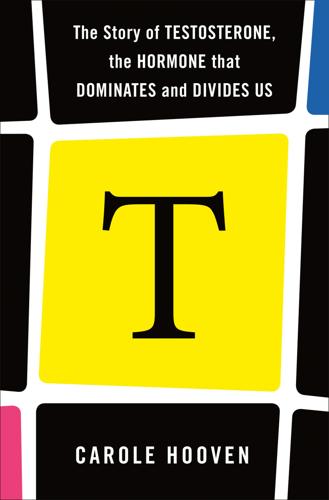
T: The Story of Testosterone, the Hormone That Dominates and Divides Us
by
Carole Hooven
Published 12 Jul 2021
You can make any of hundreds of cookie recipes, but your friend has put in a request for chocolate chip. You turn to the appropriate page, read the recipe, gather the ingredients, mix and bake them, and you and your friend enjoy the warm, chewy, chocolaty treats. When Jenny was a ball of dividing cells in the womb, and then a mass of growing and differentiating tissues, her versatile stem cells could become a number of different cell types. Just as I can choose a recipe to follow to make a particular type of cookie, the cells in growing embryos choose to “read” specific genes to make proteins, forming various cell types such as muscle cells, red blood cells, nerve cells, and more. The forty-six chromosomes in each of our cells contain the whole human “genome”—all of our DNA (deoxyribonucleic acid).
…
This kind of cell specialization is particularly important in growing embryos, when every new cell must eventually differentiate and decide its fate. What will it become? Which genes—which stretches of DNA—should be kept ready and available, and which should be packed tightly away? By adulthood most of our cells have already differentiated (a tiny minority of stem cells remains). Each of our cells retains all our DNA—the whole genome—yet produces proteins from only a small selection of genes. Inside the cells in women’s facial skin, the recipe for making dark, thick hair is crumpled up in the back of the shelf—so most women have only a little bit of it on their face.
…
Genes can be transcribed and translated into proteins at different rates. If protein production rises, the gene expression is said to be “upregulated,” and if it’s reduced, the gene expression is “downregulated.” THE BIPOTENTIAL GONAD When embryonic Jenny was just beginning to develop inside her mother’s womb, her stem cells received the usual instructions for what they should become—liver, nerve, bone, skin, etc. They received and followed directions about which genes to upregulate and which to ignore—so the usual proteins were produced that cause the cells to differentiate into the tissues necessary to build a human.
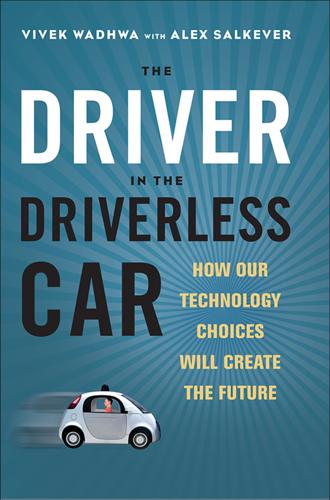
The Driver in the Driverless Car: How Our Technology Choices Will Create the Future
by
Vivek Wadhwa
and
Alex Salkever
Published 2 Apr 2017
The new era of precision medicine and granular understanding of the interplay of all genetic material and environmental stimuli has enlivened quests for extreme longevity. Google, for example, has launched Calico, a new company focusing on radical life extension; and Craig Venter is one of the cofounders of a company called Human Longevity, which is working on extending the healthy human lifespan through genomics-based stem-cell therapies that mitigate the diseases of aging. Venter’s company is sequencing hundreds of thousands of genomes and incorporating data from functional-MRI scans that capture views of and data from processes inside a living human body in order to match genetic processes with in vivo biological ones.
…
Adding the blood vessels necessary to feed the tissues or organs that metabolize or process nutrients and toxins remains elusive; that could be decades away. But, within the next decade, any relatively simple structure that you might need replaced—heart valve, bone, ear, or nose—will likely be grown using a mixture of bio-ink and, to minimize risk of rejection, your own stem cells. There are now nearly a dozen companies working toward bioprinting real body materials; and industrial design giants such as Autodesk, led by its visionary CEO, Carl Bass, are researching the fabrication of biological materials through additive printing. Of course, we will need doctors and surgeons to do all this; it is not like printing and installing a spare part in your car.
…
Nanomaterials are of particular interest in this regard; for example, researchers are studying bone regeneration with nanostructured calcium phosphate biomaterials. The calcium phosphate acts as scaffolding and mimics crystallographic properties of inorganic components of bone. Early findings have shown that these nanostructured materials, when combined with stem cells, can accelerate bone regeneration. Alongside better-than-human materials will come sensor systems with miniature electronics that turn our bodies into minutely measured machinery. In August 2013, the United States Patent and Trademark Office issued Endotronix a patent for its wireless sensor reader for continuous monitoring of pulmonary-artery pressure.
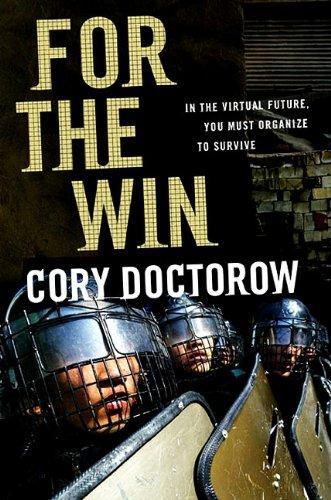
For the Win
by
Cory Doctorow
Published 11 May 2010
Most of them originated on one of his printers, after all. Plus, it was the gentlemanly thing to do. “What have we here?” he said as he pulled up alongside her. She was trying on a bracelet of odd, bony beads. “Ectopic fetuses,” she said. “You know, like the Christian fundies use for stem-cell research? You quicken an unfertilized egg in vitro and you get a little ball of fur and bone and skin and stem-cells. It can never be a human, so it has no soul, so it’s not murder to harvest them.” The vendor, a Turkish teenager with a luxurious mustache, nodded. “Every bead made from naturally occurring foetus-bones.” He handed one to Perry. It was dry and fragile in his hand.
…
The clinic was in St Petersburg, Russia, in a neighborhood filled with Russian dentists who catered to American health tourists who didn’t want to pay US prices for crowns. The treatment hadn’t originated there: The electromuscular stimulation and chemical therapy for skin-tightening was standard for rich new mothers in Hollywood who wanted to get rid of pregnancy bellies. The appetite-suppressing hormones had been used in the Mexican pharma industry for years. Stem-cells had been an effective substitute for steroids when it came to building muscle in professional athletic circles the world round. Genomic therapy using genes cribbed from hummingbirds boosted metabolism so that the body burned 10,000 calories a day sitting still. But the St Petersburg clinic had ripped, mixed and burned these different procedures to make a single, holistic treatment that had dropped Lester from 400 to 175 pounds in ten weeks.
…
She’d have to get someone to run her up a blue blazer and a white shirt and a decent skirt. It would be nice to get back into grown-up clothes after a couple years’ worth of Florida casual. She’d see Geoff after dinner that night, get more detail for the story. There was something big here in the medical tourism angle—not just weight loss but gene therapy, too, and voodoo stem-cell stuff and advanced prostheses and even some crazy performance enhancement stuff that had kept Russia out of the past Olympics. She typed her story notes and answered the phone calls. One special call she returned once she was sitting in her room, relaxed, with a cup of coffee from the in-room coffee-maker.
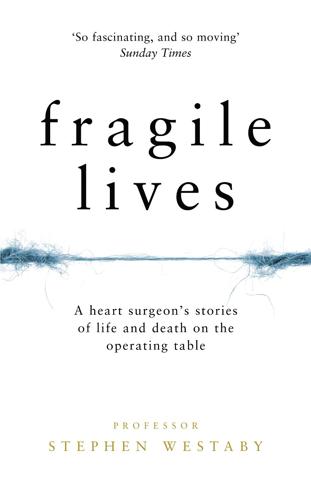
Fragile Lives: A Heart Surgeon’s Stories of Life and Death on the Operating Table
by
Stephen Westaby
Published 9 Feb 2017
Remarkably, all other scar tissue had disappeared. The whole inner lining of her left ventricle had been pure white scar tissue – now all gone. This provided some of the first evidence that an infant’s own cardiac stem cells can regenerate heart muscle and actually remove fibrous tissue. Adult hearts cannot recover in the same way. But what if we could identify and culture stem cells that could do just this for an adult heart? Could it provide a solution for the hundreds of thousands of adult chronic heart failure patients with coronary artery disease? My grandfather was someone who might have benefited.
…
I could no longer grasp the instruments without dropping some of them and I couldn’t shake hands without people thinking I was a member of some secret society. At that point I conceded that my operating days were over. I’d never get back to complex surgery. Instead my focus would be on our new stem cell research and the ventricular assist device we were developing – plenty to engage with but different, research with the potential to change millions of lives. Just a few weeks later I quietly disappeared from the hospital and had my right hand operated on. Normally my plastic surgery colleagues would have done it using a regional nerve block with me awake, but they didn’t want the interference.
…
Under the corporate banner ‘Calon CardioTechnology’ we now have an implantable British ventricular assist device to compete with the American pumps, all of which cost the same as a Ferrari! Stuart McConchie, past chief executive of the HeartWare Company and Jarvik Heart, came to help us with that. The Welsh connection put me in contact with the Nobel Prize-winner Professor Sir Martin Evans of Cardiff University, who first isolated foetal stem cells. With his colleague Ajan Reginald and the company Celixir he has worked on a heart-specific cell for regenerative medicine. With pumps and cells we aim to create a definitive alternative to heart transplantation. Despite a degree in biochemistry and a PhD in the bioengineering of mechanical hearts I’m a computer-illiterate technophobe who’s unable to perform the simplest repair on a car.

2312
by
Kim Stanley Robinson
Published 22 May 2012
Some qube architecture is based on bird brains, so it got discussed for a while.” “I didn’t know.” “Well, the thinking that we mammals do in layers of cells across our cortex, birds do in clusters of cells, distributed like bunches of grapes.” “I didn’t know that.” “So you can take some of your own stem cells and introduce skylark song node DNA into them, and then you can introduce it through the nose to the brain, and it makes a little cluster in the limbic system. Then when you whistle, the cluster links into your already existing musical networks. All those are very old parts. They’re almost like bird parts of the brain already.
…
Hormonal treatments begun at puberty or during adulthood also have positive effects on longevity, but the psychological set will be hormonal treatments support the surgical addition of a functioning uterus in the abdominal wall above the penis alteration of the clitoris into a small functioning penis, with testicles grown using either conserved Wolffian ducts or stem cells from the subject. Gynandromorphs can ordinarily father only daughters, as the construction of a Y chromosome from an X chromosome involves problematic females adding functional reproductive masculinity are helped by a process imitating a natural 5-alpha-reductase deficiency principal categories of self-image for gender include feminine, masculine, androgynous, gynandromorphous, hermaphroditic, ambisexual, bisexual, intersex, neuter, eunuch, nonsexual, undifferentiated, gay, lesbian, queer, invert, homosexual, polymorphous, poly, labile, berdache, hijra, two-spirit, cultures deemphasizing gender are sometimes referred to as ursuline cultures, origin of term unknown, perhaps referring to the difficulty there can be in determining the gender of bears KIRAN ON VENUS The moment Kiran was alone with Shukra, Shukra said to him, “We’re going to have to put you through some tests, my boy.”
…
Extracts (13) certain metabolic actions accumulate lifetime damage, and each kind of damage has to be treated individually, and the treatments coordinated with each other as well as with the ordinary functioning of the organism cell loss or atrophy is ameliorated by exercise, growth factors, and directed stem cells cancerous mutations are identified by massively parallel DNA sequencing and transcriptome sequencing and dissolved by targeted gene therapies and telomerase manipulation; chemo and radiation therapies are now highly targeted, using monoclonal antibodies, avimers and designed proteins death-resistant cells that are senescent in their function must not be allowed to transform into harmful forms, but must rather be targeted by suicide genes and immune response undamaged mitochondria are introduced into cells suffering mitochondrial mutations lipofuscin is one kind of accumulated junk inside our cells that can’t be carried away by the immune system.
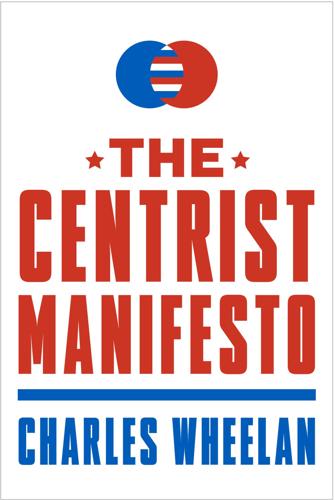
The Centrist Manifesto
by
Charles Wheelan
Published 18 Apr 2013
Wall Street Journal political columnist (and longtime Washington observer) Alan Murray spoke for many of us when he lamented, “I’m not interested in a Democratic Party that lets labor unions turn it away from free trade, or lets teachers unions block any semblance of education reform, or lets trial lawyers stand in the way of common sense class-action reform. But I’m also not interested in a Republican Party that is pushed by the National Rifle Association to give gun makers extraordinary protection from lawsuits, or is forced by extreme religious groups to ban stem-cell research that could save countless lives, or believes the worthiest recipients of tax relief are the heirs of the wealthy.”18 More and more voters are describing themselves as independent.19 But independents define themselves primarily by what they are not, namely, Republicans or Democrats. The challenge is organizing this discontent into a meaningful and positive political force.
…
Here is the fundamental insight: reasonable people disagree about whether or not abortion should be illegal; but no reasonable person thinks that abortion is a good thing. Reasonable people disagree about how readily guns should be available and what the requirements for purchase ought to be; but no reasonable person wants guns to fall into the hands of criminals or those who are dangerously mentally ill. There are plenty of other social issues: drug policy, stem cell research, flag burning, the death penalty, and so on. In time, the Centrist Party will have to wrestle with them all. For now, abortion and guns will do a fine job of illustrating how the Centrist Party can bring people together on issues that normally drive them apart. The key to diffusing these ideologically charged social issues is refocusing them on two more pragmatic questions: 1) What is the real harm to society associated with this activity?

Days of Fire: Bush and Cheney in the White House
by
Peter Baker
Published 21 Oct 2013
The president did,” said Dean McGrath, Cheney’s deputy chief of staff. “This afforded the vice president a little more freedom.” IN THE EARLY months of the administration, perhaps the toughest issue Bush faced was stem-cell research. For months, he struggled with whether federal money should be used to target the ravages of diseases like Alzheimer’s and Parkinson’s by experimenting on stem cells from embryos grown in a laboratory. No one was talking about banning such research altogether, only whether taxpayer money should pay for it. The tension between Bush’s antiabortion convictions and the prospect of saving or improving the lives of millions weighed on him.
…
“We have got to be really cautious,” Bush responded, “because it is like stepping off a cliff. If you step off a cliff and you have made a mistake, by the time you realize it, you are at the bottom.” Andy Card set aside thirty-minute blocks of time for Bush to meet with ethicists and scientists. Doug Melton, a leading stem-cell researcher from Harvard University, told Bush that embryos were not alive, and while he agreed they should not “be treated cavalierly,” he believed the research could make a world of difference to real people. He mentioned that his son suffered from juvenile diabetes. “I’m committed to doing everything I can to help my son,” Melton told Bush.
…
On the other hand, I believe technologies and science will help solve many medical problems, and I have great hope for cures.” His guests sympathized. But unlike Melton, Kass viewed frozen embryos as living human beings, even if at a very early stage of development. “We at least owe them the respect not to manipulate them for our own purposes,” he told Bush. But what about existing lines of stem cells from embryos that had already been destroyed? Kass found no ethical compunction about that since “you are not necessarily complicit in their destruction,” provided that Bush make clear he opposed such destruction and would not reward it in the future. Maybe Bush had found the middle ground he was seeking.
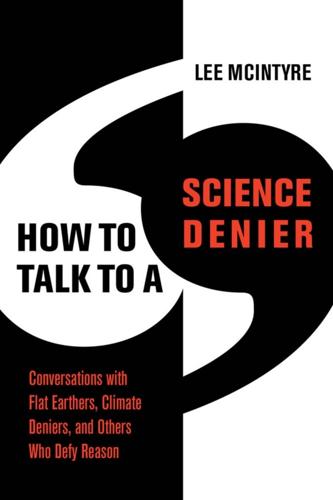
How to Talk to a Science Denier: Conversations With Flat Earthers, Climate Deniers, and Others Who Defy Reason
by
Lee McIntyre
Published 14 Sep 2021
This perverse phenomenon was deemed the “backfire effect,” whereby some partisans not only refused to give up their original beliefs but held onto them more strongly once they were challenged. When the time came to provide corrective information to the “liberal” belief—that Bush had imposed a total ban on all stem cell research (whereas in fact he had imposed a limited ban only on federally funded research on stem cell lines created before August 2001, with no ban on private research)—the correction worked for conservatives and moderates, but not for liberals. Notably in this case, however, researchers found no backfire effect. Although the corrective information did not convince liberals to give up their mistaken belief, it did not cause them to hold it more strongly.
…
But all of this optimism was thrown into doubt by a landmark 2010 study published by Brendan Nyhan and Jason Reifler entitled “When Corrections Fail: The Persistence of Political Misperceptions,” which proposed something popularly known as the “backfire effect.”11 Here, the experimental design involved exposing political partisans to corrective information that would challenge their false beliefs. For conservatives, it was the idea that Iraq had weapons of mass destruction (WMDs) before the Iraq War. For liberals, it was the idea that President George W. Bush had imposed a total ban on all stem cell research. Both of these claims are factually false. All participants were initially primed with bogus newspaper articles that seemed to corroborate these false beliefs. This was done to provide both liberals and conservatives with reason to think that the claims were true. But when later presented with credible corrective information—for instance, a quotation from a speech that Bush had given, in which he admitted that there had been no WMDs in Iraq—results broke down upon partisan lines.
…
See also Rebuttal techniques School shooting conspiracies, 12, 18, 22–23, 37 Science comprehension thesis (SCT), 50, 51 Science denial belief formation and, 49, 66, 71, 120, 204n9 cafeteria skepticism and, 38, 44, 50 cherry-picking evidence, 33, 35–36, 199n28, 200n37 conspiracy theories and, 33, 36–40, 198n20 disinformation campaigns, 68–72, 73, 106, 174, 181, 205n20 evidence rejection, 204n77 five-tropes script and, 34–35, 41, 45–46, 55–56, 90–91, 160, 163, 184 illogical reasoning, 33, 42–43 insistence that science must be perfect, 33, 43–45 liberal science denial and, 224n15, 225n18, 225n19, 226n22, 226n25, 226n26 motivational roots of, 45–47 outsize impact of, 78 partisanship and, 121–125 post-truth and, xi, 49, 161, 179–180 psychological roots of, 39, 47–55 reasoning errors, xii, 33–34 reliance on fake experts, 33, 40–42 skepticism vs. denial, xvi, 85, 89, 126, 181 use of term, 33–34, 202n53 “Science of Why We Don’t Believe in Science, The” (Mooney), 123–124 Scientific attitude, xv–xvi, 9, 17, 34, 197n4, 197n7, 207n33 Scientific Attitude, The (McIntyre), xv, xvi, 9, 17, 34, 197n4, 207n33 Scientific reasoning concept of warrant and, 50, 89, 137, 154, 197n4 conspiracy theories and, 37–38, 198n14 Seeds of Science (Lynas), 129–131 Séralini, Gilles-Éric, 133 Shermer, Michael, xiv, 66–67, 122–123, 139–140, 205n21, 223n5, 224n14 Skepticism anti-vaxxers and, 74, 124–125, 138 cafeteria skepticism and, 38, 44, 50 climate change denial and, 50–51, 92, 129 conspiracy theories and, 38, 44, 50 Flat Earthers and, 4, 18 GMOs and, 135–138, 153–154 partisanship and, 122 skepticism vs. denial, xvi, 85, 89, 126, 181 Skiba, Robert, 6–8, 18, 29, 41, 192n15 Skin cream experiment (Kahan), 51 Social factors belief change and, 66, 67, 72, 120, 204n9 belief formation and, 49, 66, 71, 120, 204n9 Social media amplification of misinformation and, 77–78 anti-vaxxers and, 168–169 COVID-19 denial and, 168–169 disinformation and, 77–78, 168–169 Facebook and, 168, 169, 173, 242n33 Flat Earthers and, 168–169 misinformation and, 77–78 Russian propaganda campaigns and, 161–162, 174, 184–185, 188 Twitter, 168, 169 YouTube, 4, 27, 168, 169 Socolow, Robert, 82 Spectrum of persuadability, 70, 77 Stem cell research, 63 Strategies for changing minds. See also Belief conversion; Face-to-face engagement circle of concern, 118, 119, 120, 180, 185–186 content rebuttal, xii–xiii, xv, 30–31, 68, 71, 73, 174, 181 moral framing and, 119 no response as, 68 personal engagement, xv, 62, 67, 70, 72–73, 79–80, 120, 171, 173 pre-bunking vs. debunking, xiii, 71, 206n30, 207n31 technique rebuttal, xiii, xv, 68–72, 73, 106, 174, 181, 206n30 values and, 114–115 Superior mirage effect, 7–8, 20, 195n38 Technique rebuttal, 68–72, 73, 106, 174, 181, 206n30 Tobacco companies, 11–12, 36, 46–47, 86, 86–87, 179, 201n45 Trivers, Robert, 201n47 Trump, Donald, xv, 38, 83–84 Trust belief formation and, 71 reliance on fake experts and, 40, 41–42 Truth about Denial, The (Bardon), 207n35 “Twenty Years of Failure” (Greenpeace), 131–132 Twitter, 168, 169 Urquiza, Kristin, 174 van der Linden, Sander, xiii, 71, 172, 206n30, 207n31 Wakefield, Andrew, 74, 74–75, 133, 138, 208n43, 231n63 Wallace, Alfred Russel, 11, 193n24 Warrant, concept of conspiracy theories and, 13 scientific reasoning and, 34, 50, 89, 137, 154, 197n4 use of term, 12, 13, 34, 43–44 Warzel, Charlie, 175–178 Weapons of mass destruction, 63 Welfare spending, 59–60, 204n4 West, Mick, 71, 198n11 “When Corrections Fail” (Nyhan and Reifler), 62–63, 64–66, 67 When Prophecy Fails (Festinger), v, 67, 194n34, 205n20 White supremacist movements, 75–76, 209n50 Whole Foods Market, 123, 139–140, 143–144, 147 Wood, Thomas, 36–37, 64, 68 Zimmerman, Maggie Kendall, 85
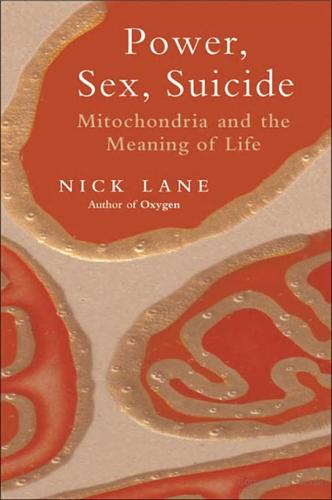
Power, Sex, Suicide: Mitochondria and the Meaning of Life
by
Nick Lane
Published 14 Oct 2005
In contrast, if the mutation made the mitochondrion more alacritous in its response to an equivalent signal, we would expect to see an expansion of its DNA. At every signal to divide, the mutant mitochondria would leap into action, and so would eventually displace the ‘normal’ mitochondria from the population. And if the mutation occurred in a stem cell (which gives rise to Demise of the Self-Correcting Machine 293 replacement cells in a tissue) the mutants would be more likely to be passed on every time the stem cell divided, and so would finally take over the entire tissue. It’s important to note that such mutations are most likely to stage a tissue takeover if they’re not particularly detrimental to mitochondrial function. This is likely to be true, as there is nothing the matter with the respiratory complexes themselves.
…
There are parallels with ageing here. We don’t inherit all of our defective mitochondria from the egg cell: some accumulate in adult life, due to free radicals formed by normal metabolism. This generates a mixed population of mitochondria in the cells affected. What happens next depends on the type of cell. If the cell is an adult stem cell (responsible for regenerating tissue), a possible outcome would be the clonal expansion of defective mitochondria. This happens in some muscle fibres, producing the ‘ragged red fibres’ characteristic of mitochondrial diseases, but also found in ‘normal’ ageing. Conversely, if the mutation affected a long-lived cell no longer capable of division, such as a heart-muscle cell or a neurone, then the mutation could not spread beyond the bounds of that single cell.
…
Our neurones, for example, are usually as old as we are ourselves: they are rarely, if ever, replaced, yet their function doesn’t spiral out of control in an error catastrophe, but rather declines imperceptibly. What isn’t possible though, is any return to the fountain of youth. While the most devastating mitochondrial mutations can be eliminated from cells, there is no way of restoring their pristine function, short of not using the mitochondria at all (which is how egg cells, and to a degree adult stem cells, do reset their clocks). The more a cell relies on defective mitochondria, the more oxidizing the intra-cellular conditions become (oxidizing means a tendency to steal electrons). When I say ‘oxidizing’, however, I don’t mean the cell loses control of its internal environment. It retains control by adapting its behaviour, establishing a new status quo.
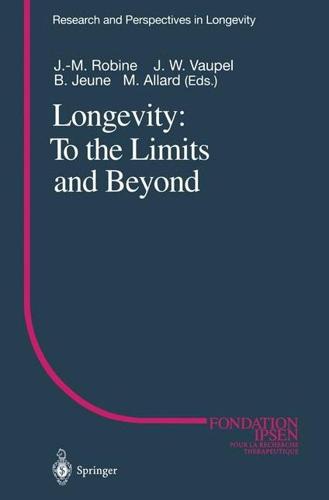
Longevity: To the Limits and Beyond (Research and Perspectives in Longevity)
by
Jean-Marie Robine
,
James W. Vaupel
,
Bernard Jeune
and
Michel Allard
Published 2 Jan 1997
Matsui Y, Zsebo K, Hogan BML (l992) Derivation of pluripotential embryonic stem cells from murine primordial germ cells in culture. Cell 70:841-847 Nelson JF, Felicio LS (l986) Radical ovarian resection advances the onset of persistent vaginal cornification but only transiently disrupts hypothalamic-pituitary regulation of cyclicity in C57BL/6J mice. BioI Reprod 35:957-964 Paganini-Hill A, Henderson VW (1994) Estrogen deficiency and risk of Alzheimer disease. Am J Epidemiol 140:256-261 Pesce M, Farrace MZ, Piacentini M, Dolci S, De Felici M (1993) Stem cell factor and leukemia inhibitory factor promote primordial germ cell survival by suppressing programmed cell death (apoptosis).
…
With the many studies of neuron number that are ongoing, we may anticipate a brain map that gives the quantitative variations in different neuron populations and the thresholds of neuron loss during age-related neurological disease that are associated with different degrees of functional change. Some populations of neurons may prove to be strongly linked to life expectancy. Similar questions can be posed for the immune system, which depends on clonally lineages of cells that are derived from obscurely enumerated stem cells. A possible consequence is variations between individuals in immune responses at later ages that could be a determinant of resistance to infection or the proclivities to autoimmune disease. Thus it is likely that organ systems differ widely during aging between individuals in the stochastically determined numbers of cells above critical thresholds for irreversible loss of function that influence morbidity and mortality.
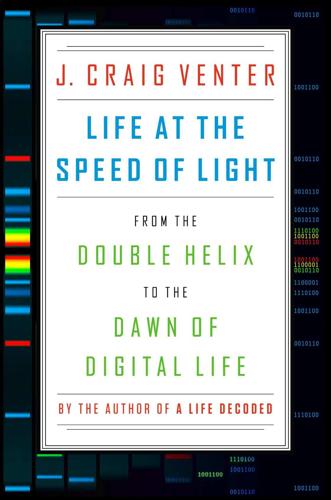
Life at the Speed of Light: From the Double Helix to the Dawn of Digital Life
by
J. Craig Venter
Published 16 Oct 2013
They have created novel zinc-finger designs that are intended to bind with new target sequences.27 The Boston team has engineered new circuits in yeast, a eukaryote, using modular, functional parts from the eukaryotes themselves and “wiring” them up with the help of zinc fingers.28 There are many immediate applications of this work, such as helping to develop stem cells for regenerative medicine, and in-cell devices and circuits for diagnosing early stages of cancer and other diseases. This method may also equip groups of cells to perform higher-order computational tasks for processing signals in the environment in sensing applications. Efforts by others are under way to extend and modify the existing genetic code, to code for new amino acids that don’t exist in nature.
…
I can envisage that, in the coming decades, we will witness many extraordinary developments of tangible value, such as crops that are resistant to drought, that can tolerate disease and thrive in barren environments, that provide rich new sources of protein and other nutrients, that can be harnessed for water purification in harsh and arid regions. I can imagine designing simple animal forms that provide novel sources of nutrients and pharmaceuticals, customizing human stem cells to regenerate a damaged, old, or sick body. There will be new ways to enhance the human body as well, such as boosting intelligence, adapting it to new environments such as the radiation levels encountered in space, rejuvenating worn-out muscles, and so on. Let’s keep our focus on the global problems that are affecting humanity.
…
This device has a number of names at present, including “digital biological converter,” “biological teleporter,” and—the preference of former Wired editor in chief Chris Anderson—“life replicator.” Creating life at the speed of light is part of a new industrial revolution that will see manufacturing shift away from the centralized factories of the past to a distributed, domestic manufacturing future, thanks to 3-D printers. This technology is already being used to assemble embryonic stem cells into tissues, grow bones, and to build planes or even entire buildings by “concrete printing.” Why stock warehouses with parts when entire designs can now be stored in virtual computer warehouses waiting to be printed locally and on demand? We might one day get to a point where individuals can make all the products they want, from door handles to smartphones, including the next generation of 3-D printer.
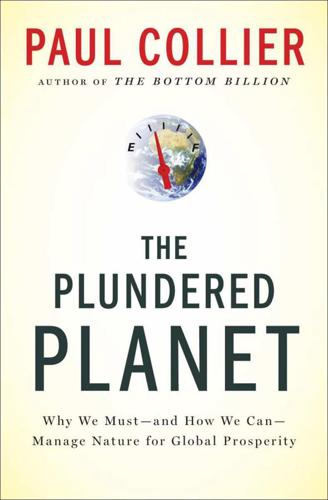
The Plundered Planet: Why We Must--And How We Can--Manage Nature for Global Prosperity
by
Paul Collier
Published 10 May 2010
By 1821 the French-German Enlightenment philosopher Baron d’Holbach was writing, “Man is only unhappy because he does not understand nature.” If only we could get back to nature we could get off the psychiatrist’s couch.The more prosperity has distanced us from nature, the more we have demanded that governments protect it from science. And the more emotive the issue involved the more it is apparent, as with stem-cell research and genetically modified food. Agriculture, as the economic activity that most directly impinges on nature, has borne the brunt of these sentiments. But the misunderstandings of ordinary citizens offer fertile opportunities for special interests. Regulation not only protects, it redistributes.
…
The development NGOs, dedicated as they are to the eradication of poverty, also reflect the environmental concerns of the wealthy countries that fund them. Their attitude to a local farming economy can therefore border on the schizophrenic: they want both change and preservation. The victims of today’s curtailment of stem-cell research are tomorrow’s incurables. But the victims of the anti-science, pro-peasant regulation of agriculture are today’s poor. Curtailing technology and discouraging the commercialization of African agriculture have tended to increase the price of food, and food is the main item of expenditure for poor households.
…
See also fisheries self-sufficiency, 213–14 September 11 terrorist attacks, 129 service activities, 180, 185 Shirky, Clay, 234–35, 239 Sierra Leone and capital goods, 149 and construction, 147–48 and diamonds, 37, 165 and oil, 126 prospecting in, 69 territorial waters of, 163 signature bonuses, 90, 91, 110 Singer, Peter, 24 slum dwellers, xiii smallholder agriculture, 214–15 smuggling, 89 social ownership, 160, 161 social value, 179 solar power, 181, 182, 194 Soludo, Chukwuma, 234 Somalia, 163–64 South Africa, 64, 75, 224 South America, 66 Southern hemisphere, 209 South Korea, 218 sovereignty issues, 239 Soviet Union, 49 special-interest lobby groups, 135 Spence, Michael, 111, 138, 233, 234 Stability Pact, 238 Standing Advisory Committee on Trunk Road Assessment, 137 Starved for Science (Paarlberg), 220 stem-cell research, 8 Stern, Nicholas, x, 9, 26, 140, 186, 202 Stern Review of the Economics of Climate Change, 9, 140 stewardship, 32–33 Stiglitz, Joe, 5 structures, 131, 148 stunting, 211 subsidies, 164, 208, 223–24 subsistence agriculture, 213, 217 subsoil assets, 20, 64–68. See also specific assets, including coal and oil Sudan, 122, 218 sustainability and economic growth, 98 and extinction, 154, 161 and fisheries, 154, 161, 164, 168–71 of nonrenewable natural assets, 98, 100–102, 154 and Permanent Income, 103 and preservation of nature, 98 of renewable natural assets, 154, 155, 156, 161 Tanzania, 166 taxation and asymmetric information, 88–90 of carbon emissions, 185–88, 192, 198, 199, 241 and corruption, 51–52, 88 in decision chain, 127 excess-profits tax, 88–89 and extraction revenues, 84 of fisheries, 169–70 in low-income countries, 100 low-tax commitments, 85–87, 117 pan-European tax, 27 redistributive taxation, 24, 27, 28, 168 and rents and rent-seeking, 52, 88–89, 127, 143 and time-inconsistency, 85 and volatility in revenues, 117 technology and bottom billion countries, 5 and democratic power, 235 and discovery process, 68 fickleness of, 5 and fishing, 164–65 and modern agriculture, 216–17 and nature, 4 and ocean floors, 167 and oil demand, 106, 194 and prosperity, 4 and resource scarcity, 229 territorial waters, 162, 167 terrorism, 129–30 “Testing the Neo-con Agenda” (Collier and Hoeffer), 49 Thailand, 135 threshold effects, 60 tidal power, 181, 182 timber in Thailand, 135 time-inconsistency, 71–74, 85 Toxic Assets Recovery Program, 176 trade trade negotiations, 237 trade restrictions, 193, 194 trade wars, 237 tragedy of the commons, 161 transparency, 80–82, 94, 122–25, 129–30 Transparency International, 129 trees and custody principle, 157–59 of Eritrea, 158–59 of Haiti, 19 as natural assets, 160 See also forests Ukraine, 218 uncertainty, 18–19 unilateralism, 238 United Arab Emirates, 218 United Nations, 168–71, 218, 238, 240 United Nations Food and Agriculture Organization (FAO), 215, 216 United Nations Industrial Development Organization, 184 United Nations Security Council, 238 United States anti-Americanism, 220, 225 and carbon emissions, 189–90, 195 and finders-keepers rule of assets, 46 and social cost of energy, 183 United States Congress, 176–77, 193 universalism, 24, 26, 27–28, 29, 31 urbanization, 209, 211, 217–18 Utilitarianism about, 23–25 and climate change, 200–201 and custody principle, 112 as ethical framework, 10, 25, 26 limitations of, 27 and Permanent Income, 102–3 and universalism, 24, 26, 27–28, 29, 31 value of natural assets, 83–84 vehicles, 182–83 Venables, Tony, xiv, 59, 111, 139 veto points, 135–36 violence and food crises, 211 Wall Street Journal, 128–29 Warnholz, Jean-Louis, 132 Welsh National Party, 30 West, American, 19, 21 West Africa, 94 wind power, 181, 182 worker productivity, 139 World Bank and Cameron, 81 Doing Business survey, 145 and ethanol subsidies, 224 evaluation of development projects, 141–42 and prospecting aid, 76 and subsoil assets, 20, 54, 65, 66 and Zambia, 87 world financial markets, 117, 128 World Food Programme, 170–71, 210–11 world interest rate, 104, 155 World Trade Organization, 164, 193, 219, 237 Wrong, Michaela, 159 Yamani, Ahmed Zaki, 106 Zambia and agriculture, 209 and copper mining, 5, 32, 64, 143 and private investment, 143 prospecting in, 76 and state-owned copper company, 93 and taxation, 86–87, 89 Zedillo, Ernesto, 6, 233–34 Zeufack, Albert, 81, 82 Zimbabwe, 199, 218

Fully Automated Luxury Communism
by
Aaron Bastani
Published 10 Jun 2019
Underpinned by the same technologies of the Third Disruption, defined by declining costs of information and exponential progress in digital technology, it is no coincidence that cellular agriculture arrived at around the same time as genome sequencing, consumer AI and autonomous vehicles. Ultimately it will mean a world where producing meat, leather, milk and eggs no longer requires animals. Post’s approach is easy to grasp if not to execute. First you remove a small sample of muscle from an animal before isolating stem cell tissue which can be scaled in a bioreactor. You then proceed to warm it while feeding those cells with oxygen, sugar and minerals. After between nine and twenty-one days, the developed cells – which have grown into skeletal muscle – are harvested. At present this approach can’t work with all meats, especially those whose composition is highly complex and contains additional fats.
…
But it didn’t stop there: a year earlier Post, now at Mosa Meats, had already claimed the process he initially pioneered could produce beef in a laboratory for $80 a kilo, meaning that a burger using cultured meat could cost as little as $12 – a more than 99 per cent fall in cost from just four years earlier. And all in the absence of truly industrial-scale production. That isn’t to say there aren’t major hurdles to commercially viable steaks that don’t require cows. For one thing the material in which the stem cells currently grow is foetal calf serum. Using animal products to feed ‘synthetic’ animal tissue defeats the whole point, although those at the forefront of the industry claim a vegan alternative isn’t far away. The other major issue is energy – specifically for synthetic mammal meat like pork, beef and chicken.
…
Post’s personal view is that synthetic meat will be competitive on price within twenty years. The truth is that the power of the experience curve could mean it’s even sooner. Meat from Vegetables Cellular agriculture extends beyond just synthetic meat, however. Indeed, farming minced meat, fillets and breasts from stem cells remains incredibly time-consuming – at least for now – and while these products could be mainstream within a generation, for some that isn’t soon enough. Which is why Impossible Foods have chosen a different approach in trying to create vegan products that are indistinguishable from meat. But rather than ‘grow’ meat proteins, they think they can do that by making non-meat proteins more closely resemble those found in animals.
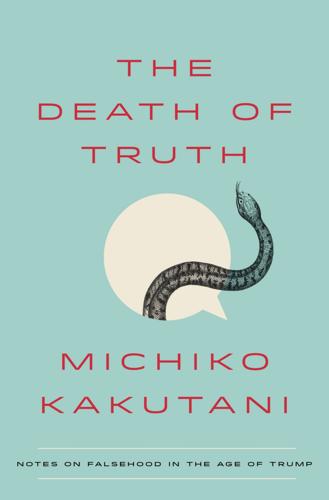
The Death of Truth: Notes on Falsehood in the Age of Trump
by
Michiko Kakutani
Published 17 Jul 2018
Facebook, Twitter, YouTube, and many other sites use algorithms to personalize the information you see—information customized on the basis of earlier data they’ve collected about you. “With Google personalized for everyone,” the internet activist Eli Pariser wrote in his book, The Filter Bubble, “the query ‘stem cells’ might produce diametrically opposed results for scientists who support stem cell research and activists who oppose it. ‘Proof of climate change’ might turn up different results for an environmental activist and an oil company executive. In polls, a huge majority of us assume search engines are unbiased. But that may be just because they’re increasingly biased to share our own views.

As the Future Catches You: How Genomics & Other Forces Are Changing Your Work, Health & Wealth
by
Juan Enriquez
Published 15 Feb 2001
A cute rhesus monkey called ANDi (inserted DNA … spelled backward) … Showed that you could insert specific genes into animals very similar to humans …8 And begin to think about studying Alzheimer’s, cancer, blindness, Parkinson’s, vaccines, cancer … In a much more deliberate way. (Start-ups like Ximerex are beginning to engineer pig organs to include human enzymes in an attempt to someday transplant their hearts, kidneys, and livers into our bodies … Stem Cells has engineered mice that grow human brain cells to try to cure Alzheimer’s.) Which also raises the specter of eventually engineering human embryos.9 This should not surprise us. There used to be one way of getting pregnant … Now there are more than seventeen … Leading to test-tube babies, surrogate mothers, pregnant grandmothers, orphan embryos.
…
“Stable Germline Transformation of the Malaria Mosquito Anopheles stephensi,” Nature 405 (2000): 959–62. 2. Britain was the first country to allow this. The measure passed in the House of Lords 212 to 92, despite the opposition of various religious leaders. The clones can grow only to 14 days. The objective is to create human stem cells (undifferentiated cells that can grow into any tissue), in an attempt to treat leukemia, Parkinson’s, and cancer. 3. Of course not everyone gets excited by new maps. During the presentation of the human genome at the American Association for the Advancement of Science meetings … folks were scrambling to get their hands on the first printed genome maps … One enterprising reporter snagged her copy … ripped it open … spread it out on the floor … and used it as a quilt to lie on during the press conference.
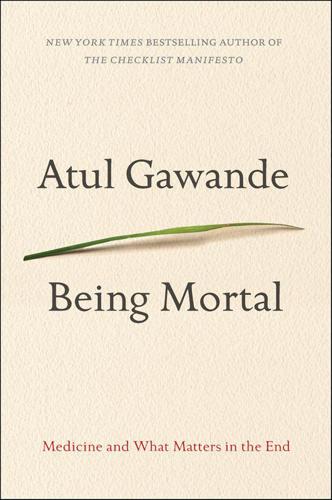
Being Mortal: Medicine and What Matters in the End
by
Atul Gawande
Published 6 Oct 2014
We wear down until we can’t wear down anymore. It happens in a bewildering array of ways. Hair grows gray, for instance, simply because we run out of the pigment cells that give hair its color. The natural life cycle of the scalp’s pigment cells is just a few years. We rely on stem cells under the surface to migrate in and replace them. Gradually, however, the stem-cell reservoir is used up. By the age of fifty, as a result, half of the average person’s hairs have gone gray. Inside skin cells, the mechanisms that clear out waste products slowly break down and the residue coalesces into a clot of gooey yellow-brown pigment known as lipofuscin.
…
Aubry, False Hope: Bone Marrow Transplantation for Breast Cancer (Oxford University Press, 2007). Ten states enacted laws: Centers for Diseases Control, “State Laws Relating to Breast Cancer,” 2000. Never mind that Health Net was right: E. A. Stadtmauer, A. O’Neill, L. J. Goldstein et al., “Conventional-Dose Chemotherapy Compared with High-Dose Chemotherapy plus Autologous Hematopoietic Stem-Cell Transplantation for Metastatic Breast Cancer,” New England Journal of Medicine 342 (2000): 1069–76. See also Rettig et al., False Hope. Aetna, decided to try a different approach: R. Krakauer et al., “Opportunities to Improve the Quality of Care for Advanced Illness,” Health Affairs 28 (2009): 1357–59.
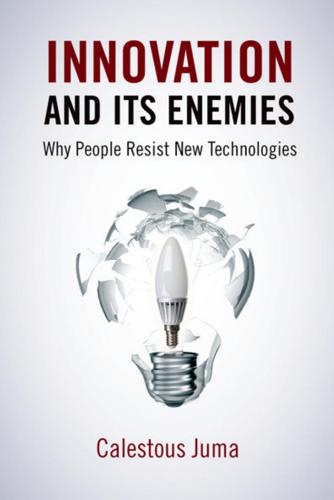
Innovation and Its Enemies
by
Calestous Juma
Published 20 Mar 2017
This was used by opponents of the technology even though their objections may have been influenced by other considerations. The invention of lithography by Alois Senefelder of Munich in 1796 made it possible to print books without compromising aesthetic considerations. A contemporary example of such trends includes the identification of alternative sources of stem cells, which helped to reduce the intensity of objections from those concerned about obtaining stem cells from human embryos. Another potential example is the use of gene-editing techniques or precision breeding within crop species to address concerns about moving genes across species. Technological solutions alone are not sufficient in many cases without the complementary social change that makes new technologies more acceptable.
…
This development, however, has resulted in concerns about the ability of countries to regulate the new technologies, as people doubt the adequacy of existing institutional arrangements in safeguarding human health and environmental integrity.11 Technological and engineering advancements themselves are a major source of answers to many controversies. For example, safety concerns regarding early mechanical refrigeration could not be addressed without advances in technology. Similarly, the rapid rate at which early tractors were improved helped to foster their adoption. Recent concerns about obtaining stem cells from human embryos have been addressed by innovative approaches that helped to identify other sources. A combination of technological abundance, continuous improvement, and greater involvement of users in innovation will help to create new avenues for resolving the technological controversies that arise from immature technologies.
…
See also Regulation Stanley, William, 153, 155 Starbucks, 45, 67 StarLink corn, 355n56 Start-ups, restriction of new technologies to, 18–19 State Laboratory for Nutritional Research (Denmark), 112 States (US). See also names of individual states cold storage legislation, 196 support for domestic oils, 115 Status quo bias, 35 Steam-traction engines, 124 Steckel, Richard, 339n48 Steel, use in plows, 123 Steering wheels, 295 Stem cells, 15, 92 Stevenson, Robert Louis, 148 Stigmatization (demonization). See also Romanticization of alternating current, 144, 158–167, 171 of coffee, 45, 66 of margarine, 103 of new technologies, 8 product analogies and, 308–309 of technological innovation, 309 of telephone, 165–166, 309 of transgenic fish, 274 Stockholm, coffeehouses in, 62 Stop Smart Meters, 172–173 Storage goods, 186 Strasbourg, first printing of Bible in, 76 Street lighting, 146, 147, 149 Stupidity, Pessoa on, 280 Sublime Porte (Bâb-ı Âli), 83 Subramaniam, Chidambaran, 283 Subsidies to fishing industry, 259 Subsistence farming, 122 Substantial equivalence, 10 Success dynamics of, in scientific research, 327n115 factors affecting, 29–30 Succession in technological evolution, 326n106 Sufis, 47–48, 328n11 Sulfur dioxide, 190 Sulfuric acid, 179 Sultan of Cairo, 49 al-Sunbati, Ahmad ibn ’Abd al-Haqq, 50 Supermarkets, opposition to stocking of transgenic fish, 271, 273, 279 Supreme Court on antimargarine laws, 105 Diamond v.
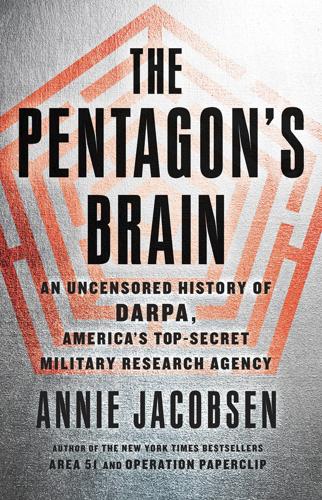
The Pentagon's Brain: An Uncensored History of DARPA, America's Top-Secret Military Research Agency
by
Annie Jacobsen
Published 14 Sep 2015
In April 2014, scientists in the United States and Mexico announced they had successfully grown a complex organ, a human uterus, from tissue cells, in a lab. And in England, that same month, at a North London hospital, scientists announced they had grown noses, ears, blood vessels, and windpipes in a laboratory as they attempt to make body parts using stem cells. Scientists at Maastricht University, in Holland, have produced laboratory-grown beef burgers, grown in vitro from cattle stem cells, which food tasters say taste “close to meat.” “Can science go too far?” I ask Dr. Gardiner and Dr. Bryant. “The same biotechnology will allow scientists to clone humans,” says Dr. Gardiner. “Do you think the Defense Department will begin human cloning research?”
…
It’s a place where scientists like myself can work with a team of students and pursue risky ideas that would be hard to pull off within the confines of LANL itself.” 18 simulating the primate visual system: Quotes are from interviews with Garrett Kenyon, March–November 2014. 19 world’s record: “Science at the Petascale,” IBM Roadrunner supercomputer, press release, October 27, 2009. 20 Tianhe-2: Lance Ulanoff, “China Has the Fastest Supercomputer in the World—Again,” Mashable.com, June 23, 2014. 21 points inside: Kenyon noted that the computer room contains a number of different machines. 22 “Regeneration is really coming alive”: Quotes are from interviews with David Gardiner and Sue Bryant, June 2013–October 2014. 23 children born with mutations: Ngo Vinh Long, “Vietnamese Perspectives,” in Encyclopedia of the Vietnam War, ed. by Stanley Kutler (New York: Scribner’s, 1996). 24 a human uterus: Stephanie Smith, “Creating Body Parts in a Lab; ‘Things Are Happening Now,’” CNN, April 10, 2014. 25 make body parts: “Ears, Noses Grown from Stem Cells in Lab Dishes,” Associated Press, April 8, 2014. 26 laboratory-grown beef burgers: Maria Cheng, “First Reaction: Lab-Made Burger Short on Flavor.” Phys.org, August 5, 2013. 27 “One can imagine”: S. Hawking et al., “Stephen Hawking: ‘Transcendence Looks at the Implications of Artificial Intelligence—But Are We Taking AI Seriously Enough?’”
…
Bryant: Regeneration biologist, former dean of the School of Biological Sciences and vice chancellor for research, UC Irvine Colonel Julian Chesnutt (retired): Former program officer, Defense Clandestine Service, DIA Colonel L. Neale Cosby (retired): Former SIMNET principal investigator, DARPA Bernard Crane: Lawyer, Washington, DC Dr. Tanja Dominko: Biotechnoengineer, stem cell biologist, Worcester Polytechnic Institute Allen Macy Dulles: Student of history, Korean War veteran, son of Allen Welsh Dulles Dr. Jay W. Forrester: Computer pioneer, founder of system dynamics Ralph “Jim” Freedman: Former nuclear weapons engineer, EG&G Dr. David Gardiner: Regeneration biologist, professor of developmental and cell biology, UC Irvine Colonel John Gargus (retired): Former special operations officer, U.S.
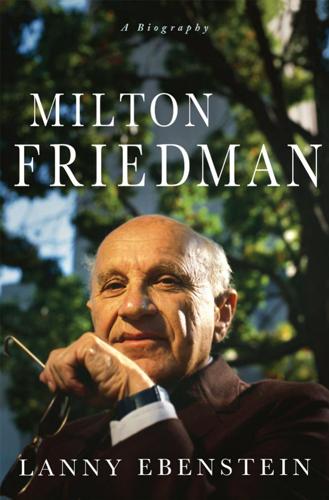
Milton Friedman: A Biography
by
Lanny Ebenstein
Published 23 Jan 2007
Contemporary welfare and social service programs have the “negative effect of creating a different kind of culture and a different kind of human being.”12 Vouchers and a negative income tax are philosophically and practically related. In each case, Friedman’s preferred policy is for government to give individuals money or credits rather than for government to provide services directly. With respect to stem cell research and gay marriage, Friedman writes in 2005 correspondence that on “stem cell research, I believe that it should be freely open but that the government should not be financing it. It does seem to me wrong for the government to be spending its citizens’ tax money on programs which a significant fraction of the population find morally abhorrent.”
…
Regarding gay marriage, “I do not believe there should be any discrimination against gays....The only question is whether th[e] laws should have a special category for a family unit whose primary objective is childrearing.”13 On abortion, he believes that it should be legal, but, similar to his position on stem cell research, that government should not pay for abortions. Friedman believes that the current public school system operates largely like a monopoly, with the inefficiency and lack of innovation that monopoly invariably entails. Universal vouchers would revolutionize education for the better, he believes; many new schools of all sorts would emerge.
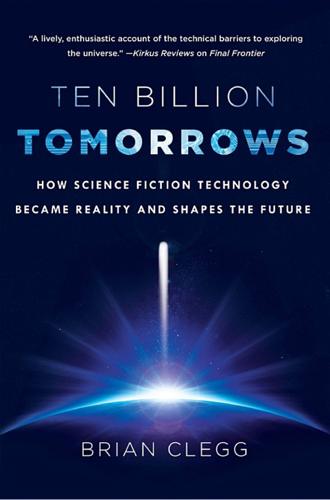
Ten Billion Tomorrows: How Science Fiction Technology Became Reality and Shapes the Future
by
Brian Clegg
Published 8 Dec 2015
At the time of writing there are at least two projects aiming to clone a mammoth, Akira Iritani at Kyoto University, who has been working in the area since 2011, with a target of success by 2016–2017, and Hwang Woo-Suk, a South Korean ventinarian who recently set out on a crash course in mammoth recovery. The fact that Hwang is involved is not in itself very encouraging, as he infamously fell from grace as a noted stem cell researcher when he was dismissed from a post at Seoul National University in 2006 for having forged data from imaginary research into stem cells. Yet he certainly had experience of cloning, (assuming the experiment was not faked), when he cloned a dog in 2014. Other scientists are both doubtful of the short-term chances of success, bearing in mind how many failures it took to get to the much less ambitious Dolly, and dubious that there is any scientific merit in bringing a mammoth back to life.
…
Moreau, is the creation of human/animal chimeras where human cells and animal embryos are combined. Yet there is an important distinction that takes the impact out of the SF story line—where the fictional result is a monstrous crossover creature, in reality the result is not viable as a living organism, but results in the production of stem cells, which can then be used for medical purposes. Wells envisaged bizarre hybrids like the leopard-man, the satyr-man, and the dog-man on Dr. Moreau’s island. But he realized the impracticality of giving a human being wings. This hasn’t stopped science fiction writers from exploring one of humanity’s great dreams.

I, Warbot: The Dawn of Artificially Intelligent Conflict
by
Kenneth Payne
Published 16 Jun 2021
For his efforts, the lead scientist was reportedly jailed for three years by the Chinese authorities. Elsewhere in China, gene editing experiments that are also ethically contentious continue. In 2019, two pigs were born with monkey DNA present in many of their organs.39 Earlier, their embryos had been injected with genetically modified stem cells from cynomolgus monkeys. The ostensible goal was to pioneer techniques that might be used to produce human-compatible organs for transplant to needy patients. And the chimeras did indeed have a small proportion of monkey cells in many of their organs. But there was a problem: both monkey-pig chimeras died within a fortnight.
…
Regalado, Antonio, ‘Exclusive: Chinese scientists are creating CRISPR babies’, MIT Technology Review, 25 November 2018, https://www.technologyreview.com/2018/11/25/138962/exclusive-chinese-scientists-are-creating-crispr-babies/. 39. Fu, Rui, Dawei Yu, Jilong Ren, Chongyang Li, Jing Wang, Guihai Feng, Xuepeng Wang et al. ‘Domesticated cynomolgus monkey embryonic stem cells allow the generation of neonatal interspecies chimeric pigs’, Protein & Cell 11, no. 2 (2020): 97–107. 40. Lei Shi, Xin Luo, Jin Jiang, Yongchang Chen, Cirong Liu, Ting Hu, Min Li, Qiang Lin, Yanjiao Li, Jun Huang, Hong Wang, Yuyu Niu, Yundi Shi, Martin Styner, Jianhong Wang, Yi Lu, Xuejin Sun, Hualin Yu, Weizhi Ji, Bing Su, ‘Transgenic rhesus monkeys carrying the human MCPH1 gene copies show human-like neoteny of brain development’, National Science Review 6, no. 3 (May 2019): 480–493. 41.
…
‘If we are living in a simulation, this UK start up probably built it,’ WIRED, 11 May 2017, https://www.wired.co.uk/article/improbable-quest-to-build-the-matrix. Freedman, Lawrence, and Michaels, Jeffrey. The Evolution of Nuclear Strategy. Fourth ed. London: Palgrave Macmillan, 2019. Fu, Rui, Dawei Yu, Jilong Ren, Chongyang Li, Jing Wang, Guihai Feng, Xuepeng Wang et al. ‘Domesticated cynomolgus monkey embryonic stem cells allow the generation of neonatal interspecies chimeric pigs’, Protein & Cell 11, no. 2 (2020): 97–107. Fursenko, A. A., and Timothy J. Naftali. One Hell of a Gamble: Khrushchev, Castro, Kennedy, and the Cuban Missile Crisis, 1958–1964. London: Pimlico, 1999. Future of Life Institute, ‘Slaughterbots’, 13 November 2017, https://youtu.be/HipTO_7mUOw.

On the Future: Prospects for Humanity
by
Martin J. Rees
Published 14 Oct 2018
The ‘code’ for a vaccine could be electronically transmitted around the world—allowing instant global distribution of a vaccine created to counter a new epidemic. People are typically uneasy about innovations that seem ‘against nature’ and that pose risks. Vaccination and heart transplants, for instance, aroused controversy in the past. More recently, concern has focused on embryo research, mitochondrial transplants, and stem cells. I followed closely the debate in the United Kingdom that led to legislation allowing experiments on embryos up to fourteen days old. This debate was well handled; it was characterised by constructive engagement between the researchers, the parliamentarians, and the wider public. There was opposition from the Catholic Church, some of whose representatives circulated pamphlets depicting a fourteen-day-old embryo as a structured ‘homunculus’.
…
See also planets; Sun space, threats to stability of, 112–13, 118 space elevator, 148–49 spaceflight: fuel as impediment to, 148–49; manned, 143–52; pioneering exploits, 138–40 (see also Apollo programme); private companies in, 146–48 space shuttle, 145, 148 space technology: international regulation of, 219; satellites, 140–42 space telescopes, 137, 142, 143 space tourism, 148 SpaceX, 146, 149 speech recognition, 85, 88 spiritual values, environmentalist, 33 Sputnik 1, 138 squirrels, genetic alteration of, 74 stars: as fairly simple objects, 173; in modern cosmology, 214 stem cells, 65 Stern, Nicholas, 42 strangelets, 112, 114 string theory, 169, 180, 187 Stuxnet, 20 Sun: ancient and modern understanding of, 3; eventual doom of Earth due to, 2; galactic location of, 124; life cycle of, 177–78; magnetic storms caused by, 16; nuclear fusion in, 54, 122; origin of, 122.
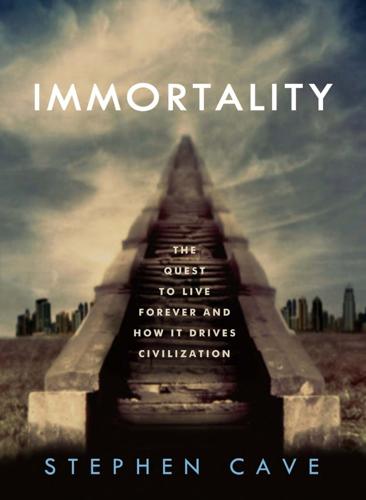
Immortality: The Quest to Live Forever and How It Drives Civilization
by
Stephen Cave
Published 2 Apr 2012
They are summed up in his “Strategies for Engineered Negligible Senescence” (“senescence” being a term for the deterioration caused by aging), a paradigmatic example of the Engineering Approach to immortality. Like most people in his field, de Grey relies on technologies that are now in their infancy but whose promise seems immense—in particular genetics, stem cells and nanomedicine. Genetic engineering should enable us to rewrite our bodies’ instruction books, ensuring many diseases that are now fatal never arise. Stem cells, which have the ability to develop into any kind of tissue, from skin to neurons, hold out the promise of growing healthy tissue to replace that which is diseased or worn out—even whole organs. And nanotechnology (engineering on the scale of atoms or molecules) gives hope of the ability to repair our bodies from the inside out using billions of tiny, targeted machines.
…
Throughout its history, science has sought to make life unending and death reversible. In chapter 3, we saw that scientific progress is driven forward by the Engineering Approach to mortality, the modern version of the Staying Alive Narrative, which attempts to break down the challenge of death into a list of potentially solvable problems like curing cancer, harnessing stem cells or stopping smoking. We can now see that this is part of a broader ideology of mastering nature—a belief that there are no natural limits that cannot in the end be overcome by reason. This belief extends beyond the hope of staying alive to encompass also its Plan B: resurrection. This drive to mastery of nature is often regarded as the very essence of modernity.

Falter: Has the Human Game Begun to Play Itself Out?
by
Bill McKibben
Published 15 Apr 2019
In laboratory-grown human cells, CRISPR has already been used to “correct the mutations responsible for cystic fibrosis, sickle cell disease, and some forms of blindness,” Doudna reports. “Researchers have corrected the DNA mistakes that cause Duchenne muscular dystrophy by snipping out only the damaged region of the mutated gene, leaving the rest intact.”9 Say someone has sickle-cell anemia. It now seems entirely possible to isolate stem cells from a patient’s bone marrow, use CRISPR to repair the cells’ mutated genes, and then return the edited cells to the patient, where they will “churn out robust amounts of healthy hemoglobin.”10 This kind of work has just begun to leave the laboratory and enter the real world. In the summer of 2017, the FDA approved the first-ever such treatment, this one designed to modify a patient’s own cells to fight leukemia.
…
By growing our food on vertical stands, he means. “As we extend longevity, we radically expand the resources of life.” That’s an ethical improvement on, say, Michael West, currently chair of a California start-up called BioTime, which specializes in “regenerative medicine.” West, who organized the first effort to isolate human stem cells for cloning purposes, was once asked whether immortality wouldn’t lead to overpopulation. Sure, he said, but “why put the burden on people now living, people enjoying the process of breathing, people loving and being loved. The answer is clearly to limit new entrants to the human race, not to promote the death of those enjoying the gift of life today.”16 That level of selfishness makes Ayn Rand look like Mother Teresa.
…
See also community Solomon, Tom Sorcerer’s Apprentice, The (film) Southwestern Publishing Soviet Union. See also Russia soy space colonization SpaceX Spanish flu SpinVox Spotify Stalin, Joseph Standing Rock protests Staples, Sam Starr, Ken Startling Stories Star Trek (TV show) state governments Steffen, Alex stem cells Sternberg, Sam St. Louis World’s Fair Stock, Gregory Stonehenge stress hormones submarine landslides suicide SunEdison Sun Microsystems Sweden swordfish Synthego Syria Tanzania tar sands taxes cuts in opposition to Tea Party tech industry technology of maturity and repair replacement Teller, Edward Tesla Texaco Texas Texas Hold ‘Em thalassemia Thatcher, Margaret Theory of Moral Sentiments, The (Smith) Thiel, Peter Thomas, Clarence Thoreau, Henry 350.org 350 parts per million Thurow, Lester Tillerson, Rex Tiumalu, Koreti tobacco Tolstoy, Leo Tomasky, Michael totalitarianism TransCanada Corporation transhumanism transportation Trappist solar system Triassic-Jurassic extinction Trudeau, Justin Trump, Donald tsunamis Tunica, Mississippi Tunuliarfik Fjord Turkey Turner, Frederick Jackson Twenge, Jean 21st Century Fox 23andMe Twitter U-Barrier Uber Unabomber Unconquerable World, The (Schell) Underwood, Barbara United Nations General Assembly special rapporteur on extreme poverty Sustainable Development Goals U.S.

The Premonition: A Pandemic Story
by
Michael Lewis
Published 3 May 2021
Dean asked Paige to call the woman and ask her where she had been the past few months. It emerged that in that brief period, the infected woman had treated herself to an astonishing number of possibly infectious procedures. An improbable number of manicures and pedicures. Botox treatments. Dental work. Some kind of stem cell procedure. By the time Paige got off the phone, she had a list of ten places where a virus might have entered the woman’s bloodstream. Dr. Dean asked her to go have a look around the places and report back. * In her first year of residency at Santa Barbara Cottage Hospital, Charity had worked under a doctor named Stephen Hosea.
…
When Paige Batson returned from her tour of the hep C patient’s life, Charity could feel that something was slightly off about her—in the same way she occasionally felt something was slightly off after a diagnosis failed to explain a symptom. Paige was usually a chatterbox; now she’d gone quiet. “I don’t know, Dr. Dean,” she said. “Something didn’t feel right.” She’d gone to all the places on her list, but only one of them left her feeling unsettled: the stem cell clinic. The Thomashefsky clinic, as it was called. It offered a treatment for joint and back pain, platelet-rich plasma therapy, in which blood cells were removed from the patient, whipped around in a centrifuge, then reinjected into the patient. Dr. Thomashefsky charged up to forty-five hundred bucks a pop for a procedure that wasn’t covered by medical insurance, as its actual usefulness was still a matter of dispute.
…
Hell, if she were wrong, she would fire herself. “I was like, ‘Fuck, I don’t have to be doing this. I leaned too far forward this time.’ ” The odd thing about it, to Charity, was how docile Dr. Thomashefsky had been, from the moment she’d turned up. It was as if he had been waiting for her. She returned twice more to the shuttered stem cell clinic, to poke around and see if there was anything she had missed. “I was terrified that I would not find the things I needed,” she said, “and if I didn’t find it there would be twenty more cases of something out there.” On her subsequent trips to the clinic, she discovered that Thomashefsky was prescribing Versed—one of the drugs that killed Michael Jackson—and that he was making house calls to inject it into rich old ladies in the hills.
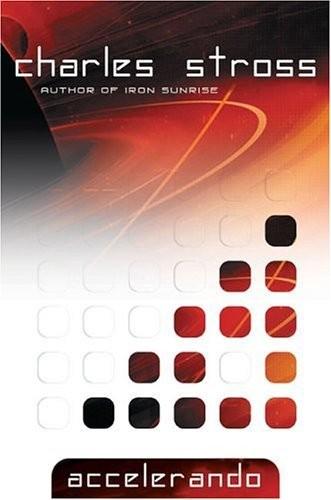
Accelerando
by
Stross, Charles
Published 22 Jan 2005
Between the gene maps and the hints, there's enough data to extrapolate a meat machine. So the festival city's body shop goes to work turning out hacked stem cells and fabbing up incubators. It doesn't take very long to reincarnate a starshipful of relativity-lagged humans these days. First, City carves out skeletons for them (politely ignoring a crudely phrased request to cease and desist from Pamela, on the grounds that she has no power of attorney), then squirts osteoclasts into the spongy ersatz bone. They look like ordinary human stem cells at a distance, but instead of nuclei they have primitive pinpricks of computronium, blobs of smart matter so small they're as dumb as an ancient Pentium, reading a control tape that is nevertheless better structured than anything Mother Nature evolved.
…
The cat remembers this as a sore point; from being a medical procedure to help the blind see and the autistic talk, intrathecal implants have blossomed into a must-have accessory for the now-clade. But the male is reluctant. "It's not as risky as it used to be. If they screw up, there're neural growth cofactors and cheap replacement stem cells. I'm sure one of your sponsors can arrange for extra cover." "Hush: I'm still thinking about it." He's silent for a while. "I wasn't myself yesterday. I was someone else. Someone too slow to keep up. Puts a new perspective on everything: I've been afraid of losing my biological plasticity, of being trapped in an obsolete chunk of skullware while everything moves on – but how much of me lives outside my own head these days, anyhow?"
…
They look like ordinary human stem cells at a distance, but instead of nuclei they have primitive pinpricks of computronium, blobs of smart matter so small they're as dumb as an ancient Pentium, reading a control tape that is nevertheless better structured than anything Mother Nature evolved. These heavily optimized fake stem cells – biological robots in all but name – spawn like cancer, ejecting short-lived anucleated secondary cells. Then City infuses each mess of quasi-cancerous tissue with a metric shitload of carrier capsids, which deliver the real cellular control mechanisms to their target bodies. Within a megasecond, the almost random churning of the construction 'bots gives way to a more controlled process as nanoscale CPUs are replaced by ordinary nuclei and eject themselves from their host cells, bailing out via the half-formed renal system – except for those in the central nervous system, which have a final job to do.
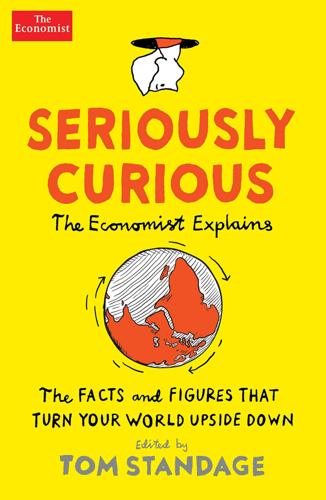
Seriously Curious: The Facts and Figures That Turn Our World Upside Down
by
Tom Standage
Published 27 Nov 2018
And it works in reverse, too: old blood can have a decrepifying effect on the young. Exactly how this all works is much less clear. The best guess is that some combination of hormones, signalling factors and other ingredients in the young blood affects the behaviour of stem cells in the old animal. Like everything else, stem cells – which are vital for healing wounds and for general maintenance – begin to fail with age. But that process seems to be reversible, with young blood restoring the cells’ ability to proliferate and mend broken tissue. Another theory is that the old animal benefits from access to the organs (kidneys, liver and so on) of its young companion.
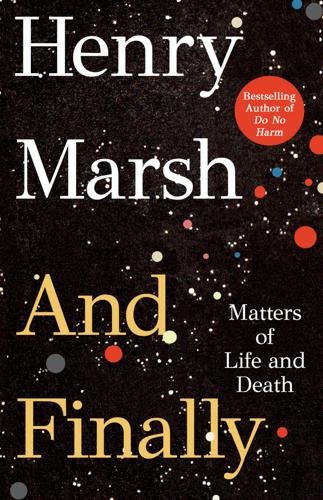
And Finally
by
Henry Marsh
It has to be held in check by many complex mechanisms to ensure that it remains only part of a whole greater than itself. Failure, of course, is cancer, which – in a perverse sort of way – is a fatal expression of the force to live. The Nobel Prize-winning stem-cell scientist Shinya Yamanaka showed that almost all specialised cells can be reprogrammed backwards to become what are called induced pluripotent cells. These are cells very similar to the original precursor stem cells that produced the specialised cells that Yamanaka started with. Enthusiasts for life extension see Yamanaka’s technique as the route to eternal life. Research to date in mice, using this technology, tends to produce tumours called teratomas instead of long-lived mice, but we are only at the beginning of this kind of research.

Augmented: Life in the Smart Lane
by
Brett King
Published 5 May 2016
The National Institute of Health studies of Dr Henrietta van Praag and her colleagues, as popularised by the writing of Harvard’s John Ratey,13 instruct us that if we run for at least 45 minutes at a pace which raises our heart rate to at least 75 per cent of its maximum, we will create new neural stem cells, primarily in the hippocampus. These new cells will last for about 21 days. In order for them to “wire” with other neurons and last longer, we would need to learn something new. “Neurons that fire together, wire together” is the neuroscientist’s way of summarising this process. One of the more exciting discoveries about exercise-induced neurogenesis is that the brain loses brain cells more rapidly in some areas than others.
…
When HIV infects the body, it modifies the body’s own immune system by changing the DNA of T-cells. With innovations in the Cas9 process, researchers were able to successfully edit the CXCR4- and PD-1-infected genes in the T-cells, replacing them with healthy cells. Modified T-Cells from healthy patients have been introduced via stem cell therapy before, boosting the immune system’s response, but this was the first time that researchers were able to edit the HIV virus out of an existing patient’s cells. In Philadelphia, researchers were able to make HIV patients resistant to the virus by removing the CCR-5 protein from white blood cells through gene therapy.
…
Heart and lung diseases: celladon heart failure, calcium upregulation, congestive heart failure and peripheral arterial disease, cystic fibrosis, α1-antitrypsin deficiency, asthma, acute respiratory distress syndrome (ARDS), pulmonary edema With gene therapy, we will be able to correct errors in our DNA as well as remove diseases, deficiencies and hereditary conditions. That is an astounding possibility, and it is most definitely within reach of the sciences. If you combine gene therapy, stem cell therapy, sensor-based monitoring and other augmentation that will be available, the fact is that we will have more control over disease and its treatment than ever before. In fact, it is likely that we will make more progress curing disease over the next two decades than in the last one hundred years of medical science.
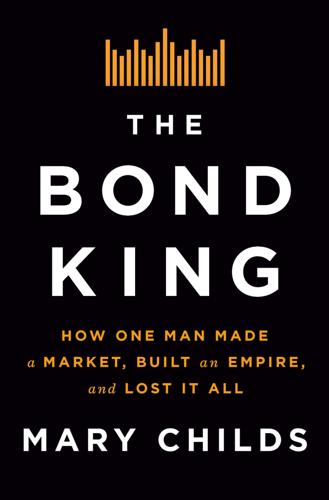
The Bond King: How One Man Made a Market, Built an Empire, and Lost It All
by
Mary Childs
Published 15 Mar 2022
But to me, it’s the most exciting thing in the world!” Years later, Gross met Ed Thorp, at a lunch set up by their mutual attorney, at an old favorite local restaurant, the Ritz; Thorp lives in the area, and in the early 2000s, he was involved with the University of California, Irvine’s search for a lead donor for a stem cell research center, and by then, Gross was an obvious great candidate. He walked the hundred feet or so from Pimco and said he had only half an hour. So, they chatted, and after about thirty minutes, Gross’s phone rang. It was his secretary saying he had to come back; he said no, give me another thirty minutes.
…
His was one of the greatest in the world, but stamps were still stamps. He had sort of forced that fame by giving $10 million and donating some of his treasures to create the William H. Gross Stamp Gallery at the Smithsonian’s National Postal Museum in D.C. Closer to home, a $10 million donation yielded the Sue and Bill Gross Stem Cell Research Center, which would open with a local splash in 2010 at the University of California, Irvine. His August 2009 purchase of a bayfront home on Harbor Island for $23 million (down from the list price of $26 million) showed up in headlines in The Wall Street Journal and in real estate blogs.
…
In 2005, they gave $20 million to Hoag Memorial Hospital Presbyterian, for what Hoag told the press was maybe the biggest donation ever to an Orange County hospital. (An accidental but happy by-product of this gift: Bill Gross’s first wife worked at Hoag, so in the mornings on her way in, she had to walk past an enormous portrait of Bill and Sue.) And that $10 million to the University of California, Irvine, for stem cell research. More recently, in 2012, they gave another $20 million to Cedars-Sinai Medical Center for the Sue and Bill Gross Surgery and Procedure Center. They’d just donated $20 million to Mercy Ships, a Texas-based nonprofit that operates floating hospitals that bring medical aid to patients in coastal countries.
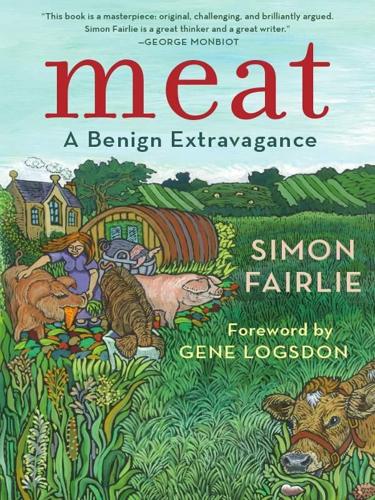
Meat: A Benign Extravagance
by
Simon Fairlie
Published 14 Jun 2010
Part of the instinctual legacy from our Pleistocene past that Shepard so values is our taste for meat, and one suspects that his global game park would encounter the same problems with poachers as its aristocratic and colonial predecessors – particularly since his education system is focussed around teaching youngsters the skills of hunting. Shepard rejects laboratory meat culture in favour of microbial stews only because he considers that it is not technologically feasible ‘because growth-control processes soon deteriorate when only part of an organism is cultured’. But with recent advances in stem cell technology this seems less likely to be a barrier. If the controllers of Shepard’s high rise settlements want to keep their part-time hunters satisfied they would be wise, like Lovelock, to include lab-cultured flesh in the diet. The idea of growing meat in laboratory conditions has been around for some time.
…
The NASA researchers claimed that their achievement held out the prospect of growing meat in industrial quantities from the muscle cell lines of various animals or fish. The gruesome method employed did not prevent project leader Morris Benjaminson claiming that ‘this could save you having to slaughter animals for food’.35 In the years since then, lab-grown meat has shown signs of becoming a sunrise industry. The technology is similar to the stem cell techniques that have resulted in the growing of organs, such as human windpipes, outside the human body under laboratory conditions. In June 2005 the magazine Tissue Engineering published what it claimed was ‘the first peer-reviewed discussion of the prospects for industrial production of cultured meat.’36 Two methods were described: growing cells either as flat sheets on thin membranes, or growing them on small three-dimensional beads.
…
Cultured muscle tissue is the dream product that lies at the end of this road. The secret longing of some vegans for Chickie Nobs came out into the open in 2008 when Ingrid Newkirk, president of People for the Ethical Treatment of Animals (PETA) offered a $1 million prize to whoever can scale up stem cell techniques to grow edible animal tissue for a mass market. The New York Times reported ‘near civil war’ within PETA, with members leaving in protest. Jim Thomas, of the ETC group, picked up on the licentiousness inherent in allowing vegans to eat synthetic meat: ‘Culturing exotic meats opens new markets: Anyone for lion?
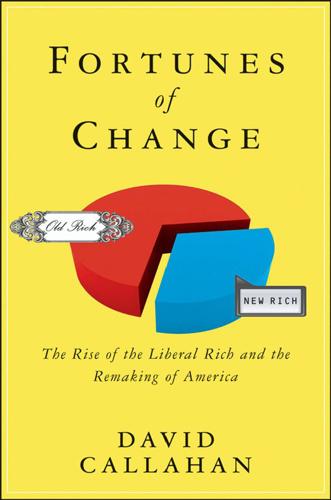
Fortunes of Change: The Rise of the Liberal Rich and the Remaking of America
by
David Callahan
Published 9 Aug 2010
Likewise, you’ll be attuned to how government investments in scientific research can play a key role in propelling your industry. If you own one of Austin’s many biotech firms, you’ll applaud every time that the National Institutes of Health ups its research budget and every time a state promises to put money into stem cell research, because some of the breakthroughs from this work may eventually lead to new products and profits at your firm. At a broader level, you will worry about the physical and technological infrastructure that allows goods and services to move around. You will understand the centrality of capital markets in ensuring that you have the money to invest in growth.
…
For instance, the highest margin of opposition to a 2008 ballot effort in California to require parental notification for abortions was among voters earning more than $200,000 a year. The same year in Michigan, higher-income voters provided the biggest margins of support for a law that would allow stem cell research. Civil rights has also been a cause célèbre among the wealthy at times. The civil rights movement didn’t draw in only upper-middleclass northern college kids; it also attracted serious liberal money starting in the early 1960s. Among the movement’s biggest funders were Stephen and Audrey Currier, forgotten figures today but perhaps the richest and most glamorous liberals of their time.
…
Much has been made of how Democrats alienated their blue-collar base by siding with the left in the culture war, which cost them elections, but this stance turned out to have a major upside. Democrats picked up new support among well-off Americans just as this group began to dramatically expand amid boom times. That support has deepened in recent years as Republicans have grown more conservative on social issues, fighting high-profile battles on Terri Schiavo and stem cell research. A tolerant Democratic Party has attracted large swaths of the upper class—although still only a minority of this group—even as the party has grown more populist, vowing to hike taxes on the rich and better regulate business. Those Democrats who actually represent the rich are no exception: Most of the congressional Democrats c04.indd 95 5/11/10 6:19:05 AM 96 fortunes of change who are very liberal on social issues are also very liberal on economic issues.
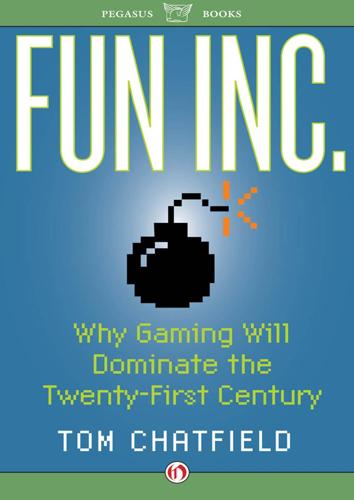
Fun Inc.
by
Tom Chatfield
Published 13 Dec 2011
It’s especially troubling because many of the most profound questions video games raise have yet to be addressed. There is, for instance, the growing problem of how to determine the legal status of actions and transactions within virtual worlds. In some ways, the kinds of legal and ethical questions raised here resemble those seen in medical science. Stem cell research, for instance, is a field where what is technically possible has evolved faster than the growth of the legal and philosophical framework addressing it. What are the ethics of creating, destroying and using human embryos in potentially life-saving medical treatments? The questions thrown up by games may be considerably less challenging ethically, but they too confront our current laws and cultural frameworks with possibilities far outside the imaginations of legislators even half a century ago.
…
34 Huizinga, Johan 233 Homo Ludens: A Study of the Play-Element in Culture 229–32 human behaviour, and video games 165–79 human motivators 4 humour 8 I Dig It 213–14 I wish I were the moon 129 id Software 188 improvement 4 in-game interactions 51 Inconvenient Truth, An (film) 186 Infocom x installation art 132 intellectual property 60 intelligent shared spaces 160–61 internationalism 2 internet 210, 224 browser 156 casual gaming 33–7, 210–12 computers’ unrestricted freedom to browse 24 importance to younger children 64 online pursuits 83 and pornography 83 social relationships 89–90 sub-culture 7 the world’s most important gaming arena 24 internet cafés 80–81 Invisible Threads 143 iPhones 212–14, 216 Iraq 191 invasion of (2003) 192, 195 Japan 221–2, 229 Japanese firms 21–3, 222 professionalism 21 rivalry between Nintendo and Sega 21–2 success of Sony 22–3 Jo Kim, Amy 163–4 Johnson, Boris 56, 57 jumping 39–40 keyboard 157, 158, 159 Kindle 219 Korea 80–81, 221, 222 Koster, Raph 7–10, 39, 49 A Theory of Fun for Game Design 7 Kretschmer, Tim 67, 68 Krishna (Indian deity) 44 Kubrick, Stanley 113–14 Kufeld, Albert W 17–18 laptops 210 Lazzaro, Nicole 49–50, 51 learning 4, 6–8, 49, 94, 150, 153, 157, 180, 181, 209 contexts from learning 203 experiential 9 see also education; training Learning and Teaching Scotland 200, 201 Lee, Johnny Chung 160 Legend of Mir 3, The 60 Legend of Sword and Fairy, The 120 Lehtonen, Liz and Ville 103–4 Levene, Simon 216–17 Lewitt, Adam 68 live art 131–4 Lord of the Rings series 113 Los Angeles Expo (2009) 13, 14 Lovell, Nicholas 215–16 Lucas, George 46 Lumière, Auguste and Louis 111 McKechnie, Craig 99–100 Macropedia 216 Macs 23 Magnavox Odyssey 19, 20 Marine Doom 188–9 Mario games 39, 40 market locations 171 mass print media 20 Massachusetts Institute of Technology (MIT) 15–18 massively multiplayer online games (MMOs) 7, 48, 93, 103, 105, 106, 138, 140, 162, 176 Medal of Honor series 65 ‘meta-game’ 105 microphones 51, 97 Microsoft 14, 216, 217 enters console war 218 programs 155 Windows 42 military games 187–97 Mind Candy 63 Minesweeper 41–2 mobile phones 28, 34, 157–8, 210, 212, 221–2 monitor 157 Moshi Monsters 63, 64 motion capture 14, 29, 137 motion sensitivity 23, 158, 159 motivation 149–51, 163, 177, 179, 180, 184 mouse 156–9 MP3 players 28 MP3 recordings 136 MTV 37, 186 mtvU 186 MUD (Multi-User Dungeon) 45 M.U.L.E. 10–11 multi-player games online 89, 169 text-based 89 time spent playing 29 Murdoch, Rupert 218 music interactive 135–6 recorded 57, 228 MySpace 89, 155 Natal tracking box project 13–14 National Adviser for Emerging Technologies and Learning, Scotland 200, 202 National Parenting Publications Award 64 natural sciences 169 Negative Gamer 75 netbooks 220–21 neurological control 211 NeuroSky 158, 159 newspapers 227 Nielsen Games 63 Nintendo 21, 22, 23, 27, 31, 39, 76, 216 brain-training games 205 DS console 202, 205–8 Super Nintendo 200 Wii 37, 91, 138, 156, 158, 160, 215, 217–18 Nintendogs 83 Norrath (a virtual world) 167, 168 not-for-profit gaming 225 Novint Falcon controller 159 NP-hard problem (‘non-deterministic polynomial hard’ problem) 41–2 Oakdale Junior School, Essex 205–8 Olympics 2 online community management 224 online ‘counter-culture’ 110 online games creation of xi gaming community 29 motivating, co-operative social tools 108 players’ achievements in 29–30 profitability 221 reward distribution 177–9 OnLive service 220 OpenShaspa Home Energy Kit 161–2 OpenShaspa system 161 Overload series 119 Overload: Dark Legend 119 Overload: Minions 119 Overload: Raising Hell 119 Overload II 119 Pac-Man 20, 201 Pajitnov, Alexey 40, 41, 42 Palace, The 172 Pan European Game Information System (PEGI) 62–3 parents 63–4, 138 party games 91 Passage 126–8, 129 PCs 23 PDP-1 (Programmed Data Processor) 15, 16, 17 Pediatrics journal: ‘Longitudinal Effects of Violent Video Games on Aggression in Japan and the United States’ 67 pentominos 41 performance art 130, 133 performance games 91 persistence 154 personalisation 154 Pet Society 36–7 pets ‘pet’ games 83 in WoW 94 Pew Internet/MacArthur Report on Teens, Video Games and Civics (2008) 90, 108–9 Pictionary 3–4, 5 Pirate Bay website, The 109 Pirate Party 109 Pixar Studios 117 platform games 83 Plato: Phaedrus 55, 56 play, Huizinga on 229–30, 232 player motivations (Killer, Achiever, Explorer and Socialiser) 47–8, 49 Playfish 33–7 points 164 Pokémon series 83 political awareness 181 political issues 108–9 Pong 18–20 Poole, Steven 126 Trigger Happy 125 pornography 83 Posner, Judge Richard A 70–71 Pratchett, Rhianna 117–19 Pratchett, Terry 117–18 prefrontal cortex 72 primal response patterns 163 Psychiatric Quarterly journal 66 psychological science 153 Psychological Science journal 73 Psychonauts 119–20 Punchdrunk theatre company 133–4 radio 20, 57–8, 227 ‘raiding missions’ 97–8 RAM 157 Rama (Indian hero) 44 Ramayana 44 Ramis, Harold 137 ratings 63, 64, 65, 164 Rawlinson, Michael 64–5 reading 85 Real 216 real-time conversation 51 Reeves, Professor Byron 162–3 research organisations 225 Restaurant City 37 reward schedule 149–50 rewards 199, 206, 209 RiepI, Wolfgang 227 Riepl’s law 227 Robertson, Derek 199–206 robots, military use of 194–5 Rock Band games 91, 135–6 Rohrer, Jason 126, 127–8 role-playing games 29, 45, 83 Rothenberg, Stephanie 143 Russell, Stephen ‘Slug’ 15–16, 22 scarcity 172, 173 Scottish education 199–205 Scruton, Roger 91–2, 101 Second Life 90, 118, 142–6 Second World War 229 Sega 21, 22, 23, 31 Segerstråle, Kristian 34–7 Seggerman, Suzanne 181–2, 186, 187, 193 self-expression 4, 43, 51, 94 Serious Games Institute, Coventry University 153, 161 Shining, The (film) 113–14 Sims, The series 83 SingStar 136 sketching 115 smartphones 219 Smith & Jones Centre, Amsterdam 77 Smith, Michael 63–4 Snow, Linda 207–8 social awareness 181 social networks 14, 24, 34, 83, 89, 154, 212, 217, 218 social problems 78 social sciences 153, 169, 180 Sony 22–3, 31, 95, 103, 104, 168, 216, 217, 218 PlayStation 22 PlayStation III 215, 218 sound 20, 112, 116, 157 South-East Asia sector 222 Soviet Union 229 Space Invaders 20, 201 Spacewar! (world’s first true computer game) 16–18, 37 speakers 51 Spider-Man 3 (film) 29 Spielberg, Steven 14, 137–8 sports 2, 91 Star Trek series 113 Star Wars (film series) 7, 17, 46 Star Wars Force Trainer 159 Star Wars Galaxies 7, 139–40 Starcraft 81 stem cell research 59 Sundance Film Festival (2008) 143, 144 surface texturing 116 team games 100 television 58, 85, 114, 227 Baer and 19 console-based service 218–19 family entertainment 20, 59 and interaction 79, 136 user expectations 136 and virtual reality 160 and younger children 64 ‘tetriminoes’ 40 Tetris 40–42, 50, 122 text adventures x thatgamecompany 120 Thompson, Mark 226–7 Tolkien, J R R 45 Toy Story (film) 117 training 153, 157 emergency medicine games 197–9 military 188, 189, 190, 193 see also education; learning transnational relations 107–8 TripAdvisor 211 Triumph Studios 119 Trubshaw, Roy 45 Tunnel 228 show 133–4 Turbine Hall, Tate Modern, London 132 Twitter 89, 208, 212 Ultima Online 7, 100, 148 universities 225 University of Southern California 121, 186 Up (film) 117 US Center for Terrorism and Intelligence Studies (CETIS) 176 US Congress 182 US Department of Education 68 US Marine Combat Development Command 188 US Marines: First Recon unit 192 US military 187–8, 191, 194, 195 US Secret Service 68 value 151–2, 179–80 video arcades 87, 88 video game designer, as a career 37–8 video games addiction to 71–8 and art 117–34 big-budget 214, 222 born in a technology institute 15–18 a business devoted to miracles 14–15 and children 58, 62, 63–5 compared with other games 5–6 complexity 9, 11, 39, 42, 50, 72, 73, 130, 171, 214 consumers 61–2 creation of 114–17 education 199–208 equality 103 and the family 89, 91 feedback 9 and films 137 first icons 20 games-based vs. real-life interactions 91–3 the hero’s journey 46–7 and human behaviour 165–79 leadership in 98, 99, 101 as learning engines 6–7 as mainstream media activity 89 market for 22–3 military games 187–97 miniature games 126–9 mix of freedom and constraint in 102–3 moral panic 59 and music 135–6 nostalgia industry 52 perceived as played by adolescent males 87–8 players/non-players 59 power of 57–8, 223 progress by gaining experience 6 questions raised by 59–60 raising awareness 181–7 rapidly evolving 59 reviews 75 rules 6, 11 safety 58 as a social outlet 78–81 start of their commercial life 20 suitability for the digital age 28 teenage players (US) 90 time spent playing 29 two-player 88 and violence 60–61 and virtual theft 60–61 ‘visceral’ thrills 9–10 Villiers, Justin 112–13, 114 violence in games a minority interest 37, 82–3 regulation of 62, 224 and violence in life 65–71, 223 virtual currency 145–9 virtual economies 167, 169 virtual environments 142, 154, 172, 175 virtual epidemic 174–6 ‘virtual life’ simulations 83 virtual reality 14, 138 goggles 141 and the Wii 160 virtual screens 14 virtual voting system 225 virtual worlds 33, 45–7, 59, 95, 103, 141, 146, 154, 155, 160, 166, 168, 170–73, 210, 211, 223, 225, 226, 233 war games 188 watches 28 Watts, Peter 133 Wells, H G 45 Wii Play 83 WILL Interactive Inc. 196 wireless control 14 women players 61 word processing 155, 157 work virtual work 139–45 work/play separation 2–3, 5, 145 World of Warcraft (WoW) xii, 30, 93–102, 105, 147, 149, 174, 175, 176, 217 Wortley, David 153–4, 156, 157, 160, 161 Wright, Evan: Generation Kill 191–2 writing, origin of 57, 111, 228 Xbox 360 games console 14, 215 XEODesign 49 Yahoo!

Merchants' War
by
Stross, Charles
Published 30 Sep 2007
We keep them alive and work on them through here. We're using a 2D field-effect transistor array from Infineon Technologies. They're developing it primarily as an artificial retina, but we're using it to send signals into the cell cultures. If we had some stem cells it'd be easier to work with, but, well, we have to work with what we've got." "Right." The president's opinion on embryonic stem-cell research was well known; it had never struck Eric as being a strategic liability before now. He leaned towards the contraption behind the glass shield of the laminar-flow cabinet. "So inside that box, you've got some live nerve cells, and you've, you've what?
…
"That's what preparation fourteen is about. They're also sensitive to dopamine. We're looking for modulators, now, but it's on track. If we could get the nerve cells to grow dendrites and connect, we hope eventually to be able to build a system that works-that can move stuff about. If we can get a neural stem-cell line going, we may even be able to mass-produce them-but that's years away. It's early days right now: all we can do is make an infected cell go bye-bye and sneak away into some other universe-explaining how that part of it works is what the quant group are working on. What do you think?" Eric shook his head, suddenly struck by a weird sense of historical significance: it was like standing in that baseball court at the University of Chicago in 1942, when they finished adding graphite blocks to the heap in the middle of the court and Professor Fermi told his assistant to start twisting the control rod.
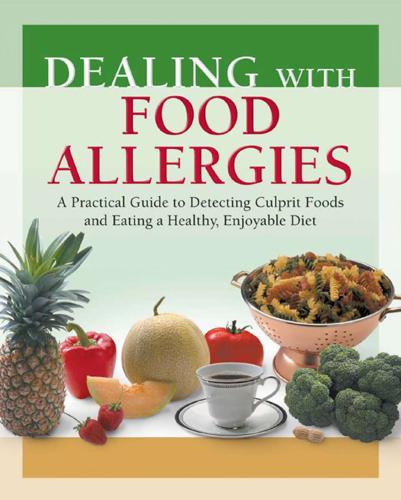
Dealing With Food Allergies: A Practical Guide to Detecting Culprit Foods and Eating a Healthy, Enjoyable Diet
by
Janice Vickerstaff Joneja
Published 31 Mar 2003
Let’s set off on this journey toward coming to terms with food allergy by starting right at the beginning: let’s take a look at the immune system. Blood Cells The most important cells of the immune system are found in blood (Figure 3-1). All blood cells start life as stem cells in bone marrow, which is present in the center of the larger bones of the body. Stem cells are immature cells that mature into different types of blood cells, each with a unique structure and function. There are three main groups or classes of blood cells: ◆ ◆ ◆ Red blood cells give blood its color and carry oxygen from the lungs to the rest of the body.
…
See also Open food challenge Serum sickness 336 Shellfish allergy 22, 102, 119, 199-202, 376 Single-blind food challenge 343-344 Skin tests 81-86 intradermal test 81-82 patch tests 84-86 prick to prick test 84 484 — INDEX — prick test 81-82 scratch test 81-82 reactors 15-17 Sodium benzoate 61-62, 277-278, 347 Sodium metabisulfite 347 Soy 363-364 allergy 102, 181-187 -free diet 183-187 milk 133 nutrients in 187 oil 187 terms indicating presence in food 183 Spice sensitivity testing for 380-381 Sprue. See Celiac disease Starches 226 Stem cells 30 Stress 26 Sucrase 226 Sucrose 223, 226 Sugar sensitivity testing for 376-377 Sulfates 67 Sulfites 103 allergy and intolerance 65-67, 287-299 symptoms of 288 -restricted diet 293, 297-299 sources of 289-292, 294-296 sensitivity 382 and thiamine (Vitamin B1) 293 Supplements 388 Target organ 15 Tartrazine 347, 382 intolerance 60-61, 265-275 symptoms of 270-271 -restricted diet 271-275 T cells 35-39, 40-41 helper cells (TH) 35, 36-39 lymphocytes 112 Tea 378 Therapeutic diets 339-340 Thiamine 293 Total serum IgE 89 Toxic reactions 51 Type I hypersensitivity 41-44, 328 Type II hypersensitivity 44-45 Type III hypersensitivity 44-46, 92 Type IV hypersensitivity 46, 85 Tyramine 58 intolerance 233, 240, 245 causes of 240 symptoms of 245 and histamine-restricted diet 246, 250-253 -restricted diet 246, 247-249 Urticaria 240, 270, 279, 288, 328, 340 Vegetable sensitivity challenge test for 368-374 Vega test 91 Vitamin B 293 C 89, 220 D 127, 390 Wheat allergy 161-170 and celiac disease 163 symptoms of 163 food products that contain 165 -free diet 164-170 sensitivity, testing for 359-360 Wheel and flare response 81 Whey -free margarines 134 proteins 351-352, 355, 357 Yeast and mold allergy 209-214 -free diet 212-214

Aerotropolis
by
John D. Kasarda
and
Greg Lindsay
Published 2 Jan 2009
At Bangkok Hospital’s five-year-old heart clinic— really a hospital in its own right, treating some fifteen thousand outpatients a year—stem-cell therapy is part of the standard tool kit for treating battered hearts that might otherwise demand a transplant. “Most of the patients have been ill for a long time,” the clinic’s director, Dr. Kit Arom, told me in his art-strewn office. “By the time they come here, they are all but incapacitated. They are waiting for a transplant or waiting to die.” After receiving stem-cell injections straight into cardiac muscle tissue—a treatment too controversial to be offered yet in the United States—most patients recovered enough to leave under their own power.
…
That’s all well and good for the tax rolls, but if Detroit is going to win this war of all against all that’s raging, it again begs the question: What is the aerotropolis for? The answer, given by everyone from Ficano on down, is anything and everything: batteries, biofuels, windmills, and smart grid-building software consultancies. Two years ago, Ficano announced Wayne County would build a Stem Cell Commercialization Center—adding genetic engineering to the list. When we met, practically the first word off his lips was The Graduate’s punch line, plastics—but in this case a biodegradable kind derived from wheat. Imagine the Big Three supplanted by Big Green. That may sound desperate, but they’re being pragmatic.
…
As exports were falling off a cliff at the end of 2008, China’s highest-ranking think tank unveiled plans for the “reform and development” of the Delta through 2020. Their wish list included a new Big Three of “superautomakers” led by the electrified BYD. The Delta would also dominate wind power, “environmental protection,” stem-cell research, “bio-breeding,” and a grab bag of electronics, including the shining symbol of Americans’ home equity hangover: the flat-screen TV. Not by coincidence, their list matches one by Harvard’s Willy Shih of the bleeding-edge technologies America is most at risk of losing, which also includes “electronic ink,” LEDs, and thin-film solar cells.
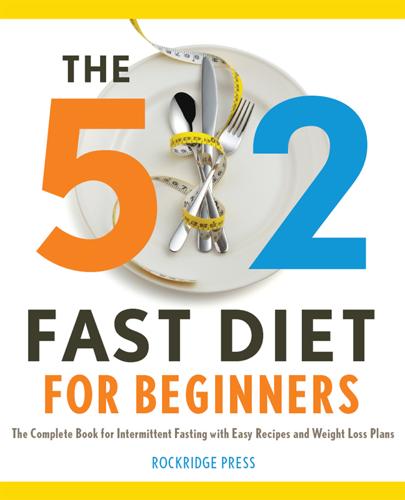
The 5:2 Fast Diet for Beginners
by
Rockridge Press
Intermittent Fasting and Brain Health Mark Mattson of the National Institute on Aging has done a great deal of research on intermittent fasting. His findings suggest that intermittent fasting boosts the production of brain-derived neurotrophic factor (BDNF), which is a protein that stimulates brain stem cells to become new neurons. It also protects brain cells from neurological degenerative disorders such as Alzheimer’s and Parkinson’s disease. According to Mattson’s research, intermittent fasting can boost the production of BDNF by anywhere from 50 to 400 percent. In a 2012 Washington Post interview, he discussed the findings on fasting and Alzheimer’s: “In mice engineered to develop Alzheimer’s-like symptoms, alternate-day fasting begun in middle age delayed the onset of memory problems by about six months.
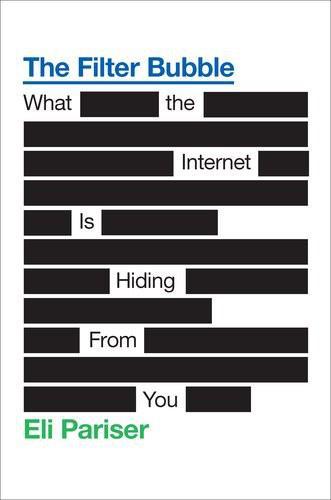
The Filter Bubble: What the Internet Is Hiding From You
by
Eli Pariser
Published 11 May 2011
If the results were that different for these two progressive East Coast women, imagine how different they would be for my friends and, say, an elderly Republican in Texas (or, for that matter, a businessman in Japan). With Google personalized for everyone, the query “stem cells” might produce diametrically opposed results for scientists who support stem cell research and activists who oppose it. “Proof of climate change” might turn up different results for an environmental activist and an oil company executive. In polls, a huge majority of us assume search engines are unbiased. But that may be just because they’re increasingly biased to share our own views.

Makers
by
Chris Anderson
Published 1 Oct 2012
Some 3-D printers extrude molten plastic in layers to make these objects, while others use a laser to harden layers of liquid or powder resin so the product emerges from a bath of the raw material. Yet others can make objects out of any material from glass, steel, and bronze to gold, titanium, or even cake frosting. You can print a flute or you can print a meal. You can even print human organs out of living cells, by squirting a fluid with suspended stem cells onto a support matrix, much as your inkjet printer squirts ink onto paper. MakerBot Thing-O-Matic 2) CNC MACHINE: While a 3-D printer uses an “additive” technology to make things (it builds them up layer by layer), a CNC (computer numerical control) router or mill can take the same file and make similar products with a “subtractive” technology, which is a fancy way of saying that it uses a drill bit to cut a product out of a block of plastic, wood, or metal.
…
Meanwhile, researchers are working just as hard at moving in the other direction: 3-D printing at the molecular scale. Today there are “bio printers” that print a layer of a patient’s own cells onto a 3-D printed “scaffold” of inert material. Once the cells are in place, they can grow into an organ, with bladders and kidneys already demonstrated in the lab. Print with stem cells, and the tissue will form its own blood vessels and internal structure. Today’s vision for 3-D printing is grand in ambition. Carl Bass, the CEO of Autodesk, one of the leading companies making 3-D authoring CAD software, sees the rise of computer-controlled fabrication as a transformative change on the order of the original mass production.
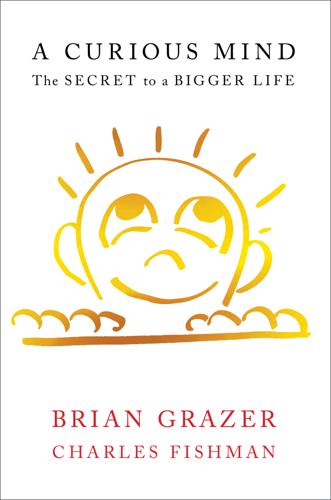
A Curious Mind: The Secret to a Bigger Life
by
Brian Grazer
and
Charles Fishman
Published 6 Apr 2014
Army general Ned Preble: former executive, Synectics creative problem-solving methodology Ilya Prigogine: chemist, professor at the University of Texas at Austin, Nobel laureate in chemistry, author of The End of Certainty: Time, Chaos, and the New Laws of Nature Prince: musician, music producer, actor Wolfgang Puck: chef, restaurateur, entrepreneur Pussy Riot: Maria Alyokhina and Nadezhda Tolokonnikova, the two members of the Russian feminist punk rock group who served time in prison Steven Quartz: philosopher, professor at California Institute of Technology, specializing in the brain’s value systems and how they interact with culture James Quinlivan: analyst at the RAND Corporation, specializing in introducing change and technology into large organizations William C. Rader: psychiatrist, administers stem cell injections for a variety of illnesses Jason Randal: magician, mentalist Ronald Reagan: president of the United States, 1981–1989 Sumner Redstone: media magnate, businessman, chairman of CBS, chairman of Viacom Judith Regan: editor, book publisher Eddie Rehfeldt: executive creative director for the communications firm Waggener Edstrom David Remnick: journalist, author, editor of the New Yorker, winner of the Pulitzer Prize David Rhodes: president of CBS News, former vice president of news for Fox News Matthieu Ricard: Buddhist monk, photographer, author of Happiness: A Guide to Developing Life’s Most Important Skill Condoleezza Rice: U.S. secretary of state, 2005–2009, former U.S. national security advisor, former provost at Stanford University, professor of political economy at the Stanford Graduate School of Business Frank Rich: journalist, author, former columnist for the New York Times, editor at large for New York magazine Michael Rinder: activist and former senior executive for the Church of Scientology International Richard Riordan: mayor of Los Angeles, 1993–2001, businessman Tony Robbins: life coach, author, motivational speaker Robert Wilson and Richard Hutton: criminal defense attorneys Brian L.
…
Rugby Foundation Kenneth Watman: analyst at RAND Corporation specializing in strategic defense and nuclear deterrence James Watson: molecular biologist, geneticist, zoologist, codiscoverer of the structure of DNA, Nobel laureate in medicine Andrew Weil: physician, naturopath, teacher, writer on holistic health Jann Wenner: cofounder and publisher of Rolling Stone, owner of Men’s Journal and US Weekly Kanye West: musician, music producer, fashion designer Michael West: gerontologist, entrepreneur, stem cell researcher, works on regenerative medicine Floyd Red Crow Westerman: musician, political activist for Native American causes Vivienne Westwood: fashion designer who developed modern punk and new wave fashions Peter Whybrow: psychiatrist, endocrinologist, researches hormones and manic-depression Hugh Wilhere: spokesman for the Church of Scientology Pharrell Williams: musician, music producer, fashion designer Serena Williams: professional tennis player Willie L.
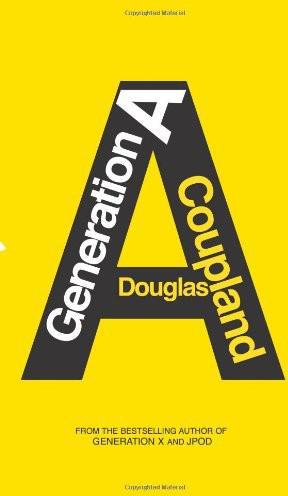
Generation A
by
Douglas Coupland
Published 2 Jan 2009
I always thought it’d be bald eagles and manatees that vanished first. But cicadas? Crickets? Even blackflies: now gone or going, and so quickly. Finally, Uncle Jay emailed that the site belonged to Finbar Manzies of Palmerston North, New Zealand. He was a dental researcher who specialized in using stem cells to regenerate new teeth in adults. Huh? He was also in the top zero-point-three percent of Kiwi income earners, flew regularly around the world and had recently spent NZ$3,450.00 for a series of visits to an area businessman named toby@manssage.sx.nz in a way that would show up on his credit card statements as a donation to UNESCO.
…
When their daily hour of communal time with other prisoners came around, most simply shrugged and said they’d rather not. Trevor and his colleagues were onto something huge. The wondrous new drug, however, was both difficult and expensive to make. The protein used to start it refused to be cloned, either in a petri dish or within a crèche of stem cells; it took hundreds of litres of blood to isolate enough protein to make a significant dose of the drug. It had to be synthesized in a wildly expensive 128-step process. Of course, Trevor was hooked on this stuff from the start. So forget Finnegans Wake. Forget books and forget reading and forget everything else on the planet except for this godsend of a brain fixer-upper that slowed his gambling to a point where he could keep it in check.
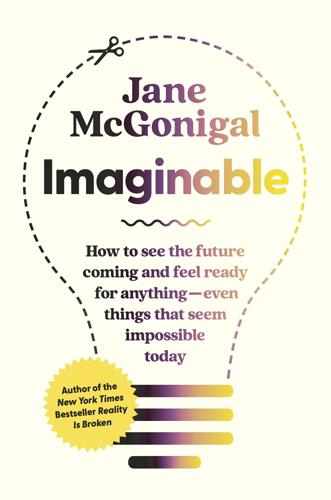
Imaginable: How to See the Future Coming and Feel Ready for Anything―Even Things That Seem Impossible Today
by
Jane McGonigal
Published 22 Mar 2022
Although no baby has been born this way yet, scientists seem optimistic that within a decade, their method of using stem cells and gene editing could allow just two men, or just two women, to make an embryo—no opposite-sex genetic material required. It would be a real game changer for LGBTQ couples who want to start a family. By the third time I played Stump the Futurist, this had happened: Scientists in China had successfully created healthy mice babies with same-sex parents, also using stem cells and gene editing.3 The babies had two female genetic parents; no male mice contributed any genetic material to the offspring whatsoever.
…
It’s Possible,” SBS, July 14, 2016, https://www.sbs.com.au/topics/science/humans/article/2016/07/13/children-two-genetic-fathers-its-possible. 3 Maya Wei-Haas, “Same-Sex Mouse Parents Give Birth via Gene Editing,” National Geographic, October 11, 2018, https://www.nationalgeographic.com/science/article/news-gene-editing-crispr-mice-stem-cells. 4 Elie Dolgin, “Making Babies: How to Create Human Embryos with No Egg or Sperm,” New Scientist, April 11, 2018, https://www.newscientist.com/article/mg23831730-300-making-babies-how-to-create-human-embryos-with-no-egg-or-sperm/#ixzz6rkam5LuX. 5 Gina Kolata, “Scientists Grow Mouse Embryos in a Mechanical Womb,” New York Times, March 17, 2021, https://www.nytimes.com/2021/03/17/health/mice-artificial-uterus.html. 6 Elizabeth Chloe Romanis, “Artificial Womb Technology and the Frontiers of Human Reproduction: Conceptual Differences and Potential Implications,” Journal of Medical Ethics 44, no. 11 (November 2018): 751–75, http://dx.doi.org/10.1136/medethics-2018-104910. 7 Shanna H.

Total Recall: My Unbelievably True Life Story
by
Arnold Schwarzenegger
and
Peter Petre
Published 30 Sep 2012
In a presidential election year, journalists speculated about me as a future contender, although that would require a change in the Constitution that nobody really expected. My numbers stayed high all year, right through the November 2004 election, when California’s voters backed me on every ballot initiative on which I took a position. The most dramatic of these were measures to stop “shakedown” lawsuits against businesses and the landmark stem cell initiative, in which we put up $3 billion for groundbreaking scientific research after the Bush administration restricted federal funds. We also shot down two initiatives that would have increased the already outrageous privileges of the Indian gaming tribes. I was making such a splash that Republican leaders asked me to help in the push to get President Bush reelected.
…
But I said that I still thought this was the best job I ever had, and that I now stood before them happy, hopeful—and wiser. I bragged about things for which we all deserved credit, from balancing the budget without raising taxes, to banning soda and junk food in schools. I reminded them of the big things we had accomplished—the workers’ comp reform, the funding of stem-cell research, the refinancing of state debt, new laws to make government more transparent and accessible. And then I laid out the big numbers: the hundreds of billions of dollars of investment that we would need in order to support California’s growth in the future. As a first step, I presented the ten-year plan my team had scrambled to refine.
…
Time magazine put a picture of New York mayor Michael Bloomberg and me on the cover in June over the headline “Who Needs Washington?” The point of the story was that Bloomberg’s city and my state were doing the big things that Washington failed to do. Washington had rejected the Kyoto Protocol to combat global warming, but in California we passed America’s first cap on greenhouse gases. The administration had rejected stem cell research, but in California we’d invested $3 billion to promote it. The administration turned down our request for money to repair our water system’s levees, but we’d pushed through billions of dollars in bonds to protect the levees and start rebuilding our infrastructure. I told Time, “All the great ideas are coming from local governments.
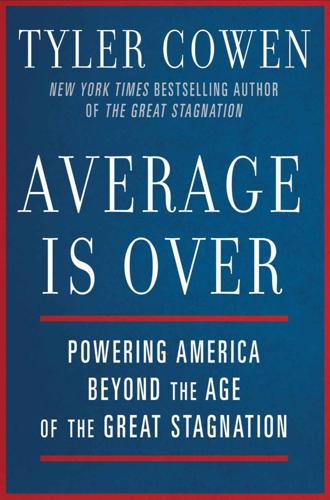
Average Is Over: Powering America Beyond the Age of the Great Stagnation
by
Tyler Cowen
Published 11 Sep 2013
Health care, with its physician licensing, Byzantine hospital regulations, and FDA approval process, also makes most of its changes quite slowly, for better or worse. It’s not just about the laws, but also because doctors and patients often have very conservative or moralistic views about how health care should be done; just look at the recent controversies over stem cell treatments and genetic engineering. Health care is an ethical minefield and arguably we should be especially cautious when evaluating new medical and institutional breakthroughs. In any case, we can expect slower progress. When it comes to mechanized intelligent analysis, patent law can be a problem but for the most part the paths forward are relatively free of regulatory obstacles.
…
K., 234 Russia, 20 Rybka (chess program) and computer chess matches, 72 and evaluation of chess play, 203, 224–25 and Freestyle chess, 47 and human collaboration, 135, 168 and human intuition, 114–15 and performance evaluation, 104 power of, 68 and training human chess players, 102, 106–7, 120, 124, 192–93 Santa Cruz, California, 9–10 Scholes, Myron, 203 Schwarzenegger, Arnold, 134 science, engineering, and math majors (STEM), 21, 22, 27 scientific research and bureaucracy, 210 economics, 221–28 and impossible problems, 211–17 increasing complexity of, 205–6 machine science, 217–20 specialization in, 206–11, 219 screening systems, 121 searching skills, 151–55 Second Life, 145 self-awareness programs, 135 self-education, 188–94, 202 self-employment, 59–63 self-scrutiny, 14 self-service, 113, 118 service sector, 22, 62, 169 Shannon, Claude, 68–69 shanty towns, 245–46 Shogun (game), 135 short-run spending hypothesis, 53–54 Shredder (chess program), 78, 81–82, 105 Sicily, 174–75 Simon, Herbert, 75–76 simulation, 200, 210 “singularity” hypothesis, 137–38 Siri, 7, 17, 72, 119, 121, 149 Siu, Henry, 55 sketches, 146, 147 “Skynet,” 134 Skype, 146 “slackers,” 51, 246 smart phones, 92, 152 Smith, Adam, 28–29, 215 Smith, Vaughan, 26 Snow, Peter, 187 social contract and the fiscal crunch, 231–51 and inequality, 229–31 and political trends, 251–59 social interactions, 12–13, 73, 142 social networks, 188, 209–10, 223 social safety net, 231 social sciences, 224, 227 Social Security, 233, 234–35, 237, 247 social unrest, 253–55, 257 South Korea, 8 Southeast Asia, 171 Soviet Union, 168, 189, 252 Spain, 173–74 Spark (chess program), 70–72, 155–56 specialization in the sciences, 206–11, 219 spelling bees, 187–88 Spence, Michael, 176 spending trends, 54 standardization, 126–31 Stanford University, 193 state budgets, 237 stem-cell research, 17 Stephen, Zackary, 78 stock trading, 74 Stockfish (chess program), 68, 70–72, 155–56 string theory, 212–14 structural unemployment, 37, 55 Sunstein, Cass, 105 supermarkets, 118 supply and demand, 234 support service, 169 Sweden, 161 Switzerland, 161 Tang, Hangwi, 89 taxes and tax policy and the fiscal crunch, 232–34, 236 and political trends, 254, 256, 258 progressive taxation, 256–57 “tax incidence,” 234 TCEC Stage 2a (chess tournament), 156 Tea Party Movement, 251, 256 teaching schools, 196 team-orientation, 28, 36, 207 technical support, 111–13 Technique 2011, 140, 142–43 technological progress, 133 The Terminator (1984), 134 Texas, 239, 241, 247 textile mills, 8 Thaler, Richard, 105 Thatcher, Margaret, 235 theory development, 221–22, 223, 225–26 therapy, online, 145 Thoresen, Martin, 155–56 threshold earners, 202 Thrun, Sebastian, 189, 191 time management, 81 Toiletgate, 149–50 Topalov, Vaselin, 149 tourism, 174, 175 transparency in business, 130 Transportation Safety Administration (TSA), 10 Trefler, Daniel, 164 TripAdvisor, 16 Turing, Alan, 68–69, 141, 143–44 Turing test, 83, 139–51 “tutor kings,” 200–201 Twitter, 154 underemployment, 50, 164 unemployment and freelancing, 59–63 gender disparity in, 31 and geographic trends, 172 and the Great Recession, 54–59 and immigration, 163–71 and in-flow rate, 58 and intelligent machines, 45–50 labor force participation rate, 46 recent trends, 50–54 structural, 37 unskilled labor, 19, 56 US Air Force, 20–21 US Congress, 255 US military, 57 US Supreme Court, 238 USA Memory Championships, 152 utopian visions, 136 Vancouver, British Columbia, 241 Venezuela, 171 Vidal, Gore, 257 video games, 185–88 Virginia Tech, 183–84 virtual schools, 181 vision systems (robotic), 116 visual arts, 146, 147 voice recognition, 119 Vonnegut, Kurt, 126, 247–48 wages and the fiscal crunch, 236 and freelancing, 59–60 and gender, 52–53 and geographic trends, 171–73 and immigration, 163–71 impact of intelligent machines, 136 wages (cont.)

Blitzscaling: The Lightning-Fast Path to Building Massively Valuable Companies
by
Reid Hoffman
and
Chris Yeh
Published 14 Apr 2018
At the Tribe stage you want employees with skill sets flexible enough to pivot along with the company, but if you have hundreds of employees, you better have some pretty well-developed theories about your business and where it is going! Almost any executive hire at the City or Nation stage is going to be a specialist. But even at these largest, latest stages, you should still mix in some number of generalists. Think of generalists as the “stem cells” of your organization. Your body has a small number of stem cells that have the capability to morph into various other types of cells as needed. In a large organization, you may need a small number of people who can perform various functions as needed, whether exploring new products and technologies or tackling issues that lack a well-defined solution.
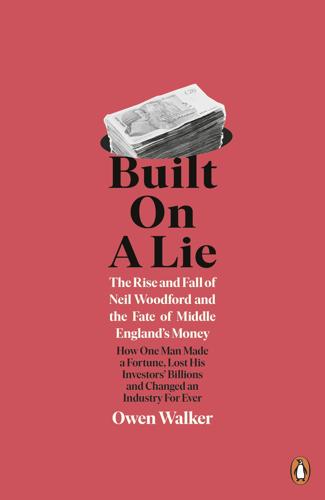
Built on a Lie: The Rise and Fall of Neil Woodford and the Fate of Middle England’s Money
by
Owen Walker
Published 4 Mar 2021
In 2007 it listed on AIM, the UK’s junior stock market, and began trials for a new brain cancer drug that used synthetic versions of chemicals derived from marijuana plants. But three years later it was suffering from a downturn in the biotech sector and was running out of cash. Woodford came to the rescue with a £17 million cash injection. He eventually owned half the business. Another business he helped resuscitate was ReNeuron, which focused on stem cell research and developed drugs for stroke patients. It had launched in 1997 but struggled to find its feet. In 2013 it was on the lookout for £33 million of refinancing, and Woodford was one of a small group of investors who chipped in. As is inevitable with this type of investing, Woodford also suffered some blow-ups.
…
At Invesco Perpetual they had been hidden from view as the company published only Woodford’s top ten holdings, and while Woodford’s interest in small businesses was occasionally mentioned by clued-up IFAs, the full extent of his commitment to such business was unknown until the full portfolio was published. The largest twenty-five companies in the fund had an average market cap of £45 billion, while the other public companies – typically listed on the UK’s junior AIM stock market – averaged just £1.5 billion. Among the smaller businesses was ReNeuron, the stem cell research company valued at just £58 million. Woodford’s investment in the business made up 0.5 per cent of the Equity Income portfolio. Another tiny company, Oxford-based e-Therapeutics, had a market value of £79 million and also made up 0.5 per cent of the fund. There were also six unlisted companies, mainly at the smaller end of the portfolio, but Woodford told investors in a video posted on the group’s new website that he was on the lookout for more.

Tools of Titans: The Tactics, Routines, and Habits of Billionaires, Icons, and World-Class Performers
by
Timothy Ferriss
Published 6 Dec 2016
Patrick introduced me to using teeth for stem-cell banking. If you are having your wisdom teeth removed, or if your kids are losing their baby teeth (which have a particularly high concentration of dental pulp stem cells), consider using a company like StemSave or National Dental Pulp Laboratory to preserve them for later use. These companies will send your oral surgeon a kit, and then freeze the biological matter using liquid nitrogen. Costs vary, but are roughly $625 for setup and then $125 per year for storage and maintenance. Mesenchymal stem cells can later be harvested from the dental pulp of teeth for useful (e.g., bone, cartilage, muscle, blood vessels, etc.), life-changing (e.g., motor neurons for repairing damaged spinal cord), or potentially life-saving (e.g., traumatic brain injury) treatments using your own biological raw materials.
…
If you’re over the age of 40, cancer is one of the four types of diseases (see Dr. Peter Attia on page 59) that will kill you with 80% certainty, so this seems like smart insurance. There is also evidence to suggest—skipping the scientific detail—that fasts of 3 days or longer can effectively “reboot” your immune system via stem cell–based regeneration. Dom suggests a 5-day fast 2 to 3 times per year. Dom has done 7-day fasts before, while lecturing at the University of South Florida. On day 7, he went into class with his glucose between 35 and 45 mg/dL, and his ketones around 5 mmol. Then, before breaking the fast, he went to the gym and deadlifted 500 pounds for 10 reps, followed by 1 rep of 585 pounds.

The Girl in the Road
by
Monica Byrne
Published 19 May 2014
I started opening drawers. I found stacks of disposable gowns and tied one around my middle. It was very messy and inexact and the wound was bleeding down my legs. I began to feel glimpses of pain. In another drawer I found all kinds of medical supplies and stuffed them into my bag—boxes of nanobiotics and stem-cell strips and tubes of surgical glue. I used more disposable gowns to slough the blood off my arms and legs as best I could. There were street clothes on pegs near the door; I picked a big red T-shirt that fit over my makeshift dressings, and black denim jeans that were three sizes too big for me, and fastened them on with a brown belt.
…
The pain was so great I thought I would faint. I made myself take deep breaths. I knew you wouldn’t abandon me now, having brought me so far. I had to have faith. I leaned back against the wall to make my torso as flat as possible, then used my hand to move the two walls of the incision together. With my other hand, I peeled a stem-cell strip out of its wrapper and laid it across the wound. I added one more on top of that, and then three more perpendicularly just to make sure. The wrapper instructed me to bind it over with gauze, but I had none, so I picked the bloody dressing gown back up off the bathroom floor and re-bound it around my hips.
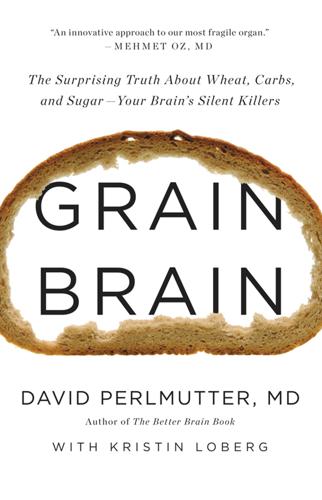
Grain Brain: The Surprising Truth About Wheat, Carbs, and Sugar--Your Brain's Silent Killers
by
David Perlmutter
and
Kristin Loberg
Published 17 Sep 2013
Although scientists have long proven neurogenesis in various other animals, it wasn’t until the 1990s that scientists began focusing exclusively on trying to demonstrate neurogenesis in humans.3 In 1998, the journal Nature Medicine published a report by Swedish neurologist Peter Eriksson in which he claimed that within our brains exists a population of neural stem cells that are continually replenished and can differentiate into brain neurons.4 And indeed, he was right: We all experience brain “stem cell therapy” every minute of our lives. This has led to a new science called neuroplasticity. The revelation that neurogenesis occurs in humans throughout our lifetimes has provided neuroscientists around the world an exciting new reference point, with implications spanning virtually the entire array of brain disorders.5 It also has instilled hope among those searching for clues to stopping, reversing, or even curing progressive brain disease.
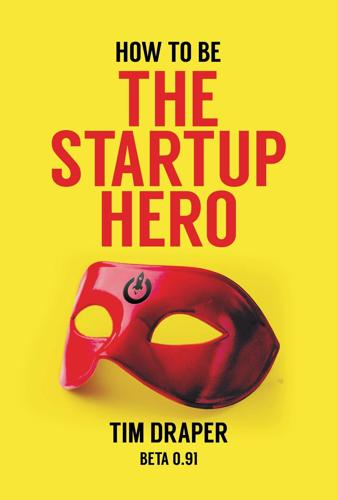
How to Be the Startup Hero: A Guide and Textbook for Entrepreneurs and Aspiring Entrepreneurs
by
Tim Draper
Published 18 Dec 2017
If other scientists decide to follow suit and we get an open source outflowing of scientific ideas and collaboration, science could go through the same explosion that we have had in entrepreneurship in Silicon Valley, and human progress will again be accelerated. Look for industries to improve: healthcare, entertainment, real estate, insurance, fashion and banking. Look for new technologies to improve them with: the shared economy, social media, programmable stem cells, CRISPR, microsatellites, virtual reality, Bitcoin, solar economies, self-driving cars, electronic clothes, bioelectronics, robot brains, prosthetic limbs, Pokémon derivatives, offline massively open online courses (MOOCs), enterprise software, and multivariable authenticators. Put them together to approach or even invent new technology industries.
…
It got me thinking that Earth might just be a small bacterium in the stomach of some greater celestial body. But that might be a discussion better suited for my sci-fi novel….Watch for it. Joon Yun is also interested in the idea of transplants as it relates to human longevity. Joon put together a longevity conference, where scientists were talking about fetal cell transplants, and how young stem cells are more effective than older ones. I took that concept and came up with the idea that instead of implanting fetal cells in people, doctors could just implant baby poop to reinvigorate the intestine, which may change the metabolism of the whole body. Another example of using one’s surroundings to come up with a breakthrough came when I was outside watching as bees flew happily into a bee trap.
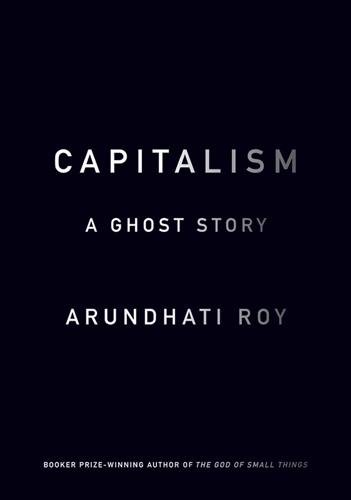
Capitalism: A Ghost Story
by
Arundhati Roy
Published 5 May 2014
Capitalism, he said, “has conjured up such gigantic means of production and of exchange, that it is like the sorcerer who is no longer able to control the powers of the netherworld whom he has called up by his spells.”3 In India the 300 million of us who belong to the new, post–International Monetary Fund (IMF) “reforms” middle class—the market—live side by side with spirits of the netherworld, the poltergeists of dead rivers, dry wells, bald mountains, and denuded forests; the ghosts of 250,000 debt-ridden farmers who have killed themselves, and of the 800 million who have been impoverished and dispossessed to make way for us.4 And who survive on less than twenty Indian rupees a day.5 Mukesh Ambani is personally worth $20 billion.6 He holds a majority controlling share in Reliance Industries Limited (RIL), a company with a market capitalization of $47 billion and global business interests that include petrochemicals, oil, natural gas, polyester fiber, Special Economic Zones, fresh food retail, high schools, life sciences research, and stem cell storage services. RIL recently bought 95 percent shares in Infotel, a TV consortium that controls twenty-seven TV news and entertainment channels, including CNN-IBN, IBN Live, CNBC, IBN Lokmat, and ETV in almost every regional language.7 Infotel owns the only nationwide license for 4G broadband, a high-speed information pipeline which, if the technology works, could be the future of information exchange.8 Mr.
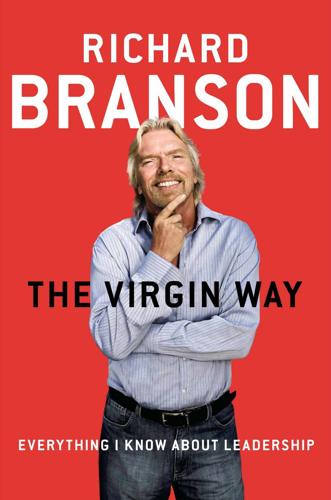
The Virgin Way: Everything I Know About Leadership
by
Richard Branson
Published 8 Sep 2014
‘Give Stuff’ is based on the old saying that ‘One man’s junk is another man’s treasure’ and we ask people to do a quick raid of their old clothes, linens, furniture – anything they no longer use – and bring it all in for central collection. ‘Give Life’ encourages people to go and sign up for blood donations, the organ donor register and (in the UK) the Anthony Nolan stem cell and bone marrow register. Virgin Media also introduced a policy that gives anyone called up for stem cell or bone marrow donations one week’s paid leave to recuperate. The internal (tongue in cheek named) ‘Give a Shout’ programme allows people to recognise the efforts of their peers with a message on their personal homepage – also entering them into a draw to win one of many £50 vouchers each month.

Physics in Mind: A Quantum View of the Brain
by
Werner Loewenstein
Published 29 Jan 2013
That sort of simple topographic arrangement is repeated at the pyramidal-cell layer of the cortex—alike connects to alike. Buck and colleagues more recently took the analysis a step further in mice. They genetically engineered mice that would express a marker protein in the olfactory sensory cells. The gene for the marker was inserted into embryonic stem cells next to the coding region of the gene for the sensory protein, and from those stem cells mice developed that expressed the marker concurrently with the sensory protein. The marker passed transynaptically from neuron to neuron, outlining the information channels from stem to stern. Two such channels are schematically represented in figure 7.2, illustrating how the corresponding domains at the sensory periphery map on the olfactory bulb and cortex.
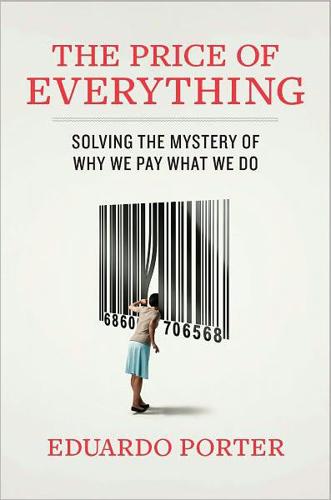
The Price of Everything: And the Hidden Logic of Value
by
Eduardo Porter
Published 4 Jan 2011
Donors can only recover out-of-pocket costs plus “reasonable expenses” of up to £55.19 per day—to a maximum of £250—to cover their forgone earnings. It makes a difference what the eggs will be used for. In California it is legal for a woman to sell her eggs for fertilization but not for research. If she wants to provide them for research, she must offer them for free. In New York, by contrast, the Empire State Stem Cell Board authorizes using state research funds to pay up to $10,000 to egg donors. Many transactions that are perfectly normal in one part of the world or at one point in time are considered repugnant in another. Indentured servitude, once a common way for Europeans to buy passage to America, today is banned across the world.
…
demand democracy Deng Xiaoping Denmark, Danes Denver shoppers deregulation Descartes, René Desperate Housewives (TV show) developing world climate change in garbage dumps in sex in Dickens, Charles Digital Rights Management technologies (DRM) discount rate discrimination divorce finances and dogs, as food dot.com bubble dowries drivers drugs abuse of Duke University Dunkin’ Donuts dwarf tossing Easter Island Easterlin, Richard Eastern Europe, former Soviet satellites in Eastman, George Eastman Kodak Company economic growth happiness and economics for a new world “Economics of Superstars, The” (Rosen) education of children wages and of women efficient markets eggs Egypt, Egyptians Ehrlich, Paul R. Eisenhower, Dwight D. elderly people/senior citizens elections U.S. electricity elephant-seal cows Elías, Julio Jorge e-mail, spam and Emergency Highway Energy Conservation Act (1974) Empire State Stem Cell Board encyclopedias, free energy engagement rings engineers England environment see also climate change; pollution Environmental Protection Agency (EPA) Epson ESP printers Essay on the Principle of Population, An (Malthus) Ethiopia Ethnographic Atlas (Murdock) eToys Eurobarometer surveys Europe Catholic Church in decline of polygamy in happiness in lack of sprawl in U.S. compared with work hours in see also Western Europe European Climate Exchange European Union evangelical Christianity executive pay ExxonMobil faith benefits of cheap cost of Fallaci, Oriana families changes to culture and income of of 9/11 victims size of Fanning, Shawn (the Napster) Federal Communications Commission Federal Food, Drug, and Cosmetic Act, Delaney Clause to (1958) Federal Reserve Federal Trade Commission (FTC) “Feeding the Illusion of Growth and Happiness” (Easterlin) Feinberg, Kenneth fertility decline in female file sharing film financial crises financial services fines fire departments fishing floors Florence foeticide food culture and faith and preparation of price increases for surpluses of Food and Agriculture Organization Food Quality Protection Act (1996) Ford Ford, Henry Foreign Corrupt Practices Act Fourier, Charles France happiness in work hours in Frank, Robert Free (Anderson) Freedom Communications free lunch, use of term free rider problem free things broadcast TV and movies music and Napstering the world and profiting from ideas freeware Freud, Sigmund fuel see also gas Fundamentalist Church of Jesus Christ of Latter-day Saints future ethics of mispricing nature and price of Gabaix, Xavier Gallup polls Gandhi garbage gas price of General Motors (GM) General Social Survey General Theory of Employment, Interest and Money, The (Keynes) genetics, genes Germany happiness in Germany, Nazi Gershom ben Judah Ghosts I-IV (album) gifts Glass-Steagall Act (1933) GlaxoSmithKline globalization global warming Goa God Goldin, Claudia goods Google Google News Gore, Al Gorton, Mark government hostility toward intervention of resource allocation of Great Britain bubbles in gas prices in happiness in politics in Great Depression Greece, ancient green revolution (1960s and 1970s) Greenspan, Alan gross national happiness (GNH) index Haiti Hammurabi Hanna, Mark happiness faith and genetics and life-cycle curve of loss aversion and money and problems with defining of right-left gap in U.S. trade-off and Hare Krishna Society Harvard University Haryana health health care health insurance Health Ministry, New Zealand Healthway Heinrich, Armin Hindus, Hinduism HIV homeland security, U.S.
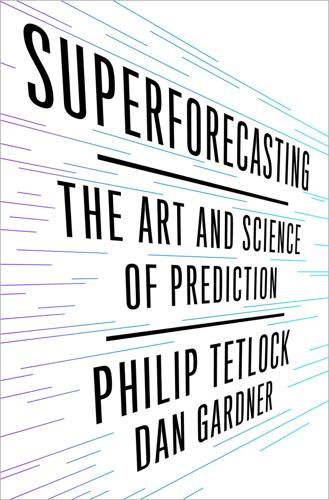
Superforecasting: The Art and Science of Prediction
by
Philip Tetlock
and
Dan Gardner
Published 14 Sep 2015
Following best practices improves their odds of winning but less reliably so than in games where chance plays smaller roles.15 Even with a growth mindset, the forecaster who wants to improve has to have a lot of what my colleague Angela Duckworth dubbed “grit.” Elizabeth Sloane has plenty of grit. Diagnosed with brain cancer, Elizabeth endured chemotherapy, a failed stem-cell transplant, recurrence, and two more years of chemo. But she never relented. She volunteered for the Good Judgment Project to “re-grow her synapses.” She also found an article by a top oncologist that described her situation perfectly, leading to a promising new stem-cell transplant. “And here I am about to be cured,” she e-mailed GJP project manager Terry Murray. “It is amazing that I have a second chance.” Grit is passionate perseverance of long-term goals, even in the face of frustration and failure.
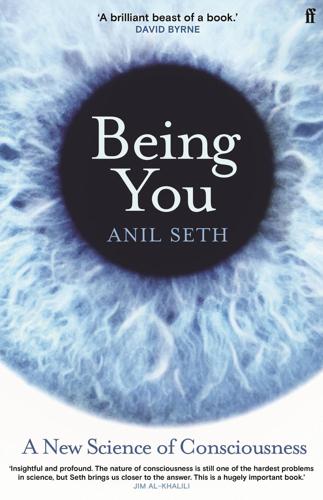
Being You: A New Science of Consciousness
by
Anil Seth
Published 29 Aug 2021
The ethics of creating new forms of life is suddenly very relevant indeed. And perhaps it will be biotechnology, rather than AI, that brings us closest to synthetic consciousness. Here, the advent of ‘cerebral organoids’ is of particular significance. These are tiny brain-like structures, made of real neurons, which are grown from human pluripotent stem cells (cells which can differentiate into many different forms). Although not ‘mini brains’, cerebral organoids resemble the developing human brain in ways which make them useful as laboratory models of medical conditions in which brain development goes wrong. Could these organoids harbour a primitive form of bodiless awareness?
…
‘A measure for brain complexity: relating functional segregation and integration in the nervous system’. Proceedings of the National Academy of Sciences of the USA, 91(11), 5033–7. Trujillo, C. A., Gao, R., Negraes, P. D., et al. (2019). ‘Complex oscillatory waves emerging from cortical organoids model early human brain network development’. Cell Stem Cell, 25(4), 558–69 e557. Tschantz, A., Barca, L., Maisto, D., et al. (2021). ‘Simulating homeostatic, allostatic and goal-directed forms of interoceptive control using active inference’. https://www.biorxiv.org/content/10.1101/2021.02.16.431365v1 Tschantz, A., Millidge, B., Seth, A. K., et al. (2020a).

Merchants of the Right: Gun Sellers and the Crisis of American Democracy
by
Jennifer Carlson
Published 2 May 2023
According to their own accounts, long before 2020, many of the gun sellers I interviewed had approached media elites with consternation and assumed that the information disseminated through these channels would be biased, motivated, or simply not credible. Indeed, this style of apprehension already had been fostered for decades by protracted campaigns among conservative think tanks, politicians, and leaders—using tactics borrowed from corporate entrepreneurs43—to question scientific consensus regarding climate change, stem cell research, and gun policy. Meanwhile, conservatives (but not liberals) have exhibited marked declines in confidence in knowledge-producing elites since the 1970s.44 Further, the news media itself has changed to facilitate anti-elitism in journalism: “the lines between activist and journalist, news and rumor, and new and old media are not only blurred but also made increasingly obsolete,”45 as Khadijah Costley White, author of The Branding of Right-wing Activism, notes.46 Coming on the heels of Trump’s routine degradation of elites, particularly media elites, as treasonous and anti-America,47 the pandemic was easily poised to validate the apprehension that many gun sellers already brought into 2020.
…
As Tripodi (2018: 6–7) notes, “A quest for truth may start in good faith, but … bad actors looking to exploit an audience disillusioned with mainstream media are taking advantage of this intellectual exploration.” Gauchat (2012) finds that right-leaning Americans are more likely to distrust scientific elites, oppose government funding of science, and resist the use of scientific findings to support government policy. On issues as diverse as climate change, stem cell research, or gun policy, conservatives are more likely to doubt scientific expertise than their liberal counterparts—and they are also more likely to doubt the scientists themselves. Mann and Schleifer (2020) find that anti-science attitudes among conservatives are driven by a distaste for scientists rather than science itself.
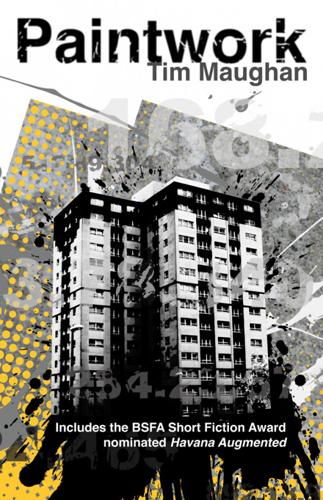
Paintwork
by
Tim Maughan
Published 28 Jul 2011
The only major differences are he’s carrying a few extra pounds - but then who doesn’t make their avi a bit slimmer? - and those legs. The completely lifeless, unmoving, awkwardly-angled legs. “Can’t you get them fixed?” “In theory, yeah. My spinal cord was severed near the base, so a few months of stem-cell insertion and stimulation and it should re-grow itself.” Tera shrugs. “Apparently I’m on a waiting list. Have been for at least 12 years now. NHS. Only alternative is to go private, but you wouldn’t believe how much that costs. We have the technology, if you have the money. Viva la singularity”.
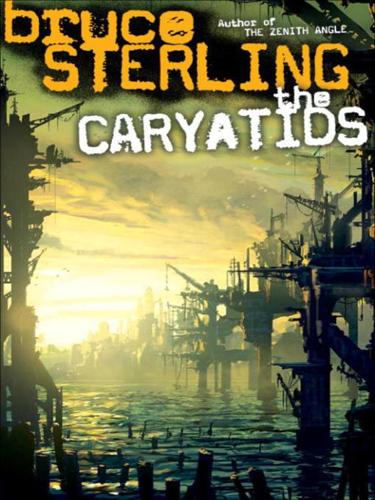
The Caryatids
by
Bruce Sterling
Published 24 Feb 2009
Herbert smiled at this bleak threat, imagining that he was being brave. “Vera, let me make something clear to you. Your fellow cadres and I: We care for you deeply. We always want to spare your feelings. But: Everybody here on Mljet knows all about those criminal cloning labs. We know. Everybody knows what your mother was doing with those stem cells, up in the hills. They know that she was breeding super-women and training them in high technology—the ‘high technology’ of that period, anyway. That foolishness has all been documented. There were biopiracy labs all over this island. You—you and your beautiful sisters—you are the only people in the world who still think that local crime wave is a secret.”
…
Radmila had spent a great deal of the Family’s money at the hair designers’—for the Family partly owned the lab. This fact didn’t make the local hair designers treat Radmila any better. On the contrary. Presented with a fresh surge of Family capital, they had simply and brusquely ripped out all of her hair. The new implants, their roots soaked in fresh stem cells, were state-of-the-art: radiant blond filaments that were genuine human hair, but with a much-enhanced ability to behave. Radmila’s damaged scalp was soaked with hot, wet, antiseptic foam. Her head was locked by a stainless fume hood where robot surgical arms whirred on tracks, took unerring aim, and deftly pierced her scalp.

#Republic: Divided Democracy in the Age of Social Media
by
Cass R. Sunstein
Published 7 Mar 2017
The correction turned out to increase people’s commitments to the proposition in question: “Conservatives presented with evidence that tax cuts do not increase government revenues ended up believing this claim more fervently than those who did not receive a correction.”55 Liberals are hardly immune to this effect.56 In 2005, many liberals believed, wrongly, that President Bush imposed a ban on stem cell research. Presented with a correction from the New York Times or foxnews.com, liberals continued to believe what they did before. By contrast, conservatives accepted the correction. Hence the correction produced an increase in polarization. Importantly but not surprisingly, it mattered, in terms of the basic effect, whether the correction came from the New York Times or Fox News: conservatives distrusted the former more, and liberals distrusted the latter more.
…
See also specific service solidarity goods, 58, 141–44 Somalia, 239 sound bites, 43, 151, 224, 268n19 sovereignty: absolute, 203; Brandeis on, 52–57; communications and, 260; consumer, 30, 52–58, 89, 124, 134, 145, 157, 159, 167–69, 193–96, 199, 202–3, 212, 253, 260; “Declaration of the Independence of Cyberspace” and, 178; democratic institutions and, 167–69; filtering and, 134 (see also filtering); freedom and, 44, 53, 55–56, 58, 145, 157, 159, 260; Holmes on, 52–57; Internet and, 52, 55; political, 52–55, 203; republicanism and, 44–45; self-government and, 54; social media and, 52–53; technology and, 188 Soviet Union, ix, 164, 189 special-interest intermediaries, 20 speech market, 26, 73, 89, 111, 190, 195, 253 sports, 18 Stalin, Joseph, ix, 180 Stanford University, 61, 133 status quo, 151, 165, 170, 233 stem cell research, 94 Stengel, Richard, 238 Stewart, Jon, 77 Stewart, Potter, 22 street corners, 25–26, 36, 142 subsidies, 35, 44, 183, 210–12, 215, 225–26 Syria, 18, 79, 242, 246, 283n22 tabloidization, 223–24 technology: automobiles, 8, 26, 186, 267n2; communications and, 26, 146 (see also communications); conveniences of, 31–32; cultural cognition and, 129–30; hacking, 109, 178, 184, 186, 188, 201; ILOVEYOU virus and, 176–78, 186, 191, 207; innovation and, 5, 133, 183, 243; legal issues and, 184–88; nanotechnology, 95–96, 129; net neutrality and, 29; newspapers and, 152–53; sovereignty and, 188; V-chip and, 219; virtual reality and, 13, 33, 71, 140, 243 Telecommunications Act, 219–20 television: ABC, 152, 179, 181, 198; advertising and, 28; bias and, 64, 151–52; Broadcasting Authority and, 140; CBS and, 19, 152, 179–81, 185, 197–98, 228; citizens and, 158, 165–66, 169, 173; CNN and, 62, 64–65, 115, 126, 228–29; Daily Me and, 1–2, 10; disclosure policies and, 215, 218–22; educational programming and, 170, 181, 197–99, 202, 204–5, 210–11, 221, 226; educational programming for children and, 170, 181, 197–99, 202, 204–5, 210–11, 221, 226; fairness doctrine and, 84–85, 207, 221, 227; filtering and, 1, 25–26 (see also filtering); First Amendment and, 196–99; forms of neutrality and, 207–10; Fox, 22, 61–62, 64–65, 72, 94–95, 115–16, 120, 152, 162, 180, 222, 228–29; freedom of speech and, 194–99, 202–5, 209–10; improving, 213, 215, 219–27; isolation and, 116; must-carry rules and, 226–29; National Association of Broadcasters and, 197–98; NBC, 61–62, 152, 179–80, 198; one-channel policies and, 140–41; particular histories of, 20; PBS, 179, 225–26; polarization and, 62, 64, 66, 71–73, 75, 77, 83–84; politics and, 64; President’s Advisory Committee on the Public Interest Obligations of Digital Television Broadcasters and, 196–98; public forums and, 41, 43; public sphere and, 153; Putnam on, 267n2; ratings system for, 219–20; Red Lion Broadcasting v.
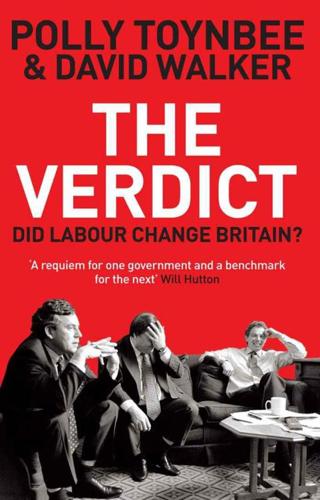
The Verdict: Did Labour Change Britain?
by
Polly Toynbee
and
David Walker
Published 6 Oct 2011
Labour, as a quid pro quo to the free-speech lobby and as a sop to faiths that resented Christianity’s unique protection, used the 2008 Criminal Justice and Immigration Act to abolish the offence of blasphemy in England and Wales. The courts had already discarded it; after the BBC broadcast Jerry Springer: The Opera in January 2005, the fundamentalist group Christian Voice failed to persuade the judges to convict. And on such religious totems as abortion and stem cell research, rationalism ruled OK among Labour ministers. The worldwide scare over the Y2K millennium bug has become a classic of media hype and public gullibility – there was panicky talk of machines stopping and planes falling out of the sky. Ministers kept their cool and in October 1999, a couple of months before the witching hour, the NAO reported that the non-profit company Action 2000 set up by Whitehall to check IT systems had flashed only a couple of amber risks.
…
Index 9/11 attacks, 1, 2, 3, 4, 5, 6, 7, 8, 9 A levels, 1 Aberdeen, 1 abortion, 1, 2, 3 Abuhamza, Junaid, 1 AC Milan, 1 Acme Whistles, 1 Action for Children, 1 Adams, Douglas, 1 Adonis, Andrew, 1 Advisory, Conciliation and Arbitration Service, 1 Afghanistan, 1, 2, 3, 4, 5, 6, 7, 8, 9 Helmand province, 1, 2, 3, 4, 5, 6 Africa, 1, 2, 3 after-school clubs, 1, 2, 3 Age of Stupid, 1, 2 Ahern, Bertie, 1 Ahmadinejad, Mahmoud, 1 Ainsworth, Bob, 1 aircraft-carriers, 1 Al Qaeda, 1, 2, 3, 4 Albania, 1 alcohol consumption, 1, 2 and crime, 1, 2, 3 Alexander, Professor Robin, 1 Alzheimer’s disease, 1 Amritsar massacre, 1 Amsterdam summit, 1, 2 Anderson, Lance Corporal George, 1 animal welfare, 1, 2 anti-social behaviour orders (Asbos), 1, 2, 3 apprenticeships, 1, 2 Arafat, Yasser, 1 archaeological artefacts, 1 Arctic Monkeys, 1 Armistice Day, 1 arms trade, 1, 2 Armstrong, Franny, 1 arts budget, 1 Ashmolean Museum, 1 asthma, 1, 2 asylum seekers, 1, 2, 3, 4 Attenborough, Richard, 1 Attlee, Clement, 1 August, Kathy, 1 Austin, Richard, 1 Australia, 1, 2, 3 Austria, 1 autism, 1 aviation, 1 Aylesbury, 1 Baghdad, 1 Baker, Mike, 1 Bakewell, Joan, 1 Bali, 1 Balls, Ed, 1, 2, 3 Bank of England, 1, 2 Barber, Sir Michael, 1 Barker, Kate, 1 Barnardo’s, 1 Barnet Hospital, 1 Barton, Geoff, 1 Basildon and Thurrock Hospital, 1 Basra, 1, 2, 3 Bean, Richard, 1 Beattie, Captain Doug, 1 Beckham, David, 1 Belarus, 1 Belfast, 1, 2, 3 Belgium, 1 Belize, 1 Benn, Hilary, 1, 2 Bennett, Alan, 1 Berlusconi, Silvio, 1 Beveridge, William, 1 Bichard, Sir Michael, 1 Big Brother, 1, 2 Bilbao, 1 Billington, Michael, 1 bin Laden, Osama, 1, 2 Bingham, Lord, 1 Birk, Andy, 1, 2, 3 Birmingham, 1, 2, 3, 4, 5 Aston, 1, 2, 3 Longbridge car plant, 1 and transport policy, 1, 2 birth rate, 1 Black Wednesday, 1 Blackburn, 1, 2 Blackpool, 1 Blair, Cherie, 1 Blair, Tony, 1, 2 and asylum seekers, 1, 2 and child poverty, 1, 2, 3, 4 and climate change, 1, 2 and constitutional reform, 1, 2 and crime, 1, 2, 3 and cultural policies, 1, 2, 3, 4, 5 and economic policies, 1, 2, 3, 4, 5 and education, 1, 2, 3, 4, 5, 6 and Europe, 1 and fairness, 1, 2, 3 foreign policy and Iraq war, 1, 2, 3, 4, 5, 6, 7, 8 and health, 1, 2, 3, 4, 5 and Northern Ireland, 1 and Princess Diana, 1, 2 public apologies, 1 and public sector reform, 1, 2 and religion, 1 and ‘respect’ agenda, 1 style of government, 1 technophobia, 1, 2 and transport, 1, 2 Blears, Hazel, 1, 2 Bloody Sunday inquiry, 1 Bloomberg, Michael, 1 Bloxham, Tom, 1 Blunkett, David, 1, 2 and crime, 1, 2, 3, 4 and education, 1, 2, 3, 4, 5, 6 and migration, 1 BMW, 1 Bobbitt, Philip, 1 Boddingtons’ brewery, 1 Bolton, 1 Boothroyd, Betty, 1 Bosnia, 1 Boston, Lincolnshire, 1, 2, 3, 4 Bowman, Philip, 1 Boyle, Danny, 1 Bradford, 1, 2, 3, 4, 5 Bradford and Bingley, 1 Bradshaw, Ben, 1 Branson, Richard, 1 Brassed Off, 1 Brazil, 1 breastfeeding, 1, 2 Brent, 1 Brighton, 1, 2 Brindle, David, 1 Bristol, 1 Bristol Royal Infirmary, 1 Britain’s Got Talent, 1 British Airways strikes, 1 British Association of Aesthetic Plastic Surgeons, 1 British Energy, 1 British Film Institute, 1 British Medical Association, 1, 2 British Museum, 1 British National Party (BNP), 1, 2, 3 Brixton, 1 broadband services, 1 Brown, Gordon, 1, 2, 3, 4 and climate change, 1, 2, 3 and constitutional reform, 1 and crime, 1, 2, 3 and cultural policies, 1, 2, 3, 4, 5, 6 and defence policy, 1 and economic policies, 1, 2, 3, 4, 5, 6, 7, 8, 9 and education, 1, 2 and Europe, 1 and fairness, 1 and foreign policy, 1, 2, 3, 4, 5, 6, 7 and G20 summit, 1, 2 and health, 1 and pensions, 1, 2 and PFI, 1 and public sector reform, 1 style of government, 1, 2 and tax credits, 1, 2 and transport, 1 Bruges, 1 Brussels, 1, 2, 3, 4, 5 Bryant, Chris, 1 BSE (mad cow disease), 1, 2 Buffini, Damon, 1 Bulgaria, 1 Bulger, Jamie, 1 Buncefield explosion, 1 Burgess, Graham, 1 Burma, 1, 2 Burnham, Andy, 1 buses, 1, 2 Bush, George W., 1, 2, 3, 4 business, 1 company governance, 1 competition policy, 1 see also manufacturing Business Links, 1, 2 Cable, Vince, 1 Cadbury, 1 Caine, Judy, 1 Callaghan, James, 1 Cameron, David, 1, 2, 3, 4 Campaign for Real Ale, 1 Campbell, Alastair, 1, 2 Campbell, Naomi, 1 Canada, 1 cancer research, 1 cannabis, 1, 2 Cannock Chase Hospital, 1 Capel Manor College, 1 Carbon Trust, 1 Cardiff, 1, 2 Millennium Stadium, 1 see also Welsh assembly Care Quality Commission, 1, 2, 3 carers, 1 Carousel children’s centre, 1 Casey, Louise, 1, 2 casinos, 1 Castle, Barbara, 1 cataracts, 1, 2 Cator Park School, 1 CCTV, 1, 2, 3 celebrity culture, 1 Central Office of Information, 1 Ceuta, 1 Charity Commission, 1 Charleroi, 1 Chase Farm Hospital, 1, 2, 3 Cheltenham, 1 Cheney, Dick, 1 Chicago, 1 Chilcot inquiry, 1, 2, 3, 4 Child Maintenance and Enforcement Commission, 1 child poverty, 1, 2, 3, 4, 5, 6, 7, 8, 9, 10, 11 Child Support Agency, 1 child trafficking, 1 Child Trust Funds, 1, 2 childcare, 1, 2, 3, 4, 5, 6 children, 1 in care, 1 and crime, 1, 2 and pre-school education, 1 and reading, 1, 2 and safety, 1 and targets, 1 children’s centres, 1, 2, 3 Chile, 1 China, 1, 2, 3, 4, 5, 6, 7 and foreign policy, 1, 2, 3, 4 Chinese cockle pickers, 1 Christian Voice, 1 Chumbawamba, 1 Church of England, 1 Churchill, Winston, 1 cigarette smoking, 1, 2, 3, 4, 5, 6 see also smoking ban citizenship curriculum, 1 City of London, 1, 2, 3, 4, 5, 6, 7 City of London police, 1 civil partnerships, 1 civil service, 1 Clapham Common, 1 Clapham Park estate, 1, 2 Clarke, Charles, 1 Clarke, Ken, 1, 2 Clarke, Michael, 1 Clarkson, Jeremy, 1, 2 ‘clean technologies’, 1 Cleveland Way, 1 climate change, 1, 2, 3, 4, 5 and transport and energy policies, 1 Climbié, Victoria, 1 Clinton, Bill, 1, 2, 3 Clitheroe, 1 cloning, 1 coal, 1 coalition government, 1, 2, 3, 4, 5 Cockermouth, 1 Cohen, Sir Ronnie, 1 Cole, Vanessa, 1 Collins, Colonel Tim, 1 Comer, Beryl, 1, 2, 3, 4 Common Agricultural Policy, 1, 2 community sentences, 1 Confederation of British Industry (CBI), 1, 2, 3, 4, 5, 6 conflict diamonds, 1 Congo, 1 Connelly, Peter (Baby P), 1 Connexions, 1, 2 Contactpoint database, 1 Cook, Robin, 1, 2 Cool Britannia, 1, 2 Cooper, Robert, 1 Cooper, Yvette, 1 Copenhagen summit, 1, 2, 3, 4, 5, 6 Corby, 1, 2 Corn Laws, repeal of, 1 Cornwall, 1, 2 Coronation Street, 1 coroners, 1 Corus, 1 Countryside Alliance, 1, 2 County Durham, 1 Coventry, 1, 2, 3 Cowley, Philip, 1 Cox, Brian, 1 Crawford, Texas, 1 creative industries, 1, 2 credit card debt, 1 Crewe and Nantwich by-election, 1 Crick, Bernard, 1 cricket, 1 Crime and Disorder Reduction Partnerships, 1 crime, 1 car crime, 1 cyber-crime, 1 and demography, 1, 2 and drugs, 1 gun crime, 1, 2 juvenile crime, 1, 2, 3 knife crime, 1, 2 organized crime, 1, 2, 3 street crime, 1 Criminal Records Bureau, 1 Cruddas, Jon, 1 Cullen, Janet, 1, 2, 3, 4 Cumner-Price, George, 1 cycling, 1, 2, 3 Cyprus, 1, 2 Daily Mail, 1, 2, 3, 4, 5 Daily Telegraph, 1 Darfur, 1 Darling, Alistair, 1, 2, 3 Darwen, 1, 2 Darzi, Lord (Ara), 1 Data Protection Act, 1, 2 Davies, Norman, 1 Davies, Ron, 1 Davis, David, 1 Dearlove, Sir Richard, 1 defence policy, 1, 2, 3, 4, 5 Delhi, 1 dementia, 1 demonstrations, policing of, 1 Demos, 1 Denham, John, 1 Denison, Steve, 1 Denmark, 1, 2 dentistry, 1 depression, 1 Derby, 1 devolution, 1, 2, 3, 4, 5, 6, 7 Dewar, Donald, 1, 2 diabetes, 1 Diana, Princess of Wales, 1, 2, 3 Dilnot, Andrew, 1 disabilities, 1, 2, 3, 4, 5 disarmament, 1 divorce rate, 1 DNA database, 1 Dobson, Frank, 1, 2 doctors consultants, 1 GPs, 1, 2, 3 night and weekend cover, 1 pay, 1, 2, 3 working hours, 1 domestic violence, 1, 2, 3, 4 Doncaster, 1, 2, 3 Dongworth, Averil, 1 Dorling, Professor Danny, 1, 2, 3 Drayson, Paul, 1 drones, 1 drug dealers, 1, 2 drugs, 1, 2, 3 Dublin, 1 Duffy, Bobby, 1 Dundee, 1 Dunn, John, 1 Dunwoody, Gwyneth, 1 EastEnders, 1 Ecclestone, Bernie, 1 ‘eco towns’, 1 ecstasy, 1 Edinburgh, 1, 2, 3 see also Scottish parliament Edlington, 1 education, 1 further education and training, 1, 2, 3, 4 higher education, 1, 2, 3, 4, 5, 6 nursery education, 1 productivity in, 1 pre-school education, 1 and selection, 1, 2 and social class, 1, 2 spending on, 1, 2 and targets, 1, 2, 3 Welsh Assembly and, 1 see also schools education action zones, 1 Education Maintenance Allowance, 1, 2, 3 e-government, 1, 2 Egypt, 1 electoral reform, 1, 2, 3 electricity generation, 1, 2 Elgar, Edward, 1 Elgin marbles, 1 Elizabeth, Queen, the Queen Mother, 1 Elizabeth II, Queen, 1, 2, 3 employee buy-outs, 1 employment, 1 flexible, and migration, 1 part-time, 1, 2 state and ‘parastate’, 1, 2 women and, 1, 2 working hours, 1, 2 energy policies, 1 English for Speakers of Other Languages, 1 English Heritage, 1 Enron, 1 Environment Agency, 1, 2 equalities legislation, 1, 2, 3 Equality and Human Rights Commission, 1, 2, 3 Ericsson, 1 ethnic minorities, 1 euro, 1, 2 Eurofighter, 1 European Court of Human Rights, 1 European Union, 1, 2 European Union Emission Trading Scheme, 1 Eurostar, 1 Exeter, 1 Fairtrade products, 1 Falconer, Charlie, 1 Falklands War, 1 Family Intervention Projects (FIPs), 1 Farlow, Andrew, 1 farmers, 1, 2 fashion, 1 Feinstein, Professor Leon, 1, 2 Financial Services Authority, 1 financial services, 1, 2, 3 Financial Times, 1 Finland, 1 fire and rescue service, 1 fiscal stimulus, 1 floods, 1, 2, 3, 4 Florence, 1 flu, 1, 2 swine flu, 1, 2 Folkestone, 1 food and drink, 1, 2 foot-and-mouth disease, 1, 2 football, 1, 2, 3 Football Association, 1 forced marriages, 1 foreign policy, 1, 2, 3 France, 1, 2, 3, 4 economy and business, 1, 2 and education, 1, 2 and health, 1, 2, 3 Frankfurt am Main, 1 Franklin, Tom, 1 Frears, Stephen, 1 free speech, 1, 2 freedom of information, 1, 2, 3, 4, 5, 6 Freud, Lord, 1 Full Monty, The, 1 Future Jobs Fund, 1 G20 summit, 1, 2, 3 Gainsborough, 1 Galbraith, J.K., 1 Gallagher, Liam, 1 Gallagher, Noel, 1 gambling, 1 gangmasters, 1, 2 gas, 1 Gates, Bill, 1 Gateshead, 1 Gaza, 1 GCHQ, 1 GCSEs, 1, 2, 3, 4 Gehry, Frank, 1 Geldof, Bob, 1 gender reassignment, 1 General Teaching Council, 1 genetically modified crops, 1 Germany, 1, 2, 3, 4, 5, 6, 7 economy and business, 1, 2, 3, 4 and education, 1, 2 and health, 1, 2 Ghana, 1 Ghandi’s curry house, 1 Ghent, 1 Gladstone, William Ewart, 1, 2 Glaister, Professor Stephen, 1 Glasgow, 1, 2, 3, 4 Gleneagles summit, 1, 2, 3, 4, 5 globalization, 1, 2, 3, 4, 5, 6, 7 and crime, 1 and foreign policy, 1, 2, 3 and inequality, 1 and migration, 1, 2 Gloucester, 1 Goldacre, Ben, 1 Good Friday agreement, 1 Goodwin, Sir Fred, 1 Goody, Jade, 1 Gormley, Antony, 1 Gould, Philip, 1 grandparents, and childcare, 1 Gray, Simon, 1 Great Yarmouth, 1 Greater London Authority, 1, 2 Greater London Council, 1 green spaces, 1 Greenberg, Stan, 1 Greengrass, Paul, 1 Greenspan, Alan, 1, 2 Greenwich, 1 Gregg, Paul, 1 Guardian, 1, 2, 3 Guizot, François, 1 Gulf of Mexico oil spill, 1 Gummer, John, 1 Gurkhas, 1 Guthrie of Craigiebank, Lord, 1 Guy’s and St Thomas’s Hospital, 1 habeas corpus, suspension of, 1 Hacienda Club, 1 Hackney, 1 Hale, Baroness Brenda, 1 Hallé Orchestra, 1 Ham, Professor Chris, 1 Hamilton, Lewis, 1 Hammersmith Hospital, 1 Hammond, Richard, 1 Hardie, Keir, 1 Hardy, Thea, 1 Haringey, 1, 2 Harman, Harriet, 1 Harris of Peckham, Lord, 1 Harrison, PC Dawn, 1, 2 Harrow School, 1 Hartlepool, 1, 2 Hastings, 1, 2 Hatfield rail crash, 1 Hatt family, 1, 2, 3, 4 health, 1 and private sector, 1, 2 and social class, 1 spending on, 1, 2 Health Action Zones, 1 Health and Safety Executive, 1 Heathcote, Paul, 1 Heathrow airport, 1, 2, 3, 4 Hellawell, Keith, 1 Hennessy, Professor Peter, 1 Henry, Donna Charmaine, 1, 2, 3 heroin, 1 Hewitt, Patricia, 1, 2 Higgs, Sir Derek, 1 Hills, Professor John, 1, 2, 3 Hirst, Damien, 1 HMRC, 1, 2, 3 Hogg, John, 1, 2, 3 Hoggart, Richard, 1 Holly, Graham, 1 homelessness, 1, 2 Homerton Hospital, 1 homosexuality, 1, 2, 3 ‘honour’ killings, 1 Hoon, Geoff, 1 hospital-acquired infections, 1 hospitals and clinics, 1, 2, 3, 4 A&E units, 1, 2 closures, 1, 2, 3 foundation trusts, 1, 2, 3, 4, 5 and PFI, 1 House of Commons reforms, 1, 2 House of Lords reforms, 1, 2, 3, 4 housing market, 1, 2, 3 housing policies, 1, 2, 3, 4, 5 Howe, Elspeth, 1 Hoxton, 1 Huddersfield, 1 Hudson, Joseph, 1 Hull, 1, 2, 3 Human Rights Act, 1, 2, 3, 4, 5, 6, 7, 8, 9, 10 Humber Bridge, 1 hunting ban, 1 Hussein, Saddam, 1, 2, 3, 4 Hutton, John, 1 Hutton, Will, 1, 2 identity cards, 1, 2 If (Kipling), 1 Imperial War Museum North, 1 income inequalities, 1, 2, 3 gender pay gap, 1, 2 and high earners, 1 and social class, 1 Independent Police Complaints Commission (IPCC), 1 Independent Safeguarding Authority, 1 independent-sector treatment centres (ISTCs), 1 Index of Multiple Deprivation, 1 India, 1, 2, 3, 4, 5, 6 individual learning accounts, 1 inflation, 1 and housing market, 1, 2 International Criminal Court, 1 International Monetary Fund (IMF), 1, 2, 3 internet, 1, 2, 3 and crime, 1 and cyber-bullying, 1 file sharing, 1 gambling, 1 and sex crimes, 1 Iran, 1, 2, 3 Iraq, 1, 2, 3, 4, 5, 6, 7, 8, 9, 10, 11, 12, 13, 14, 15, 16 arms supplies, 1 Chilcot inquiry, 1, 2, 3, 4 and Territorial Army, 1 and WMD, 1 Ireland, 1, 2, 3 Irish famine, 1 Irvine of Lairg, Lord, 1, 2 Ishaq, Khyra, 1 Islamabad, 1 Isle of Man, 1 Isle of Wight, 1, 2 Israel, 1 Italy, 1, 2, 3 and football, 1 Ivory Coast, 1 Japan, 1, 2, 3, 4 Jenkins, Roy, 1, 2 Jerry Springer: The Opera, 1 Jobcentre Plus, 1, 2 John Lewis Partnership, 1, 2 Johnson, Alan, 1, 2, 3, 4 Johnson, Boris, 1, 2 Judge, Lord (Igor), 1 Judge, Professor Ken, 1 Julius, DeAnne, 1 jury trials, 1, 2 Kabul, 1 Kapoor, Anish, 1, 2 Karachi, 1 Karadžic, Radovan, 1 Kashmir, 1 Kaufman, Gerald, 1 Keegan, William, 1 Keep Britain Tidy, 1 Kelvingrove Art Gallery and Museum, 1 Kensit, Patsy, 1 Keynes, John Maynard, 1 Keys, Kenton, 1 Kidderminster Hospital, 1 King, Sir David, 1, 2 King, Mervyn, 1 King Edward VI School, 1 King’s College Hospital, 1 Kingsnorth power station, 1 Kirklees, 1 Knight, Jim, 1 knighthoods, 1 knowledge economy, 1 Kosovo, 1, 2, 3, 4 Kynaston, David, 1 Kyoto summit and protocols, 1, 2, 3 Labour Party membership, 1 Lacey, David, 1 Ladbroke Grove rail crash, 1 Lamb, General Sir Graeme, 1 Lambert, Richard, 1 landmines, 1 Lansley, Andrew, 1 lapdancing, 1 Las Vegas, 1 Lawrence, Stephen, 1 Lawson, Mark, 1 Layard, Professor Richard, 1 Le Grand, Professor Julian, 1 Lea, Ruth, 1 Lea Valley High School, 1, 2, 3, 4, 5, 6 Leahy, Sir Terry, 1, 2 learndirect, 1 Learning and Skills Council, 1 learning difficulties, 1, 2 learning mentors, 1 Leeds, 1, 2, 3, 4 legal reforms, 1 Leigh, Mike, 1 Lenon, Barnaby, 1 Lewes, 1 Lewisham, 1 Liberty, 1 licensing laws, 1, 2 life expectancy, 1, 2, 3, 4, 5 Life on Mars, 1 Lincoln, 1 Lindsell, Tracy, 1, 2 Lindsey oil refinery, 1 Lisbon Treaty, 1 Liverpool, 1, 2, 3, 4, 5, 6 Liverpool FC, 1 living standards, 1, 2 living wage campaign, 1, 2 Livingstone, Ken, 1, 2, 3, 4, 5 Livni, Tzipi, 1 Loaded magazine, 1 local government, 1, 2, 3 and elected mayors, 1 Lockerbie bomber, 1 London, 1, 2, 3, 4, 5, 6 bombings, 1, 2 congestion charge, 1, 2 detention of foreign leaders, 1 G20 protests, 1 Iraq war protests, 1, 2 mayoral election, 1, 2 and transport policy, 1, 2, 3 London Array wind farm, 1 Longannet, 1 Longfield, Anne, 1 Lord-Marchionne, Sacha, 1 Lorenzetti, Ambrogio, 1 lorry protests, 1, 2 Lowry Museum, 1 Lumley, Joanna, 1 Luton, 1, 2, 3, 4 Lyons, Sir Michael, 1 Macfadden, Julia, 1 Machin, Professor Stephen, 1, 2 Maclean, David, 1 Macmillan, Harold, 1 Macmillan, James, 1 McNulty, Tony, 1 Macpherson, Sir Nick, 1 Macpherson, Sir William, 1 McQueen, Alexander, 1 Madrid, 1, 2, 3 Major, John, 1, 2, 3, 4, 5, 6 Malaya, 1 Malloch Brown, Mark, 1 Manchester, 1, 2, 3, 4, 5, 6 club scene, 1, 2 and crime, 1, 2 Gorton, 1, 2, 3, 4, 5, 6 and local government, 1 and transport policy, 1, 2, 3 Manchester Academy, 1 Manchester United FC, 1, 2 Manchester University, 1 Mandelson, Peter, 1, 2 Manpower Services Commission, 1 manufacturing, 1, 2, 3 Margate, 1 ‘market for talent’ myth, 1 marriage rate, 1 Martin, Michael, 1 maternity and paternity leave, 1, 2 Mayfield, Charlie, 1 Medical Research Council, 1 mental health, 1, 2, 3, 4 mephedrone, 1 Metcalf, Professor David, 1 Metropolitan Police, 1, 2, 3 Mexico, 1, 2 MG Rover, 1 Michael, Alun, 1 Middlesbrough College, 1, 2 migration, 1, 2, 3, 4, 5, 6, 7, 8, 9, 10, 11 Milburn, Alan, 1, 2, 3, 4, 5 Miliband, David, 1, 2, 3, 4, 5, 6 Miliband, Ed, 1, 2, 3 Millennium Cohort Study, 1, 2 Millennium Dome, 1, 2, 3 Miloševic, Slobodan, 1 Milton Keynes, 1 minimum wage, 1, 2, 3, 4, 5, 6, 7 Mitchell, Senator George, 1 modern art, 1 Mohamed, Binyam, 1 Monbiot, George, 1 Moray, 1 Morecambe, 1, 2 Morecambe Bay cockle pickers, 1 Morgan, Piers, 1 Morgan, Rhodri, 1 mortgage interest relief, 1 Mosley, Max, 1 motor racing, 1 Mowlam, Mo, 1 Mozambique, 1 MPs’ expenses, 1, 2, 3, 4, 5 MRSA, 1 Mugabe, Robert, 1 Muijen, Matt, 1 Mulgan, Geoff, 1 Mullin, Chris, 1 Murdoch, Rupert, 1, 2, 3 Murphy, Richard, 1 museums and galleries, 1, 2, 3 music licensing, 1 Muslims, 1, 2, 3, 4, 5 mutualism, 1 Myners, Paul, 1 nanotechnology, 1, 2, 3 National Air Traffic Control System, 1 National Care Service, 1 national curriculum, 1 national debt, 1 National Forest, 1 National Health Service (NHS) cancer plan, 1 drugs teams, 1 and employment, 1, 2 internal market, 1 IT system, 1 league tables, 1 managers, 1, 2 NHS direct, 1 primary care, 1 productivity, 1, 2 and public satisfaction, 1 staff numbers and pay, 1 and targets, 1, 2, 3 waiting times, 1, 2, 3, 4, 5, 6, 7, 8 National Heart Forum, 1 National Institute for Health and Clinical Excellence (NICE), 1, 2 National Insurance, 1, 2, 3, 4, 5 National Lottery, 1, 2, 3 National Offender Management Service, 1 National Savings, 1 National Theatre, 1 Natural England, 1, 2 Nazio, Tiziana, 1 Neighbourhood Watch, 1 Netherlands, 1, 2 neurosurgery, 1 New Deal, 1, 2, 3, 4, 5, 6, 7 New Deal for Communities, 1, 2 New Forest, 1 Newcastle upon Tyne, 1, 2 Newham, 1, 2 newspapers, 1, 2, 3, 4, 5 Nigeria, 1 Nightingale, Florence, 1 non-doms, 1 North Korea, 1 North Middlesex Hospital, 1 North Sea oil and gas, 1 Northern Ireland, 1, 2, 3, 4, 5, 6, 7 Northern Rock, 1, 2, 3, 4, 5 Norway, 1 Nottingham, 1, 2 NSPCC, 1 nuclear power, 1 Number Ten Delivery Unit, 1 nurses, 1, 2, 3, 4 Nutt, Professor David, 1 NVQs, 1 O2 arena, 1 Oakthorpe primary school, 1, 2 Oates, Tim, 1 Obama, Barack, 1, 2 obesity, 1, 2 Octagon consortium, 1 Office for National Statistics, 1, 2 Office of Security and Counter Terrorism, 1 Ofsted, 1, 2, 3, 4, 5 Ofwat, 1 Oldham, 1, 2, 3, 4 O’Leary, Michael, 1 Oliver, Jamie, 1, 2 Olympic Games, 1, 2, 3 Open University, 1 O’Reilly, Damien, 1, 2 orthopaedics, 1 Orwell, George, 1, 2 outsourcing, 1, 2, 3, 4 overseas aid, 1, 2 Oxford University, 1 paedophiles, 1, 2, 3 Page, Ben, 1, 2 Pakistan, 1, 2, 3, 4, 5, 6, 7 Palestine, 1, 2 parenting, 1 absent parents, 1 lone parents, 1, 2 teenage parents, 1 Paris, 1, 2 Park Lane, 1 Parkinson, Professor Michael, 1 particle physics, 1 party funding, 1, 2, 3 passport fraud, 1 Passport Office, 1 Patch, Harry, 1 Payne, Sarah, 1, 2 Peach, Blair, 1 Pearce, Nick, 1 Peckham, 1, 2 Aylesbury estate, 1 Peel, Sir Robert, 1 pensioner poverty, 1, 2 pensions, 1, 2 occupational pensions, 1, 2 pension funds, 1, 2 private pensions, 1 public-sector pensions, 1 state pension, 1, 2 Persian Gulf, 1 personal, social and health education, 1 Peterborough, 1 Peugeot, 1 Philips, Helen, 1 Phillips, Lord (Nicholas), 1, 2 Phillips, Trevor, 1 Pilkington, Fiona, 1 Pimlico, 1 Pinochet, Augusto, 1 Plymouth, 1, 2 Poland, 1, 2 police, 1 and demonstrations, 1 numbers, 1, 2, 3 in schools, 1, 2, 3 pornography, 1 Portsmouth FC, 1, 2 Portugal, 1 post offices, 1 Postlethwaite, Pete, 1 poverty, 1, 2, 3 see also child poverty; pensioner poverty Premier League, 1 Prescott, John, 1, 2, 3, 4, 5 press officers, 1 Preston, 1 Prevent strategy, 1 Primary Care Trusts (PCTs), 1, 2 prisons, 1, 2 Private Finance Initiative (PFI), 1, 2 probation, 1, 2 property ownership, 1 prostitution, 1, 2, 3 Public Accounts Committee, 1 public sector reform, 1, 2 public service agreements, 1 public spending, 1, 2, 3 and the arts, 1 and science, 1 Pugh, Martin, 1 Pullman, Philip, 1 QinetiQ, 1 Quality and Outcomes Framework, 1 quangos, 1, 2 Queen, The, 1 Quentin, Lieutenant Pete, 1, 2 race relations legislation, 1 racism, 1, 2 RAF, 1, 2, 3 RAF Brize Norton, 1 railways, 1 Rand, Ayn, 1 Rawmarsh School, 1 Raynsford, Nick, 1 Reckitt Benckiser, 1 recycling, 1 Redcar, 1 regional assemblies, 1, 2 regional development agencies (RDAs), 1, 2, 3 regional policy, 1 Reid, John, 1 Reid, Richard, 1 religion, 1, 2 retirement age, 1, 2 right to roam, 1 Rimington, Stella, 1 Rio Earth summit, 1 road transport, 1 Rochdale, 1, 2 Roche, Barbara, 1 Rogers, Richard, 1 Romania, 1, 2 Rome, 1 Rooney, Wayne, 1 Roosevelt, Franklin D., 1 Rosetta Stone, 1 Rosyth, 1 Rotherham, 1, 2, 3 Royal Opera House, 1 Royal Shakespeare Company, 1 Royal Society for the Protection of Birds, 1 Rugby, 1 rugby union, 1 Rumsfeld, Donald, 1 rural affairs, 1, 2 Rushdie, Salman, 1 Russia, 1, 2 Rwanda, 1 Ryanair, 1, 2 Sainsbury, Lord David, 1 St Austell, 1 St Bartholomew’s Hospital, 1, 2 St Pancras International station, 1 Salford, 1, 2, 3, 4 Sanchez, Tia, 1 Sandwell, 1 Sarkozy, Nicolas, 1, 2 Savill, Superintendent Paul, 1 Saville, Lord, 1 savings ratio, 1 Scandinavia, 1, 2, 3 Scholar, Sir Michael, 1 school meals, 1, 2 school uniforms, 1 school-leaving age, 1 schools academies, 1, 2, 3, 4 building, 1 class sizes, 1 comprehensive schools, 1, 2 faith schools, 1, 2, 3, 4 grammar schools, 1, 2, 3 and inequality, 1 nursery schools, 1 and PFI, 1, 2, 3 police in, 1, 2, 3 primary schools, 1, 2, 3, 4, 5 private schools, 1, 2 secondary schools, 1, 2, 3 in special measures, 1 special schools, 1 specialist schools, 1 and sport, 1 science, 1, 2, 3, 4, 5 Scotland, 1, 2, 3, 4, 5, 6, 7, 8, 9 and children, 1 devolution, 1 electricity generation, 1 and health, 1, 2, 3, 4, 5 Scottish parliament, 1, 2 Section 1, 2 security services, 1 MI5, 1, 2, 3 Sedley, Stephen, 1 segregation, 1 self-employment, 1 Sellafield, 1 Serious Organized Crime Agency, 1 sex crimes, 1 Sex Discrimination Act, 1 Shankly, Bill, 1 Sharkey, Feargal, 1 Shaw, Liz, 1 Sheen, Michael, 1 Sheffield, 1, 2, 3, 4, 5, 6 Sheringham, 1 Shetty, Shilpa, 1 Shipman, Harold, 1 shopping, 1 Short, Clare, 1 Siemens, 1 Siena, 1 Sierra Leone, 1, 2 Skeet, Mavis, 1 skills councils, 1 slavery, 1 Slough, 1 Smith, Adam, 1 Smith, Chris, 1 Smith, Jacqui, 1, 2 Smith, John, 1, 2 Smithers, Professor Alan, 1, 2 smoking ban, 1, 2 Snowden, Philip, 1 social care, 1, 2, 3 Social Chapter opt-out, 1 social exclusion, 1, 2 Social Fund, 1 social mobility, 1, 2 social sciences, 1 social workers, 1 Soham murders, 1, 2, 3, 4 Solihull, 1, 2 Somalia, 1, 2 Souter, Brian, 1 South Africa, 1 South Downs, 1 Spain, 1, 2, 3 special advisers, 1 speed cameras, 1 Speenhamland, 1 Spelman, Caroline, 1 Spence, Laura, 1 sport, 1, 2 see also football; Olympic Games Sri Lanka, 1, 2 Stafford Hospital, 1 Staffordshire University, 1 Standard Assessment Tests (Sats), 1, 2, 3 Standards Board for England, 1 statins, 1, 2, 3 stem cell research, 1 STEM subjects, 1 Stephenson, Sir Paul, 1 Stern, Sir Nicholas, 1, 2 Stevenson, Lord (Dennis), 1 Stevenson, Wilf, 1 Steyn, Lord, 1 Stiglitz, Joseph, 1 Stockport, 1 Stonehenge, 1 Stoppard, Tom, 1 Straw, Jack, 1, 2, 3, 4, 5 student fees, 1 Stuff Happens, 1 Sudan, 1, 2 Sugar, Alan, 1 suicide bombing, 1 suicides, 1 Sun, 1, 2 Sunday Times, 1, 2 Sunderland, 1, 2 supermarkets, 1, 2 Supreme Court, 1, 2 Sure Start, 1, 2, 3, 4, 5, 6, 7, 8, 9, 10 surveillance, 1, 2 Sutherland, Lord (Stewart), 1 Swansea, 1 Sweden, 1, 2, 3, 4, 5 Swindon, 1 Taliban, 1, 2 Tallinn, 1 Tanzania, 1 Tate Modern, 1 Taunton, 1 tax avoidance, 1, 2, 3 tax credits, 1, 2, 3, 4, 5, 6, 7, 8 council tax credit, 1 pension credit, 1, 2, 3 R&D credits, 1 taxation, 1, 2 10p tax rate, 1 capital gains tax, 1, 2 corporation tax, 1, 2, 3, 4 council tax, 1, 2 fuel duty, 1, 2, 3 green taxes, 1, 2 and income inequalities, 1 income tax, 1, 2, 3, 4 inheritance tax, 1, 2 poll tax, 1 stamp duty, 1, 2, 3 vehicle excise duty, 1 windfall tax, 1, 2, 3 see also National Insurance; VAT Taylor, Damilola, 1 Taylor, Robert, 1 teachers, 1, 2, 3 head teachers, 1, 2 salaries, 1, 2 teaching assistants, 1, 2 teenage pregnancy, 1, 2, 3 Teesside University, 1 television and crime, 1 and gambling, 1 talent shows, 1 television licence, 1, 2, 3 Territorial Army, 1 terrorism, 1, 2, 3, 4, 5, 6, 7 Terry, John, 1 Tesco, 1, 2, 3, 4 Tewkesbury, 1 Thames Gateway, 1 Thameswey, 1 Thatcher, Margaret, 1, 2, 3, 4, 5, 6, 7, 8, 9, 10, 11, 12, 13, 14 Thatcherism, 1, 2, 3 theatre, 1 Thornhill, Dorothy, 1 Thorp, John, 1 Tibet, 1 Tilbury, 1 Times, The, 1 Times Educational Supplement, 1, 2 Timmins, Nick, 1 Titanic, 1 Tomlinson, Mike, 1 Topman, Simon, 1, 2 torture, 1, 2 trade unions, 1, 2, 3 Trades Union Congress (TUC), 1, 2, 3 tramways, 1 transport policies, 1, 2 Trident missiles, 1, 2, 3 Triesman, Lord, 1 Turkey, 1, 2 Turnbull, Lord (Andrew), 1 Turner, Lord (Adair), 1, 2, 3 Tweedy, Colin, 1 Tyneside Metro, 1 Uganda, 1 UK Film Council, 1 UK Sport, 1 UK Statistics Authority, 1 unemployment, 1, 2, 3, 4, 5, 6, 7 United Nations, 1, 2, 3 United States of America, 1, 2 Anglo-American relationship, 1, 2, 3, 4, 5, 6, 7 and child poverty, 1 and clean technologies, 1 economy and business, 1, 2, 3 and education, 1, 2, 3 and healthcare, 1, 2 and income inequalities, 1 and internet gambling, 1 and minimum wage, 1 universities, 1, 2, 3, 4, 5 and migration, 1 and terrorism, 1 tuition fees, 1 University College London Hospitals, 1 University for Industry, 1 University of East Anglia, 1 University of Lincoln, 1 Urban Splash, 1, 2 Vanity Fair, 1 VAT, 1, 2, 3 Vauxhall, 1 Venables, Jon, 1 Vestas wind turbines, 1 Victoria and Albert Museum, 1 Waitrose, 1 Waldfogel, Jane, 1 Wales, 1, 2, 3, 4, 5, 6, 7, 8, 9 and children, 1 devolution, 1 Walker, Sir David, 1 walking, 1, 2 Walsall, 1 Wanless, Sir Derek, 1 Wanstead, 1 Warm Front scheme, 1 Warner, Lord Norman, 1 Warsaw, 1 Warwick accord, 1 water utilities, 1 Watford, 1 welfare benefits child benefit, 1, 2 Employment Support Allowance, 1 and fraud, 1, 2, 3, 4 housing benefit, 1 incapacity benefit, 1, 2 Income Support, 1 Jobseeker’s Allowance, 1, 2, 3 and work, 1, 2 Welsh assembly, 1, 2 Wembley Stadium, 1 Westfield shopping mall, 1 Wetherspoons, 1 White, Marco Pierre, 1 Whittington Hospital, 1 Wiles, Paul, 1 Wilkinson, Richard, and Kate Pickett, 1 Williams, Professor Karel, 1 Williams, Raymond, 1 Williams, Rowan, 1 Wilson, Harold, 1, 2, 3, 4, 5, 6, 7 Wilson, Sir Richard, 1 wind turbines, 1, 2 Winslet, Kate, 1 winter fuel payments, 1 Wire, The, 1 Woking, 1, 2 Wolverhampton, 1 Woolf, Lord, 1 Wootton Bassett, 1, 2 working-class culture, 1 working hours, 1, 2 World Bank, 1 Wrexham, 1 Wright Robinson School, 1, 2, 3 xenophobia, 1 Y2K millennium bug, 1 Yarlswood detention centre, 1 Yeovil, 1 Yiewsley, 1 York, 1, 2, 3, 4 Young Person’s Guarantee, 1 Youth Justice Board, 1 Zimbabwe, 1, 2 About the Author Polly Toynbee is the Guardian’s social and political commentator.
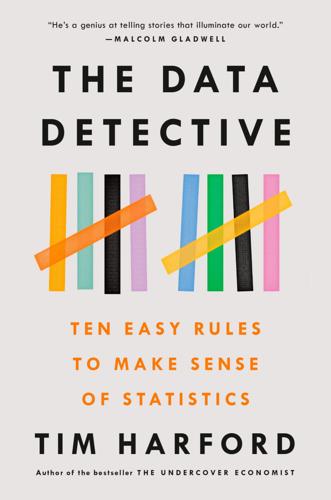
The Data Detective: Ten Easy Rules to Make Sense of Statistics
by
Tim Harford
Published 2 Feb 2021
We’re not sure, as only one small and suggestive trial has yet been funded.7 If the trial for angina had equally represented men and women, the potential to treat period pain might have been as obvious as the impact on erections. These kinds of sex-dependent effects are surprisingly common. One review of drug studies conducted in male and female rodents found that the drug being tested had a sex-dependent effect more than half of the time. For a long time, researchers into muscle-derived stem cells were baffled by why they sometimes regenerated and sometimes didn’t. It seemed entirely arbitrary, until it occurred to someone to check whether the cells came from males or females. Mystery solved: it turned out the cells from females regenerated, while those from males did not. The gender blind-spot has yet to be banished.
…
See also survivorship bias self-awareness, 40 self-harm data, 73–76, 85 self-reported data, 2 senses and perception, 247 sex scandals, 185–86 sexual activity data, 93 Shane, Janelle, 156 Shared Services Canada, 197 Sharot, Tali, 96 Sheikh, Munir, 197 Shenzhen, China, 60 sick building syndrome, 12 significance measures, 117, 129–30 sildenafil, 140 Simmons, Joseph, 119 Simon, John, 226, 233 Simonsohn, Uri, 119 Singh, Sameer, 156 skepticism, 54, 69, 183, 197, 205 Sloman, Steven, 272 slow statistics, 56, 57, 59–60, 63–64 Small, Hugh, 214, 234 Smith, Edward, 12–13, 33 Smith, Lucy, 65 Smith, Wayne, 197 smoking research, 3–6, 96, 100, 248, 279 social consequences of beliefs, 36–38 social media and Cambridge Analytica scandal, 158 and early access to official statistics, 208 and evaluation of credibility, 132n and fake news, 41 and misuse of statistical methods, 118 and visualization of data, 224 social pressure, 38, 45–46 socioeconomic status, 59, 68–69, 150–51 Somerfeld, Erik, 37–38 Soviet Union, 202 Spicer, Sean, 191 Spiegelhalter, David, 162–63 Stalin, Joseph, 73–74, 201–2 Starbucks, 106 state pensions, 80n statistical methodology categorization of statistical data, 68–70 and causation vs. correlation, 15, 64, 156–57, 275 and cherry-picking data, 245–46 and cognitive reflection test, 41–42 and credibility of data, 192, 195 credulity in data, 164–67 cynicism and skepticism about statistics, 8–10, 13, 14, 266 definition of terms, 87–88 and fast vs. slow statistics, 56, 57, 60–61, 63–64 habits fostering statistical analysis, 25 Hypothesizing After Results Known (HARKing), 118 and mathematical risk models, 71 measurement methods and choices, 68, 117–18, 165n and misconceptions of statistics, 55–56 misuse of, 117–19, 120 and “N = All” assumptions, 150, 152, 155 and novel representations of statistics, 95n and peer review, 111–12, 189n and premature enumeration, 65–85 and publication bias, 113–16, 118–23, 125–27 and reproducibility crisis, 107, 112–16, 120–22, 129–31 and sampling bias, 135–38, 142–45, 147–51 and scale of statistical data, 92, 93–95, 103 and significance measures, 117, 129–30 and theory-free analysis, 156–57 understanding statistical claims, 67–72 varieties of statistical questions, 11 and “winter detector” problem, 156 See also algorithms; big data; missing data Statistical Science, 2 Statistics and the German State (Tooze), 202 Statistics Canada, 196–97, 212 stem cell research, 140 Stereotypical Daydream, 109, 114 stock market crash (1929), 243–44, 258, 260–61 “Storks Deliver Babies” (Matthews), 1 Street Bump, 150 Stroke Association (UK), 97–98 stroke data, 10, 97–98 student achievement data, 163–64 Subacchi, Paola, 192 subways, New York City, 229–31, 230 suicides, 73–75 Summer Olympics (2012), 143 Sunstein, Cass, 169 Super PACs, 275 superforecasters, 252–55, 260 surveillance, 202 surveys, 28, 49, 50, 143, 164–65.
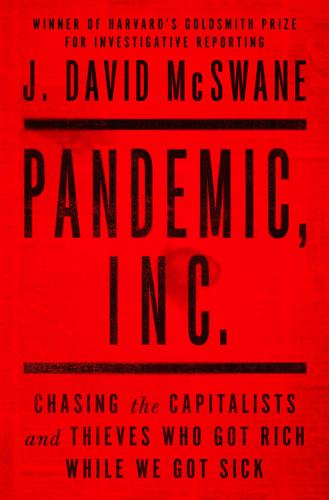
Pandemic, Inc.: Chasing the Capitalists and Thieves Who Got Rich While We Got Sick
by
J. David McSwane
Published 11 Apr 2022
In 2005, they published the bedrock paper that illustrated how to successfully sneak synthetic mRNA past the immune system to, in essence, hijack a cell’s protein production. That pioneering 2005 paper caught the attention of Derrick Rossi, a Canadian biologist who saw the potential for the technology to create stem cells, bypassing the ethically sticky issue of working with stem cells derived from human embryos. In 2007, working as an assistant professor at Harvard Medical School, Rossi and his lab found success. Rossi knew the market potential and reached out to another Harvard scientist and another biomedical rock star named Dr. Robert Langer, whose lab was down the street at the Massachusetts Institute of Technology.
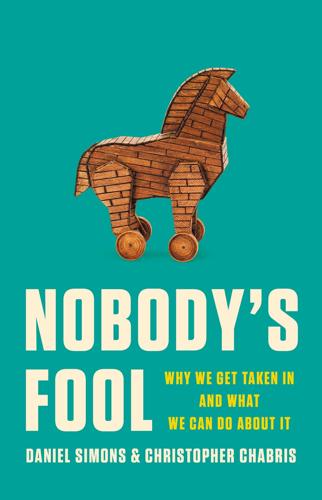
Nobody's Fool: Why We Get Taken in and What We Can Do About It
by
Daniel Simons
and
Christopher Chabris
Published 10 Jul 2023
Whether an article has been peer-reviewed is often treated as a bright line that divides the preliminary and dubious from the reliable and true. Vetting scientific findings before they are made public is valuable but fallible. Paolo Macchiarini was a surgeon on a mission to develop an artificial trachea—a custom-molded plastic windpipe, coated in stem cells, that could be transplanted into patients to restore their ability to breathe normally. In 2012, the third time he performed this operation at the Karolinska Hospital in Stockholm, the patient did not recover as quickly as the medical team had expected. Macchiarini’s published reports on his first two cases, which had appeared in top medical journals, suggested that the third patient should have been doing much better.
…
For more on preferences for the natural, see A. Levinovitz, Natural: How Faith in Nature’s Goodness Leads to Harmful Fads, Unjust Laws, and Flawed Science (Boston: Beacon Press, 2020). 22. Paolo Macchiarini’s criminal conviction is reported here: G. Vogel, “Disgraced Italian Surgeon Convicted of Criminal Harm to Stem Cell Patient,” Science 376 (2022): 1370–1371 [https://doi.org/10.1126/science.add6185]. For more information on the case, see E. Ward and C. Anderson, “A High-Flying Italian Surgeon’s Fall from Grace,” New York Times, June 17, 2022 [https://www.nytimes.com/2022/06/17/world/europe/macchiarini-windpipe-surgeon-deaths.html]; A.

This Is How You Lose the Time War
by
Amal El-Mohtar
and
Max Gladstone
Published 15 Jul 2019
The letter remains—the seal, the wax with a drop of blood inside. On a bare island far upthread, she places the seal upon her tongue, chews, swallows, and collapses. She shades herself with Blue, from blood, tears, skin, ink, words. She thrashes with the pain of growth inside her: new organs bloom from autosynthesized stem cells to shoulder old bits of her away. Green vines twine her heart and seize it, and she vomits and sweats until the vines’ rhythm matches hers. A second skin grows within her skin, popping, blistering. She claws herself off upon the rocks like a snake and lies transformed. And more: A different mind plays around the edges of her own.

The Great Mental Models: General Thinking Concepts
by
Shane Parrish
Published 22 Nov 2019
“The Doctor Who Drank Infectious Broth, Gave Himself an Ulcer, and Solved a Medical Mystery.” Discover, March 2010. 5 http://www.grandin.com/design/design.html 6 Grandin, Temple. “A response to Hibbard and Locatelli.” Stockmanship Journal, Vol. 3 No. 1 (January 2014). 7 Ruetzler, Hanni, quoted in “What does a stem cell burger taste like?” by Melissa Hogenboom, BBCNews.com, August 5, 2013. Retrieved from: http://www.bbc.com/news/science-environment-23529841 8 Emerson, Harrington. Speech published in “The Convention: Fifteenth Annual Convention of the National Association of Clothiers, Held June 5 and 6, 1911.”

Whole Earth Discipline: An Ecopragmatist Manifesto
by
Stewart Brand
Published 15 Mar 2009
We’ve starved people, hindered science, hurt the natural environment, and denied our own practitioners a crucial tool. In defense of a bizarre idea of what is “natural,” we reject the very thing Rachel Carson encouraged us to pursue—the new science of biotic controls. We make ourselves look as conspicuously irrational as those who espouse “intelligent design” or ban stem-cell research, and we teach that irrationality to the public and to decision makers. We also repel the scientists whose help we most need to develop a deeply sustainable agriculture: the agronomists, ecologists, microbiologists, and geneticists who are fulfilling Rachel Carson’s dream. • When genetic engineering first came along in the 1970s as recombinant DNA research, I was surprised by the hysteria it inspired.
…
The guidelines set by the scientists were far more specific and appropriate than politicians would have set, and those guidelines could be adjusted annually in response to real experience in the world, whereas political regulations not only resist fine-tuning, they defy any change at all. The recent simplistic legislation banning most human stem-cell research in the United States was a classic case. The Asilomar scientists forestalled that kind of folly by taking public responsibility themselves, early and adaptively. • One particularly ingenious early adopter of the new genetic technology was Bruce Ames, a biochemist at the University of California-Berkeley.
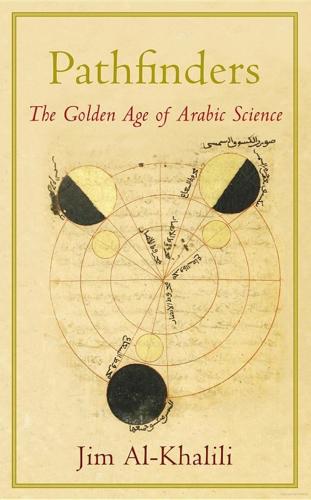
Pathfinders: The Golden Age of Arabic Science
by
Jim Al-Khalili
Published 28 Sep 2010
Just spending vast sums of money will not be enough to reignite and rebuild a scientific culture in the Muslim world. In addition to this, a clear separation of science from theology must be ensured. On a recent visit to Iran, I visited the Royan Institute in Tehran where research in genetics, infertility treatment, stem-cell research and animal cloning is carried out in an atmosphere of openness that was quite dramatically at odds with my expectations. Much of the work at the Royan is therapeutic and centred on infertility treatment, but it was clear that their basic research in genetics was of a high standard. What struck me in particular was the way the authorities overseeing the research seem to have dealt with the ethical minefields of parts of the work.
…
Thus, while issues such as abortion are still restricted (it is allowed only when the mother’s life is in danger), research on human embryos is allowed. According to Islamic teaching, the foetus becomes a full human being only when it is ‘ensouled’ between forty and a hundred and twenty days from the moment of conception, and so the research at Royan on human embryonic stem cells is not seen as playing God, as it takes place at a much earlier stage. It is of course quite understandable that areas of science that touch upon ethical issues must be considered carefully and sensitively, and, in an Islamic state like Iran, ethical values and moral issues are guided by religious teaching.
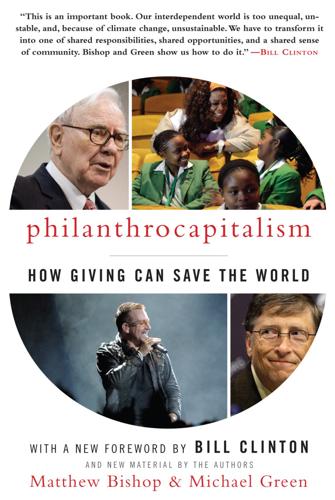
Philanthrocapitalism
by
Matthew Bishop
,
Michael Green
and
Bill Clinton
Published 29 Sep 2008
He has given generously to research on inflammatory bowel disease since his son fell ill with Crohn’s disease. And it was his infuriation at the policies of George W. Bush that prompted him to become, he says, “maybe the largest private funder of stem cell research, certainly in California, perhaps North America.” Here he was trying to fix what he saw as a problem with government policy. “Because of the federal government ban on funding stem cell research, any center that received federal government funding of any kind, for anything, could not accept the $3 billion funding approved in a California ballot initiative. So I decided to invest in new buildings in which California-funded research can be done,” he says.

Ten Arguments for Deleting Your Social Media Accounts Right Now
by
Jaron Lanier
Published 28 May 2018
Truth, meaning a claim that can be tested or events that are honestly documented—the stuff that all people can hold in common—is by definition anathema to the manipulations of BUMMER. BUMMER must often route around truth and attempt to suppress it in order to thrive. WHEN PEOPLE ARE FAKE, EVERYTHING BECOMES FAKE The fake people from Component F are stem cells for all the other fakeness in BUMMER. Leaving aside explicitly fake people like Alexa, Cortana, and Siri, you might think that you’ve never interacted with a fake person online, but you have, and with loads of them. You decided to buy something because it had a lot of good reviews, but many of those reviews were from artificial people.
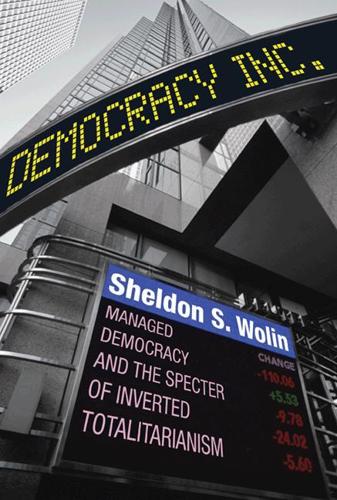
Democracy Incorporated
by
Sheldon S. Wolin
Published 7 Apr 2008
It is content with an ancillary role of encouraging capitalism and allowing it to shape the directions of science and technology. By relying on corporate capital to provide major funding for the other two powers, the party can then even adopt a mildly disapproving stance toward public subsidies of some forms of scientific research (e.g., on stem cells) or of some technologies. The Democratic Party mirrors the problem more acutely. As the party with a history of both favoring state regulation of economic activity, especially of large corporations, and being well disposed toward subsidizing science and technological innovations, it would appear to be well positioned to use state authority to redirect the dynamic powers that are driving American imperialism.
…
This contemporary version of the old struggle between “enclosure” and the “commons,” between exploitation and commonality, pretty much sums up the stakes: not what new powers we can bring into the world, but what hard-won practices we can prevent from disappearing. Notes PREFACE 1. There are numerous instances, such as in the practice of torture or of elevating political or ideological considerations to limit or override scientific findings (e.g., in the areas of birth control, stem cell research, and environmental pollution), wherein the Bush administration approximates totalitarian practice. Throughout this volume I try to avoid the mistake of claiming that in a particular matter inverted totalitarianism “substitutes” one of its policies for a particular policy of the Nazis—for example, racism.
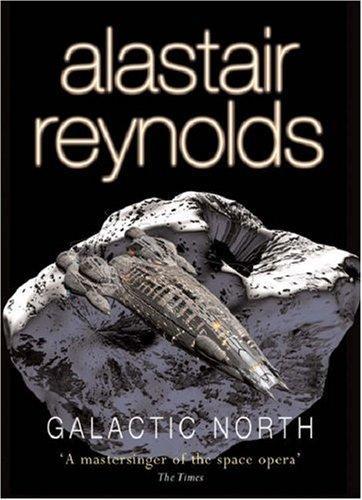
Galactic North
by
Alastair Reynolds
Published 14 Feb 2006
Wherever practicable, the dead would donate intact body parts for future use. Useful, certainly, but such a resource could never have supplied the bulk of Nightingale’s surgical needs. For that reason the ship was also equipped to fabricate its own organ supplies, using well-established principles of stem-cell manipulation. The organ factories would have worked around the clock, keeping this library fully stocked.” “It doesn’t look fully stocked now,” I said. Martinez said: “We’re not in a war zone anymore. The ship is dormant. It has no need to maintain its usual surgical capacity.” “So why is it maintaining any capacity?
…
"More or less. Something tells me you aren't absolutely ready to start trusting me, though." "Sorry, Mirsky, but you don't make the world's most convincing turncoat." She reached up with her free hand, gripping the box on the side of her head. "Know what this is? A loyalty-shunt. Makes simian stem cells; pumps them into the internal carotid artery, just above the cavernous sinus. They jump the blood-brain barrier and build a whole bunch of transient structures tied to primate dominance hierarchies; alpha-male shit. That's how Seven had us under his command -- he was King Monkey. But I've turned it off now."
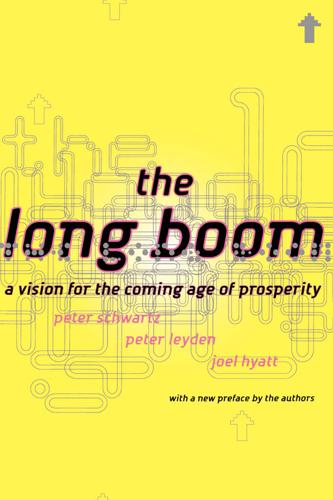
The Long Boom: A Vision for the Coming Age of Prosperity
by
Peter Schwartz
,
Peter Leyden
and
Joel Hyatt
Published 18 Oct 2000
In the future, we will increasingly work from inside the body. For example, in 1998, scientists sponsored by the biotech firm Geron figured out how to cultivate human embryonic stem cells, the primordial cells in the hu- TeclHNoloqy EitsulATts NATURE 197 man embryo from which an entire individual comes, and how to develop them into many, if not all, of the 210 different types of cells in the human body. It may be possible to create replacement tissues or organs from these stem cells. The development would start outside the body, but the tissue would be inserted into the patient so it could respond to local signals and integrate fully into the surrounding tissue.

Dawn of the New Everything: Encounters With Reality and Virtual Reality
by
Jaron Lanier
Published 21 Nov 2017
Appendix 2 explains what I was up to, and I hope you’ll take the time to read about it. For the moment, all you need to know to follow the rest of the story is that I worked toward a kind of programming I called phenotropic. 10. The Feeling of Immersion The group that will start the first VR company forms. Woman as Social Stem Cell Grace might just be a real thing in the universe. I recruited fellow travelers to help implement utterly mad designs. This still amazes me. People in those days were open to being drawn into fantastical schemes. I can hardly express how much gratitude I feel now to those oddballs who were up for the ride.
…
VALLEY OF UNEARTHLY DELIGHTS El Paso del Cyber Optimal Us, and Them Finite and Infinite Games Loop Skywalker You Have to Get Awfully Weird to Avoid Becoming a Behaviorist Grounded A Club That Would Have Me as a Member Code Culture 9. ALIEN ENCOUNTERS The Essential Bug Rent-a-Mom Young Guru of Loneliness Realization Despite Myself Math Against Loneliness? 10. THE FEELING OF IMMERSION Woman as Social Stem Cell Impossible Objects Triptych Reality Engine Engine Much Touch Haptic Antics 11. TO DON THE NEW EVERYTHING (ABOUT HAPTICS WITH A LITTLE ABOUT AVATARS) Blind Bind Hand-Waving Demo; Digital Interface Passive Haptics Bearing Arms Haptic Lemonade First VR Consumer Product Interspecies Gastric Haptics Octopus Butler Robot Lick the Problem Deepest Time Machine Haptic Intelligence As If One Obsession Weren’t Enough Harm and Heal 12.
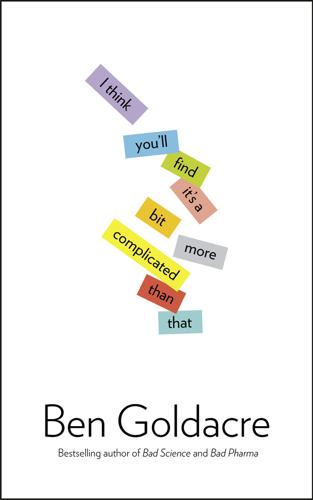
I Think You'll Find It's a Bit More Complicated Than That
by
Ben Goldacre
Published 22 Oct 2014
Maybe the cognitive effort of mounting a defence against the incongruous new facts entrenches you even further. Maybe you feel marginalised and motivated to dig in your heels. Who knows? But these experiments were then repeated, in various permutations, on the issue of tax cuts (or rather, the idea that tax cuts had increased national productivity so much that tax revenue increased overall) and stem-cell research. All the studies found exactly the same thing: if the original dodgy fact fits with your prejudices, a correction only reinforces these even more. If your goal is to move opinion, this depressing finding suggests that smears work; and what’s more, corrections don’t challenge them much, because for people who already disagree with you, it only make them disagree even more.
…
The Telegraph produced three lines of research for this claim. Firstly, more people are spending more money on more exercise than before, but there is also more obesity around in the UK than before: explain that with your science. Then there was some speculative laboratory research about interfering with brown fat in animal models, using stem cells and things: interesting to read, but very far from the headline claim. To properly examine whether exercise really will make you fat, the paper described two trials. The first one, I can tell you right now, is cherry-picked. The Cochrane Library is a non-profit collaboration of academics who produce unbiased, systematic reviews of the medical literature, and they have a systematic review of all the forty-three trials that have been done on exercise for weight loss.

World Cities and Nation States
by
Greg Clark
and
Tim Moonen
Published 19 Dec 2016
The Canadian Institutes of Health Research, the Natural Sciences and Engineering Research Council and the Social Sciences and Humanities Research Council contribute a significant slice of teaching hospital research funds. Since 2006, federal government has invested more than C$11 billion ($10 billion) in science, technology and innova tion, and recent funding schemes support Toronto’s cutting‐edge research in neuroscience, cancer and stem cells. Canada Excellence Research Chairs (CERC) has also helped attract international researchers, while Toronto’s universities also benefit from a new Canada First Research Excellence Fund (Crawford, 2012; University of Toronto, 2013; Gertler, 2014; Kazakov, 2014; Zeng, 2014). Integration of immigrants remains a shared government priority.
…
The Canadian Institutes of Health Research, the Natural Sciences and Engineering Research Council and the Social Sciences and Humanities Research Council provide a large slice of Toronto’s teaching hospital research funds. Since 2006, federal government has invested more than C$11 billion ($10 billion) in science, technology and innovation, and recent funding schemes support Toronto’s cutting‐edge research in neuroscience, cancer and stem cells. Federal funding streams have ultimately helped turn Toronto’s high‐quality universities and research institutes into world‐ class strengths (Crawford, 2012; University of Toronto, 2013; Kazakov, 2014; Zeng, 2014). For world cities where the State has played the decisive role in higher education, reforms to open up the sector to the market have to be pursued carefully and judiciously by national governments.
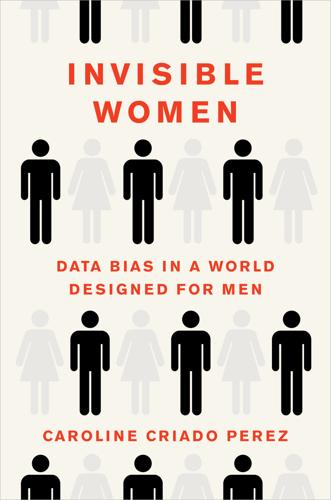
Invisible Women
by
Caroline Criado Perez
Published 12 Mar 2019
As for cell studies, a 2011 review of ten cardiovascular journals found that when sex was specified 69% of cell studies reported using only male cells.68 And ‘when sex was specified’ is an important caveat: a 2007 analysis of 645 cardiovascular clinical trials (all published in prominent journals) found that only 24% provided sex-specific results.69 A 2014 analysis of five leading surgical journals found that 76% of cell studies did not specify sex and of those that did, 71% included only male cells and only 7% reported sex-based results.70 And again, even for diseases that are more prevalent in women, researchers can be found ‘exclusively’ studying XY cells.71 As in animal and human studies, when sex has been analysed in cell studies, dramatic differences have been found. For years researchers were puzzled by the unpredictability of transplanted muscle-derived stem cells (sometimes they regenerated diseased muscle, sometimes they didn’t do anything) until they realised that the cells weren’t unpredictable at all – it’s just that female cells promote regeneration and male cells don’t. Perhaps of more urgent concern for women’s health is the 2016 discovery of a sex difference in how male and female cells respond to oestrogen.
…
Australia gender pay gap gendered poverty Gillard ministries (2010–13) homelessness leisure time maternity. leave medical research military murders paternity. leave political representation precarious work school textbooks sexual assault/harassment taxation time-use surveys unpaid work Australia Institute Austria autism auto-plastics factories Autoblog autoimmune diseases automotive plastics workplaces Ayrton, Hertha Azerbaijan babies’ cries baby bottles Baker, Colin Baku, Azerbaijan Ball, James Bangladesh Bank of England banknotes Barbican, London Barcelona, Catalonia beauticians de Beauvoir, Simone Beer, Anna Beijing, China Belgium Berkman Center for Internet and Society Besant, Annie BI Norwegian Business School bicarbonate of soda Big Data bile acid composition biomarkers biomass fuels biomechanics Birka warrior Birmingham, West Midlands bisphenol A (BPA) ‘bitch’ bladder ‘Blank Space’ (Swift) blind recruitment blood pressure Bloom, Rachel Bloomberg News Bock, Laszlo body fat body sway Bodyform Boesel, Whitney Erin Boler, Tania Bolivia Boosey, Leslie Boserup, Ester Bosnia Boston Consulting Group Botswana Bouattia, Malia Boulanger, Béatrice Bourdieu, Pierre Bovasso, Dawn Boxing Day tsunami (2004) boyd, danah brain ischaemia Brazil breasts cancer feeding and lifting techniques pumps reduction surgery and seat belts and tactile situation awareness system (TSAS) and uniforms Bretherton, Joanne Brexit Bricks, New Orleans brilliance bias Brin, Sergey British Electoral Survey British Journal of Pharmacology British Medical Journal British Medical Research Council British National Corpus (BNC) Broadly Brophy, Jim and Margaret Buick Bulgaria Burgon, Richard Bush, Stephen Buvinic, Mayra BuzzFeed Cabinet caesarean sections Cairns, Alex California, United States Callanan, Martin Callou, Ada Calma, Justine calorie burning Cambridge Analytica Cameron, David Campbell Soup Canada banknotes chemical exposure childcare crime homelessness medical research professor evaluations sexual assault/harassment toilets unpaid work Canadian Centre for Policy Alternatives (CCPA) Canadian Institutes of Health cancer canon formation Cape Town, South A.ica carcinogens cardiac resynchronisation therapy devices (CRT-Ds) cardiovascular system care work and agriculture elderly people and employment gross domestic product (GDP) occupational health and paternity leave time-use surveys and transport and zoning Carnegie Mellon University carpenters cars access to crashes driving tests motion sickness navigation systems Castillejo, Clare catcalling Cavalli, Francesco cave paintings CCTV Ceccato, Vania cell studies Center for American Progress Center for Economic and Social Rights (CESR) Center for Talent Innovation Central Asia Centre of Better Births, Liverpool Women’s Hospital chemicals Chiaro Chicago, Illinois chief executive officers (CEO) child benefit child marriage childbirth childcare and agriculture cost of and employment and gross domestic product (GDP) and paternity leave time-use surveys and zoning children’s television China cholera Chopin, Frédéric Chou, Tracy chromosomes chronic illness/pain Chronic Pain Policy Coalition chulhas Cikara, Mina circadian rhythms Citadel classical music clean stoves cleaning climate change Clinton, Hillary clitoridectomies Clue coal mining coastguards Collett Beverly colon cancer Columbia University competence vs warmth composers Composers’ Guild of Great Britain computer science confirmation bias confounding factors Congo, Democratic Republic of the Connecticut, United States Conservative Party construction work contraception contractions cooking cookstoves Corbusier, Le Cornell University coronary stents Corpus of Contemporary American English (COCA) corrective rape cosmetology Cosmopolitan Cotton, Dany Coyle, Diane crash test dummies Crazy Ex-Girlfriend Crewe, Emma Crick, Francis Crime Prevention and Community Safety crime crime scene investigators Croatia crochet Crockety, Molly CurrMIT CVs (curriculum vitaes) Czech Republic daddy quotas Daly, Caroline Louisa Data2x Davis-Blake, Alison Davis, Wendy Davison, Peter defibrillators deforestation Delhi, India dementia Democratic Party Democratic Republic of the Congo Democratic United Party dengue fever Denmark dental devices Department for Work and Pensions depression diabetes diarrhoea diet diethylstilbestrol (DES) disabled people disasters Ditum, Sarah diversity-valuing behavior DNA (deoxyribonucleic acid) Do Babies Matter (Goulden, Mason, and Wolfinger) Doctor Who domestic violence Donison, Christopher Doss, Cheryl ‘draw a scientist’ driving dry sex Dyas-Elliott, Roger dysmenorrhea E3 Eagle, Angela early childhood education (ECE) Ebola economics Economist, The Edexcel education Edwards, Katherine Einstein, Albert elderly people Eliot, George Elks lodges Elvie emoji employment gender pay gap occupational health parental leave precarious work sexual assault/harassment and unpaid work ‘End of Theory, The’ (Anderson) endocrine disrupting chemicals (EDCs) Endocrine Society endometriosis endovascular occlusion devices England national football English language ENIAC (Electronic Numerical Integrator and Computer) Enlightenment entrepreneurs epilepsy Equal Times Equality Act (2010) erectile dysfunction Estonian language Ethiopia EuroNCAP European Parliament European Union academia bisphenol A (BPA) chronic illnesses crash test dummies employment gap endocrine disrupting chemicals (EDCs) gender-inflected languages life expectancy medical research parental leave precarious work sexual harassment taxation transport planning Evernote EverydaySexism evolution exercise extension services Facebook facial wrinkle correction fall-detection devices Fallout Family and Medical Leave Act (1993) farming Fawcett Society Fawlty Towers female Viagra feminism Feminist Frequency films Financial crash (2008) Finland Finnbogadóttir, Vigdís Finnish language firefighters first past the post (FPTP) First World War (1914–18) Fiske, Susan Fitbit fitness devices flexible working Folbre, Nancy Food and Agriculture Organization (FAO) Food and Drug Administration (FDA) football forced marriage Ford Fordham, Maureen fragile states France Franklin, Rosalind Frauen-Werk-Stadt free weights Freeman, Hadley French language Freud, Sigmund From Poverty to Power (Green) funeral rites FX gaming GapJumpers Gates Foundation Gates, Melinda gathering Geffen, David gender gender data gap academia agriculture algorithms American Civil War (1861–5) brilliance bias common sense crime Data2x female body historical image datasets innovation male universality medical research motion sickness occupational health political representation pregnancy self-report bias sexual assault/harassment smartphones speech-recognition technology stoves taxation transport planning unpaid work warmth vs competence Gender Equality Act (1976) Gender Global Practice gender pay gap gender-fair forms gender-inflected languages gendered poverty genderless languages Gendersite General Accounting Office generic masculine genius geometry Georgetown University German language German Society of Epidemiology Germany academia gender pay gap gender-inflected language Landesamt für Flüchtlingsangelegenheiten (LAF) medical research precarious work refugee camps school textbooks unpaid work Gezi Park protests (2013) Ghana gig economy Gild Gillard, Julia GitHub Glencore Global Alliance for Clean Cookstoves Global Gender Gap Index Global Media Monitoring Project Golden Globes Google artificial intelligence (AI) childcare Images maternity leave News Nexus petabytes pregnancy parking promotions search engine speech-recognition software Translate Gosling, Ryan Gothenburg, Sweden Gove, Michael Government Accounting Office (GAO) Great Depression (1929–39) Greece Green, Duncan Greenberg, Jon groping gross domestic product (GDP) Grown, Caren Guardian Gujarat earthquake (2001) Gulf War (1990–91) gyms H1N1 virus Hackers (Levy) hand size/strength handbags handprints haptic jackets Harman, Harriet Harris, Kamala Harvard University hate crimes/incidents Hawking, Stephen Haynes, Natalie Hayward, Sarah Hazards Health and Safety at Work Act (1974) Health and Safety Executive (HSE) health-monitoring systems healthcare/medicine Hearst heart attacks disease medication rhythm abnormalities surgery Heat St Heinrich Böll Foundation Helldén, Daniel Henderson, David Henry Higgins effect Henry VIII, King of England Hensel, Fanny hepatitis Hern, Alex high-efficiency cookstoves (HECs) Higher Education Statistics Agency Himmelweit, Sue hip belts history Hodgkin’s disease Holdcrofity, Anita Hollaback ‘Hollywood heart attack’ Homeless Period, The homelessness hopper fare Hopper, Grace hormones House of Commons Household Income Labour Dynamics of Australia Survey housekeeping work Howard, Todd human immunodeficiency virus (HIV) Human Rights Act (1998) Human Rights Watch human–computer interaction Hungary hunter-gatherer societies Huntingdon, Agnes Hurricane Andrew (1992) Hurricane Katrina (2005) Hurricane Maria (2017) hyperbolic geometry hysterectomies hysteria I Am Not Your Negro Iceland identity Idomeni camp, Greece Illinois, United States images immune system Imperial College London Inc Income of Nations, The (Studenski) indecent exposure Independent India Boxing Day tsunami (2004) gendered poverty gross domestic product (GDP) Gujarat earthquake (2001) political representation sexual assault/harassment stoves taxation toilets unpaid work Indian Ocean tsunami (2004) Industrial Revolution (c. 1760–1840) influenza Inmujeres innovation Institute for Fiscal Studies Institute for Women’s Policy Research Institute of Medicine Institute of Women’s Policy Research (IWPR) institutionalised rape Insurance Institute for Highway Safety Inter-agency Working Group on Reproductive Health in Crises Inter-Parliamentary Union’s (IPU) Internal Revenue Service (IRS) International Agency Research on Cancer International Conference on Intelligent Data Engineering and Automated Learning International Council of Nurses International Encyclopaedia of Women Composers International Labour Organization (ILO) International Monetary Fund (IMF) International Peace Institute International Trade Union Confederation (ITUC) interrupting intestinal enzymes iPhone Ireland IRIN irritable bowel syndrome Islamic State of Iraq and al-Sham (ISIS) isometric exercises Israel Italy Jackson, Henry Japan Jenkins, Simon Jepson, Peter job interviews job vacancies Jones, Anna Jones, Brigid Juárez, Victoria ‘just in time’ scheduling so.ware Kail, Eva Karlskoga, Sweden Karnataka Household Asset Survey Katebe, Uganda Keecoo K1 Kelly, Paul Kenya Khayelitsha, South Africa kidneys kinesiology Knausgaard, Karl Ove Knope, Leslie Koofi, Fawzia Korea Kronos Kuznets, Simon Labour Party Lammy, David Lancet Lancet Planetary Health Landesamt für Flüchtlingsangelegenheiten (LAF) language Latin America Latvia Lau, Tessa Lauer, Matt Lawrence, David Lean In (Sandberg) Lebanon Legro, Richard Leicester, Leicestershire leisure time lesbians Lesotho lethal violence Levy, Steven Lewis, Brandon Leyster, Judith Liberal Democrats Liberia libertarianism life expectancy Life of Pi Lilla, Mark Lim, Angelica Limpsfield Grange, Surrey Lin Qing Linder, Astrid literacy literature Littman, Ellen liver failure Liverpool, Merseyside lobotomies Local Government Act (1972) London, England Fire Brigade general election (2017) precarious work sexual assault/harassment transportation London School of Economics (LSE) London Review of Books Long Friday long-hours culture longevity Los Angeles Times Los Angeles, California Loughborough University Louisiana, United States Loukaitou-Sideris, Anastasia lubricant lung capacity lung diseases Macedonia Mackinnon, Catherine Maconchy, Elizabeth Made by Many Madrid, Spain malaria Malawi male universality Malmö, Sweden Malta mammary carcinogens ‘Man the Hunter’ Manchester University Martínez-Román, Adi Martino, Tami Marvel Comics maternal mortality maternity leave mathematics Mazarra, Glen McCabe, Jesse McCain, John McGill University McKinsey McLean, Charlene Medela medicine/healthcare Medline Memorial University Mendelssohn, Felix Mendes, Eva Mendoza-Denton, Rodolfo menopause menstruation mental health meritocracy Messing, Karen meta gender data gap MeToo movement Metroid mewar angithi (MA) Mexico Miami, Florida mice Microsoft migraines military Milito, Beth Miller, Maria Minassian, Alek Minha Casa, Minha Vida miscarriages Mismeasure of Woman, The (Tavris) misogyny Mitchell, Margaret Mogil, Jeffrey Mongolia Montreal University Morgan, Thomas Hunt morphine motion parallax motion sickness Motorola multiple myeloma Mumbai, India murders Murray, Andrew muscle music My Fair Lady myometrial blood ‘Myth’ (Rukeyser) nail salons Naipaul, Vidiadhar Surajprasad naive realism National Aeronautics and Space Administration (NASA) National Autistic Society National Democratic Institute National Health Service (NHS) National Highway Traffic Safety Administration (NHTSA) National Institute for Health and Case Excellence (NICE) National Institute of Health Revitalization Act (1993) National Institutes of Health (NIH) National Union of Students (NUS) natural gender languages Nature Navarro, Jannette Naya Health Inc Nea Kavala camp, Greece Neitzert, Eva Neolithic era Netflix Netherlands neutrophils New Jersey, United States New Orleans, Louisiana New Statesman New York, United States New York Committee for Occupational Safety & Health (NYCOSH) New York Philharmonic Orchestra New York Times New Yorker New Zealand Newham, London Nigeria Nightingale, Florence Nobel Prize nomunication Norris, Colleen Norway Nottingham, Nottinghamshire nurses Nüsslein-Volhard, Christiane O’Neil, Cathy O’Neill, Rory Obama, Barack Occupational Health and Safety Administration occupational health Oedipus oestradiol oestrogen office temperature Olympic Games Omron On the Generation of Animals (Aristotle) orchestras Organisation for Economic Cooperation and Development (OECD) Organisation for the Study of Sex Differences Orissa, India osteopenia osteoporosis ovarian cancer Oxfam Oxford English Dictionaries Oxford University oxytocin pacemakers pain sensitivity pairing Pakistan Pandey, Avanindra paracetamol parental leave Paris, France Parkinson’s disease parks passive tracking apps paternity leave patronage networks pattern recognition Payne-Gaposchkin, Cecilia peace talks pelvic floor pelvic inflammatory disease pelvic stress fractures pensions performance evaluations periods Persian language personal protective equipment (PPE) Peru petabytes Pew Research Center phantom-limb syndrome phenylpropanolamine Philadelphia, Pennsylvania Philippines phobias phthalates Physiological Society pianos Plato plough hypothesis poetry Poland police polio political representation Politifact Pollitzer, Elizabeth Portland, Oregon Portugal post-natal depression post-traumatic stress disorder (PTSD) poverty Powell, Colin PR2 Prada prams precarious work pregnancy Pregnant Workers Directive (1992) premenstrual syndrome (PMS) primary percutaneous coronary interventions (PPCI) Prinz-Brandenburg, Claudia progesterone projection bias prolapse promotions proportional representation (PR) Prospect Union Prospect Public Monuments and Sculptures Association public sector equality duty (PSED) public transport Puerto Rico purchasing authority ‘quantified self’ community Quebec, Canada QuiVr radiation Rajasthan, India rape RateMyProfessors.com recruitment Red Tape Challenge ‘Redistribution of Sex, The’ Reference Man Reformation refugees Renaissance repetitive strain injury (RSI) Representation of the People Act (1832) Republican Party Resebo, Christian Reykjavik, Iceland Rhode Island, United States Rio de Janeiro, Brazil risk-prediction models road building Road Safety on Five Continents Conference Roberts, David Robertson, Adi robots Rochdale, Manchester Rochon Ford, Anne Rudd, Kevin Rukeyser, Muriel Russian Federation Rwanda Sacks-Jones, Katharine Saenuri Party Safecity SafetyLit Foundation Sánchez de Madariaga, Inés Sandberg, Sheryl Sanders, Bernard Santos, Cristine Schalk, Tom Schenker, Jonathan Schiebinger, Londa School of Oriental and African Studies (SOAS) school textbooks Schumann, Clara science, technology, engineering and maths (STEM) Scientific American scientists Scotland Scythians ‘sea of dudes’ problem Seacole, Mary seat belts Second World War (1939.45) self-report bias September 11 attacks (2001) Serbia Sessions, Jefferson severe acute respiratory syndrome (SARS) sex Sex Discrimination Act (1975) sex robots sex-disaggregated data agriculture chemical exposure conflict employment fall-detection devices fitness devices gendered poverty medical research precarious work smartphones taxation transport urban design virtual reality voice recognition working hours sexual violence/harassment shape-from-shading Sherriff, Paula Shield, The shifting agriculture Sierra Leone sildenafil citrate Silicon Valley Silver, Nate Singh, Jyoti single parents single-member districts (SMD) Siri Skåne County, Sweden skeletons skin Slate Slocum, Sally Slovenia smartphones snow clearing social capital social data Social Democratic Party (SDP) social power socialisation Solna, Sweden Solnit, Rebecca Somalia Sony Ericsson Sounds and Sweet Airs (Beer) South Africa South Korea Soviet Union (1922–91) Spain Spanish language Speak with a Geek speech-recognition technology Sphinx sports Sprout Pharmaceuticals Sri Lanka St Mark’s, Venice St Vincent & the Grenadines stab vests Stack Overflow Stanford University staple crops Star Wars Starbucks Starkey, David statins statues stem cells Stevens, Nettie Stockholm, Sweden Stoffregen, Tom stoves Streisand, Barbra streptococcal toxic shock syndrome stress strokes Strozzi, Barbara Studenski, Paul Sulpicia Supreme Court Sweden Birka warrior car crashes councils crime depression gender pay gap heart attacks murders paternity leave political representation refugee camps snow clearing sports taxation unpaid work youth urban regeneration Swedish National Road and Transport Research Institute Swift, Taylor swine flu Swinson, Joanne Kate ‘Jo’ Switzerland Syria Systran tactile situation awareness system (TSAS) Taimina, Daina Taiwan Tate, Angela Tatman, Rachael Tavris, Carol taxation teaching evaluations Teaching Excellence Framework (TEF) tear gas tech industry television temperature Temperature Temporary Assistance to Needy Families tennis tenure-track system text corpora thalidomide ThinkProgress Thor three-stone fires time poverty time-use surveys TIMIT corpus Tin, Ida toilets Toksvig, Sandi tools Toronto, Ontario Tottenham, London Toyota Trades Union Congress (TUC) tradition transit captives transportation treadmills trip-chaining troponin Trump, Donald tuberculosis (TB) Tudor period (1485–1603) Tufekci, Zeynep Turkey Twitter Uberpool Uganda Ukraine ulcerative colitis Ulrich, Laurel Thatcher Umeå, Sweden Understanding Girls with ADHD (Littman) unemployment unencumbered people Unicode Consortium Unison United Association of Civil Guards United Kingdom academia austerity autism banknotes breast pumps Brexit (2016–) Fire Brigade caesarean sections children’s centres chronic illness/pain coastguards councils employment gap endometriosis Equality Act (2010) flexible working gender pay gap gendered poverty general elections generic masculine gross domestic product (GDP) heart attacks homelessness Human Rights Act (1998) leisure time maternity leave medical research military murders music nail salons occupational health paternity leave pedestrians pensions personal protective equipment (PPE) police political representation precarious work public sector equality duty (PSED) Representation of the People Act (1832) scientists Sex Discrimination Act (1975) sexual assault/harassment single parents statues stress taxation toilets transportation trip-chaining universities unpaid work Yarl’s Wood Detention Centre United Nations Children’s Fund (UNICEF) Commission on the Status of Women Data2x Economic Commission for Africa Food and Agriculture Organization (FAO) homicide survey Human Development Report and peace talks Population Fund Security Council Resolution 1325 (2000) and stoves and Switzerland and toilets and unpaid childcare Women’s Year World Conference on Women United States academia Affordable Care Act (2010) Agency for International Development (USAID) Alzheimer’s disease banknotes bisphenol A (BPA) breast pumps brilliance bias Bureau of Labor Statistics car crashes chief executive officers (CEO) childbirth, death in Civil War (1861–5) construction work councils crime early childhood education (ECE) employment gap endocrine disrupting chemicals (EDCs) endometriosis farming flexible working gender pay gap gendered poverty generic masculine Great Depression (1929–39) gross domestic product (GDP) healthcare heart attacks Hurricane Andrew (1992) Hurricane Katrina (2005) Hurricane Maria (2017) immigration detention facilities job interviews ‘just in time’ scheduling so.ware leisure time maternity leave medical research meritocracy military mortality rates murders nail salons National Institute of Health Revitalization Act (1993) occupational health personal protective equipment (PPE) political representation precarious work presidential election (2016) school textbooks September 11 attacks (2001) sexual assault/harassment single parents soccer team Supreme Court taxation tech industry toilets transportation Trump administration (2017–) universities unpaid work universal credit (UC) universality universities University and College Union University of California, Berkeley University of California, Los Angeles (UCLA) University of Chicago University of Liverpool University of London University of Manchester University of Michigan University of Minnesota University of North Carolina University of Stirling University of Sussex University of Washington University of York unpaid work agriculture and algorithms and gross domestic product (GDP) and occupational health and stoves and transport in workplace and zoning upper body strength upskirting urinals urinary-tract infections urination uro-gynaecological problems uterine failure uterine tybroids Uttar Pradesh, India Uzbekistan vaccines vagina Valium Valkrie value-added tax (VAT) Van Gulik, Gauri Venice, Italy venture capitalists (VCs) Veríssimo, Antônio Augusto Viagra Victoria, Queen of the United Kingdom video games Vienna, Austria Vietnam Vikings Villacorta, Pilar violence virtual reality (VR) voice recognition Volvo voting rights Vox voyeurism Wade, Virginia Walker, Phillip walking wallet to purse Walmart warfare warmth vs competence Warsaw Pact Washington Post Washington Times Washington, DC, United States WASHplus WaterAid Watson, James We Will Rebuild weak contractions Weapons of Math Destruction (O’Neil) West Bengal, India whiplash Wiberg-Itzel, Eva Wikipedia Wild, Sarah Williams, Gayna Williams, Serena Williams, Venus Williamson, £eresa Willow Garage Wimbledon Windsor, Ontario Winter, Jessica Wired Wolf of Wall Street, The Wolfers, Justin Wolfinger, Nicholas ‘Woman the Gatherer’ (Slocum) Women and Equalities Committee Women Will Rebuild Women’s Budget Group (WBG) Women’s Design Service Women’s Engineering Society Women’s Refugee Commission Women’s Year Woolf, Virginia workplace safety World Bank World Cancer Research Fund World Cup World Economic Forum (WEF) World Health Organization (WHO) World Meteorological Organisation worm infections Woskow, Debbie Wray, Susan Wyden, Robert XY cells Y chromosome Yale University Yarl’s Wood Detention Centre, Bedford Yatskar, Mark Yemen Yentl syndrome Yezidis Youth Vote, The youthquake Zambia zero-hour contracts Zika zipper quotas zombie stats zoning Zou, James Photo by Rachel Louise Brown CAROLINE CRIADO PEREZ is a writer, broadcaster, and feminist activist and was named Liberty Human Rights Campaigner of the Year and OBE by the Queen.
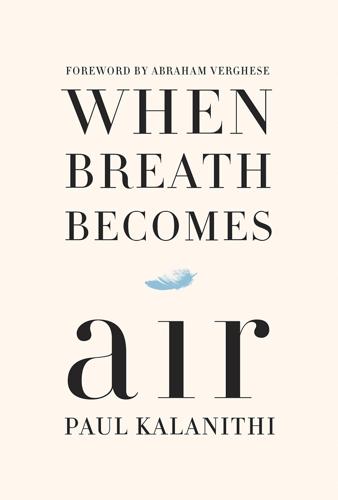
When Breath Becomes Air
by
Paul Kalanithi
and
Abraham Verghese
Published 12 Jan 2016
Whether out of dignity or shock, silence usually reigns, and so holding a patient’s hand becomes the mode of communication. A few immediately harden (usually the spouse, rather than the patient): “We’re gonna fight and beat this thing, Doc.” The armament varies, from prayer to wealth to herbs to stem cells. To me, that hardness always seems brittle, unrealistic optimism the only alternative to crushing despair. In any case, in the immediacy of surgery, a warlike attitude fit. In the OR, the dark gray rotting tumor seemed an invader in the fleshy peach convolutions of the brain, and I felt real anger (Got you, you fucker, I muttered).

Modern China: A Very Short Introduction
by
Rana Mitter
Published 25 Feb 2016
Crisp SOCIAL WORK Sally Holland and Jonathan Scourfield SOCIALISM Michael Newman SOCIOLINGUISTICS John Edwards SOCIOLOGY Steve Bruce SOCRATES C. C. W. Taylor SOUND Mike Goldsmith THE SOVIET UNION Stephen Lovell THE SPANISH CIVIL WAR Helen Graham SPANISH LITERATURE Jo Labanyi SPINOZA Roger Scruton SPIRITUALITY Philip Sheldrake SPORT Mike Cronin STARS Andrew King STATISTICS David J. Hand STEM CELLS Jonathan Slack STRUCTURAL ENGINEERING David Blockley STUART BRITAIN John Morrill SUPERCONDUCTIVITY Stephen Blundell SYMMETRY Ian Stewart TAXATION Stephen Smith TEETH Peter S. Ungar TERRORISM Charles Townshend THEATRE Marvin Carlson THEOLOGY David F. Ford THOMAS AQUINAS Fergus Kerr THOUGHT Tim Bayne TIBETAN BUDDHISM Matthew T.
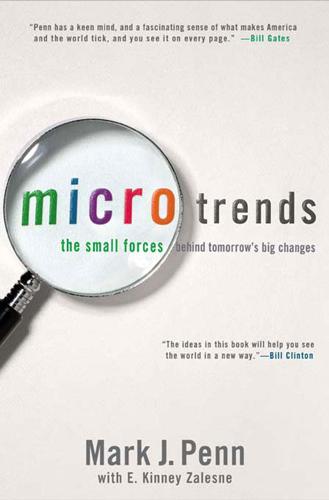
Microtrends: The Small Forces Behind Tomorrow's Big Changes
by
Mark Penn
and
E. Kinney Zalesne
Published 5 Sep 2007
Look for bionic ear processors, single-chip implants that can be placed in a body and run without battery replacements for fifteen years. Look for the development of antioxidant drugs, which reduce the presence of free radical oxygen molecules that kill the delicate hair cells of the inner ear. Look for stem cell researchers to tout the possibility of regenerating damaged inner ear cells. And look for a public health campaign against noise. Like tobacco addiction and sun damage, if it gets you when you’re young, you will probably never recover. It’s a ripe issue for public activism—except, of course, for the challenge of being heard in Washington without shouting.
…
Helpful articles on the future of treatments for the hard-of-hearing include Linda Marsa, “Auditory Achilles’ Heel,” Los Angeles Times, January 16, 2006; “Antioxidants May Sound Hope for Hearing Loss,” Associated Press, October 12, 2003; “UB, Military Collaborate on Design, Testing of First Drug to Prevent Noise-Induced Hearing Loss,” December 2003, accessed April 2007, at http://www.medicalnewstoday.com/medicalnews.php?newsid=4915; and “Stem Cells May Be Key to Deafness Cure,” CBS News, August 7, 2006. For more on the mosquitotone, see Paul Vitello, “A Ring Tone Meant to Fall on Deaf Ears,” New York Times, June 12, 2006. V. Family Life Old New Dads The birth rate data in this chapter come largely from the National Center for Health Statistics, Centers for Disease Control, U.S.
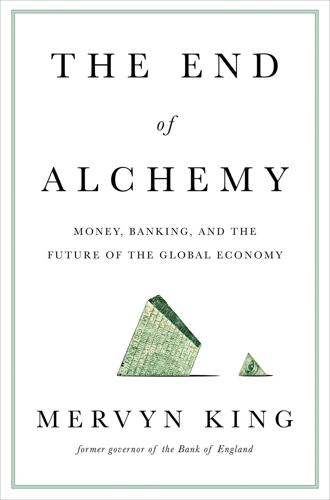
The End of Alchemy: Money, Banking and the Future of the Global Economy
by
Mervyn King
Published 3 Mar 2016
In 1798, the English cleric and scholar Thomas Malthus wrote that ‘with regard to the duration of human life, there does not appear to have existed, from the earliest ages of the world, to the present moment, the smallest permanent symptom, or indication, of increasing prolongation’.10 That past experience was to prove a poor predictor of the future. In 1798, life expectancy in Britain was around forty. Today it is over eighty, and even higher for women. We simply do not know how life expectancy will change in the future.11 Developments in medical science, especially the results of stem-cell research, may enhance the prospects for life expectancy radically, and new infectious diseases may have the opposite effect. Good judgement rather than statistical extrapolation is key to making assessments about changes not only in longevity but in many economic and social variables. Economists typically think about risk rather than radical uncertainty.
…
First, the proposition that the era of great discoveries has come to an end because the major inventions, such as electricity and aeroplanes, have been made and humankind has plucked the low-hanging fruit is not convincing. In areas such as information technology and biological research on genetics and stem cells we are living in a golden age of scientific discovery. By definition, ideas that provide breakthroughs are impossible to predict, so it is too easy to fall into the trap of thinking that the future will generate fewer innovations than those we saw emerge in the past. When Alvin Hansen proposed the idea of ‘secular stagnation’ in the 1930s, he fell into just this trap.
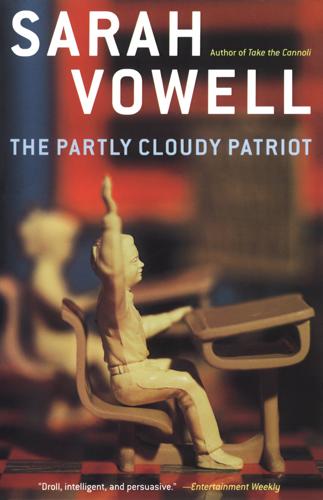
The Partly Cloudy Patriot
by
Sarah Vowell
Published 26 Aug 2002
My parents and I have been through so much and known each other for so long, share so many in-jokes and memories, our differences of opinion on everything from gun control to Robin Williams movies hardly matter at all. Plus, our disagreements make us appreciate the things we have in common all the more. When I call Republican Senator Orrin Hatch’s office to say that I admire something he said about stem cell research, I am my parents’ daughter. Because they have always enjoyed playing up the things we do have in common, like Dolly Parton or ibuprofen. Maybe sometimes, in quiet moments of reflection, my mom would prefer that I not burn eternally in the flames of hell when I die, but otherwise she wants me to follow my own heart.
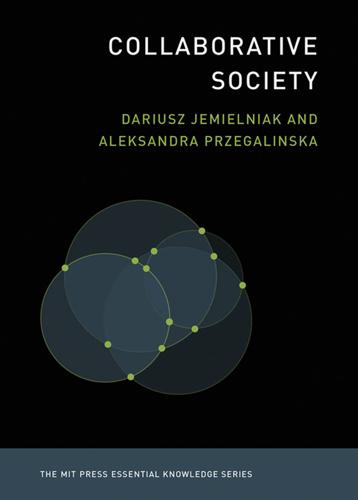
Collaborative Society
by
Dariusz Jemielniak
and
Aleksandra Przegalinska
Published 18 Feb 2020
Lotz-Sisitka, R. O’Donoghue, and I. Schudel, “Mapping Epistemic Cultures and Learning Potential of Participants in Citizen Science Projects,” Conservation Biology 30 (2016): 540–549. 46. B. Salter, Y. Zhou, and S. Datta, “Hegemony in the Marketplace of Biomedical Innovation: Consumer Demand and Stem Cell Science,” Social Science & Medicine 131 (2015): 156–163. 47. P. Mirowski, “Against Citizen Science,” Aeon (2017), https://aeon.co/essays/is–grassroots–citizen–science–a–front–for–big–business. 48. S. Visvanathan, “Alternative Science,” Theory, Culture & Society 23 (2006): 164–169. 49. R.
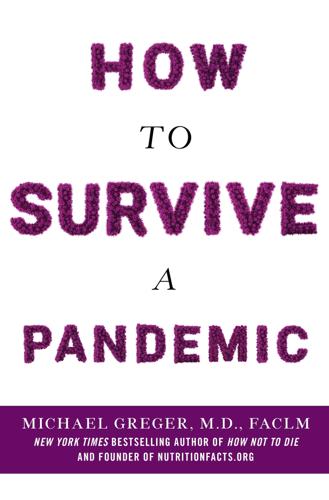
How to Survive a Pandemic
by
Michael Greger, M.D., FACLM
Growing the virus directly in cultures of human cells, however, precluded that possibility.2584 Also, according to then director of the FDA’s Center for Biologics Evaluation and Review, growing vaccine virus in culture not only eliminates the need for hundreds of millions of fertile chicken eggs, but also is expected to increase the flexibility, yield, and speed of vaccine production.2585 It was thought that President Bush’s break away from pro-life forces over stem cell research may facilitate research on cell culture-based vaccines,2586 some of which—like Sabin’s famous polio vaccine—use fetal tissue.2587 Efforts to upgrade and expand domestic vaccine production continued in the United States, but were expected to take years to have an effect.2588 Today, most flu vaccines are still produced using chicken eggs.2589 Asked if it was too late to prepare for the coming pandemic, vaccine industry insider Fedson replied, “It’s always too late, and it’s never too soon.
…
Walsh PD, Abernethy KA, Bermejo M, et al. 2003. Catastrophic ape decline in western equatorial Africa. Nature 422:611–614. 956. Fox M. 2000. The killer out of Africa. Hobart Mercury (Australia), February 9. 957. Karpowicz P, Cohen CB, van der Kooy D. 2004. Is it ethical to transplant human stem cells into nonhuman embryos? Nature Medicine 10(4):331–5. 958. Gunter C, Dhand R. 2005. The chimpanzee genome. Nature 437(7055):47. 959. Lovgren S. 2005. Chimps, humans 96 percent the same, gene study finds. National Geographic News, August 31. news.nationalgeographic.com/news/2005/08/0831_050831_chimp_genes.html. 960.
…
In: Institute of Medicine of the National Academies, John R. La Montagne Memorial Symposium on Pandemic Influenza Research: Meeting Proceedings (Washington, DC: National Academies Press, pp. 19–28). 2586. United States Conference of Catholic Bishops Secretariat for Pro-Life Activities. Fact sheet: Embryonic stem cell research and vaccines using fetal tissue. usccb.org/prolife/issues/bioethic/vaccfac2.htm. 2587. Sanghavi D. 2003. Flu: a shot worth taking. Boston Globe, December 9. boston.com/news/globe/health_science/articles/2003/12/09/flu_a_shot_worth_taking?mode=PF. 2588. Gibbs WW, Soares C. 2005. Preparing for a pandemic.

San Francisco
by
Lonely Planet
Biotech is nothing new here: in 1976, an upstart company called Genentech was founded over beer at a San Francisco bar, then got to work cloning human insulin and introducing the hepatitis B vaccine. California voters approved a $3 billion bond measure in 2004 for stem cell research, and by 2008, California had become the biggest funder of stem cell research, with SoMa’s Mission Bay as its designated headquarters. With the US in recession, it seems impossible that San Francisco could initiate another boom – but if history is any indication, the impossible is almost certain to happen in San Francisco. Timeline June 1776 Captain Juan Bautista de Anza and Father Francisco Palou arrive in SF with cattle and settlers.

The Rational Optimist: How Prosperity Evolves
by
Matt Ridley
Published 17 May 2010
Imagine if the globalised world of the twenty-first century allows a globalised retreat from reason. It is a worrying thought. The wrong kind of chiefs, priests and thieves could yet snuff out future prosperity on earth. Already lords don boiler suits to destroy genetically modified crops, presidents scheme to prevent stem-cell research, prime ministers trample on habeas corpus using the excuse of terrorism, metastasising bureaucracies interfere with innovation on behalf of reactionary pressure groups, superstitious creationists stop the teaching of good science, air-headed celebrities rail against free trade, mullahs inveigh against the empowerment of women, earnest princes lament the loss of old ways and pious bishops regret the coarsening effects of commerce.
…
Kung people 44, 135, 136–7 Kuznets curve 106 Kwakiutl people 92 Lagos 322 Lagrange Point 346 lakes, acidification of 305–6 Lamalera people 87 Lancashire 214, 217, 232, 263 Landes, David 223, 406 Lang, Tim 392 language: and exchange 58; genes for 55; Indo-European 129; and isolationism 73; Neanderthals 4, 55; numbers of languages 73; as unique human development 4 Laos 209 lapis lazuli 162, 164 Lascaux caves, France 6 lasers 272 Lassa fever 307 Laurion, Attica 171 Law, John 29, 259 Lawson, Nigel, Baron 331 Lay, Ken 29, 385 Layard, Richard 25 lead 167, 174, 177, 213 Leadbetter, Charles 290 Leahy, Michael 92 leather 70, 122, 167, 176 Lebanon 167 LeBlanc, Steven 137 LEDs (light-emitting diodes) 21–2 lentils 129 Leonardo da Vinci 196, 251 Levy, Stephen 355 Liang Ying (farm worker) 220 liberalism 108, 109–110, 290 Liberia 14, 316 libertarianism 106 Libya 171 lice 68 lichen 75 life expectancy: in Africa 14, 316, 422; in Britain 13, 15, 284; improvements in 12, 14, 15, 17–18, 205, 284, 287, 298, 316; in United States 298; world averages 47 Life (magazine) 304 light, artificial 13, 16, 17, 20–22, 37, 233, 234, 240, 245, 272, 368 light-emitting diodes (LEDs) 21–2 Limits to Growth (report) 303–4, 420 Lindsey, Brink 102, 109 linen 216, 218 lions 43, 87 literacy 106, 201, 290, 353, 396 Liverpool 62, 283 local sourcing (of goods) 35, 41–2, 149, 392; see also food miles Locke, John 96 Lodygin, Alexander 272 Lombardy 178, 196 Lomborg, Björn 280 London 12, 116, 186, 199, 218, 222, 282; as financial centre 259 longitude, measurement of 261 Longshan culture 397 Los Angeles 17, 142 Lothal, Indus valley 162, 164 Louis XI, King of France 184 Louis XIV, King of France 36, 37, 38, 184, 259 Lowell, Francis Cabot 263 Lübeck 180 Lucca 178, 179 Lunar Society 256 Luther, Martin 102 Luxembourg 331 Lyon 184 Macao 183 MacArthur, General Douglas 141 Macaulay, Thomas Babington, 1st Baron 11, 285–7, 359 McCloskey, Deirdre 109, 366–7 Mace, Ruth 73 McEwan, Ian 47 Machiguenga people 87 MacKay, David 342 McKendrick, Neil 224 McKibben, Bill 293 Macmillan, Harold, 1st Earl of Stockton 16 McNamara, Robert 203 mad-cow disease (vCJD) 280, 308 Madagascar 70, 299 Maddison, Angus 180 Maddox, John 207 Madoff, Bernard 28–9 Maghribis 178, 180 magnesium 213 maize 126, 146–7, 153, 155, 156, 163; for biofuel 240, 241 malaria 135, 157, 275, 299, 310, 318, 319, 331, 336, 353, 428, 429 Malawi 40–41, 132, 316, 318 Malawi, Lake 54 Malay Peninsula 66 Malaysia 35, 89, 242, 332 Mali 316, 326 Malinowski, Bronislaw 134 malnutrition 154, 156, 337 Maltese Falcon, The (film) 86 Malthus, Robert 139, 140, 146, 191, 249, 303 Malthusianism 141, 193, 196, 200, 202, 401 mammoths 68, 69, 71, 73, 302 Manchester 214, 218, 283 Mandell, Lewis 254 manganese 150, 213 mangoes 156, 327, 392 Manhattan 83 manure 147, 150, 198, 200, 282 Mao Zedong 16, 187, 262, 296, 311 Marchetti, Cesare 345–6 Marcuse, Herbert 291 Marie-Antoinette, Queen of France 199 markets (in capital and assets) 9, 258–60 markets (in goods and services): and collective betterment 9–10, 36–9, 103–110, 115–16, 281; disdain for 102–3, 104, 291–2, 358; etiquette and ritual of 133–4; and generosity 86–7; global interdependence 42–3; market failure 182, 250; ‘perfect markets’ 249–50; and population control 210–211; and preindustrial economies 133–4; and trust 98–100, 103; and virtue 100–104, 105; see also bartering; exchange; trade Marne, River 234 Martu aborigines 62 Marx, Karl 102, 104, 107–8, 291, 406 Marxism 101, 217–18, 319, 356 Maskelyne, Nevil 221 Maudslay, Henry 221 Mauritius 187, 316 Mauryan empire 172–3, 201, 357 Maxwell, James Clerk 412 measles 14, 135, 310 meat eating 51, 60, 62, 68–9, 126, 147, 156, 241, 376 Mecca 177 Mediterranean Sea: prehistoric settlements 56, 68–9, 159; trade 89, 164, 167–8, 169, 171, 176, 178 meerkats 87 Mehrgarh, Baluchistan 162 Mehta, Suketa 189 Meissen 185 memes 5 Menes, Pharaoh of Egypt 161 mercury 183, 213, 237 Mersey, River 62 Merzbach valley, Germany 138 Mesopotamia 38, 115, 158–61, 163, 177, 193, 251, 357; see also Assyrian empire; Iraq metal prices, reductions in 213 Metaxas, Ioannis 186 methane 140, 329, 345 Mexico: agriculture 14, 123, 126, 142, 387; emigration to United States 117; hurricanes 335; life expectancy 15; nature conservation 324; swine flu 309 Mexico City 190 Meyer, Warren 281 Mezherich, Ukraine 71 mice 55, 125 Michelangelo 115 Microsoft (corporation) 24, 260, 268, 273 migrations: early human 66–70, 82; rural to urban 158, 188–9, 210, 219–20, 226–7, 231, 406; see also emigration Milan 178, 184 Miletus 170–71 milk 22, 55, 97, 135 Mill, John Stuart 34, 103–4, 108, 249, 274, 276, 279 Millennium Development goals 316 Miller, Geoffrey 44, 274 millet 126 Mills, Mark 244 Ming empire 117, 181–4, 260, 311 Minoan civilisation 166 Mississippi Company 29 Mittal, Lakshmi 268 mobile phones 37, 252, 257, 261, 265, 267, 297, 326–7 Mohamed (prophet) 176 Mohawk Indians 138–9 Mohenjo-Daro, Indus valley 161–2 Mojave Desert 69 Mokyr, Joel 197, 252, 257, 411, 412 monarchies 118, 162, 172, 222 monasteries 176, 194, 215, 252 Monbiot, George 291, 311, 426 money: development of 71, 132, 392; ‘trust inscribed’ 85 Mongolia 230 Mongols 161, 181, 182 monkeys 3, 57, 59, 88; capuchins 96–7, 375 monopolies 107, 111, 166, 172, 182 monsoon 174 Montesquieu, Charles, Baron de 103 moon landing 268–9, 275 Moore, Gordon 221, 405 Moore, Michael 291 Morgan, J.P. 100 Mormonism 205 Morocco 53, 209 Morse, Samuel 272 mortgages 25, 29, 30, 323; sub-prime 296 Moses 138 mosquito nets 318 ‘most favoured nation’ principle 186 Moyo, Dambisa 318 Mozambique 132, 316 Mozart, Wolfgang Amadeus 267 Mugabe, Robert 262 Mumbai 189, 190 murder 14, 20, 85, 88, 106, 118, 201 Murrays’ Mills, Manchester 214 music 70, 115, 266–7, 326 Myceneans 166 Nairobi 322 Namibia 209, 324 Napoleon I 184 NASA 269 Nashville 326 Nassarius shells 53, 56, 65 National Food Service 268 National Health Service 111, 261 nationalisation (of industry) 166, 182 nationalism 357 native Americans 62, 92–3, 138–9 Natufians 125 natural selection 5–6, 27, 49–50, 350 nature conservation 324, 339; see also wilderness land, expansion of Neanderthals 3, 4, 53, 55, 64, 65, 68, 71, 79, 373, 378 Nebuchadnezzar 169 needles 43, 70 Nehru, Jawaharlal 187 Nelson, Richard 5 Nepal 15, 209 Netscape (corporation) 259 New Deal 109 New Guinea: agriculture 123, 126, 387; languages 73; malaria 336; prehistoric 66, 123, 126; tribes 87, 92, 138 New York 12, 16, 83, 169, 190 New York Times 23, 295, 305 New Zealand 17, 35, 42, 70 Newcomen, Thomas 244, 256 newspapers 270, 295; licensing copyrights 267 Newsweek (magazine) 329 Newton, Sir Isaac 116, 256 nickel 34, 213 Niger 208–9, 210, 324 Nigeria 15, 31, 99, 117, 210, 236, 316 Nike (corporation) 115, 188 Nile, River 161, 164, 167, 171 nitrogen fertlisers 140, 146, 147, 149–50, 155, 305 nitrous oxide 155 Nobel Peace Prize 143, 280 ‘noble savage’ 43–4, 135–8 Norberg, Johann 187 Nordau, Max 288 Nordhaus, William 331 Norte Chico civilisation 162–3 North, Douglass 324, 397 North Carolina 219–20 North Korea 15, 116–17, 187, 333 North Sea 180, 185 North Sentinel islanders 67 Northern Rock (bank) 9 Northumberland 407 Norton, Seth 211 Norway 97–8, 332, 344 Norwich 225 nostalgia 12–13, 44, 135, 189, 284–5, 292 Novgorod 180 Noyce, Robert 221, 405 nuclear accidents 283, 293–4, 308, 345, 421 nuclear power 37, 236, 238, 239, 245, 246, 343, 344, 345 nuclear war, threat of 280, 290, 299–300, 333 Obama, Barack 203 obesity 8, 156, 296, 337 obsidian 53, 92, 127 occupational safety 106–7 ocean acidification 280, 340–41 ochre 52, 53, 54, 92 octopi 3 Oersted, Hans Christian 272 Oetzi (mummified ‘iceman’) 122–3, 132–3, 137 Ofek, Haim 131 Ohalo II (archaeological site) 124 oil: and ‘curse of resources’ 31, 320; drilling and refining 242, 343; and generation of electricity 239; manufacture of plastics and synthetics 237, 240; pollution 293–4, 385; prices 23, 238; supplies 149, 237–8, 280, 281, 282, 296, 302–3 old age, quality of life in 18 olive oil 167, 169, 171 Olson, Ken 282 Omidyar, Pierre 99 onchoceriasis 310 open-source software 99, 272–3, 356 Orang Asli people 66 orang-utans 60, 239, 339 organic farming 147, 149–52, 393 Orinoco tar shales, Venezuela 238 Orma people 87 ornament, personal 43, 52, 53, 54, 70, 71, 73 O’Rourke, P.J. 157 Orwell, George 253, 290, 354 Ostia 174 otters 297, 299 Otto I, Holy Roman emperor 178 Ottoman empire 161 Oued Djebanna, Algeria 53 oxen 130, 136, 195, 197, 214–15 oxytocin (hormone) 94–5, 97–8 ozone layer 280, 296 Paarlberg, Robert 154 Pacific islanders 134 Pacific Ocean 184 Paddock, William and Paul 301 Padgett, John 103 Page, Larry 114 Pagel, Mark 73 Pakistan 142–3, 204, 300 palm oil 57–8, 239, 240, 242, 339 Pan Am (airline) 24 paper 282, 304 Papin, Denis 256 papyrus 171, 175 Paraguay 61 Pareto, Vilfredo 249 Paris 215, 358; electric lighting 233; restaurants 264 parrots 3 Parsons, Sir Charles 234 Parthian empire 161 Pasadena 17 Pataliputra 173 patents 223, 263, 264–6, 269, 271, 413–14 patriarchy 136 Paul, St 102 PayPal (e-commerce business) 262 peacocks 174 peanuts 126 peat 215–16 Peel, Sir Robert 185 Pemberton, John 263 pencils 38 penicillin 258 Pennington, Hugh 308 pensions 29, 40, 106 Periplus of the Erythrean Sea, The 174 Persia 89, 161, 171, 177 Persian Gulf 66, 164, 340, 429 Peru 97–8, 126, 162–3, 320, 387; silver 31, 132, 183–4 pessimism: and belief in turning points in history 287–9, 301, 311; natural pessimism of human nature 294–5; in nineteenth century 283–8; in twentieth century 281, 282, 288–91, 292–4, 296–308, 328–9; in twenty-first century 8–9, 17, 28, 281–2, 291–2, 308–311, 314–15; ubiquity of 280–85, 291–2, 294–7, 341, 352 pesticides 151–2, 154, 155, 336; DDT 297–8, 299; natural 298–9 Peto, Richard 298 Petty, Sir William 185, 199, 254, 256 pharmaceutical industry 260, 266 philanthropy 92, 105, 106, 295, 318–19, 356 Philip II, King of Spain 30–31 Philip II of Macedon 171 Philippines 61–2, 89, 234 Philistines 166, 170, 396 Phillips, Adam 103, 292 Phoenicians 166–70, 177 photography 114, 283, 386 physiocrats 42 pi, calculation of 173 pig farming 135, 145, 148, 197 Pinnacle Point, South Africa 52, 83 Pisa 115, 178 plagues 135, 176, 195–6, 197; forecasts of 280, 284, 307–310; see also Black Death plastics 237, 240, 270 Plate, River 186 platinum 213 Plato 292 Plautus 44 ploughing 129–30, 136, 145, 150, 195, 197, 198, 215 pneumonia 13, 353 Polanyi, Karl 164–5 polar bears 338–9 polio 261, 275, 310 political fragmentation 170–73, 180–81, 184, 185 pollution: effects on wildlife 17, 297, 299, 339; and industrialisation 218; pessimism about 293–4, 304–6; reduction in 17, 106, 148, 279, 293–4, 297, 299 polygamy 136 Pomeranz, Kenneth 201–2 Ponzi, Charles 29 Ponzi schemes 28–9 population control policies 202–4, 210–211 population growth: and food supply 139, 141, 143–4, 146–7, 192, 206, 208–9; global population totals 3, 12, 14, 191, 206, 332; and industrialisation 201–2; and innovation 252; pessimism about 190, 193, 202–3, 281, 290, 293, 300–302, 314; population explosions 8, 139, 141, 202, 206, 281; and specialisation 192–3, 351; see also birth rates; demographic transition; infant mortality; life expectancy porcelain 181, 183, 184–5, 225, 251 Porritt, Jonathan 314 Portugal 75, 183, 184, 317, 331 Post-it notes 261 Postrel, Virginia 290–91 potatoes 199 Potrykus, Ingo 154 pottery 77, 158, 159, 163, 168, 177, 225, 251 Pound, Ezra 289 poverty: and charitable giving 106; current levels 12, 15, 16–17, 41, 316, 353–4; and industrialisation 217–20; pessimism about 280, 290, 314–15; reduction in 12, 15, 16–17, 290; and self-sufficiency 42, 132, 200, 202, 226–7; solutions to 8, 187–8, 316–17, 322, 326–8, 353–4 Prebisch, Raul 187 preservatives (in food) 145 Presley, Elvis 110 Priestley, Joseph 256 printing: on paper 181, 251, 252, 253, 272; on textiles 225, 232 prisoner’s dilemma game 96 property rights 130, 223, 226, 320, 321, 323–5 protectionism 186–7, 226 Ptolemy III 171 Pusu-Ken (Assyrian merchant) 165–6 putting out system 226, 227, 230 pygmy people 54, 67 Pythagoras 171 Quarterly Review 284 quasars 275 Quesnay, François 42 racial segregation 108 racism 104, 415 radioactivity 293–4, 345 radios 264–5, 271 railways 252; and agriculture 139, 140–41; opposition to 283–4; speed of 283, 286; travel costs 23 rainforests 144, 149, 150, 240, 243, 250–51, 338 Rajan, Raghuram 317 Rajasthan 162, 164 Ramsay, Gordon 392 rape seed 240 Ratnagar, Shereen 162 ravens 69 Rawls, John 96 Read, Leonard 38 recession, economic 10, 28, 113, 311 reciprocity 57–9, 87, 95, 133 Red Sea 66, 82, 127, 170, 174, 177 Rees, Martin 294 Reformation 253 refrigeration 139 regress, technological 78–84, 125, 181–2, 197–200, 351, 380 Reiter, Paul 336, 428 religion 4, 104, 106, 170, 357, 358, 396; and population control 205, 207–8, 211; see also Buddhism; Christianity; Islam Rembrandt 116 Renaissance 196 research and development budgets, corporate 260, 262, 269 Research in Motion (company) 265 respiratory disease 18, 307, 310 restaurants 17, 37, 61, 254, 264 Rhine, River 265–6 rhinoceroses 2, 43, 51, 68, 73 Rhodes, Cecil 322 Ricardo, David 75, 169, 187, 193, 196, 249, 274 rice 32, 126, 143, 146–7, 153, 154, 156, 198 Rifkin, Jeremy 306 Riis, Jacob 16 Rio de Janeiro, UN conference (1992) 290 risk aversion 294–5 Rivers, W.H.R. 81 Rivoli, Pietra 220, 228 ‘robber-barons’ 23–4, 100, 265–6 Rockefeller, John D. 23, 281 Rocky Mountains 238 Rogers, Alex 340 Roman empire 161, 166, 172, 173–5, 184, 214, 215, 259–60, 357 Rome 158, 175 Romer, Paul 269, 276–7, 328, 354 Roosevelt, Franklin D. 109 Roosevelt, Theodore 288 Rosling, Hans 368 Rothschild, Nathan 89 Rousseau, Jean-Jacques 43, 96, 104, 137 Royal Institution 221 rubber 220 rule of law 116–18, 325 Rumford, Benjamin Thompson, Count 221 rural to urban migration 158, 188–9, 210, 219–20, 226–7, 231, 406 Ruskin, John 104 Russia, post-Soviet 14; oil and gas production 31, 37; population decline 205 Russia, prehistoric 71, 73 Russia, Tsarist 216, 229, 324 Rwanda 14, 316 rye 124, 125, 199, 224, 286 Sachs, Jeffrey 208 Saddam Hussein 161 Sahel region 123, 334 Sahlins, Marshall 133, 135 Sahul (landmass) 66, 67 Salisbury, Wiltshire 194 Salk, Jonas 38, 261 salmon 297 Salmon, Cecil 142 saltpetre 140 Sanger, Frederick 412 Sanskrit 129 São Paulo 190, 315 Sargon of Akkad 164 SARS virus 307, 310 satellites 252, 253 satnav (satellite navigation systems) 268 Saudi Arabia 238 Saunders, Peter 102 Schumpeter, Joseph 113–14, 227, 260, 276, 302 science, and innovation 255–8, 412 Scientific American 280 Scotland 103, 199–200, 227, 263, 315 scrub jays 87 scurvy 14, 258 sea level, changes in 128, 314, 333–4 Seabright, Paul 93, 138 seals (for denoting property) 130 search engines 245, 256, 267 Second World War 289 segregation, racial 108 Seine, River 215 self-sufficiency 8, 33–5, 39, 82, 90, 133, 192, 193, 351; and poverty 41–2, 132, 200, 202, 226–7 selfishness 86, 87, 93–4, 96, 102, 103, 104, 106, 292 Sematech (non-profit consortium) 267–8 Sentinelese people 67 serendipity 257, 346 serfs 181–2, 222 serotonin 156, 294 sexism 104, 136 sexual division of labour 61–5, 136, 376 sexual reproduction 2, 6, 7, 45, 56, 271; of ideas 6–7, 270–72 Sforza, house of 184 Shady, Ruth 162 Shakespeare, William 2; The Merchant of Venice 101, 102 Shang dynasty 166 Shapiro, Carl 265 sheep 97, 176, 194, 197 Shell (corporation) 111 shellfish 52, 53, 62, 64, 79, 92, 93, 127, 163, 167 Shennan, Stephen 83, 133 Shermer, Michael 101, 106, 118 ship-building 185, 229; see also boat-building shipping, container 113, 253, 386 Shirky, Clay 356 Shiva, Vandana 156 Siberia 145 Sicily 171, 173, 178 Sidon 167, 170 Siemens, William 234 Sierra Leone 14, 316 Silesia 222 silicon chips 245, 263, 267–8 Silicon Valley 221–2, 224, 257, 258, 259, 268 silk 37, 46, 172, 175, 178, 179, 184, 187, 225 Silk Road 182 silver 31, 132, 164, 165, 167, 168, 169, 171, 177, 183–4, 213 Silver, Lee 122–3 Simon, Julian 83, 280, 303 Singapore 31, 160, 187 Skhul, Israel 53 slash-and-burn farming 87, 130 slave trade 167, 170, 177, 229, 319, 380; abolition 214, 221 slavery 34, 214–15, 216, 407; ancient Greece 171; hunter-gatherer societies 45, 92; Mesopotamia 160; Roman empire 174, 176, 214; United States 216, 228–9, 415; see also anti-slavery sleeping sickness 310, 319 Slovakia 136 smallpox 13, 14, 135, 310; vaccine 221 smelting 131–2, 160, 230 smiling 2, 94 Smith, Adam 8, 80, 96, 101, 104, 199, 249, 272, 350; Das Adam Smith Problem 93–4; Theory of Moral Sentiments 93; The Wealth of Nations vii, 37–8, 39, 56, 57, 93, 123, 236, 283 Smith, Vernon 9, 90, 192 smoke, indoor 13, 338, 342, 353, 429 smoking 297, 298 Smoot-Hawley Tariff Act 186 soap 176, 215 social networking websites 262, 268, 356 socialism 106, 115, 357, 406 software, computer 99, 257, 272–3, 304, 356 solar energy 216, 243, 244 solar power 234–5, 238, 239, 245–6, 343, 344–5, 408 solar wind 346 solid-state electronics 257 Solomon, Robert 94 Solow, Robert 276 Somalia 14, 316, 337, 353 songbirds 55 Sony (corporation) 261 sorghum 126, 156 South Africa: agriculture 154; economy 316, 322; life expectancy 316; pre-historic 52, 53, 54, 83 South Korea 15, 31, 116–17, 187, 212, 322 South Sea Company 29 Southey, Robert 284–5 Soviet Union 16, 107, 109, 289, 299, 318, 324 soybeans 147, 148, 155, 156, 242 space travel 268–9, 275, 282 Spain: agriculture 129; climate 334; Franco regime 186, 289; Peruvian silver 30–31, 183–4; tariffs 222 spears 6, 43, 48, 50, 52, 70, 80, 81, 91 specialisation: by sex 61–5, 136, 376; and division of labour 7, 33, 38, 46, 61–5, 175; and exchange 7, 10, 33, 35, 37–8, 46, 56, 58, 75, 90, 132–3, 350–52, 355, 358–9; and innovation 56, 71–2, 73–4, 76–7, 119, 251; and population growth 192–3, 351; and rule of law 116, 117–18 speech 2, 55; see also language Spencer, Herbert 108 Spengler, Oswald 289 sperm counts 280, 293, 329 spice trade 167, 175, 176, 177, 179, 185 Spinoza, Baruch de 116 Sputnik 282 squashes (vegetables) 126, 163 Sri Lanka 35, 38, 66, 205, 208, 299 Stalin, Joseph 16, 262 stamp seals 130 Stangler, Dane 294 steam engines 126, 214, 221, 228, 231–2, 244, 256, 258, 270, 271, 413–14 steamships 139, 253, 283 Stein, Gil 159 Stein, Herb 281 stem-cell research 358 Stephenson, George 256, 412 Steptoe, Patrick 306 sterilisation, coerced 203–4 Stern (magazine) 304 Stern, Nicholas, Baron 330–31, 332, 425 Stiner, Mary 64, 69 storms 314, 333, 335 Strabo 174 string 70 strokes (cerebral accidents) 18 Strong, Maurice 311 Subramanian, Arvind 317 subsidies: farming 188, 328; renewable energy supplies 344 subsistence farming 87, 138, 175–6, 189, 192, 199–200 substantivism 164–5 suburbia 108, 110, 190 Sudan 316 suffrage, universal 107 sugar 179, 202, 215 sugar beet 243 sugar cane 240, 241, 242 Sun Microsystems (corporation) 259 Sunda (landmass) 66 sunflowers 126 Sungir, Russia 71, 73 superconductivity, high-temperature 257 Superior, Lake 131 supermarkets 36, 112, 148, 268, 292, 297 surfboards 273 Sussex 285 Swan, Sir Joseph 234, 272 Swaziland 14 Sweden 17, 184, 229, 305, 340, 344 Swift, Jonathan 121, 240 Switzerland 264 swords, Japanese 198–9 Sybaris 170–71 symbiosis 75, 351 synergy 6, 101 Syria 124, 130, 164, 174 Szilard, Leo 412 Tahiti 169 Taiwan 31, 187, 219, 322 Talheim, Germany 138 Tanzania 316, 325, 327–8; Hadza people 61, 63, 87 Tapscott, Don 262 Tarde, Gabriel 5 tariffs 185–7, 188, 222–3 taro (vegetable plant) 126 Tartessians 169 Tasman, Abel 80 Tasmania 78–81, 83–4 Tattersall, Ian 73 Taverne, Dick, Baron 103 taxation: carbon taxes 346; and charitable giving 319; and consumption 27; and declining birth rates 211; early development of 160; and housing 25; and innovation 255; and intergenerational transfer 30; Mauryan empire 172; Roman empire 184; United States 25 Taylor, Barbara 103 tea 181, 182, 183, 202, 327, 392 telegraph 252–3, 257, 272, 412 telephones 252, 261; charges 22–3, 253; mobile 37, 252, 257, 261, 265, 267, 297, 326–7 television 38, 234, 252, 268 Telford, Thomas 221 Tennessee Valley Authority 326 termites 75–6 terrorism 8, 28, 296, 358 Tesco (retail corporation) 112 Tesla, Nikola 234 text messaging 292, 356 Thailand 320, 322 Thales of Miletus 171 Thames, River 17 thermodynamics 3, 244, 256 Thiel, Peter 262 Thiele, Bob 349 Thoreau, Henry David 33, 190 3M (corporation) 261, 263 threshing 124, 125, 130, 153, 198; machines 139, 283 thumbs, opposable 4, 51–2 Thwaites, Thomas 34–5 Tiberius, Roman emperor 174, 259 tidal and wave power 246, 343, 344 Tierra del Fuego 45, 62, 81–2, 91–2, 137 tigers 146, 240 timber 167, 216, 229; trade 158, 159, 180, 202 time saving 7, 22–4, 34–5, 123 Timurid empire 161 tin 132, 165, 167, 168, 213, 223, 303 ‘tipping points’ 287–9, 290, 291, 293, 301–2, 311, 329 Tiwi people 81 Tokyo 190, 198 Tol, Richard 331 Tooby, John 57 tool making: early Homo sapiens 53, 70, 71; machine tools 211, 221; Mesopotamian 159, 160; Neanderthals 55, 71, 378; Palaeolithic hominids 2, 4, 7, 48–51; technological regress 80 Torres Strait islanders 63–4, 81 tortoises 64, 68, 69, 376 totalitarianism 104, 109, 181–2, 290 toucans 146 Toulouse 222 Townes, Charles 272 ‘toy trade’ 223 Toynbee, Arnold 102–3 tractors 140, 153, 242 trade: and agriculture 123, 126, 127–33, 159, 163–4; early human development of 70–75, 89–93, 133–4, 159–60, 165; female-centred 88–9; and industrialisation 224–6; and innovation 168, 171; and property rights 324–5; and trust 98–100, 103; and urbanisation 158–61, 163–4, 167; see also bartering; exchange; markets trade unions and guilds 113, 115, 223, 226 trademarks 264 traffic congestion 296 tragedy of the commons 203, 324 Trajan, Roman Emperor 161 transistors 271 transport costs 22, 23, 24, 37, 229, 230, 253, 297, 408 transport speeds 22, 252, 253, 270, 283–4, 286, 287, 296 trebuchets 275 Tressell, Robert 288 Trevithick, Richard 221, 256 Trippe, Juan 24 Trobriand islands 58 trust: between strangers 88–9, 93, 94–8, 104; and trade 98–100, 103, 104; within families 87–8, 89, 91 Tswana people 321, 322 tungsten 213 Turchin, Peter 182 Turkey 69, 130, 137 Turnbull, William (farm worker) 219 Turner, Adair, Baron 411 turning points in history, belief in 287–9, 290, 291, 293, 301–2, 311, 329 Tuscany 178 Tyneside 231 typhoid 14, 157, 310 typhus 14, 299, 310 Tyre 167, 168–9, 170, 328 Ubaid period 158–9, 160 Uganda 154, 187, 316 Ukraine 71, 129 Ulrich, Bernd 304 Ultimatum Game 86–7 unemployment 8, 28, 114, 186, 289, 296 United Nations (UN) 15, 40, 205, 206, 290, 402, 429 United States: affluence 12, 16–17, 113, 117; agriculture 139, 140–41, 142, 219–20; biofuel production 240, 241, 242; birth rates 211, 212; civil rights movement 108, 109; copyright and patent systems 265, 266; credit crunch (2008) 9, 28–9; energy use 239, 245; GDP, per capita 23, 31; Great Depression (1930s) 31, 109, 192; happiness 26–7; immigration 108, 199–200, 202, 259; income equality 18–19; industrialisation 219; life expectancy 298; New Deal 109; oil supplies 237–8; pollution levels 17, 279, 304–5; poverty 16–17, 315, 326; productivity 112–13, 117; property rights 323; rural to urban migration 219; slavery 216, 228–9, 415; tax system 25, 111, 241; trade 186, 201, 228 Upper Palaeolithic Revolution 73, 83, 235 urbanisation: and development of agriculture 128, 158–9, 163–4; global urban population totals 158, 189, 190; and population growth 209–210; and trade 158–61, 163–4, 167, 189–90; see also rural to urban migration Uruguay 186 Uruk, Mesopotamia 159–61, 216 vaccines 17, 287, 310; polio 261, 275; smallpox 221 Vandals 175 Vanderbilt, Cornelius 17, 23, 24 vCJD (mad-cow disease) 280, 308 Veblen, Thorstein 102 Veenhoven, Ruut 28 vegetarianism 83, 126, 147, 376 Venezuela 31, 61, 238 Venice 115, 178–9 venture capitalists 223, 258, 259 Veron, Charlie 339–40 Victoria, Lake 250 Victoria, Queen 322 Vienna exhibition (1873) 233–4 Vietnam 15, 183, 188 Vikings 176 violence: decline in 14, 106, 201; homicide 14, 20, 85, 88, 106, 118, 201; in pre-industrial societies 44–5, 136, 137–9; random 104 Visby, Gotland 180 vitamin A 353 vitamin C 258 vitamin D 129 Vivaldi, Antonio 115 Vladimir, Russia 71 Vogel, Orville 142 Vogelherd, Germany 70 voles 97 Voltaire 96, 103, 104, 256 Wagner, Charles 288 Wal-Mart (retail corporation) 21, 112–14, 263 Wales 132 Wall Street (film) 101 Walton, Sam 112–13, 263 Wambugu, Florence 154 war: in Africa 316; in hunter-gatherer societies 44–5; threat of nuclear war 280, 290, 299–300; twentieth-century world wars 289, 309; unilateral declarations of 104 water: contaminated 338, 353, 429; pricing of 148; supplies 147, 280, 281, 324, 334–5; see also droughts; irrigation water snakes 17 watermills 176, 194, 198, 215, 216–17, 234 Watson, Thomas 282 Watt, James 221, 244, 256, 271, 411, 413–14 wave and tidal power 246, 343, 344 weather forecasting 3, 4, 335 weather-related death rates 335–6 Wedgwood, Josiah 105, 114, 225, 256 Wedgwood, Sarah 105 weed control 145, 152 Weiss, George David 349 Weitzman, Martin 332–3 Welch, Jack 261 welfare benefits 16, 106 Wellington, Arthur Wellesley, 1st Duke of 89 Wells, H.G. 65, 313, 352, 354 West Germany 289–90 West Indies 202, 216, 310 Western Union (company) 261 Westinghouse, George 234 whales 6, 281, 302 whaling 87, 185, 281 wheat 42, 71, 124, 125, 129, 139, 140, 146–7, 149, 153, 156, 158, 161, 167, 300–301; new varieties 141–3 Wheeler, Sir Mortimer 162 wheels, invention of 176, 274 Whitehead, Alfred North 255 Wikipedia (online encyclopedia) 99, 115, 273, 356 Wilberforce, William 105, 214 Wilder, Thornton 359 wilderness land, expansion of 144, 147, 148, 239, 337–8, 347, 359 wildlife conservation 324, 329 William III, King 223 Williams, Anthony 262 Williams, Joseph 254 Williams, Rowan, Archbishop of Canterbury 102 Wilson, Bart 90, 324 Wilson, E.O. 243, 293 Wiltshire 194 wind power 239, 246, 343–4, 346, 408 wolves 87, 137 women’s liberation 108–9 wool 37, 149, 158, 167, 178, 179, 194, 224 working conditions, improvements in 106–7, 114, 115, 188, 219–20, 227, 285 World Bank 117, 203, 317 World Health Organisation 336–7, 421 World Wide Web 273, 356 World3 (computer model) 302–3 Wrangham, Richard 59, 60 Wright brothers 261, 264 Wright, Robert 101, 175 Wrigley, Tony 231 Y2K computer bug 280, 290, 341 Yahgan Indians 62 Yahoo (corporation) 268 Yangtze river 181, 199, 230 Yeats, W.B. 289 yellow fever 310 Yellow river 161, 167 Yemen 207, 209 Yir Yoront aborigines 90–91 Yong-Le, Chinese emperor 183, 184, 185 Yorkshire 285 Young, Allyn 276 young people, pessimism about 292 Young, Thomas 221 Younger Dryas (climatic period) 125 Yucatan 335 Zak, Paul 94–5, 97 Zambia 28, 154, 316, 317, 318, 331 zero, invention of 173, 251 zero-sum thinking 101 Zimbabwe 14, 28, 117, 302, 316 zinc 213, 303 Zuckerberg, Mark 262 Acknowledgements It is one of the central arguments of this book that the special feature of human intelligence is that it is collective, not individual – thanks to the invention of exchange and specialisation.
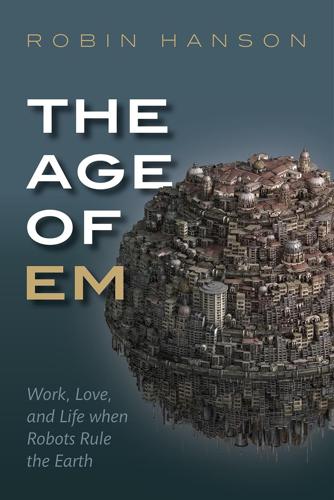
The Age of Em: Work, Love and Life When Robots Rule the Earth
by
Robin Hanson
Published 31 Mar 2016
Similarly, while more complex and higher quality business products tend to become better adapted to circumstances, and to sell for higher prices, simpler cheaper products tend to have more descendants in new products, at least for products sold to firms (Christensen 1997; Thompson 2013). In multi-cellular animals, flexible generic stem cells create other more varied cells that are better adapted to particular body tasks. Yet new organisms descend mostly from generic stem cells, which have far more descendant cells in the long run. All of these examples suggest that as systems become better adapted in detail to particular situations, they become more fragile and less able to adapt in detail to very different situations.
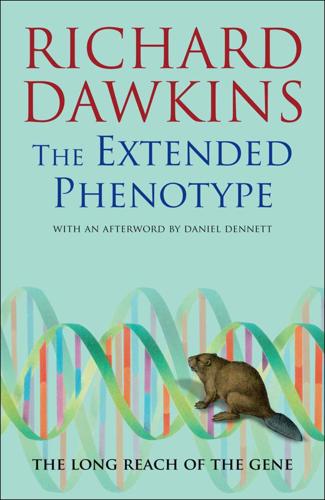
The Extended Phenotype: The Long Reach of the Gene
by
Richard Dawkins
Published 1 Jan 1982
Species M’s runner was said to be a broad-fronted meristem, while species S’s runner narrowed down to a one-celled bottleneck at the base of each new plant. But what if there was an intermediate species with a two-celled bottleneck at the base of each new plant? There are two main possibilities here. If the pattern of development is such that it is unpredictable which cells in the daughter plant will be descended from which of the two stem cells, the point I have made about developmental bottlenecks will simply be weakened quantitatively: genetic mosaics may occur in the population of plants, but there will still be a statistical tendency for cells to be genetically closer to fellow members of the same plant than to cells in other plants.
…
But he must show the same circumspection in this difficult theoretical field as Fisher (1930a), Williams (1975) and Maynard Smith (1978a) brought to the analogous suggestions about sexual reproduction being there because it speeds up evolution. The organism has the following attributes. It is either a single cell, or if it is multicellular its cells are close genetic kin of each other: they are descended from a single stem cell, which means that they have a more recent common ancestor with each other than with the cells of any other organism. The organism is a unit with a life cycle which, however complicated it may be, repeats the essential characteristics of previous life cycles, and may be an improvement on previous life cycles.

SuperBetter: The Power of Living Gamefully
by
Jane McGonigal
Published 14 Sep 2015
The game worked equally well for novice or infrequent game players as it did for lifelong players—and it is continuing to work for patients worldwide. As a result of this successful clinical trial, Re-Mission has been distributed to more than 250,000 cancer patients. And recently HopeLab released six follow-up cancer-fighting games online, including Stem Cell Defender and Nanobot’s Revenge. (They are free to play at www.re-mission2.org.) HopeLab’s games are an incredible, potentially life-saving resource. But even if you aren’t battling cancer, the Re-Mission research offers a powerful, life-changing insight: motivation alone is far less important to success and willpower than you think.
…
See also Facebook social network games, 66–71, 73, 76 social resilience, 293, 341, 418 and bad guys, 186, 188 boosting of, 178, 211–12, 241–42, 260, 313 building of, 18, 155, 178, 250 and game playing, 75, 254 and longevity, 336 power-ups for, 161, 178 quests for, 17–18, 20, 211–12, 271 strategies for, 152 and virtual allies, 258–60 social support, 17, 76, 138, 204, 415 and allies, 247–48, 252–53, 257–60 benefits of, 237–39, 257 and game playing, 68, 71, 105 gameful approach to, 121, 254 increase in, 20, 66, 126, 258–60, 418 and life expectancy, 337 measuring of, 327–28 power-ups for, 160–61 Soldiers to Summits, 303 South Korea, 49–50 Sovijärvi-Spapé, Dr. Michiel, 53 spirituality, 7, 49–50, 174, 220, 222, 227, 263, 270, 279, 282, 313, 324, 339, 381, 393 sports, 24, 87, 99, 237, 293, 331–32, 335. See also athletes Stack, C. P., 317–18 Stanford University, 94–99, 189, 328, 354, 398, 401–02 StarCraft, 110 Stem Cell Defender, 80 Stony Brook University, 41 stories. See heroic stories; success stories strengths, 1, 6, 8, 12, 19 allies award points for, 324–26, 341 and bad guys, 185, 209 building of, 327, 331 and challenges, 9–10, 129, 338 coaching of, 357 and daily life, 104, 118–19, 121 and game playing, 2–4, 12, 23–25, 38, 48, 108, 118–21, 331 identifying them, 115 power-ups for, 160, 178, 183 and quests, 210 See also signature character strengths; specific types; Values in Action (VIA) strengths stress, 1, 7–9, 75, 80, 151 and allies, 324 and attention control, 50–51 and bad guys, 197, 208 blocking of, 107 and breathing techniques, 82–84, 407 and challenge versus threat mindset, 138–39, 141–42, 158 and epic wins, 299 and game playing, 46–47, 50–51, 51, 93–94, 109–10 and health, 14, 83, 138, 162–63, 284, 404 lessening of, 46–48, 51, 82–83, 238, 253, 293, 354, 384–85, 393, 408–9 managing of, 135 power-ups for, 160, 162, 177, 179–81, 183, 393 and quests, 236 success.
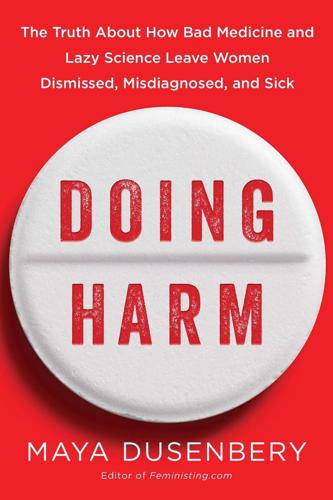
Doing Harm: The Truth About How Bad Medicine and Lazy Science Leave Women Dismissed, Misdiagnosed, and Sick
by
Maya Dusenbery
Published 6 Mar 2018
In 2014, a review of over six hundred studies published in prominent surgery journals recently found that among cell studies, three-quarters didn’t specify the sex of the cell lines used and of those that did, over 70 percent used only male cells. This despite the fact that sex differences on the cellular level have been observed; as the 2001 IOM report put it, “every cell has a sex.” For example, studies have found that skeletal muscle stem cells derived from females regenerated new tissue faster than those from males did, and only female bone marrow mononuclear cells have proven useful in preventing plaque buildup in the arteries of mice. When it comes to animal studies, researchers can’t justify their exclusion of females out of concerns about fetal harm.
…
Erin Schumaker, “Sexism in the Doctor’s Office Starts Here,” HuffPost, November 10, 2015, www.huffingtonpost.com/entry/women-are-excluded-from-clinical-trials_us_5637ad65e4b0c66bae5d36ba. In 2014, a review of over six hundred studies . . . Dustin Y. Yoon et al., “Sex Bias Exists in Basic Science and Translational Surgical Research,” Surgery 156, no. 3 (September 2014), doi:10.1016/j.surg.2014.07.001. For example, studies have found that skeletal muscle stem cells . . . Sabra L. Klein et al., “Sex Inclusion in Basic Research Drives Discovery,” PNAS 112, no. 17 (April 28, 2015), doi:10.1073/pnas.1502843112. But the widespread reliance on male animals seems to stem . . . Irving Zucker and Annaliese K. Beery, “Males Still Dominate Animal Studies: Many Researchers Avoid Using Female Animals,” Nature 465 (June 10, 2010), doi:10.1038/465690a.
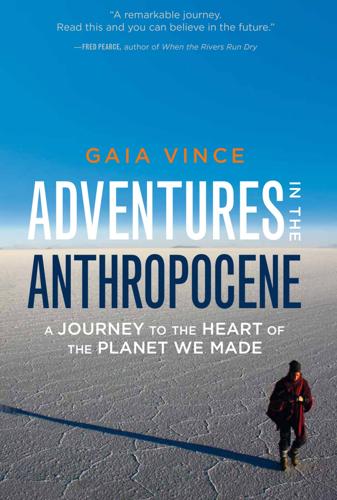
Adventures in the Anthropocene: A Journey to the Heart of the Planet We Made
by
Gaia Vince
Published 19 Oct 2014
So far, Martha Gomez and her colleagues have been working with the endangered South African black-footed cat, by breeding it using IVF and gestating the embryos inside domestic cats. Next they plan to attempt Tasmanian tigers, extinct since the 1930s. Meanwhile, scientists at Brazil’s frozen zoo at the Embrapa research institute are trying to clone endangered species including the maned wolf and jaguar. Other biologists have managed to generate pluripotent stem cells from the endangered snow leopard, theoretically enabling them to create the sex cells that give rise to embryos. The possibilities are immense. For example, if a species is endangered or extinct because of a disease, a cloned variety could be brought back with its genome tweaked to be resistant to that disease.
…
Kipp sighs, he was expecting a couple of new flat-weave algal shirts (once-common cotton is now very pricey), and has already thrown his frayed ones into the biodigester. Kipp is 87 now, yet his mind is sharp and his body sprightly (thanks to artificial joints, replacement cartilage grown from stem cells, eye and ear parts, and his decadal arterial scrub). He has the lifestyle, he thinks, a 60-year-old might have had in the year he was born: he works two days a week, he plays tennis with virtual and flesh opponents, he meets his virtual and flesh friends and family regularly. When he was born, there were just 7 billion people on the planet; now there are more than 10 billion, fewer than many had predicted.

San Francisco
by
Lonely Planet
Biotech is nothing new here: in 1976, an upstart company called Genentech was founded over beer at a San Francisco bar, then got to work cloning human insulin and introducing the hepatitis B vaccine. California voters approved a $3 billion bond measure in 2004 for stem cell research, and by 2008, California had become the biggest funder of stem cell research, with SoMa’s Mission Bay as its designated headquarters. With the US in recession, it seems impossible that San Francisco could initiate another boom – but if history is any indication, the impossible is almost certain to happen in San Francisco. Timeline June 1776 Captain Juan Bautista de Anza and Father Francisco Palou arrive in SF with cattle and settlers.
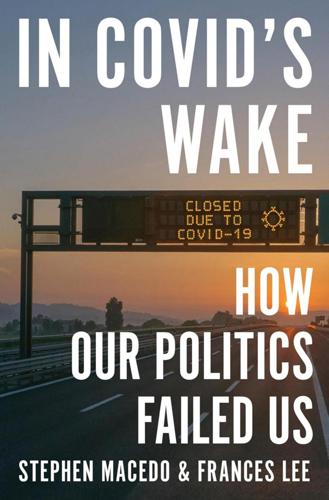
In Covid's Wake: How Our Politics Failed Us
by
Stephen Macedo
and
Frances Lee
Published 10 Mar 2025
Rand Paul’s memoir of the Covid years, Deception: The Great Covid Cover-Up (Washington, DC: Regnery, 2023), chaps. 8 and 10. 49. Remarks of President Barack Obama—As Prepared for Delivery, Signing of Stem Cell Executive Order and Scientific Integrity Presidential Memorandum, Washington, DC, March 9, 2009, https://obamawhitehouse.archives.gov/the-press-office/remarks-president-prepared -delivery-signing-stem-cell-executive-order-and-scientifi; quoted in Andy Slavitt, Preventable: The Inside Story of How Leadership Failures, Politics, and Selfishness Doomed the U.S. Coronavirus Response (New York: St.

Enlightenment Now: The Case for Reason, Science, Humanism, and Progress
by
Steven Pinker
Published 13 Feb 2018
Belief in an afterlife implies that health and happiness are not such a big deal, because life on earth is an infinitesimal portion of one’s existence; that coercing people into accepting salvation is doing them a favor; and that martyrdom may be the best thing that can ever happen to you. As for incompatibilities with science, these are the stuff of legend and current events, from Galileo and the Scopes Monkey Trial to stem-cell research and climate change. A second counter-Enlightenment idea is that people are the expendable cells of a superorganism—a clan, tribe, ethnic group, religion, race, class, or nation—and that the supreme good is the glory of this collectivity rather than the well-being of the people who make it up.
…
In the medical realm, a lab-on-a-chip could perform a liquid biopsy and detect any of hundreds of diseases from a drop of blood or saliva. Artificial intelligence, crunching big data on genomes, symptoms, and histories, will diagnose ailments more accurately than the sixth sense of doctors, and will prescribe drugs that mesh with our unique biochemistries. Stem cells could correct autoimmune diseases like rheumatoid arthritis and multiple sclerosis, and could populate cadaver organs, organs grown in animals, or 3D-printed models with our own tissue. RNA interference could silence pesky genes like the one that regulates the fat insulin receptor. Cancer therapies can be narrowcasted to the unique genetic signature of a tumor instead of poisoning every dividing cell in the body.
…
Just as religious institutions deserve praise when they pursue humanistic ends, they should not be shielded from criticism when they obstruct those ends. Examples include the withholding of medical care from sick children in faith-healing sects, the opposition to humane assisted dying, the corruption of science education in schools, the suppression of touchy biomedical research such as on stem cells, and obstruction of lifesaving public health policies such as contraception, condoms, and vaccination against HPV.57 Nor should religions be granted a presumption of a higher moral purpose. Faitheists who have hoped that the moralistic fervor of Evangelical Christianity might be channeled into movements for social improvement have repeatedly gotten burned.
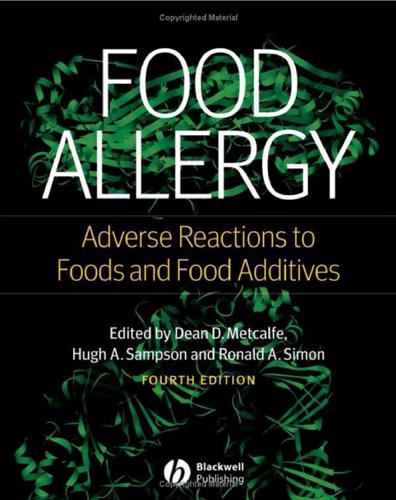
Food Allergy: Adverse Reactions to Foods and Food Additives
by
Dean D. Metcalfe
Published 15 Dec 2008
Simon Abbreviations AA AAF AAP ACCD Arachidonic acid Amino acid-based formula American Association of Pediatrics 1-Aminocyclopropane-1-carboxylic acid deaminase ACD Allergic contact dermatitis AD Atopic dermatitis ADA Americans with Disabilities Act AE Atopic eczema AEC Absolute eosinophil count AERD Aspirin exacerbated respiratory disease AFP Antifreeze protein AGA Anti-gliadin antibodies AI Adequate intake ALA Alimentary toxic aleukia ALDH Aldehyde dehydrogenase ALS Advanced Life Support ALSPAC Avon Longitudinal Study of Parents and Children AMDR Acceptable Macronutrient Distribution Ranges AMP Almond major protein APC Antigen-presenting cell APT Atopy patch test ASCA Anti-Saccharomyces cerevisiae ASHMI Anti-asthma Herbal Medicine Intervention ASP Amnesic shellfish poisoning AZA Azaspiracid AZP Azaspiracid shellfish poisoning BAL Bronchoalveolar lavage BAT Basophil activation test BCR B-cell receptor BER Bioenergy regulatory BFD Bioelectric functions diagnosis BHA Butylated hydroxyanisole BHR Basophil histamine release BHT Butylated hydroxytoluene BLG β-lactoglobulin BMI Body mass index BN Brown–Norway BP Blood pressure BPRS Brief Psychiatric Rating Scale BTX Brevetoxins CAS Chemical Abstract Society CCD CCP CDC CFA CFR CGRP CIU CIUA CLA CLSI CM CMA CMF CMP CMV CNS COX CRH CRP CRS CSPI CSR CTL CTX CU DAO DBPC DBPCFC DC DHA DMARD DoH DRI DSP DTH DTT DTX EAR EAV ECP EDN EDS Cross-reactive carbohydrate determinants Cyclic citrullinated peptide Centers for Disease Control and Prevention Chemotactic factor of anaphylaxis Code of Federal Regulations Calcitonin gene-related peptide Chronic idiopathic urticaria Chronic idiopathic urticaria/angioedema Cutaneous lymphocyte-associated antigen Clinical and Laboratory Standards Institute Cow’s milk Cow’s milk allergy Cow’s milk formula Cow’s milk protein Cucumber mosaic virus Central nervous system Cyclo-oxygense Corticotropin-releasing hormone C-reactive protein Chinese restaurant syndrome Center for Science in the Public Interest Class-switch recombination Cytotoxic T-lymphocyte Ciguatoxins Cholinergic urticaria Diamine oxidase Double-blind, placebo-controlled Double-blind, placebo-controlled food challenge Dendritic cell Docosahexaenoic acid Disease modifying anti-rheumatic agent Department of Health Dietary reference intakes Diarrhetic shellfish poisoning Delayed-type hypersensitivity Dithiothreitol Dinophysistoxins Estimate average requirement Electroacupuncture according to Voll Eosinophil cationic protein Eosinophil-derived neurotoxin Electrodermal screening xiii xiv Abbreviations EE EEG EER EFA EFSA EGID EIA ELISA EMA EMT EoE EoG EoP EPA EPO EPSPS Eosinophilic esophagitis Electroencephalogram Estimated energy requirement Essential fatty acid European Food Safety Authority Eosinophil-associated gastrointestinal disorders Enzyme immunoassay Enzyme-linked immunosorbent assays Anti-endomysial Emergency Medical Technical Eosinophilic esophagitis Eosinophilic gastroenteritis Eosinophilic proctocolitis Eicosapentaneoic acid Eosinophilic peroxidase Enzyme 5-enolpyruvylshikimate-3-phosphate synthase EPX Eosinophil protein X ESR Erythrocyte sedimentation rate FAAN Food Allergy & Anaphylaxis Network FAE Follicle-associated epithelium FAFD Food-additive-free diet FALCPA Food Allergen Labeling and Consumer Protection Act FAO Food and Agricultural Organization FASEB Federation of American Societies for Experimental Biology FDA Food and Drug Administration FDDPU Food-dependent delayed pressure urticaria FDEIA Food-dependent exercise-induced anaphylaxis FEC Food-and-exercise challenge FEIA Fluorescent-enzyme immunoassay FFQs Food Frequency Questionnaires FFSPTs Fresh food skin prick tests FPIES Food protein-induced enterocolitis syndrome FSIS Food Safety Inspection Service GALT Gut-associated lymphoid tissue GBM Glomerular basement membrane GER Gastroesophageal reflux GERD Gastroesophageal reflux disease GFD Gluten-free diet GH Growth hormone GHRH Growth hormone releasing hormone GI Gastrointestinal GINI German Infant Nutritional Interventional GOX Glyphosate oxidoreductase GrA Granzymes A GRAS Generally recognized as safe GrB Granzymes B GRS Generally regarded as safe GSH Glutathione GVHD Graft-versus-host disease HACCP Hazard analysis and critical control point HAQ Health Assessment Questionnaire HBGF HCN HE HEL HEV HKE HKL HKLM HLA HMW HNL HPF HPLC HPP HRFs HRP HSP HVP IAAs ICD IDECs IEC IEI IgA IgE IgG IgM ISB ISS IST ITAM ITIM IUIS JECFA KA KGF KLH LA LCPUFA LCs LFI LGG LLDC LMW LOAELs LOX LP LPL LPS LRTIs LSD LT LTP MALDI Heparin-binding growth factors Hydrogen cyanide Hen’s egg Hen’s egg lysozyme High endothelial venules Heat-killed Esherichia coli Heat-killed Listeria monocytogene Heat-killed Listeria monocytogenes Human leukocyte antigen High molecular weight Human neutrophil lipocalin High-powered field High-performance liquid chromatography Hydrolyzed plant protein Histamine releasing factors Horseradish peroxidase Hydrolyzed soy protein Hydrolyzed vegetable protein Indispensable amino acids Irritant contact dermatitis Inflammatory dendritic epidermal cells Intestinal epithelial cells Idiopathic environmental intolerances Immunoglobulin A Immunoglobulin E Immunoglobulin G Immunoglobulin M Isosulfan blue Immunostimulatory sequences Intradermal skin test Immunoreceptor tyrosine-based activation motif Immunoreceptor tyrosine-based inhibitory motif International Union of Immunological Societies Expert Committee on Food Additives Kainic acid Keratinocyte growth factor Key-hole limpet hemocyanin Linoleic acid Long-chain polyunsaturated fatty acids Langerhans cells Lateral flow immunochromatographic Lactobacillus rhamnosus GG Langerhans-like dendritic cell Low molecular weight Lowest observed adverse effect level Lipoxygenase Lamina propria LP lymphocytes Lipopolysaccharide Lower respiratory tract infections Lysergic acid diethylamide Leukotrienes Lipid-transfer protein Matrix-assisted laser desorption/ionization Abbreviations xv MALT MAO MAPK MAS MBP MC MCS MED MFA MHC MIP MMP MMPI MMR MPO MSG MTX MUFA MWL NADPH NASN NCHS NDGA NIAID NIOSHA NK NLEA NOEL NPA NPIFR NPV NSAID NSBR NSP OAS ODN OFC OPRA OT OVA PAF PAMP PBB PBMC PBT PCB PEF PEFR PFS PFT PHA PK PKC Mucosa-associated lymphoid tissue Monoamine oxidase Mitogen-activated protein kinase Multicenter Allergy Study Major basic protein Mast cell Multiple chemical sensitivity Minimal eliciting dose Multiple food allergies Major histocompatibility complex Macrophage inflammatory protein-1 Matrix metalloproteinase Minnesota Multiphasic Personality Inventory Measles–mumps–rubella Myeloperoxidase Monosodium glutamate Maitotoxins Monounsaturated fatty acids Mushroom worker’s lung Nicotinamide dinucleotide phosphate National Association of School Nurses National Center for Health Statistics Nordihydroguaiaretic acid National Institute of Allergy and Infectious Diseases National Institute for Occupational Safety and Health Natural killer National Labeling and Education Act No observable effect level Negative predictive accuracy Nasal peak inspiratory flow Negative predictive values Non-steroidal anti-inflammatory drugs Non-specific bronchial responsiveness Neurotoxic shellfish poisoning Oral allergy syndrome Oligodeoxynucleotides Oral food challenge Occupational Physicians Reporting Activity Oral tolerance Ovalbumin Platelet-activating factor Pathogen-associated molecular pattern Polybrominated biphenyls Peripheral blood mononuclear cell Peripheral blood T-cells Polychlorinated biphenyls Peak expiratory flow Peak expiratory flow rate Pollen–food syndrome Pulmonary function testing Phytohemagglutinin Prausnitz-Küstner Protein kinase C PMN PPA PPI PPs PPT PPV PR PSP PST PTX PUFA PUVA RADS RAST RBA RBL RDA RDBPC RF RIA ROS SBPC SC SCF SCIT SCN SFAP SGF SHM SIF SIgA SIgM SIT SLIT SPECT SPT STX SVR TCM TCR TLP TLR TNF TPA TSA TTG TTX UGI UL USDA VAR VIP WHO YTX Polymorphonuclear leukocytes Positive predictive accuracy Protein phosphatase inhibition Peyer’s patches PP-derived T-cells Positive predictive value Pathogenesis-related Paralytic shellfish poisoning Prick skin test Pectenotoxins Polyunsaturated fatty acids Psoralen ⫹ ultraviolet A radiation Reactive airways dysfunction syndrome Radioallergosorbent test Receptor-binding assay Basophilic leukemia Recommended dietary allowances Randomized double–blind, placebo-controlled Rheumatoid factor Radioimmunoassay Reactive oxygen species Single-blinded placebo-controlled Secretory component Stem cell factor Subcutaneous immunotherapy Soybean cyst nematode School Food Allergy Program Simulated gastric fluid Somatic hyper mutation Simulated intestinal fluid Secretory IgA Secretory IgM Specific immunotherapy Sublingual immunotherapy Single photon emission computed tomography Skin prick test Saxitoxins Sequential vascular response Traditional Chinese medicine T-cell receptor Thaumatin-like protein Toll-like receptor Tumor necrosis factor Tetradecanoylphorbol-13-acetate Transportation Security Administration Tissue transglutaminase Tetrodotoxin Upper GI Upper intake level United States Department of Agriculture Voice-activated audiotape recording Vasoactive intestinal peptide World Health Organization Yessotoxin This page intentionally left blank PA RT 1 Adverse Reactions to Food Antigens: Basic Science Food Allergy: Adverse Reactions to Foods and Food Additives, 4th edition Edited by Dean D.
…
Mast cells Mast cells are widely distributed throughout the body, frequently found around blood vessels, attached to nerves and at mucosal surfaces. Bone marrow-derived mast cell progenitors migrate via the peripheral blood into the tissue, where they undergo final maturation under the influence of local microenvironmental factors. Stem cell factor (SCF), produced either in a soluble or membrane-bound form by fibroblasts, endothelial cells, and stromal cells, is the essential factor for both mast cell maturation and survival of mature mast cells [81]. The importance of SCF and its receptor KIT is stressed by the fact that KIT-deficient mice basically lack mast cells.
…
Cultured human intestinal mast cells express functional IL-3 receptors and respond to IL-3 by enhancing growth and IgE receptor-dependent mediator release. Eur J Immunol 2002;32:2308–16. 84 Matsuzawa S, Sakashita K, Kinoshita T, et al. IL-9 enhances the growth of human mast cell progenitors under stimulation with stem cell factor. J Immunol 2003;170:3461–7. 85 Bryce PJ, Mathias CB, Harrison KL, et al. The H1 histamine receptor regulates allergic lung responses. J Clin Invest 2006;116:1624–32. 86 Valent P, Sillaber C, Baghestanian M, et al. What have mast cells to do with edema formation, the consecutive repair and fibrinolysis?

Western USA
by
Lonely Planet
But as online users continued to look for useful information and one another in those billions of web pages, search engines and social media boomed. Meanwhile, California biotech has been making strides. In 1976, an upstart company called Genentech cloned human insulin and introduced the hepatitis B vaccine. California voters approved a $3 billion bond measure in 2004 for stem cell research, and by 2008 California had become the biggest funder of stem cell research and the focus of Nasdaq’s new Biotech Index. TIMELINE 20,000–40,000 BC The first peoples to the Americas arrive from Central Asia by migrating over a wide land bridge between Siberia and Alaska (when sea levels were lower than today). 8000 BC Widespread extinction of ice-age mammals including the woolly mammoth, due to cooperative hunting by humans and a warming climate.
…
When the bubble burst, plunging the state’s economy into chaos, Californians blamed their Democratic governor, Gray Davis, and, in a controversial recall election, voted to give Arnold Schwarzenegger a shot at fixing things. Despite some early fumbles, the actor-turned-Republican-politician ‘Governator’ surprisingly put environmental issues and controversial stem-cell research at the top of his agenda. Budget shortfalls have caused another staggering financial crisis that Sacramento lawmakers and once-again Governor Jerry Brown have yet to resolve. Meanwhile, the need for public education reform builds, prisons overflow, state parks are chronically underfunded and the conundrum of illegal immigration from Mexico, which fills a critical cheap labor shortage (especially in agriculture), continues to vex the state.
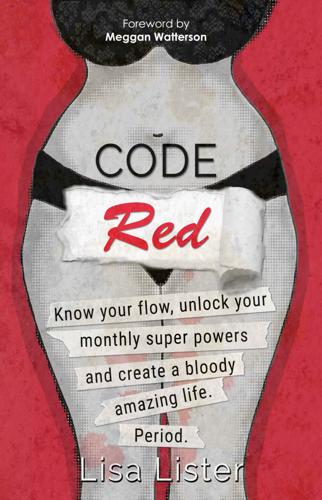
Code Red: Know Your Flow, Unlock Your Super Powers and Create a Bloody Amazing Life. Period.
by
Lisa Clark
Published 15 Feb 2015
Lead with your heart to come up and drop forward into Child’s Pose for a few breaths. The WomanSoul.co.uk guide to herbal healing for the menstrual cycle: Pre-ovulation After our monthly bleed, now is the time to support the body’s process of cleansing. And because of the endometrial blood loss with all of its life sustaining goodness and stem cells, it is important to replace minerals and nutrients to the system. The herbs below are the cornerstone for feminine health. Forget diamonds, these green treasures are a girl’s best friend! Nettle (Urtica dioica) highly nutritious, dense with vitamins and minerals including chlorophyll, iron, vitamin C, K, folic acid, protein, serotonin, acetyl-choline (both feel good endorphins) potassium, silica and calcium, Balances blood sugar levels, convalescence, anaemia, relieves fluid retention, reduces heavy menstrual blood flow, brings on delayed or absent menses, excellent menopause restorative, blood cleanser, increases energy, increase or decrease breast milk flow, lymphatic cleanser, kidney and adrenal tonic, whole body strengthening for conception, pregnancy, post partum, menstruation and menopause.
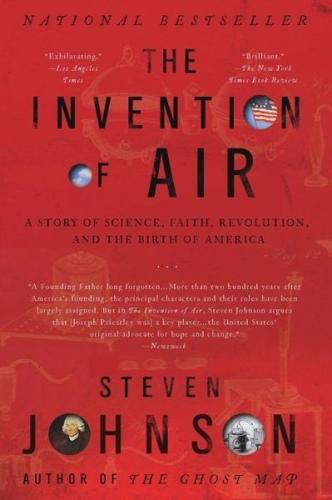
The Invention of Air: A Story of Science, Faith, Revolution, and the Birth of America
by
Steven Johnson
Published 26 Dec 2008
Fields like information theory, ecosystem science, and evolutionary theory rank among the most influential and generative scientific fields of the past fifty years, spawning debates that have unavoidable consequences for the spheres of politics and of faith (even if the presidential candidates usually try to avoid them). Priestley would have grasped immediately how so many of today’s discoveries are bound up in social and political affairs: global warming, stem-cell research, intelligent design, neuroscience, atomic energy, the genomic revolution, not to mention the massive social disruptions introduced by computer science in the form of the Internet. Building a coherent theory of the modern world without a thorough understanding of that science would have struck Priestley as a scandal of the first order.
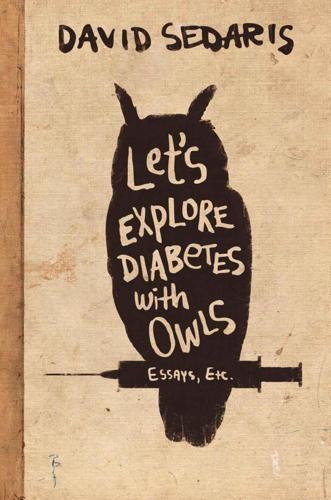
Let's Explore Diabetes With Owls
by
David Sedaris
Published 22 Apr 2013
In the Netherlands now, I imagine it’s legal to marry your own children. Get them pregnant, and you can abort your unborn grandbabies in a free clinic that used to be a church. The doctor might be a woman who became a man and then became a woman again, all on taxpayers’ dollars, but as long as she saves the stem cells, she’ll have the nation’s blessing. That’s just me, though, being insensitive. Certain people might brand me “mean-spirited,” though I think that’s the pot calling the kettle black. States vote to take away my marriage rights, and even though I don’t want to get married, it tends to hurt my feelings.
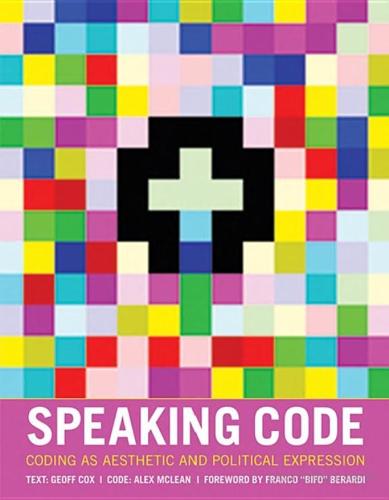
Speaking Code: Coding as Aesthetic and Political Expression
by
Geoff Cox
and
Alex McLean
Published 9 Nov 2012
The case for collective working is further expressed by the inherent structures of technologies that encourage sharing and self-organization at all scales of operation, rather like the plurality at the heart of the human condition, as already stressed in the work of Arendt. Moreover, it takes ideological effort to privatize, in historical parallel to the turning of common land into private property in the enclosure movement in England at the end of the eighteenth century, or indeed in the more recent example of patenting of gene sequences and stem cells as part of the so-called “second enclosure movement.”36 These examples stand as violations of the commons and inherent publicness that are part of the human condition (coming close to what Hardt and Negri have referred to as “common-wealth”).37 76 Chapter 3 Ownership Western societies have tended to stress a view of ownership tied to individuality, but this should be considered a perversion.
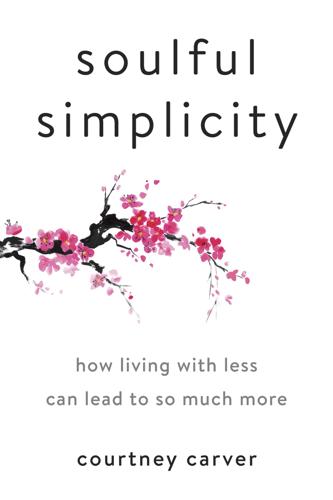
Soulful Simplicity: How Living With Less Can Lead to So Much More
by
Courtney Carver
Published 26 Dec 2017
She was across the ocean but it felt like she was holding my hand. Love was the way my husband found a thousand ways to help me before I even knew how to ask for help. Love was how my parents rallied around me and said they would do anything to help. Love was the time my daughter got in trouble for writing about the benefits of stem cell therapy for MS at her Catholic school, and love was when my sister-in-law organized a cycling team, Team TLC (the team who loves Courtney), to raise funds for MS research. All of those loving things, along with many others, healed me. For the Love of Puppy Breath Three weeks after my MS diagnosis, we happened to be watching a local pet adoption cable channel, and our hearts broke over every sad pet story.
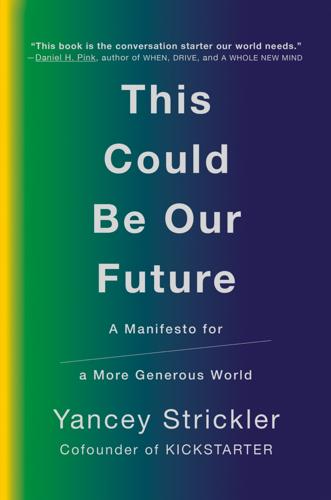
This Could Be Our Future: A Manifesto for a More Generous World
by
Yancey Strickler
Published 29 Oct 2019
Tensions between those who believe the buildings are finished and those who want to add to them are frequent. The emergence of new knowledge or a new building will inevitably threaten some part of the existing order. The debates can spark cultural divides, like whether to teach evolution in schools or the morality of stem cell research. To date, the buildings have weathered these storms and evolved with the times. But as the twentieth century neared its end, the spirit changed, too. A new energy took its place. When the dominant perspective of today looks at the buildings, it recognizes the importance of education, government, health care, and science.

A Short History of Humanity: How Migration Made Us Who We Are
by
Johannes Krause
and
Thomas Trappe
Published 8 Apr 2021
The medical possibilities are innumerable, but there are plenty of unknown variables. Nobody can yet say for sure whether gene editing may not simply eliminate one disease only to replace it with another. We’re still some way off from using genetic scissors as a standard form of treatment, although the first experiments on human stem cells are already under way. In late 2018, Chinese scientist He Jiankui announced the birth of the first gene-edited babies using CRISPR/Cas9. According to He’s own statements, he switched off the CCR5 receptor in twins Lulu and Nana, editing the genome at the embryonic stage, to protect the children from HIV.
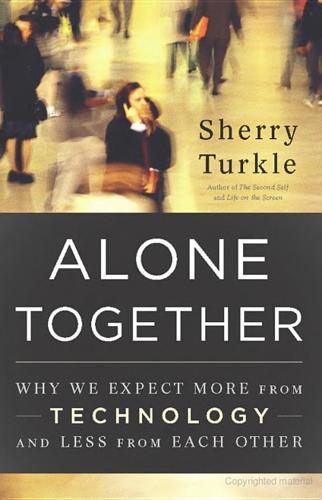
Alone Together
by
Sherry Turkle
Published 11 Jan 2011
It is how he and his wife celebrated the most important milestone in their life as a family. In a very different example of our new genres of online intimacy, a friend of mine underwent a stem cell transplant. I felt honored when invited to join her family’s blog. It is set up as a news feed that appears on my computer desktop. Every day, and often several times a day, the family posts medical reports, poems, reflections, and photographs. There are messages from the patient, her husband, her children, and her brother, who donated his stem cells. There is progress and there are setbacks. On the blog, one can follow this family as it lives, suffers, and rejoices for a year of treatment.
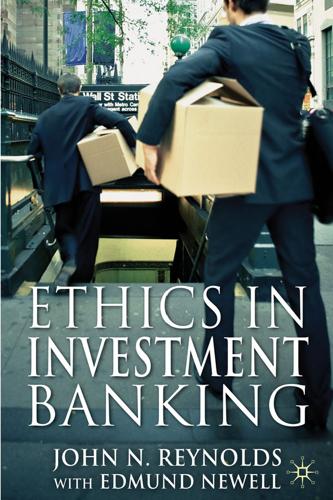
Ethics in Investment Banking
by
John N. Reynolds
and
Edmund Newell
Published 8 Nov 2011
A number of religious groups set out detailed views on investment restrictions from an ethical perspective. The Church of England, through the EIAG, advises a multi-billion pound portfolio of equity investments, and sets out its investment restrictions in a series of policy documents.8 These cover: defence, pornography, stem cell research, gambling, weekly collected home credit (seen as usurious) and alcohol. Each of these policies restricts the Church of England’s investment in these areas. Restrictions are based on a threshold of revenue (such as 10% or 25% of revenue derived from a specific proscribed activity), although the policy papers do not explain the rationale in detail for specific thresholds.
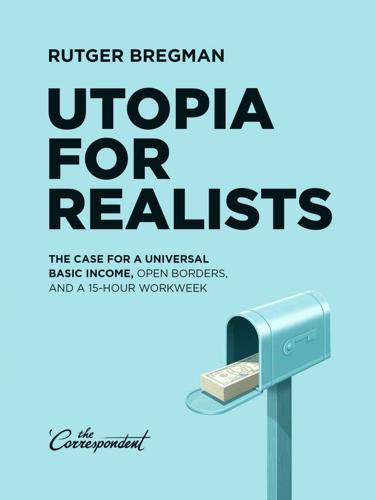
Utopia for Realists: The Case for a Universal Basic Income, Open Borders, and a 15-Hour Workweek
by
Rutger Bregman
Published 13 Sep 2014
In recent decades, dirt-cheap vaccines against measles, tetanus, whooping cough, diphtheria, and polio have saved more lives each year than world peace would have saved in the 20th century.14 Obviously, there are still plenty of diseases to go – cancer, for one – but we’re making progress even on that front. In 2013, the prestigious journal Science reported on the discovery of a way to harness the immune system to battle tumors, hailing it as the biggest scientific breakthrough of the year. That same year saw the first successful attempt to clone human stem cells, a promising development in the treatment of mitochondrial diseases, including one form of diabetes. Some scientists even contend that the first person who will live to celebrate their 1,000th birthday has already been born.15 All the while, we’re only getting smarter. In 1962, 41% of kids didn’t go to school, as opposed to under 10% today.16 In most countries, the average IQ has gone up another three to five points every ten years, thanks chiefly to improved nutrition and education.
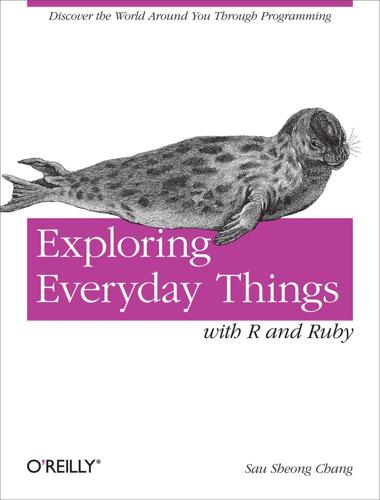
Exploring Everyday Things with R and Ruby
by
Sau Sheong Chang
Published 27 Jun 2012
So what does taking care of yourself have to do with programming? There is no medicine for old age (at least not yet), and spending time programming is hardly the means to improve your health. Today’s healthcare technologies, however, have vastly improved our chances of growing old with fewer health problems. Research into genetics, stem cell transplants, advanced drugs, and information technology has enabled us to live longer and healthier. Naturally, in this book the main thing we’re interested in is the information technology bit. We can’t explore many of these advances in information technology (there are just too many), but we’ll take a simple example and do some poking around.
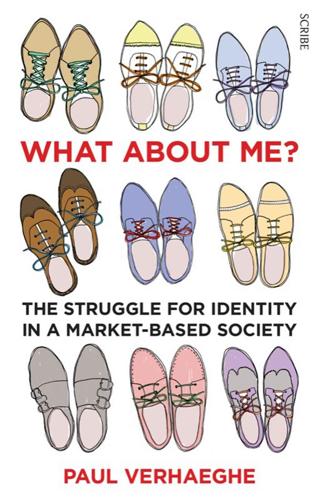
What About Me?: The Struggle for Identity in a Market-Based Society
by
Paul Verhaeghe
Published 26 Mar 2014
The so-called loss of norms and values has generated an unstoppable proliferation of different types of ethics: bioethics, media ethics, medical ethics, contract ethics, care ethics, etc. Most of us are left cold by these mini-ethics, regarding them as a form of occupational therapy for old codgers in dusty offices, churning out directives that no one really feels a need for. Even the word ‘ethics’ sounds passé. Does anyone care about it, apart from lunatics who want to ban stem-cell research and erase Darwin from school textbooks? As a result of the above proliferation, a Kafkaesque bureaucracy has sprung up from which no one can escape, and codes and regulations are running rampant. Take my university’s exam regulations, which for many years consisted of one-and-a-half sheets of paper.

You Are Not a Gadget
by
Jaron Lanier
Published 12 Jan 2010
People have tried to use computing clouds to tap into this collective wisdom effect with fanatic fervor in recent years. There are, for instance, well-funded—and prematurely well-trusted—schemes to apply stock market-like systems to programs in which people bet on the viability of answers to seemingly unanswerable questions, such as when terrorist events will occur or when stem cell therapy will allow a person to grow new teeth. There is also an enormous amount of energy being put into aggregating the judgments of internet users to create “content,” as in the collectively generated link website Digg. How to Use a Crowd Well The reason the collective can be valuable is precisely that its peaks of intelligence and stupidity are not the same as the ones usually displayed by individuals.
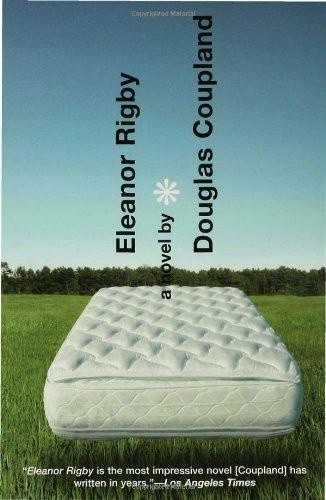
Eleanor Rigby: A Novel
by
Douglas Coupland
Published 29 May 2006
William was good for a visit every few days, and when he came he brought snippets gleaned from the medical underground—yes, a medical underground exists—and these snippets provided us with dim glimmers of hope. It’s amazing how far you can go along bartering with a disease. If we could just fly to Baltimore to try this new antibody therapy, all our problems would be solved! Denial was easy; bargaining was the toughie. Stem cells now offer genuine hope, but as recently as seven years ago—zip. Mother and Leslie did their part too, which was simply to visit. I also kept on hand the best medicine of all: volumes of literature on farming, which Jeremy enjoyed reading or having read to him. When he was too prostrate to do anything much, I read aloud the dos and don’ts of allowing alfalfa fields to go fallow, the proper procedures for piglets who won’t suckle, or the advantages of renting a light plane and viewing your land from above.
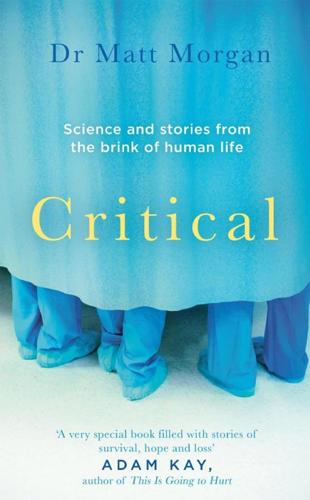
Critical: Science and Stories From the Brink of Human Life
by
Matt Morgan
Published 29 May 2019
Parallels between astronauts and terrestrial patients – Taking physiotherapy rehabilitation ‘To infinity and beyond’. Musculoskelet Sci Pract 27 Suppl 1, S32–S37 (2017). ‘Machines that replace the functions of the liver . . .’ Nicolas, C. T. et al. Concise Review: Liver Regenerative Medicine: From Hepatocyte Transplantation to Bioartificial Livers and Bioengineered Grafts. Stem Cells 35, 42–50 (2017). ‘. . . and pancreas . . .’ Breton, M. et al. Fully integrated artificial pancreas in type 1 diabetes: modular closed-loop glucose control maintains near normoglycemia. Diabetes 61, 2230–2237 (2012). 8: THE BLOOD ‘Carl Sagan, one of the most celebrated scientists of the last 100 years, famously said, “We are made of star-stuff.” ’ The Cosmic Connection: An Extraterrestrial Perspective.
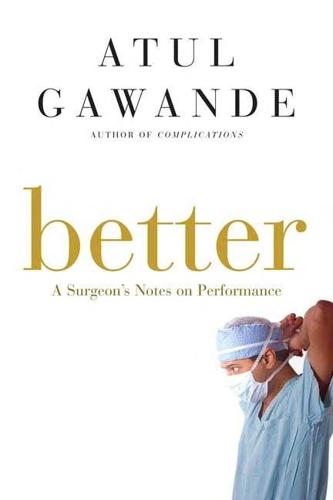
Better: A Surgeon's Notes on Performance
by
Atul Gawande
Published 2 Apr 2007
When we've made a science of performance, however--as we've seen with hand washing, wounded soldiers, child delivery--thousands of lives have been saved. Indeed, the scientific effort to improve performance in medicine--an effort that at present gets only a miniscule portion of scientific budgets--can arguably save more lives in the next decade than bench science, more lives than research on the genome, stem cell therapy, cancer vaccines, and all the other laboratory work we hear about in the news. The stakes could not be higher. Consider breast cancer. Rates of death from breast cancer have fallen about 25 percent in industrialized countries since 1990. A study of data from a U.S. breast cancer registry recently showed that at least a quarter, and likely more than half, of that decline was due simply to increased use of screening mammography by women.

The Reluctant Carer: Dispatches From the Edge of Life
by
The Reluctant Carer
Published 22 Jun 2022
A value of family life might be that it holds our feet to the fire, the kind of fire we might otherwise put out or run away from, which can be just the kind we need. The acts of kindness or forgiveness needed to stick by or even mentally detach from those with whom we are principally engaged, are the stem cells of transformation. Maybe. Equally, I know there are families that should be escaped. Ours I don’t think is among them. At least, not yet. Back in the brick-built womb, I have been slowly and painfully reborn, kicking and screaming all the way. Nor, for any of this insight, does the process appear to be over.
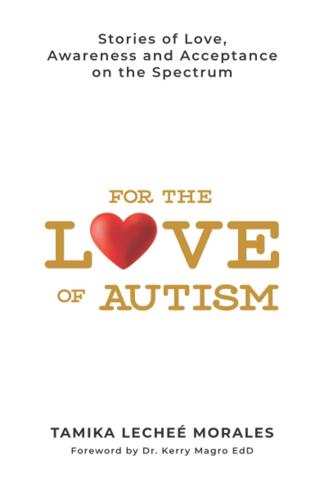
For the Love of Autism: Stories of Love, Awareness and Acceptance on the Spectrum
by
Tamika Lechee Morales
Published 23 Apr 2022
DAY 1,461: AUTISM PARENTS TO THE RESCUE! For nearly a year, Constance endured weekly visits with specialists, had clinical assessments, cognitive studies, and therapeutic interventions. We tried nearly every available medical treatment to cure Constance, including chelation treatments to remove toxic metals and even a stem cell transplant. It was so upsetting to force Constance to have her blood drawn or her skin pricked countless times. So many people claimed that children had been cured. Nothing we tried seemed to help. Medical professionals advised us to make plans for our daughter to be institutionalized. We were shocked!
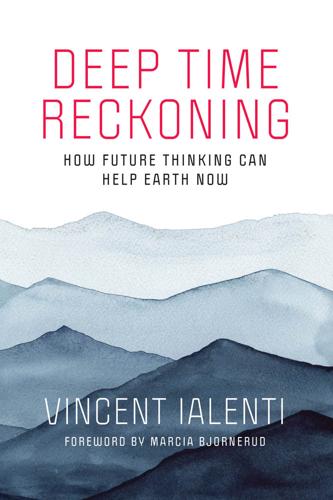
Deep Time Reckoning: How Future Thinking Can Help Earth Now
by
Vincent Ialenti
Published 22 Sep 2020
Crime and jobs statistics, polling methods, vaccine science, government reports, university funding, pandemic disease alerts, and environmental research would be questioned. I found myself thinking that Finland’s Safety Case experts’ aspirations to reckon deep time would, in these contexts, likely be mocked as naïve or hubristic. As I write in 2020, crises of expertise are ongoing. Stem cell research, economic models, climate experts, critical social theorists, cell phone radiation, and human evolution are targeted in frenzied social media free-for-alls. A 2012 Scientific American article described an “anti-intellectual conformity” gaining ground at both ends of the US political spectrum.
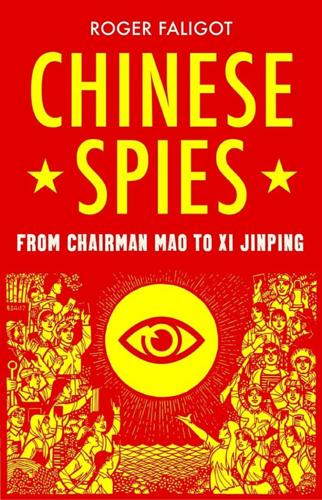
Chinese Spies: From Chairman Mao to Xi Jinping
by
Roger Faligot
Published 30 Jun 2019
These subjects took in essential oils, insect brain proteins, healing and neurologically active plants, cell therapy, and the induction of neural stem cell differentiation via small synthetic and natural molecules—one of Dr X’s fifteen patents. Customs discovered that Dr X, an employee at the French Institute of Chemistry, was carrying several samples from his laboratory that he was taking with him to China. This brilliant researcher appeared to have isolated a molecule capable of activating stem cells in the brain with the potential to cure both Alzheimer’s disease and multiple sclerosis. In other words, the stakes were rather high.

Behave: The Biology of Humans at Our Best and Worst
by
Robert M. Sapolsky
Published 1 May 2017
The immune system is one transposon hot spot, in the enormous stretches of DNA coding for antibodies. A novel virus invades; shuffling the DNA increases the odds of coming up with an antibody that will target the invader.* The main point here is that transposons occur in the brain.11 In humans transpositional events occur in stem cells in the brain when they are becoming neurons, making the brain a mosaic of neurons with different DNA sequences. In other words, when you make neurons, that boring DNA sequence you inherited isn’t good enough. Remarkably, transpositional events occur in neurons that form memories in fruit flies.
…
In addition, conservatives are more likely to think that disgust is a good metric for deciding whether something is moral. Which recalls Leon Kass, the bioethicist with the ice cream–licking issues. He headed George W. Bush’s bioethics panel, one that, thanks to Kass’s antiabortion ideology, greatly restricted embryonic stem cell research. Kass has argued for what he calls “the wisdom of repugnance,” where disgust at something like human cloning can be “the emotional expression of deep wisdom, beyond wisdom’s power completely to articulate it.” The visceral level, with or without post-hoc rationalization, is all you need in order to know what’s right.
…
To metaphorically appropriate a concept from chapter 1, this seems a case of neuronal pathological altruism—beware when freshly minted neurons that may not yet know feces from Shinola want to lend a helping hand. * Listing these various factors that “enhance” or “inhibit” neurogenesis glosses over lots of detail. The number of new neurons that are integrated into circuits reflects (a) the number of new cells that are formed from stem cells in the brain; (b) the percentage of new cells that differentiate into neurons (as opposed to glial cells); and (c) the rate at which new neurons survive and form functional synapses. Each of these manipulations—learning, exercise, stress, etc.—targets different steps. Complicating things further is the fact that not all stressors are equal.
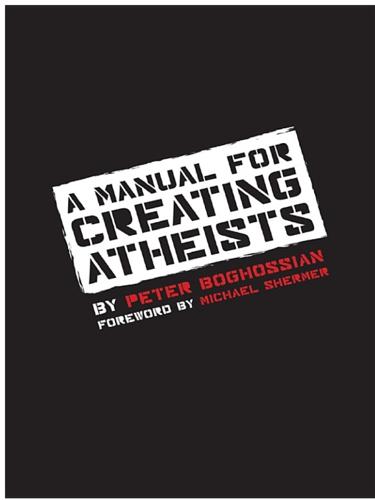
A Manual for Creating Atheists
by
Peter Boghossian
Published 1 Nov 2013
I’ve also found that many subjects think attacks on faith are politically motivated. For example, attacks on abortion are attacks on faith by proxy, and subjects adopt a defensive posture that undermines the effectiveness of the treatment. Don’t engage topics like abortion, gay marriage, school prayer, stem cell research, pornography, contraception, etc. Often, conclusions one comes to on these issues are consequences of a failed epistemology: faith. Undermine faith and all faith-based conclusions are simultaneously undermined. MISCELLANEOUS The following are some miscellaneous tips and suggestions beginning Street Epistemologists may be able to use: Just as evangelizing is relationship based (called “Relationship Evangelism”), so too is Street Epistemology (Anderson, 2010; Chambers, 2009).
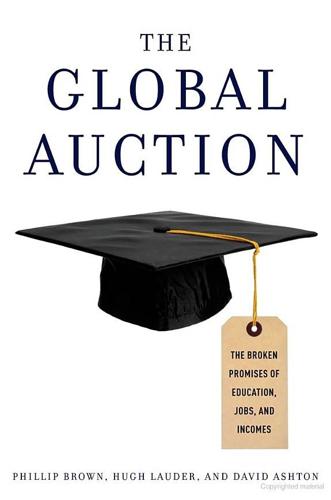
The Global Auction: The Broken Promises of Education, Jobs, and Incomes
by
Phillip Brown
,
Hugh Lauder
and
David Ashton
Published 3 Nov 2010
It may also force Americans and Europeans to up their game as the complacency of past decades evaporates, but there is a major shift in power away from America and Europe that will have profound implications for rich economies. We have described a process in which China is rapidly closing the gap in technological know-how in key fields, including nanotechnology, Knowledge Wars 45 supercomputers, genomics, and stem cell research. Some universities in Asia now rival the capabilities of those in the West, and no doubt more will do so. We are likely to see more partnerships between American universities and those in Asia develop technologies that may not benefit U.S. workers as much as those in China or India. This applies equally to American corporations, as we will go on to discuss in the next chapter.
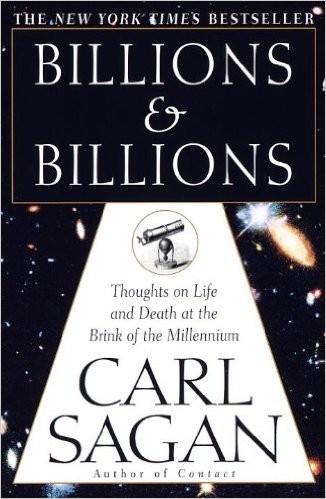
Billions & Billions: Thoughts on Life and Death at the Brink of the Millennium
by
Carl Sagan
Published 11 May 1998
The analysis showed the blood of a very sick person. "Please," he urged, "get retested right away." I did. There had been no mistake. My red cells, which carry oxygen all over the body, and my white cells, which fight disease, were both severely depleted. The most likely explanation: that there was a problem with the stem cells, the common ancestors of both white and red blood cells, which are generated in the bone marrow. The diagnosis was confirmed by experts in the field. I had a disease I had never heard of before, myelodysplasia. Its origin is nearly unknown. If I did nothing, I was astonished to hear, my chances were zero.

Everything Under the Sun: Toward a Brighter Future on a Small Blue Planet
by
Ian Hanington
Published 13 May 2012
The reality is that the most powerful force shaping our lives today is science, whether it’s in industry, medicine, or the military. We cannot control the ideas and inventions unleashed by science if we, as a society, are scientifically illiterate. We elect our politicians to represent us and lead us into the future, and they must make decisions to deal with climate change, overpopulation, endocrine disrupters, stem cells, cloning, genetically modified organisms, pollution, deforestation, and a host of other issues that require some understanding of science. The lesson we should take from people like Portman, who also created an environmental video in her childhood, is that it’s fine to be entertained and to entertain, but that shouldn’t preclude us from taking an interest in the world around us and in the science that shapes so much of our place in that world and helps us to understand it.
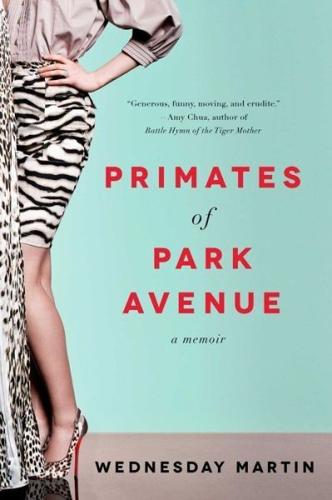
Primates of Park Avenue: A Memoir
by
Wednesday Martin Ph.d.
Published 1 Jun 2015
The high-risk doctor had already asked, and had told me that if we didn’t, she would have a “hospital burial,” explaining that basically she would be dispensed of as medical waste. “Which she isn’t,” he was quick to add, and I said, “Well, I guess she is,” since we hadn’t been able to donate any stem cells or use her tissues in any other way. Now the social worker asked if I wanted a memorial box. It had a baby hat inside, she explained, and the death certificate, and a little hand and footprint, and I grimaced, I think, feeling that was outrageous somehow, and ridiculous. I imagined what I might do with such a box—shove it into a dark spot high in a closet?
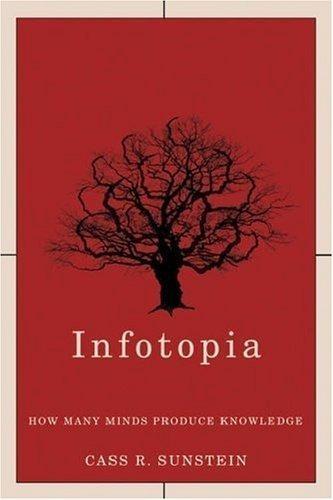
Infotopia: How Many Minds Produce Knowledge
by
Cass R. Sunstein
Published 23 Aug 2006
The only point is that in many domains, prediction markets have worked extremely well, and they are likely to outperform both statistical means and the products of group deliberation. / Feasible Futures / Prediction markets face a pervasive problem of feasibility. Suppose that Congress is deciding whether to authorize stem cell research. That decision calls for judgments of value, not merely of fact, and no information market can make judgments of value. How could a political leader submit questions about abortion, capital punishment, and preemptive war to a prediction market? For many of the most important questions that societies face, prediction markets will not be adequate, even if they incorporate the views of many minds and hence produce a ton of information.
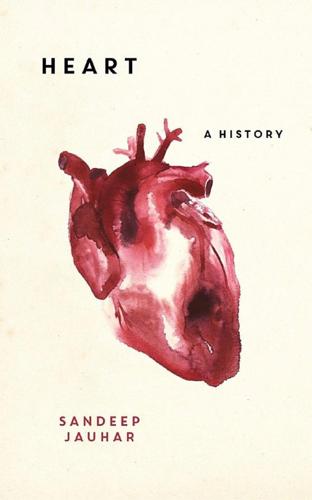
Heart: A History
by
Sandeep Jauhar
Published 17 Sep 2018
I imagine I’ll repeat the CT scan at some point to see whether my coronary plaque has progressed. But I am not all that afraid of what I will find. I feel reassured by the knowledge that has accumulated in my field over the past century, even the past decade. We can now replace heart valves without open-heart surgery. We can inject stem cells to heal damaged heart muscle. My paternal grandfather was in his early fifties when he died. I am forty-eight as I write these words. But I am not my grandfather. I am privileged to live in an era in which the human heart has yielded to the human hand. The three-centimeter trip took millennia, starting ostensibly from the pericardium but really from a time when the heart was an almost supernatural object surrounded by taboos.

Asymmetry
by
Lisa Halliday
Published 6 Feb 2018
But Bloomsbury I found deeply gloomy. When I ran, I would watch the indifferent pavement flowing under my feet and feel overwhelmed by the immense distance I’d put between myself and home. And although I liked the content of my work—I spent my weekdays editing newsletter articles on animal-to-human transplants, stem cell therapy, and genetically modified crops—the staff’s median age was at least fifteen years older than I, and, after the onrush of college imperatives, this new learning curve felt too gentle, its revelations underwhelming and its pace grindingly slow. Rather than fabulous and enviable, then, I felt in London the way you do when you take one step too many at the bottom of a flight of stairs: brought up short by the unexpected plateau and its dull, unyielding thud.
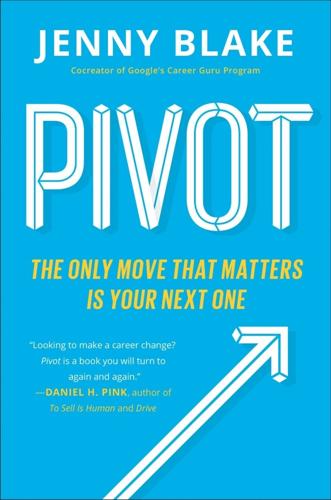
Pivot: The Only Move That Matters Is Your Next One
by
Jenny Blake
Published 14 Jul 2016
Career Roomba Syndrome: Brad Zomick, “Career Roomba Syndrome: How to Cure Your Lack of Passion and Find Direction in Your Career Path,” ThoughtCatalog.com, May 15, 2015, thoughtcatalog.com/brad-zomick/2015/05/career-roomba-syndrome-how-to-cure-your-lack-of-passion-and-find-direction-in-your-career-path/. our addiction to new ideas: Scott Belsky, Making Ideas Happen: Overcoming the Obstacles Between Vision and Reality (New York: Portfolio/Penguin, 2012), 71. average life span of human cells: Institute for Stem Cell Biology and Regenerative Medicine, Stanford Medicine, “Research,” stemcell.stanford.edu/research/; Nicholas Wade, “Your Body Is Younger Than You Think,” New York Times, August 2, 2005, www.nytimes.com/2005/08/02/science/your-body-is-younger-than-you-think.html. Our bodies cycle through circadian rhythms: National Institute of General Medical Sciences, “Circadian Rhythms Fact Sheet,” last modified October 1, 2015, www.nigms.nih.gov/Education/Pages/Factsheet_CircadianRhythms.aspx.
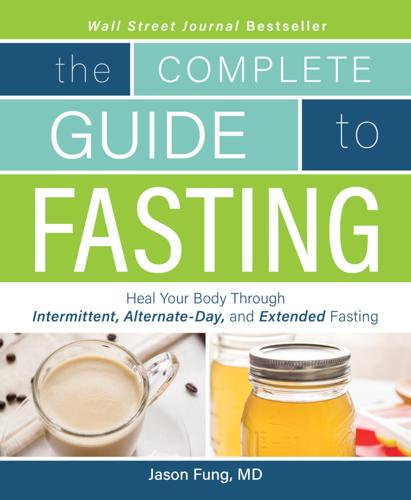
Complete Guide to Fasting: Heal Your Body Through Intermittent, Alternate-Day, and Extended Fasting
by
Jimmy Moore
and
Jason Fung
Published 18 Oct 2016
But the neurological benefits of fasting aren’t limited to the times when we’re actually forgoing food. Animal studies show that fasting has remarkable promise as a therapeutic tool. Aging rats started on intermittent fasting regimens markedly improved their motor coordination, cognition, learning, and memory. Interestingly, there was even increased brain connectivity and new neuron growth from stem cells. A protein called brain-derived neurotrophic factor (BDNF), which supports the growth of neurons and is important for long-term memory, is believed to be responsible for some of these benefits. In animals, both fasting and exercise significantly increase the beneficial BDNF effects in several parts of the brain.
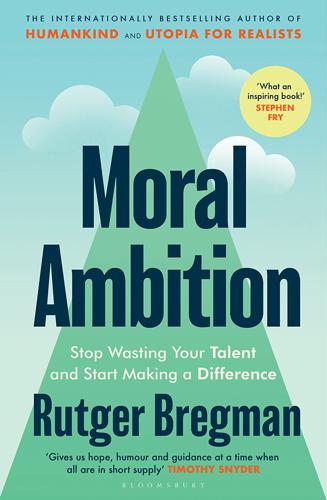
Moral Ambition: Stop Wasting Your Talent and Start Making a Difference
by
Bregman, Rutger
Published 9 Mar 2025
‘We shall escape the absurdity of growing a whole chicken in order to eat the breast or wing,’ wrote a certain Winston Churchill back in 1931, ‘by growing these parts separately.’45 In 2020, Churchill’s prediction came true. That year, in Singapore, the first chicken nuggets were served that required no chicken to be slaughtered.46 The meat was grown in a laboratory from the stem cells of a chicken. In a world where this kind of cultivated meat abounds, it will become much easier to have principles and refuse to eat meat from factory farms. In fact, it wouldn’t surprise me if polluting, industrial-scale meat production is outlawed this century, like asbestos is now in many countries.
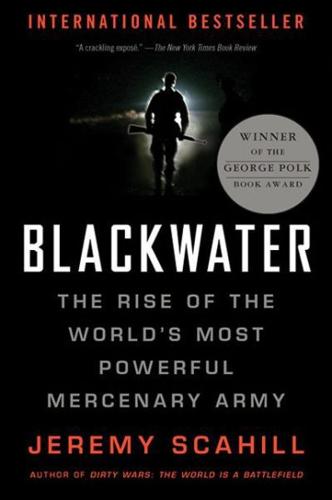
Blackwater: The Rise of the World's Most Powerful Mercenary Army
by
Jeremy Scahill
Published 1 Jan 2007
For a time, Betsy and Dick lived down the street from the Prince family, including Erik, who is nine years younger than his sister.34 In 1988, Gary Bauer and Focus on the Family founder James Dobson began building what would become the Family Research Council (FRC), the crusading, influential, and staunchly conservative evangelical organization that has since taken the lead on issues ranging from banning gay marriage to promoting school vouchers for Christian schools to outlawing abortion and stem-cell research. To get it off the ground, though, they needed funding, and they turned to Edgar Prince. “[W]hen Jim Dobson and I decided that the financial resources weren’t available to launch FRC, Ed and his family stepped into the breach,” wrote Bauer. “I can say without hesitation that without Ed and Elsa and their wonderful children, there simply would not be a Family Research Council.”35 Young Erik would go on to become one of Bauer’s earliest interns at the FRC.36 It was one of many right-wing causes that the Princes would join the DeVoses in bankrolling, leading to what would be known as the Republican Revolution in 1994, which brought Newt Gingrich and a radical right-wing agenda known as the Contract with America to power in Congress, wrestling control from the Democrats for the first time in forty years.
…
Keating dedicated his life to apologetics and defending Catholicism at all costs. During the 2004 and 2006 elections, the group promoted a “Voters Guide for Serious Catholics,” which listed five “non-negotiable” issues that it said are never morally acceptable under Catholic teaching: abortion, homosexual marriage, embryonic stem-cell research, euthanasia, and human cloning.97 Issues that were identified as “Not Non-Negotiable” included “the questions of when to go to war and when to apply the death penalty.”98 When Prince’s wife was dying of cancer, he e-mailed Keating, who in turn asked his followers to pray for the Princes.99 The following year, Prince provided funding to the right-wing Catholic monthly magazine Crisis.100 He also gave generously to several Michigan churches, including $50,000 to Holy Family Oratory, a Kalamazoo Catholic Church, and $100,000 to St.
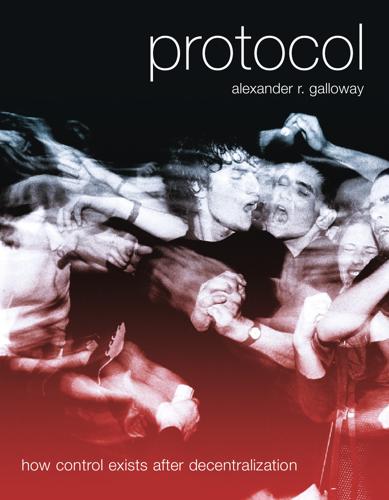
Protocol: how control exists after decentralization
by
Alexander R. Galloway
Published 1 Apr 2004
The ongoing research and clinical trials in gene therapy, regenerative medicine, and genetic diagnostics reiterate the notion of the biomedical subject as being in some way amenable to a database. In addition to this bio-informatic encapsulation of individual and collective bodies, the transactions and economies between bodies are also being affected. Research into stem cells has ushered in a new era of molecular bodies that not only are self-generating like a reservoir (a new type of tissue banking), but that also create a tissue economy of potential biologies (lab-grown tissues and organs). Such biotechnologies often seem more science fiction than science, and indeed health care systems are far from fully integrating such emerging research into routine medical practice.
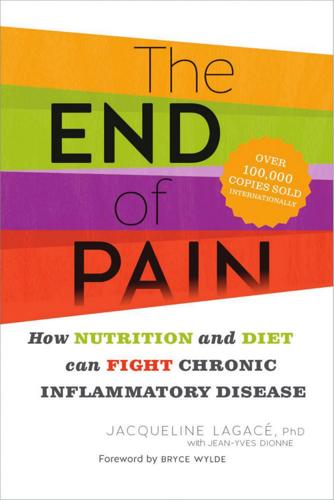
The End of Pain: How Nutrition and Diet Can Fight Chronic Inflammatory Disease
by
Jacqueline Lagace
Published 7 Mar 2014
Another lineage of cells related to lymphocytes consists of nk (natural killer) cells, but these cells do not possess any antigenic specificity. b and t lymphocytes are mostly concentrated in lymphoid tissues like lymphatic ganglions. Leukocytes responsible for the innate or nonspecific immune response can also be found there. These leukocytes come from a myeloid stem cell of bone marrow and consist of monocytes/macrophages, mast cells, dendritic cells and the polymorphonuclear group of leukocytes that include neutrophils, eosinophils and basophils (appendixes 4 and 5). The need for immune tolerance The mucosal membrane of the small intestine constitutes a protective — but imperfect — barrier against foreign antigens.

Our Final Invention: Artificial Intelligence and the End of the Human Era
by
James Barrat
Published 30 Sep 2013
And so will, um, mortality. According to Kurzweil, the means are almost in reach for extending life indefinitely. “We now have the actual means of understanding the software of life and reprogramming it; we can turn genes off without any interference, we can add new genes, whole new organs with stem cell therapy,” Kurzweil said. “The point is that medicine is now an information technology—it’s going to double in power every year. These technologies will be a million times more powerful for the same cost in twenty years.” Kurzweil believes that the shortest route to AGI is to reverse engineer the brain—intricately scanning it to yield a collection of brain-based circuits.
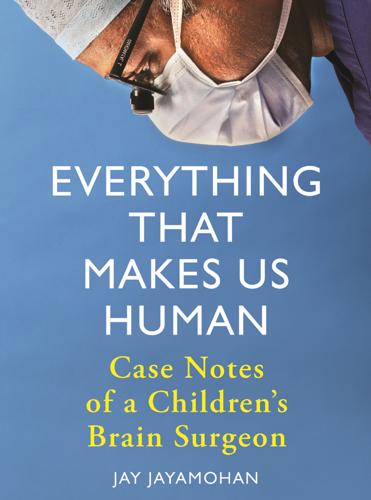
Everything That Makes Us Human: Case Notes of a Children's Brain Surgeon
by
Jay Jayamohan
Published 20 Feb 2020
I’ve seen enough of families to know nothing is guaranteed with siblings. Bloodlines alone don’t always impel people to take care of their own family. Until it happens, you’ll never know. It doesn’t exist in neurosurgery, but I’ve certainly read about parents of children with metabolic conditions, who need stem cells or organ transplants for example, who will genuinely have another child for the sole purpose of creating a potential donor. It doesn’t happen often, but enough to register in the news. It’s a very interesting ethical position to be in. I guess some people may think it’s terrible, but unless you’re in that position, you have no idea how you’d react.
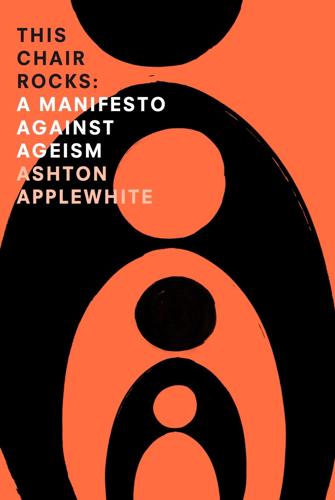
This Chair Rocks: A Manifiesto Against Ageism
by
Ashton Applewhite
Published 10 Feb 2016
With their careful treads and slowed responses, older people remind us that the reprieve is temporary. Small wonder that the delusion that we can hang onto youth, and even maybe somehow dodge death itself, has such appeal. Every week seems to herald an “anti-aging” breakthrough on the horizon: the possibility of using stem cells to rejuvenate tissue, or mobilizing nanobots to patrol the body and repair cell damage, or lengthening telomeres, to name a few. (Telomeres are stretches of DNA at the end of chromosomes that shorten naturally with age each time a cell divides.) Leading the pack are the proponents of radical life extension who think that advances in biotechnology will soon be able to slow down or turn back the biological clock, and that my generation can anticipate living far longer than our parents.
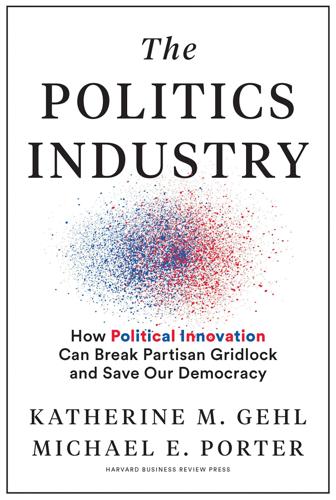
The Politics Industry: How Political Innovation Can Break Partisan Gridlock and Save Our Democracy
by
Katherine M. Gehl
and
Michael E. Porter
Published 14 Sep 2020
Castle’s consensus-oriented approach to politics, the so-called Delaware way, made him enormously popular in his home state and the overwhelming favorite in the 2010 election. Yet not everyone was thrilled that Castle was, at times, out of step with Republican orthodoxy. To some on the right, Castle’s centrism represented a betrayal of the conservative agenda. His support for same-sex marriage, stem cell research, and gun control earned him the RINO (Republican in name only) label. In the Republican Senate primary that fall, partisan forces rallied behind Castle’s opponent, Christine O’Donnell, a Tea Party Republican candidate who had twice in the prior five years run for the Senate and lost. With endorsements from national Tea Party stars and financing from conservative advocacy groups, O’Donnell pulled off a dramatic upset, defeating Castle with just 30,561 votes versus Castle’s 27,021, in the low-turnout primary.16 It was a stunning setback, but still just the primary.
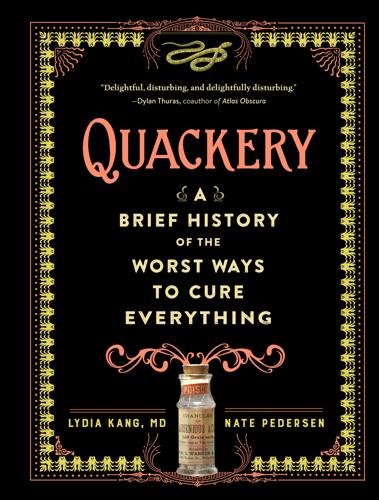
Quackery: A Brief History of the Worst Ways to Cure Everything
by
Lydia Kang
and
Nate Pedersen
Published 16 Oct 2017
Ingestion of corpses, cooking brains, and sucking blood are all unthinkable today. And yet it’s commonplace and quite acceptable to use other people’s body parts for medicinal reasons. Organ donation and organ transplantation are miracles come true. Blood transfusions occur daily. And we are getting smaller and smaller in our focus when using other people’s bodies—stem cells, bone marrow, and donation of eggs and sperm, for example. We borrow other people’s wombs for surrogacy. And yet, plenty of people squirm at the idea of breastmilk banks. We are a society of contradictions. Occasional horrifying articles pop up about “fetal pills” smuggled in from China, aiming to boost stamina and cure any manner of ills.

Lab Rats: How Silicon Valley Made Work Miserable for the Rest of Us
by
Dan Lyons
Published 22 Oct 2018
When a scientist named Lenny Teytelman pointed out to Rabois that scientists have gathered data showing that nonstop work is destructive and counterproductive, Rabois fired back with insults, saying what would Teytelman know about how to build a great company? “When u succeed at something u get to offer an opinion,” Rabois tweeted. For the record, Teytelman studied math at Columbia, got a PhD in genetics and computational biology from UC-Berkeley, and then spent four years working in a renowned stem cell lab at MIT. He then founded a start-up that provides an online repository for working scientists. Yet here was Rabois, billionaire douchebag, telling a start-up founder with a doctorate in science that he lacked standing—in a debate about science and how to build companies. Running Faster, Getting Nowhere During a keynote speech at a Lean Startup conference, Fried asked his audience of six hundred techies how many ever got four straight hours of uninterrupted work time in a given day.
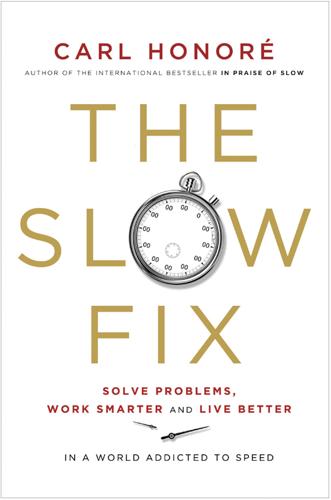
The Slow Fix: Solve Problems, Work Smarter, and Live Better in a World Addicted to Speed
by
Carl Honore
Published 29 Jan 2013
In 1989 it set up a National Transplant Organization (ONT) with the power and budget to fine-tune every step of the donation process: from detecting potential donors to winning consent from families to finding recipients and carrying out transplants. One result is that Spain is now a trailblazer in experimental surgery. In 1997 surgeons at Reina Sofía carried out the first triple transplant on a single patient in Europe. Spanish doctors were also the first to implant a windpipe made from a patient’s own stem cells. In 2011 surgeons in Barcelona carried out the first full face transplant, complete with new jaw, palate and teeth, on a young man wounded in a hunting accident. But what really raises eyebrows abroad is Spain’s success in persuading families to donate the organs of their deceased loved ones. This turnaround is partly the fruit of a vigorous public awareness campaign to rebrand donation as a supreme act of generosity, kindness and solidarity.

New Dark Age: Technology and the End of the Future
by
James Bridle
Published 18 Jun 2018
In the late ’90s, a South Korean biotechnologist named Hwang Woo-suk was proclaimed ‘the pride of Korea’ for his success in cloning cows and pigs, becoming among the first researchers in the world to do so. While he never supplied scientifically verifiable data, he was keen on photo ops, particularly with politicians, and provided a useful fillip to South Korean national self-esteem. In 2004, following celebrated claims that he had successfully cloned human embryonic stem cells – widely believed to be impossible – he was accused of coercing his own researchers into donating eggs. But this didn’t stop Time magazine from naming him one of the year’s ‘People Who Mattered’ and stating that he had ‘already proved that human cloning is no longer science fiction, but a fact of life’.12 Ongoing ethics investigations were publicly opposed by politicians, patriotic newspapers, and even by public rallies, while over a thousand women pledged to donate their own eggs to the research.
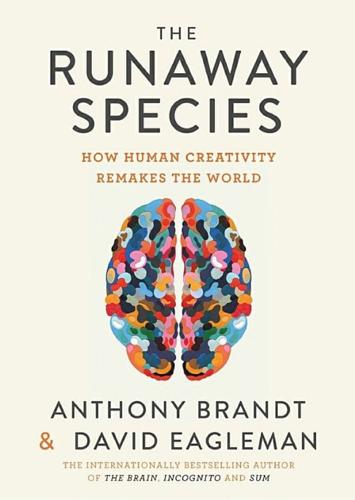
The Runaway Species: How Human Creativity Remakes the World
by
David Eagleman
and
Anthony Brandt
Published 30 Sep 2017
Although they were bigger and stronger than us, our own ancestors vanquished them: the last Neanderthals were wiped out about 35,000–50,000 years ago. Harvard biologist George Church has proposed reverse engineering a Neanderthal by beginning with a modern human genome and working backwards. Just as Pinter reversed chronology on the stage, biologists would rewind human evolution to create a Neanderthal stem cell, which could then be implanted in the womb of a compatible female host. Church’s idea is still speculative – but it is another example of the brain manipulating the flow of time to create new outcomes. Some creative bends are intense; others are more minor. In the 1960s, artist Roy Lichtenstein paid homage to Monet’s cathedral paintings.
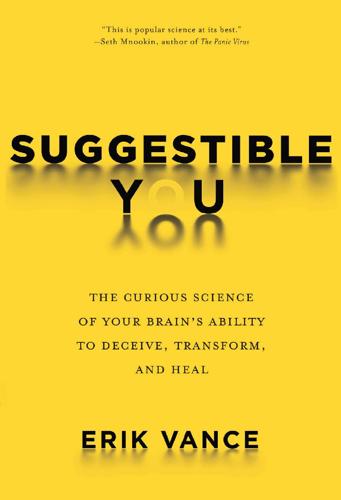
Suggestible You: The Curious Science of Your Brain's Ability to Deceive, Transform, and Heal
by
Erik Vance
Published 14 Sep 2016
The problem was that so far it hadn’t worked. Ceregene had tried the technique once before, in 2006, with a limited human trial that was ultimately unsuccessful. Gene therapy—the notion that you can tinker directly with the genes of ailing human cells—has held tremendous promise for many years. But like stem cell therapy, cold fusion, and reboots of The Muppet Show, it’s beginning to look like a breakthrough that’s never going to happen. After careful examination, Ceregene decided that three flaws in the study had caused its previous failure. First, it had been too short. One year wasn’t enough time to see the improvement the company was sure was in store for the patients.

The Authoritarians
by
Robert Altemeyer
Published 2 Jan 2007
So authoritarian followers, when growing up, probably lived in a scarier world than most kids do, with a lot more boogeymen hiding in dark places, and they’re still scared as adults. For them, gay marriage is not just unthinkable on religious grounds, and unnerving because it means making the “abnormal” acceptable. It’s yet one more sign that perversion is corrupting society from the inside-out, leading to total chaos. Many things, from stem cell research to right-to-die legislation, say to them, “This is the last straw; soon we’ll be plunged into the abyss.” So probably did, in earlier times, women’s suffrage, the civil rights movement, sex education and Sunday shopping. 56 Thus it turns out in experiments that a person’s fear of a dangerous world predicts various kinds of authoritarian aggression better than any other unpleasant feeling I have looked at.
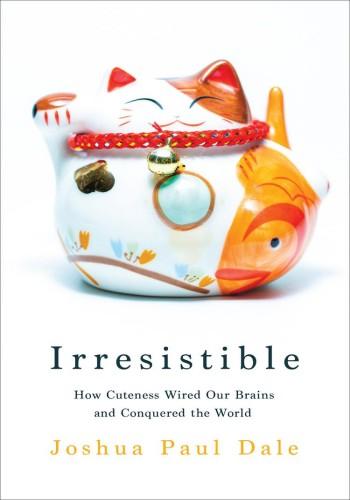
Irresistible: How Cuteness Wired our Brains and Conquered the World
by
Joshua Paul Dale
Published 15 Dec 2023
They can control not only different features of the body but also the timing at which development occurs. It all depends on which part of the body they regulate.35 A few weeks after conception, the embryos of all vertebrates develop special cells that appear where the spine will grow. A type of stem cell, these neural-crest cells migrate to various parts of the body to assist in the development of different traits. A slight reduction in their number, a delay in their migration or a reduced ability to proliferate produces different results in the many features they regulate,36 a striking number of which are associated with the domestication syndrome.
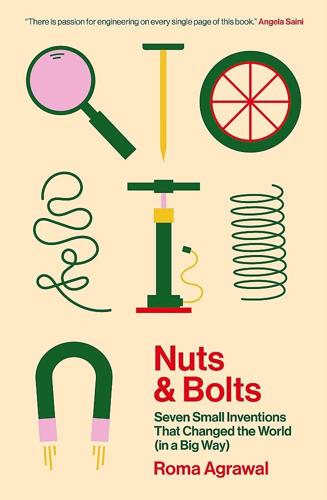
Nuts and Bolts: Seven Small Inventions That Changed the World (In a Big Way)
by
Roma Agrawal
Published 2 Mar 2023
The wheel, then, inspires and controls technologies from the minute to the immense. It is both bewildering and breathtaking that, 408km above our planet, there is a laboratory in which astronauts are exploring whether microbes like bacteria and fungi can mine minerals in space, investigating how humans perceive time during long space flights, developing 3D bits of organs from stem cells to create artificial organs, testing new materials and growing food – not only with a view of improving technology here on Earth, but also to imagine the possibility of humans living on extraterrestrial bodies. And all that happens because humans are able to sit at a desk on Earth, and speak to satellites that are halfway to the Moon, in order to control four wheels that keep that laboratory stable.
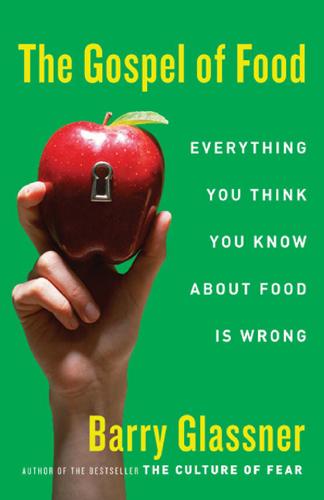
The Gospel of Food: Everything You Think You Know About Food Is Wrong
by
Barry Glassner
Published 15 Feb 2007
See also “General Mills Touts Sugary Cereal as Healthy Kids Breakfast,” Wall Street Journal, June 22, 2005. 14. Almond ad appeared in Stagnito’s New Products Magazine, (May 2004). 15. Testimony at the Food Guidance System meeting (see n. 11, p. 294). 16. Keith Seiz, “Promoting Grain Based Foods,” Baking Management (August 2004). 17. Lisa M. Krieger and Paul Jacobs, “Stem Cell Panelists Show Holdings,” San Jose Mercury News, January 19, 2005; Benjamin Rosenthal, Michael Jacobson, and Marcy Bohm, “Professors on the Take,” Progressive (November 1976): 42–47. 18. Paul Griffo, “The Great VNR Debate,” Public Relations Tactics (June 2004); “Shaping the News: The Public Relations Industry and Journalism,” available at www.nationalradioproject.org; and reports at www.prwatch.org.
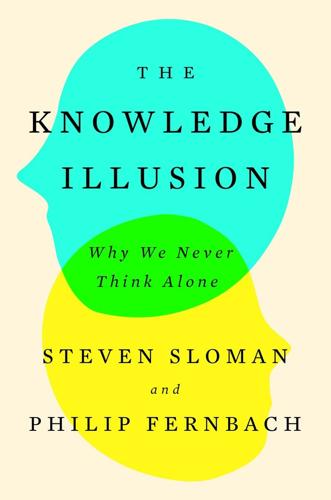
The Knowledge Illusion
by
Steven Sloman
Published 10 Feb 2017
In addition to asking these knowledge questions, surveys often ask about people’s attitudes and typically find that those who get more answers correct tend to be a little more favorably disposed toward science and technology. In one study we ran in 2013, we administered the science literacy quiz and then asked people for their feelings about a host of technologies, including genetically modified foods, stem cell therapy, vaccination, nanotechnology, nuclear power, and food irradiation. People who got more answers correct were a little more likely to report that the technologies were acceptable, that they had fewer risks, and that they had greater benefits for society. So there does seem to be some relationship between knowledge and attitudes, though the relationship is fairly weak.
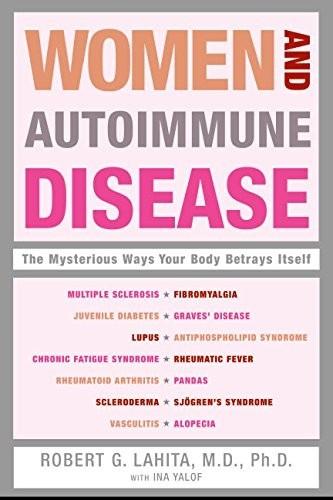
Women and Autoimmune Disease
by
Robert G. Lahita
Published 1 Jan 2004
Bone Marrow Transplant The use of bone marrow transplants for the treatment of autoimmune diseases is fairly new and considered somewhat risky. Bone marrow transplantation is not as complicated a procedure as it used to be, however, and it is gaining acceptance around the world. The procedure is as follows: With the patient under anesthesia, small portions of bone marrow, the breeding ground of stem cells, are removed from several sites in the patient’s own body (this is called an autologous transplant) or from a genetically identical person (this is an allogenic 231 Wo m e n a n d A u t o i m m u n e D i s e a s e transplant). Bone marrow may also be taken from someone who does not have the identical genetic makeup, but then the recipient’s immune system has to be turned off in order to keep the donor’s bone marrow from being rejected.
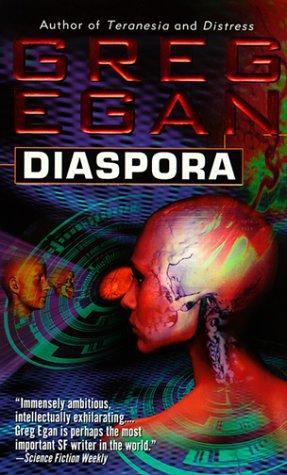
Diaspora
by
Greg Egan
Published 1 Jan 1997
The seeds themselves were all still identical, but each one could now unleash a different set of shapers on the space around it, preparing the foundations for a different specialized region of the psychoblast, the embryonic mind. The technique was an ancient one: a budding flower's nondescript stem cells followed a self-laid pattern of chemical cues to differentiate into sepals or petals, stamens or carpels; an insect pupa doused itself with a protein gradient which triggered, at different doses, the different cascades of gene activity needed to sculpt abdomen, thorax, or head. Konishi's digital version skimmed off the essence of the process: divide up space by marking it distinctively, then let the local markings inflect the unwinding of all further instructions, switching specialized subprograms on and off-subprograms which in turn would repeat the whole cycle on ever finer scales, gradually transforming the first roughhewn structures into miracles of filigreed precision.

No Ordinary Disruption: The Four Global Forces Breaking All the Trends
by
Richard Dobbs
and
James Manyika
Published 12 May 2015
The world’s first 3-D printed car, the Strati (made by start-up Local Motors), was assembled and driven in Chicago in September 2014. Artificial human organs have already been 3-D printed, using a sugar-based hydrogel to create a scaffolding of a kidney or other body part and an inkjet-like printer to spray onto it stem cells from the patient’s own tissue. Over the coming decade, such uses could expand further. The manufacturing process will “democratize” as consumers and entrepreneurs start to print their own products. 4.IT and how we use it. We may think of the mobile Internet as a familiar technology, but with over one billion people already using smart phones or tablets, it is dramatically changing the way we perceive and interact with the world around us.
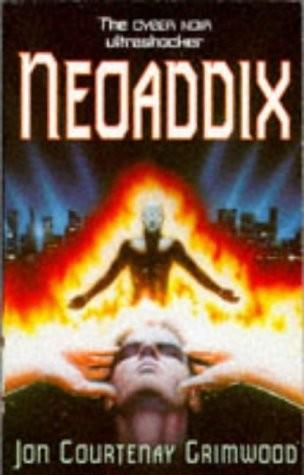
NeoAddix
by
Jon Courtenay Grimwood
Published 16 Jan 1997
But it wasn’t long before most people understood that the very nature of blood production meant transfused blood lacked almost all of its red-cell DNA anyway, and what there was fragmented once it was in the new body. No DNA change would, or could ever happen without a significant transfer of bone marrow, which was where the essential stem cells originated. Transplanted organs were different, however. The biochems needed to force the body not to reject the new organs also allowed the DNA blood profile to change. And when major bones were transplanted, with their ability to create new blood cells in the medulary cavity, then the picture was complicated still further.
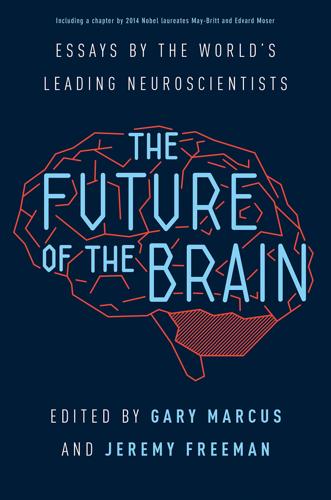
The Future of the Brain: Essays by the World's Leading Neuroscientists
by
Gary Marcus
and
Jeremy Freeman
Published 1 Nov 2014
Combined with neuroimaging and other analyses of genetically defined subgroups of patients, these investigations may reveal the nature of the emergent pathophysiological states and suggest possible therapeutic strategies, which can be tested in animal models and, eventually, in clinical trials in defined cohorts. Stem cell panel courtesy of Jamie Simon and Fred H. Gage, Ph.D., Salk Institute for Biological Studies. Human brain network panel courtesy of NITRC; BrainNet Viewer. Cell types panel reproduced from Mitchell et al. BMC Biology 2011, 9:76. But that program is vulnerable. It involves the products of many thousands of genes—proteins that specify where cells will migrate, where their nerve fibers project, which cells they will connect with, and how those connections will change with use.

How to Fail: Everything I’ve Ever Learned From Things Going Wrong
by
Elizabeth Day
Published 3 Apr 2019
I was receiving dozens of messages every day from extraordinary people going through difficult things, saying how much the podcast had helped them. The woman who had been told at fifteen she would never be able to have children. The advertising executive signed off work with chronic fatigue. The person I had once interviewed for a newspaper who got in touch to tell me that his mother was in intensive care after a stem cell transplant and nine days of chemotherapy and that she could barely breathe or talk, but she listened to my podcast because it calmed her down. ‘It makes things so much better,’ he wrote and I read his message while making toast and burst into tears. The toast burned. The university professor who said it brought home to him the realities of female infertility and that he was now able to understand his wife and daughters more fully.
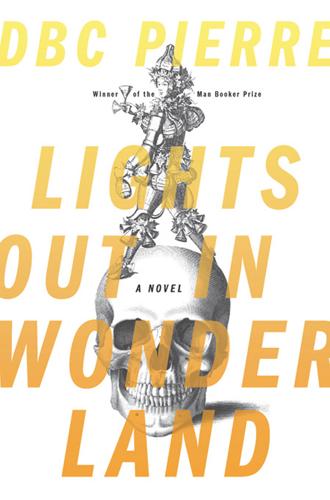
Lights Out in Wonderland
by
Dbc Pierre
Published 1 Sep 2010
That’s the logic of our death.” “Hey—I’m not arguing.” “Good. There’s no argument there. I thought maybe you joined the campaign to save cute things, and things that beep underwater. For this guest list we have to be symbolic, don’t think we’re going to break our balls like last time, growing hybrid crops, making stem-cell cappuccinos. Especially not from a catering van and with a walk through open air before service. This time it’s bold and simple, with unique, full-flavored ingredients, exquisitely treated, and served under cloche. And actually, the more I think about the open air between kitchen and table, the more I suggest we set up a theatrical cover.
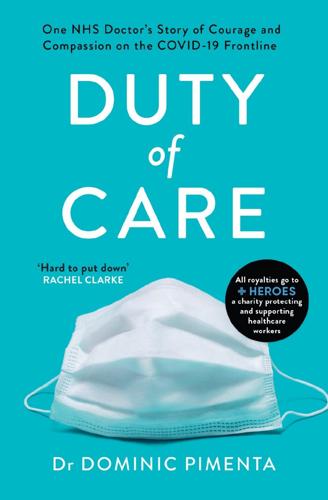
Duty of Care: One NHS Doctor's Story of the Covid-19 Crisis
by
Dr Dominic Pimenta
Published 2 Sep 2020
Pensively I sit there, making plans, scrapping them, and starting again. 1. https://www.dailymail.co.uk/news/article-6499273/Cat-rescued-spending-hour-stuck-engine-bay.html 2. “The take” is the term we use for the patients freshly admitted to hospital from the A&E department 3. Term referring to whole-organ transplants (liver, lung, kidneys, heart, rarely gut) as opposed to an infusion of cells, e.g. stem cell transplant CHAPTER 5 Escalation After the weekend, I’ve got a rare half-day off; I’ve just got a clinic to cover in the morning. A friend of a friend just posted on one of our WhatsApp groups that he flew in from Lombardy last night, without so much as a check or even a question from the officials at Heathrow, and got straight onto the tube.
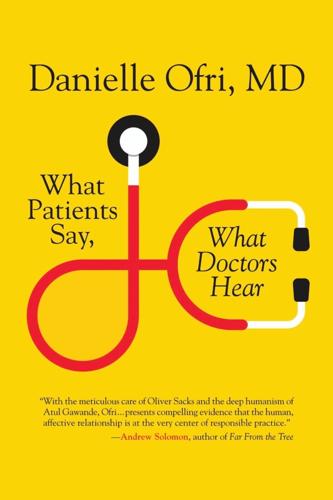
What Patients Say, What Doctors Hear
by
Danielle Ofri
Published 1 Feb 2017
Chemotherapy agents such as rituximab and cyclophosphamide were one thing, but a bone marrow transplant was in a different stratosphere. Used typically with lymphomas, leukemias, and other cancers, the procedure involves obliterating a patient’s own bone marrow with high-dose chemotherapy and radiation, destroying all native red cells, white cells, and platelets. Then, stem cells from a donor are transplanted. Destroying the bone marrow, by definition, decimates the body’s immune system, leaving a person vulnerable to deadly infections, not to mention blood clots, intestinal breakdown, and liver failure. Yes, the “rebooting” of the immune system offered the theoretical possibility of curing Morgan Amanda’s autoimmune illness, not to mention her life-threatening allergic reactions, but the risks were immense.
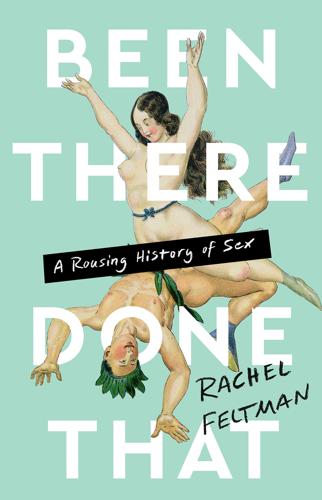
Been There, Done That: A Rousing History of Sex
by
Rachel Feltman
Published 14 May 2022
Even complex humans were thought to stem from epigenesis, a process whereby male and female fluids just kind of gummed together until something started to solidify. This notion required the intervention of some higher power to turn sex goop into human flesh, because, you know, nobody was talking about stem cells in the 1600s. So even though it was technically sort of right, it was also all sorts of horribly wrong. Enter preformationism, based very logically on the observation of metamorphosing insects and growing chicken eggs. If tiny, fully formed chicks eventually grew and hatched from eggs, why couldn’t humans do the same?

Private Equity: A Memoir
by
Carrie Sun
Published 13 Feb 2024
(When I was not texting to confirm whether the cristal is chilling in ice bucket stand—for work—I was on the phone again and again, pausing my run, with more of Carbon’s vendors, business partners, and staff.) On wrought-iron chairs overlooking the cerulean sea sat a plastic surgeon, a biotech investor, an HBS professor, a private equity investor, and a stem-cell-transplant pediatrician with an MD/PhD, among others. Stanford, Harvard, Penn, Duke. I hated these situations that felt like an elitist season of Bachelor in Paradise. I went last, hoping not to go at all, introducing myself as “in finance, also an aspiring writer.” I did not mention MIT, Carbon, Fidelity, or that I had dropped out of Penn.
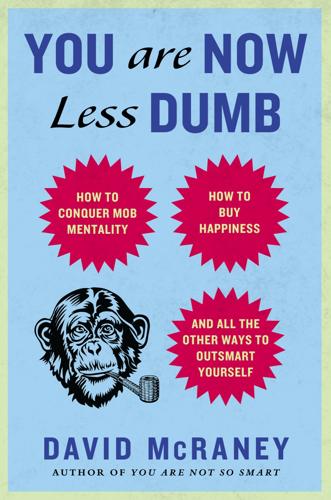
You Are Now Less Dumb: How to Conquer Mob Mentality, How to Buy Happiness, and All the Other Ways to Outsmart Yourself
by
David McRaney
Published 29 Jul 2013
What should give you pause, though, is how conservatives felt about the correction. After reading that there were no WMDs, they reported being even more certain than before that there actually were WMDs and that their original beliefs were correct. The researchers repeated the experiment with other wedge issues, such as stem cell research and tax reform, and once again they found that corrections tended to increase the strength of the participants’ misconceptions if those corrections contradicted their ideologies. People on opposing sides of the political spectrum read the same articles and then the same corrections, and when new evidence was interpreted as threatening to their beliefs, they doubled down.

The Meritocracy Trap: How America's Foundational Myth Feeds Inequality, Dismantles the Middle Class, and Devours the Elite
by
Daniel Markovits
Published 14 Sep 2019
Gilens tested and found significant difference in opinion between the two groups on the following policy positions: “Approve the abortion pill RU-486; Federal funding for abortions (for low-income women); Require biological father’s notification/approval for abortion; Legalize gay marriage; Teach creationism in publish schools; and Fund stem cell research from newly created embryos.” hold “consistently liberal” views: “A Wider Ideological Gap Between More and Less Educated Adults,” Pew Research Center, April 26, 2016, www.people-press.org/2016/04/26/a-wider-ideological-gap-between-more-and-less-educated-adults; Neil Gross, “Why Are the Highly Educated So Liberal?
…
Another careful study, this time of Americans in the top tenth of the income distribution, confirms that they are “more liberal [than less rich Americans] on issues like abortion, gay rights, and foreign aid.” Gilens, Affluence and Influence, 5. More specifically, when compared to median Americans, rich Americans were substantially more likely to favor approving emergency contraception and to oppose banning abortions, substantially more likely to favor stem cell research, substantially more likely to favor same-sex marriage and permitting openly gay Americans to serve in the military, and substantially less likely to favor a constitutional amendment permitting school prayer or (in the 1980s) mandatory AIDS testing of all citizens. Yet another study exploited transitory idiosyncrasies in certain administrations of the General Social Survey to identify a similarly distinctive social liberality among Americans in the top 4 percent of the income distribution.
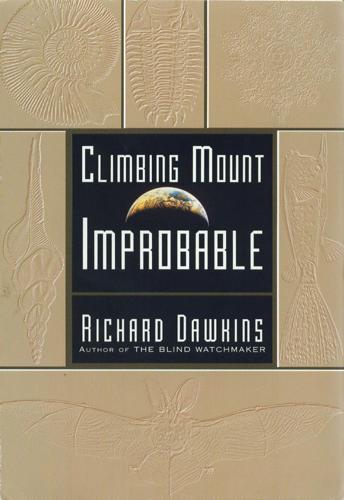
Climbing Mount Improbable
by
Richard Dawkins
and
Lalla Ward
Published 1 Jan 1996
Other cell lineages go on doubling for longer. So a blue whale in fact consists of a number of cell lineages of different length, building different parts of the whale. Some of these lineages go on dividing for more than fifty-seven cell generations. Others stop dividing after fewer than fifty-seven cell generations. In practice there are ‘stem-cells’, subsets of cells that are set aside for the purpose of running off copies of cells like themselves. You can roughly calculate the minimum number of cell generations it would take, under ideal doubling conditions, to grow any animal, given its weight. You can assume that big animals don’t have especially big cells, they just have more of the same kinds of cells as small animals.
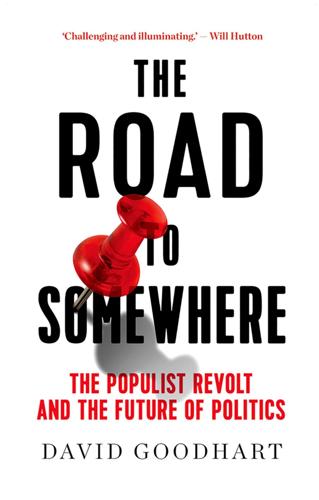
The Road to Somewhere: The Populist Revolt and the Future of Politics
by
David Goodhart
Published 7 Jan 2017
Low and middle income Americans have been united since the 1970s in opposing free trade agreements such as NAFTA but the affluent favoured freer trade and got their way. On moral and religious issues the affluent tend to be more liberal than poorer Americans and still generally get their way. Lower income people want the consent of the biological father to an abortion, tighter limits on stem cell research and more support for school prayer. According to Gilens if a policy is favoured by 80 per cent of the affluent it has a 50 per cent chance of being adopted. In contrast, except close to election time or when partisan competition is particularly acute, support or opposition from poor and middling Americans makes no difference at all.

Forty Signs of Rain
by
Kim Stanley Robinson
Published 29 May 2004
Easier to destroy the world than to change capitalism even one little bit. All this had become quite blatant since Strengloft’s appointment. He had taken over the candidate lists for most of the federal government’s science-advisory panels, and very quickly candidates were being routinely asked who they had voted for in the last election, and what they thought of stem-cell research and abortion and evolution. This had recently culminated in a lead industry defense witness being appointed to the panel for setting safety standards for lead in children’s blood, and immediately declaring that seventy micrograms per deciliter would be harmless to children, though the EPA’s maximum was ten.

Doctored: The Disillusionment of an American Physician
by
Sandeep Jauhar
Published 18 Aug 2014
The conference, a colossal affair with roughly five thousand cardiologists in attendance from all over the world, took place at the Georgia World Congress Center near Centennial Olympic Park. There were dozens of talks—mostly standing room only—going on concurrently throughout the ninety-acre complex. PowerPoint slides flashed arcane analyses on subjects ranging from mitral valve repair to the genetics of heart failure to stem cell therapy after myocardial infarctions. I attended one talk on the use of left atrial size as a predictor of heart failure. How to interpret the findings? How do you critically evaluate a study whose methodology (Kolmogorov-Smirnov goodness-of-fit tests, proportional hazard models, propensity scores) you don’t understand?
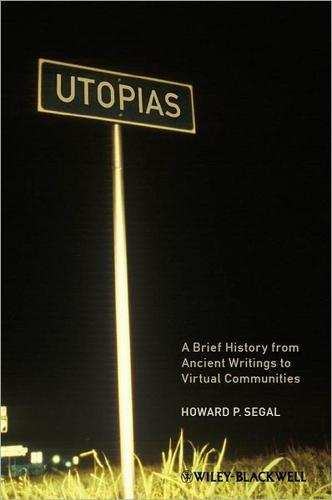
Utopias: A Brief History From Ancient Writings to Virtual Communities
by
Howard P. Segal
Published 20 May 2012
There were never any plans to clone Dolly herself.53 The contemporary cloning of animals has obviously suggested the prospect of cloning humans in the not-too-distant future and has led to endless debates about the nature and morality of technological “progress” that rival, if not surpass, those debates of past decades regarding the use of nuclear weapons. (For that Growing Expectations of Realizing Utopia 125 matter, witness the enormous controversies in recent years merely about the possible use of stem cells to develop cures for some major diseases.) For years now mice have been created to be research tools. But mice are quite different genetically from humans and so do not provide adequate models for investigating diseases, for instance. Recently, however, biotechnology has created the first generation of genetically modified monkeys that are much closer to humans and that are capable of passing on genetic attributes to their offspring.
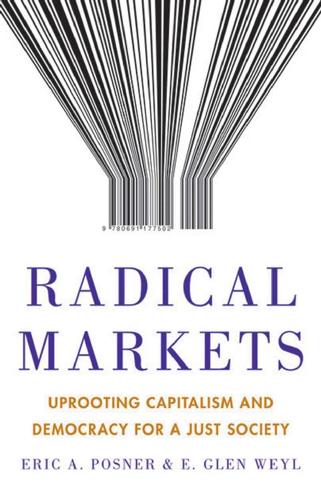
Radical Markets: Uprooting Capitalism and Democracy for a Just Society
by
Eric Posner
and
E. Weyl
Published 14 May 2018
They are doubtful about the value of recent technological advances beyond the spheres of entertainment and communications and they are skeptical that Artificial Intelligence (AI) will replace human workers on a large scale. They contrast the sweeping social changes created by electrification to the incremental entertainment supplied by smartphones; the enormous advances in human longevity produced by sanitation and antibiotics to the still-unrealized promise of stem cell research; and the fundamental change in production technology created by the assembly line to the limited impact thus far of 3D printing. Thus, while they are pessimistic about growth, they are much less concerned than techno-optimists about job displacement and changes in the labor market. Much of this debate concerns technical feasibility and creative breakthroughs by scientists and engineers about which we have little to say.

The Nocturnal Brain: Nightmares, Neuroscience, and the Secret World of Sleep
by
Dr. Guy Leschziner
Published 22 Jul 2019
Researchers have tried to suppress the immune system in an effort to prevent its attack on the hypocretin-producing neurones of the hypothalamus, but it seems that by the time the symptoms of narcolepsy appear, the damage has already been done. The opportunity to intervene has passed. Other strategies may hold more promise. Perhaps stem cell transplants, to regenerate the hypocretin-producing cells in the hypothalamus. Or gene replacement therapy, using viruses to insert active hypocretin precursor genes into remaining cells to encourage them to produce more hypocretin. These technologies are in their infancy, but consider how far we have come: from a mysterious disease to a fundamental understanding of the causes and origin of narcolepsy over only a few decades.
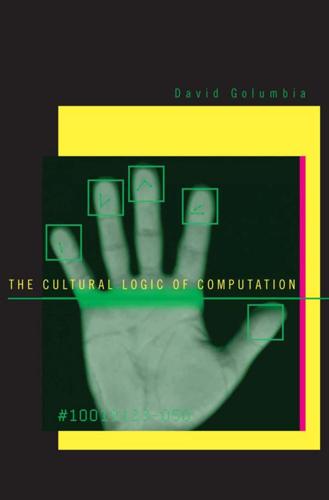
The Cultural Logic of Computation
by
David Golumbia
Published 31 Mar 2009
This is exactly the kind of expert containment that I am urging we resist, even if technocrats in particular dismiss such concerns as extraneous: they are wrong, because they have been socially conditioned to see their expertise as the only relevant perspective on the phenomena they study. When we turn to developments as important as the human genome and its concomitant technologies, stem cell therapy, and other biological research in particular, we have learned to understand that these technologies actually ignore non- Epilogue p 223 technical input to their great detriment. If they truly hold important promise for society, their potentials and consequences must be widely understood, debated, and even managed by the polis in general: including technologists, but not to the exclusion of laypeople.

Calling Bullshit: The Art of Scepticism in a Data-Driven World
by
Jevin D. West
and
Carl T. Bergstrom
Published 3 Aug 2020
But as the socially skilled perpetrator of such a massive-scale fraud, how can we not view Stapel as something like the ultimate unreliable narrator? The highest echelons of Japanese biomedical research were deeply shaken when other researchers failed to replicate work by young research superstar Haruko Obokata. An investigation revealed that Obokata had inappropriately manipulated images in her scientific papers, raising false hopes for stem cell researchers everywhere. In a tragic turn, Obokata’s supervisor, Yoshiki Sasai, subsequently committed suicide amid the fallout from the scandal. UCLA political scientist Michael LaCour misled the scientific community, including his co-author, with fabricated data suggesting that direct interaction with gay canvassers can have a drastic effect on attitudes toward gay marriage.
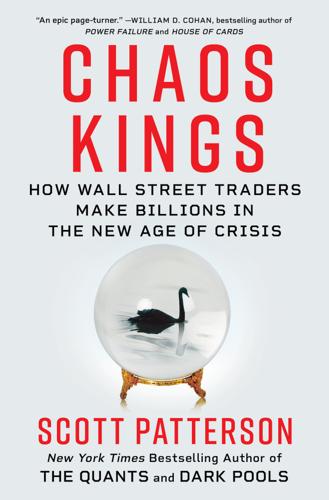
Chaos Kings: How Wall Street Traders Make Billions in the New Age of Crisis
by
Scott Patterson
Published 5 Jun 2023
Brockman had earlier sent Taleb a list of topics included in the so-called Master Class, a dizzying witches’ brew of techno-wizardry: what is life, origins of life, in-vitro synthetic life, mirror life, metabolic engineering for hydrocarbons and pharmaceuticals, computational tools, electronic-biological interfaces, nanotech-molecular manufacturing, biosensors, accelerated lab evolution, engineered personal stem cells, multivirus-resistant cells, humanized mice, bringing back extinct species. At the SpaceX facility, Church gave a talk called “Dreams and Nightmares.” Attendees included venture capitalist Sean Parker, an original Facebook backer; Google’s Larry Page; behavioral economist Richard Thaler; Stewart Brand, creator of the Whole Earth Catalog; someone from the White House; and a bunch of egghead scientists.
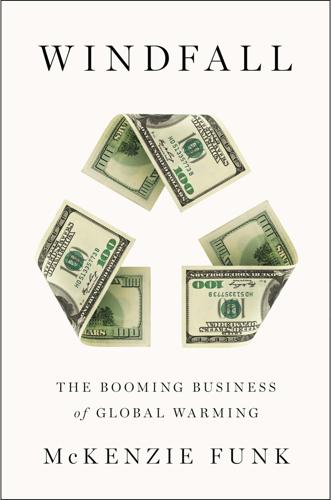
Windfall: The Booming Business of Global Warming
by
Mckenzie Funk
Published 22 Jan 2014
Months later, the first conferences on using “de-extinction” and “synthetic biology” to preserve the natural world were convened by the National Geographic Society and Wildlife Conservation Society. The Sahel need not become the Sahara if we can create a GM bacteria that induces plants’ roots to grow. The polar bear need not ever go extinct. We can already manipulate stem cells. We can already reconstruct lost genomes. We can already clone. If a species disappears because Arctic sea ice disappears, we already have the power to bring it back to life. Compared with what the future could hold, Alphey’s mosquitoes were straightforward. All the OX513As in the room came from a single forebear Alphey had created a decade ago.
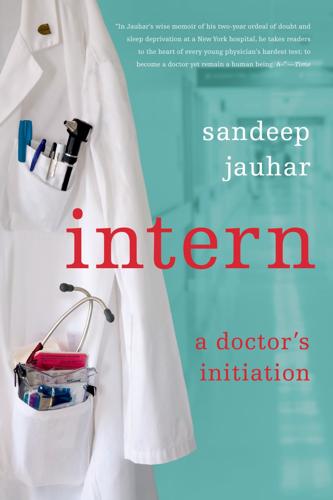
Intern: A Doctor's Initiation
by
Sandeep Jauhar
Published 26 Dec 2007
Even patients whose cancer has metastasized can usually be cured. Standard chemotherapy will successfully treat the vast majority of these patients. Of the remainder, approximately a quarter will be cured with second-line chemotherapy, and approximately a quarter of the remaining few will be cured with newer regimens involving high-dose chemotherapy with stem-cell transplantation. When I got back to the exam room, Jonah was even more on edge. “What do I have?” he demanded. I decided not to burden him with unconfirmed suspicions. “I don’t know,” I said. “Can you come in tomorrow for an ultrasound?” A wave of alarm washed over him. “Do I have cancer?” he whispered.
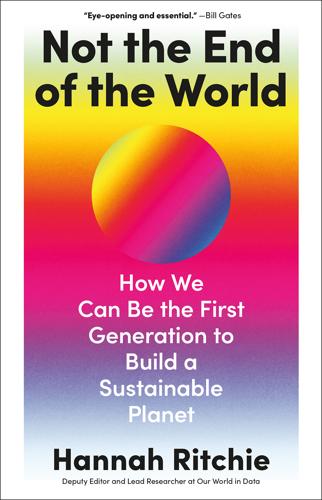
Not the End of the World
by
Hannah Ritchie
Published 9 Jan 2024
But this hasn’t stopped scientists and conservationists from pouring time and money into saving them. Najin and Fatu live in Ol Pejeta Conservancy, a protected wildlife area in Kenya. They’re watched by armed guards all day, every day. Their horns have been sawn off to deter poachers. In labs across the world, scientists are trying to develop reproductive treatments – stem cells, hybrid embryos, embryo implantations – to bring these rhinos back from the brink. It’s an international effort with low odds of success. Why are so many people dedicated to saving this single species? It doesn’t really make sense. It’s expensive to protect only two individuals, money and time that could be used in a range of other ways.
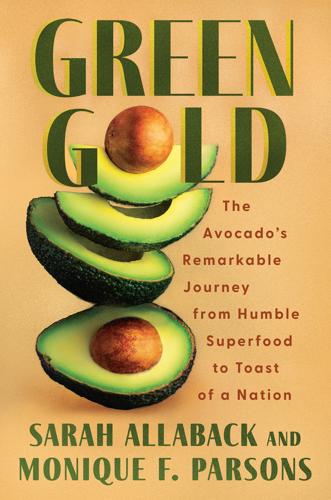
Green Gold
by
Sarah Allaback
Published 14 Mar 2025
“Citrus Fruits’ Great Future.” 16.Rosengarten, Wilson Popenoe, 33. 17.David Fairchild, “Reminiscences of Early Plant Introduction Work in South Florida,” Proceedings of the Florida State Historical Society 51 (1938): 11–13. 18.H. J. Webber, “New Horticultural and Agricultural Terms,” Science 28 (1903): 501–3; Jane Maienschein, Whole View of Life? Embryos, Cloning, and Stem Cells (Cambridge, MA: Harvard University Press, 2003), 120. 19.Wilson Popenoe to Fred Popenoe and Marion Popenoe, February 2, 1915; February 5, 1915; February 12, 1915; February 25, 1915, 16:254; F. O. Popenoe, “Varieties of the Avocado,” CAA, AR 1 (1915–1916), 44–69. 20.Wilson Popenoe to Fred Popenoe, January 4, 1915; January 31, 1915; March 19, 1915, 16:254; Popenoe, “Recollections,” chap. 2, p. 6. 21.Wilson Popenoe to Fred Popenoe, January 22, 1915, 16:254. 4 • Roots 1.F.

Utopia Is Creepy: And Other Provocations
by
Nicholas Carr
Published 5 Sep 2016
Having achieved some prosperity, and gained some disposable income, we began to crave technologies of leisure: consumer goods and services, entertainments, tourism, radios and TVs, stylish cars and clothes. Now, having accumulated enough stuff to fulfill our material needs, our desires are turning to self-actualization and self-expression. What we now want are technologies of the self. Think Xanax and Viagra. Think cosmetic surgery and stem-cell-infused antiaging creams. Think Facebook and Twitter and Pinterest. Think Fitbit. As with Maslow’s hierarchy of needs, the hierarchy of innovation is not a rigid one. Innovation today continues at all five levels. But the rewards, both monetary and reputational, are greatest for inventors and entrepreneurs who focus on technologies of the self, and that’s why so much investment and entrepreneurial activity has moved in that direction.
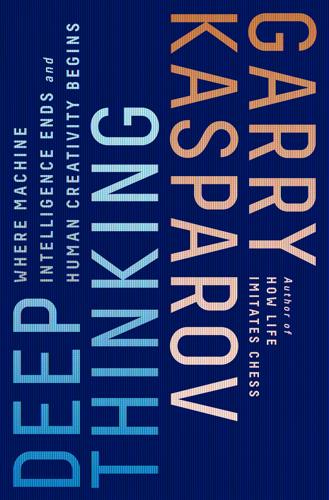
Deep Thinking: Where Machine Intelligence Ends and Human Creativity Begins
by
Garry Kasparov
Published 1 May 2017
Souls aside, it is generally agreed today that the mind is not greater than the sum of a being’s physical parts and experiences. The mind goes beyond reasoning to include perception, feeling, remembering, and, perhaps most distinctively, willing—having and expressing wishes and desires. Brains grown in petri dishes from stem cells are interesting for experiments, but without any input or output they could never be called minds. WHEN YOU LOOK BACK at the history of computers it seems like as soon as a machine is invented, the next step is to turn it into a chess player. For the first decades of computing, chess was always near the forefront.

Rise of the Robots: Technology and the Threat of a Jobless Future
by
Martin Ford
Published 4 May 2015
Organs suitable for transplant likely remain at least a decade in the future, but if the technology arrives, the implications would be staggering for the roughly 120,000 people awaiting organ transplants in the United States alone.4 Aside from addressing the shortage, 3D printing would also allow organs to be fabricated from a patient’s own stem cells, essentially eliminating the danger of rejection after a transplant. Food printing is another popular application. Hod Lipson suggests in his 2013 book Fabricated: The New World of 3D Printing that digital cuisine may turn out to be 3D printing’s “killer app”—in other words, the application that motivates huge numbers of people to go out and buy a home printer.5 Food printers are currently used to produce designer cookies, pastries, and chocolates, but they also have the potential to combine ingredients in unique ways, synthesizing unprecedented tastes and textures.

Age of Anger: A History of the Present
by
Pankaj Mishra
Published 26 Jan 2017
Today, the belief in progress, necessary for life in a Godless universe, can no longer be sustained, except, perhaps, in the Silicon Valley mansions of baby-faced millennials. The world has never seen a greater accumulation of wealth, or a more extensive escape from material deprivation. The fruits of human creativity – from smartphones to stem-cell reconstructions – continue to grow. But such broad and conventional norms of progress cloak how unequally its opportunities are distributed: for instance, nearly half of the world’s income growth between 1988 and 2011 was appropriated by the richest tenth of humanity and, even in rich countries, there is a growing life-expectancy gap between classes.

Genius Makers: The Mavericks Who Brought A. I. To Google, Facebook, and the World
by
Cade Metz
Published 15 Mar 2021
“The Singularity” is the (theoretical) moment when technology improves to the point where it can no longer be controlled by the human race. The founders of this tiny conference belonged to an eclectic group of fringe academics, entrepreneurs, and hangers-on who believed this moment was on the way. They were intent on exploring not only artificial intelligence but life-extension technologies and stem-cell research and other disparate strands of futurism. One of the founders was a self-educated philosopher and self-described artificial intelligence researcher named Eliezer Yudkowsky, who had introduced Legg to the idea of superintelligence in the early 2000s when they were working with a New York–based start-up called Intelligensis.
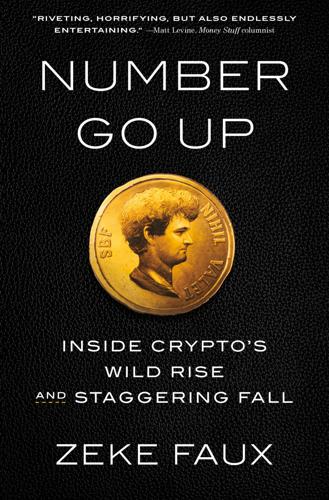
Number Go Up: Inside Crypto's Wild Rise and Staggering Fall
by
Zeke Faux
Published 11 Sep 2023
Wonderful”—polishing his already shiny dome with an electric razor as he prepared to go on TV. (He was paid $15 million to endorse FTX.) And I spotted a man from New York I’d investigated years earlier. He sometimes went by the alias “Jim Stark,” though his real name was Andrew Masanto, and he’d been accused in three lawsuits filed by angry consumers of involvement with a “plant stem cell” miracle hair-loss cure. (He has denied the connection.) After I awkwardly reintroduced myself, he told me he was building a “Web3 social platform” and that he had helped create a popular cryptocurrency. I looked up its market value and saw it was almost $4 billion. “There’s a lot of legitimacy behind the technology,” he said.

Nuclear War: A Scenario
by
Annie Jacobsen
Published 25 Mar 2024
The same thing happened to the open sores in his mouth. With thick pieces of skin now peeling off Slotin’s hands, doctors considered amputation, but administered blood transfusions instead—one after the next, after the next. As the end drew near, Louis Slotin was experiencing necrosis. Death of the limbs. All the bone marrow stem cells throughout his body were now dying or dead. He was experiencing necrosis of the blood vessel walls; jaundice; acute thrombosis in the small and large blood vessels; severe epithelial damage in the intestines. As his body began losing its ability to form antibodies, the cell lining in Slotin’s gastrointestinal tract began giving off products that began moving into neighboring tissues.

Blue Mars
by
Kim Stanley Robinson
Published 23 Oct 2010
Nadia saw by that smile that he had been instrumental in designing the procedure. “It works?” she asked him directly. “It works. We make what is in effect a new finger bud over your stump. It’s a combination of embryonic stem cells with some cells from the base of your other little finger. The combination functions as the equivalent of the homeobox genes you had when you were a fetus. So you’ve got the developmental determiners there to make the new stem cells differentiate properly. Then you ultrasonically inject a weekly dose of fibroblast growth factor, plus a few cells from the knuckle and the nail, at the appropriate times . . . and it works.”

Coastal California Travel Guide
by
Lonely Planet
Meanwhile, California’s biotech industry took off. In 1976 an upstart company called Genentech was founded in the San Francisco Bay Area, and quickly got to work cloning human insulin and introducing the Hepatitis B vaccine. In 2004 California voters approved a $3 billion bond measure for stem-cell research, and by 2008 California had become the USA’s biggest funder of stem-cell research, as well as the focus of Nasdaq Stock Market’s new Biotechnology Index. Then came the unraveling of the US subprime mortgage-lending market, which triggered the stock-market crash of 2008 and mired the nation in a recession with massive unemployment.

In Our Own Image: Savior or Destroyer? The History and Future of Artificial Intelligence
by
George Zarkadakis
Published 7 Mar 2016
We will acquire the power to engineer virtually everything: from new drugs to predicting markets and solving the problems of economic scarcity, to terraforming planets. Artificial Intelligence could make us virtually omnipotent. As citizens of a free society, we have a duty to come to terms with this future, and to understand and debate its moral, legal, political and ethical ramifications today. Heated arguments about stem cells or genetics will pale in comparison to what Artificial Intelligence will allow us to do in a few years’ time. Artificial Intelligence will define and shape the twenty-first century. It will determine the future of humanity in the centuries beyond. Or it may be the cause of our demise, for there is a darker scenario at play.

The Idea of Israel: A History of Power and Knowledge
by
Ilan Pappe
Published 30 Apr 2012
The goal of these efforts was to ‘show Americans that there was another Israel behind the gloomy headlines’ and convey an image of Israel as a ‘productive, vibrant, and cutting-edge culture’, as Gary Rosenblatt of Jewish Week put it. He summarised the blueprint for the next few years this way: Think of Israel as a product undergoing an overhaul to make it more competitive in the marketplace. What’s called for are fewer stories explaining the rationale for the security fence, and more attention to scientists doing stem-cell research on the cutting edge or the young computer experts who gave the world Instant Messaging.26 It was not only American PR and branding wizards who were recruited. The government also asked for deeper involvement from the public. In a show of total mistrust in its professional diplomats, it recruited commercial Israeli television to seek alternative messengers for the new idea of Israel through a reality show called The Ambassador.
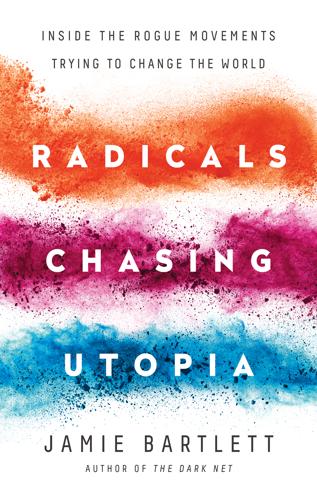
Radicals Chasing Utopia: Inside the Rogue Movements Trying to Change the World
by
Jamie Bartlett
Published 12 Jun 2017
Zoltan Istvan, ‘Should a transhumanist run for US president?’, Huffington Post, 2014, http://www.huffingtonpost.com/zoltan-istvan/should-a-transhumanist-be_b_5949688.html. 5. Zoltan has also arranged for a scientist transhumanist to turn up to say farewell: Maria Konovalenka, a PhD candidate at USC in her midtwenties who specialises in stem-cell research. She serves as Zoltan’s longevity adviser. 6. This is Grindfest number 1. Confusingly, this is the second—the first was Grindfest 0, held in March 2015. 7. Debra Kelly, ‘10 things you should know about biohacking’, Listverse, 2015, http://listverse.com/2015/05/20/10-things-you-should-know-about-biohacking/. 8.
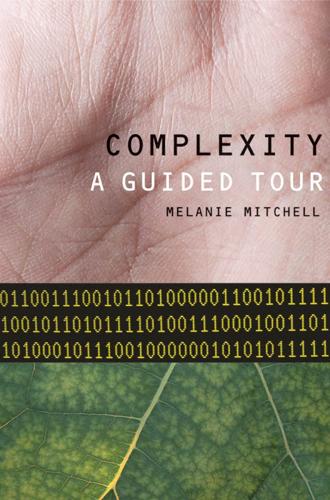
Complexity: A Guided Tour
by
Melanie Mitchell
Published 31 Mar 2009
—Sir Arthur Eddington, The Nature of the Physical World COMPLEX SYSTEMS ARE OFTEN said to be “self-organizing”: consider, for example, the strong, structured bridges made by army ants; the synchronous flashing of fireflies; the mutually sustaining markets of an economy; and the development of specialized organs by stem cells—all are examples of self-organization. Order is created out of disorder, upending the usual turn of events in which order decays and disorder (or entropy) wins out. A complete account of how such entropy-defying self-organization takes place is the holy grail of complex systems science. But before this can be tackled, we need to understand what is meant by “order” and “disorder” and how people have thought about measuring such abstract qualities.
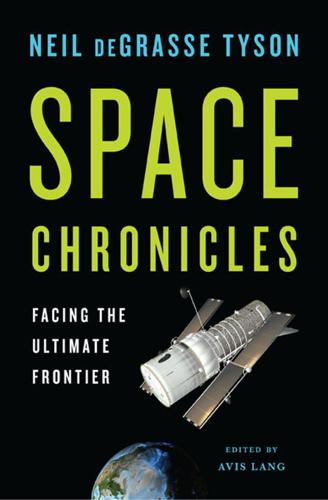
Space Chronicles: Facing the Ultimate Frontier
by
Neil Degrasse Tyson
and
Avis Lang
Published 27 Feb 2012
And by the way, science literacy is not simply how many chemical formulas you can recite, nor whether you know how your microwave oven works. Science literacy is being plugged into the forces that power the universe. There is no excuse for thinking that the Sun, which is a million times the size of Earth, orbits Earth. CS: This is particularly troubling because so much political debate has a basis in science: global warming, stem cell research. What do we do about this? NDT: I can only tell you what I do about it. I hate to say this, but I’ve given up on adults. They’ve formed their ways; they’re the product of whatever happened in their lives; I can’t do anything for them. But I can have some influence on people who are still in school.
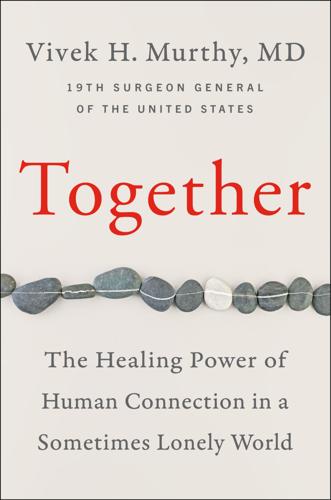
Together
by
Vivek H. Murthy, M.D.
Published 5 Mar 2020
Mychele spent most of the last year of her husband’s life at Ronald Reagan UCLA Medical Center. Her husband, Vincent, had myelodysplastic syndrome, or MDS, a disease where your bone marrow stops making the healthy blood cells you need to survive. He’d endured chemotherapy, constant blood transfusions, and a stem cell transplant from his brother. But by Christmas Day, 2017, Vincent was in the intensive care unit (ICU). Nothing seemed to be helping him. Mychele had never felt so alone. When we spoke two years later, Mychele recalled her husband as “the most loving, hugest man you ever met. He was six foot one, a big Samoan man who loved everyone.”

System Error: Where Big Tech Went Wrong and How We Can Reboot
by
Rob Reich
,
Mehran Sahami
and
Jeremy M. Weinstein
Published 6 Sep 2021
The government frequently establishes national commissions to make recommendations about controversial issues regarding emerging technologies, such as the Presidential Commission for the Study of Bioethical Issues during the Obama administration, which studied cutting-edge topics of bioengineering and the use of fetal tissue and stem cells in research. The result is that individuals who interact with the medical establishment, whether through clinical care or research, can trust that doctors are held to common standards of training and the interests of the patient are foremost. They can trust that there are serious efforts to test and regulate the availability of pharmaceuticals, so that drugs available over the counter or via prescription have been vetted by professionals.

Human Frontiers: The Future of Big Ideas in an Age of Small Thinking
by
Michael Bhaskar
Published 2 Nov 2021
Diverse and prevalent examples include the ongoing role of pseudoscience in ‘alternative medicine’ like homeopathy, anti-vaccine propaganda or even the quack remedies of celebrity wellness sites; anti-evolutionary/creationist beliefs; the denial or downplaying of climate change; the promotion of paranoid conspiracy theories, whether local or international; national or race-based sciences and knowledges; the warping, traducing and making up of social scientific data and arguments in the name of political positions; the dismissal of anything from stem cell research to genetically modified crops on the basis of shoddy arguments and paranoia; and the specious posturing of a cadre of so-called intellectuals from all angles of the political spectrum. Ideas of what might constitute theory or evidence or proof are all set spinning: each can simply be what anyone wants it to be, a curious meeting of radical postmodern theory and the online alt-right media.
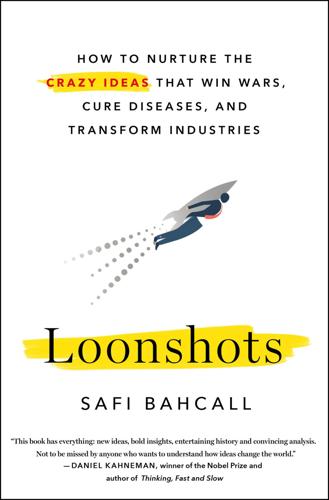
Loonshots: How to Nurture the Crazy Ideas That Win Wars, Cure Diseases, and Transform Industries
by
Safi Bahcall
Published 19 Mar 2019
The biotechs compete for starting material (technologies from universities or national labs), creative talent (biologists and chemists), and scarce funding from specialist investors. It is a market for unfashionable ideas routinely dismissed by the Majors. Gene therapies twenty years ago. Immunotherapies ten years ago. Stem cells today. As in the film world, a symbiotic web of partnerships connects the two markets. Many are one-offs. In chapter 5, we saw how a one-off deal helped Genentech survive in its early days (a partnership with Eli Lilly), just like a one-off deal with Disney helped Pixar survive its early days.
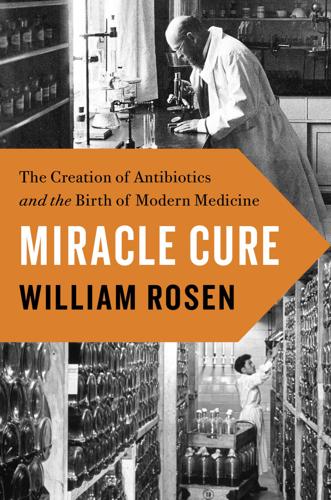
Miracle Cure
by
William Rosen
Published 14 Apr 2017
The Detroit-based company had become the largest pharmaceutical company in the world, with more than $55 million in annual sales from Chloromycetin alone. This was an enviable position. But also a vulnerable one. — “Blood dyscrasia” is an umbrella term for diseases that attack the complex system by which stem cells in the human bone marrow produce red and white blood cells: erythrocytes, leukocytes, granulocytes, and platelets. Dyscrasias can be specific to one sort—anemia is a deficiency in red blood cells, leukopenia in white—or more than one. Aplastic anemia, a blood dyscrasia first recognized by Paul Ehrlich in 1888, refers to depletion of all of them: of every cellular blood component.
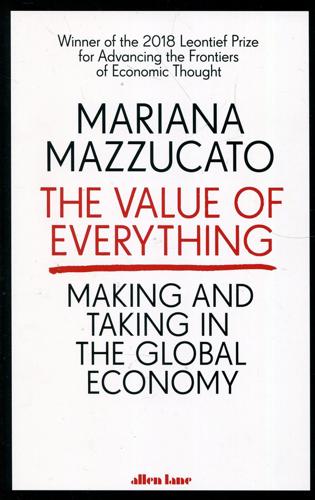
Value of Everything: An Antidote to Chaos The
by
Mariana Mazzucato
Published 25 Apr 2018
Yet granting an exclusive licence on a university-owned patent deters follow-on innovations. Firms must now negotiate - and pay for - a licence before entering a market to access proprietary information that would previously have been available in publications.27 Instead of encouraging better technology transfer - for example, of human stem cell patents held by the University of Wisconsin -the system has delayed technology diffusion.28 Where the US led, the rest of the world has followed. Such university licensing challenges the traditional ‘open science model', where basic research outcomes were - as they should be - freely and equally available to everyone.
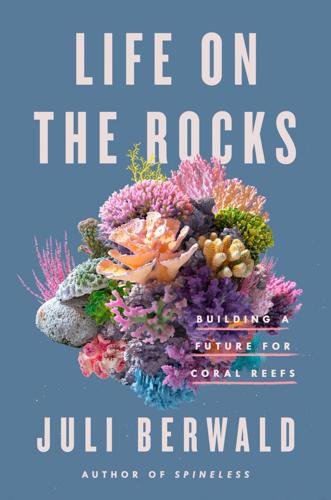
Life on the Rocks: Building a Future for Coral Reefs
by
Juli Berwald
Published 4 Apr 2022
By 2011, Mary worked out how to freeze and thaw coral sperm. She developed the technique for using those thawed sperm to fertilize newly released coral eggs, which successfully developed into functioning coral larvae. That same year, she established a Great Barrier Reef frozen repository, initially with sperm and stem cells from two species of Acropora. Today more than thirty species from twelve genera are in frozen banks, “an effective insurance policy to maintain the genetic diversity.” In 2017, along with scientists from Curaçao and Mote Marine Lab in Florida, Mary decided to try an unprecedented experiment in coral reproduction.
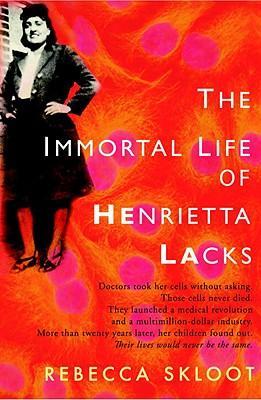
The Immortal Life of Henrietta Lacks
by
Rebecca Skloot
Published 2 Feb 2010
With HeLa, a group of scientists in Colorado succeeded, and soon the world of science had not only HeLa but also its hundreds, then thousands, of clones. The early cell culture and cloning technology developed using HeLa helped lead to many later advances that required the ability to grow single cells in culture, including isolating stem cells, cloning whole animals, and in vitro fertilization. Meanwhile, as the standard human cell in most labs, HeLa was also being used in research that would advance the new field of human genetics. Researchers had long believed that human cells contained forty-eight chromosomes, the threads of DNA inside cells that contain all of our genetic information.

The Equality Machine: Harnessing Digital Technology for a Brighter, More Inclusive Future
by
Orly Lobel
Published 17 Oct 2022
He coined the term geminoid, from the Latin geminus, “twin” or “double,” to refer to a robot that duplicates an existing person.1 Ishiguro created his geminoid, a robot replica of himself; the silicone skin looks human, and even his own hair was used on the robot. As Ishiguro felt he was aging while his geminoid remained eternally young, Ishiguro-the-human underwent cosmetic surgery and stem cell treatments so that he would continue to look like Ishiguro-the-robot. He envisions sending his geminoid to deliver his lectures, travel the world, and generally expand his physical and temporal footprint in this world. Lao Tzu said, “He who knows others is wise; he who knows himself is enlightened.”

Visual Thinking: The Hidden Gifts of People Who Think in Pictures, Patterns, and Abstractions
by
Temple Grandin, Ph.d.
Published 11 Oct 2022
Now imagine all these quirks and variations in the brain’s development, which explains why most people are average (Fords) and a handful are geniuses (Ferraris). More recent MRI studies by John P. Hegarty and his associates at Stanford University show that the overall size of a brain and its large structures are mostly determined by genetics. This is true for both autistic identical twins and neurotypical identical twins, due to the number of stem cells that initially develop in the fetus. Research has also shown that autistic brains are more sensitive to environmental influences. To use an analogy, the cerebrum—that part of the brain that mostly controls speech—is like a road. Genetics determines whether it’s a four-lane highway or a single-lane road.
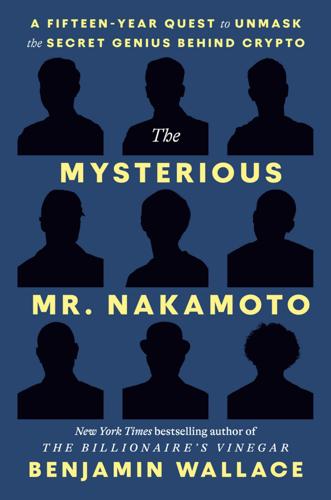
The Mysterious Mr. Nakamoto: A Fifteen-Year Quest to Unmask the Secret Genius Behind Crypto
by
Benjamin Wallace
Published 18 Mar 2025
Beyond the glass wall separating the conference room from a reception area were two attractive young Asian women who Calvin said were his nurses who traveled with him. He also had a doctor on staff. Tomorrow he would leave for Bangkok, where he had a house and was going for a wellness treatment. He spent a lot of his time on wellness these days, he said. “Stem-cell stuff, exosomes, everything that’s ready for prime time.” Despite the shared interest in longevity, Calvin didn’t strike me as someone who would have fit in particularly well among the extropians. We were sitting at a long blond-wood table with glass bottles of mineral water and a dish of nuts with a pair of miniature tongs to pick them up.

The Coming Wave: Technology, Power, and the Twenty-First Century's Greatest Dilemma
by
Mustafa Suleyman
Published 4 Sep 2023
LaPlante, Lifespan: Why We Age—and Why We Don’t Have To (New York: Atria Books, 2019). GO TO NOTE REFERENCE IN TEXT Initial work suggests memory See, for example, Harvard research on memory: “Researchers Identify a Neural Circuit and Genetic ‘Switch’ That Maintain Memory Precision,” Harvard Stem Cell Institute, March 12, 2018, hsci.harvard.edu/news/researchers-identify-neural-circuit-and-genetic-switch-maintain-memory-precision. GO TO NOTE REFERENCE IN TEXT Calls for a moratorium John Cohen, “New Call to Ban Gene-Edited Babies Divides Biologists,” Science, March 13, 2019, www.science.org/content/article/new-call-ban-gene-edited-babies-divides-biologists.

California
by
Sara Benson
Published 15 Oct 2010
The company has since cloned human insulin, introduced the hepatitis B vaccine and developed breast cancer–fighting drugs. But instead of waiting for the next eureka moment from the private sector, Californian voters approved a 2004 bond measure committing $3 billion to stem cell research – a contrary move as federal funds were being cut for research involving embryo-derived stem cells. As of 2008 the state of California is the biggest funder of stem cell research, and Nasdaq has launched its boom-monitoring Biotech Index. Now all that’s missing is the actual boom, but if history is any indication, California will make good on its talk, no matter how outlandish.
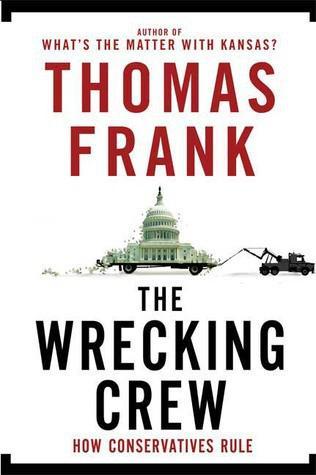
The Wrecking Crew: How Conservatives Rule
by
Thomas Frank
Published 5 Aug 2008
Suddenly the only issues that mattered were the big economic ones that insurgency and culture war were supposed to blur: Government’s role in the economy. Deregulation. The political power of private industry. The country’s distorted distribution of wealth. After all, when your mortgage is under water and your neighbors are being laid off, the need to take up the sword against arrogant stem-cell scientists becomes considerably less urgent. It was not a good time to be a laissez-faire believer, as Senator McCain repeatedly said he was, and the Democratic candidate, Senator Barack Obama, insisted on putting economic fairness at the center of the discussion. The right did make several halfhearted efforts to blame the ongoing disaster on government or liberalism, however.
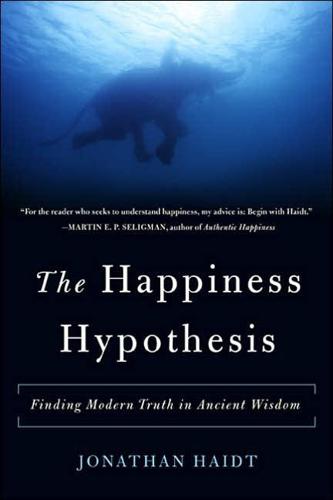
The Happiness Hypothesis: Finding Modern Truth in Ancient Wisdom
by
Jonathan Haidt
Published 26 Dec 2005
Where the Greeks focused on the character of a person and asked what kind of person we should each aim to become, m o d e m ethics f o c u s e s on actions, asking when a particular action is right or wrong. Philosophers wrestle with life-and-death dilemmas: Kill one to save five? Allow aborted fetuses to be used as a source of stem cells? Remove the feeding tube from a w o m a n who has been unconscious for fifteen years? Nonphilosophers wrestle with smaller quandaries: Pay my taxes when others are cheating? Turn in a wallet full of money that appears to belong to a drug dealer? Tell my s p o u s e about a sexual indiscretion? This turn from character ethics to quandary ethics has turned moral education away from virtues and toward moral reasoning.

Brazillionaires: The Godfathers of Modern Brazil
by
Alex Cuadros
Published 1 Jun 2016
Even as he renegotiated his debts, he’d flown to South Korea and met with another fallen star, a scientist named Hwang Woo-suk. Once known as the “Pride of Korea,” Hwang had lost his job at Seoul National University after it was discovered that data had been faked in a study in which he claimed to have cloned human stem cells. The two men now planned to set up a Brazilian lab to clone cattle and rare animals. Eike was well received in South Korea. He was also teaming up with a South Korean pharmaceuticals company to make generic Viagra that dissolves under your tongue. But he’s got more mundane projects too. Working with the energy expert Roberto Hukai, an old friend of his dad’s, he’s trying to raise money for a biofuels venture and a wind park in Rio.

Radical Technologies: The Design of Everyday Life
by
Adam Greenfield
Published 29 May 2017
Whatever remains of the rest is cherished as an heirloom and symbol of an all-but-inconceivably sweeter and more generous age. Do these few sketches represent the only choices available to us, or even the entire spectrum of variation possible between them? Of course not. None of them takes particular note of the equally transformative potentials emerging from biotechnology and the life sciences—stem-cell therapies, for example, the CRISPR genome-editing process, or the various ways in which we are becoming-cyborg. Collectively, they no doubt underweight the influence of social and demographic trends that have nothing to do with technology per se. Each of them, in the manner of Shell’s original scenarios, is merely a distillation of certain tendencies we can already perceive in our use of one particular class of technologies.

Dreaming in Code: Two Dozen Programmers, Three Years, 4,732 Bugs, and One Quest for Transcendent Software
by
Scott Rosenberg
Published 2 Jan 2006
Most PIM programs required users to decide up front, when they created a new item, what it was: Were you creating a new email? A calendar event? A to-do task? Chandler would instead let you sit down, start typing a note, and decide later what kind of item it was. Like the human body’s undifferentiated stem cells, notes would begin life with the potential to grow in different directions. This design aimed to liberate the basic act of entering information into the program from the imprisoning silos. It also made room for Yin’s proposed solution to the item mutability problem: The mechanism users would employ to specify the “kind-ness” of an item would be called stamping.

Plutocrats: The Rise of the New Global Super-Rich and the Fall of Everyone Else
by
Chrystia Freeland
Published 11 Oct 2012
Bill Gates, likewise, devotes most of his energy and intellect today to his foundation’s work on causes ranging from supporting charter schools to combating disease in Africa. Facebook founder Mark Zuckerberg has yet to reach his thirtieth birthday, but last fall he donated $100 million to improving Newark’s public schools. Insurance and real estate magnate Eli Broad has become an influential funder of stem cell research and school reform; Jim Balsillie, a cofounder of BlackBerry creator RIM, has established his own international affairs think tank; the list goes on and on. It is not without reason that Bill Clinton has devoted his postpresidency to the construction of a global philanthropic “brand.” The super-wealthy have long recognized that philanthropy, in addition to its moral rewards, can also serve as a pathway to social acceptance and even immortality.
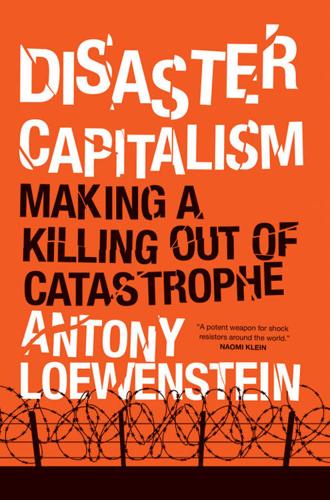
Disaster Capitalism: Making a Killing Out of Catastrophe
by
Antony Loewenstein
Published 1 Sep 2015
But new technology is forcing these shifts, and my generation is at the forefront of it.” Scott worked for the British company Call Sense. With only seven staff in America, it was a small operation with good growth prospects. It sold a metal detector that was highly sought after in prisons for finding mobile phones, knives, and guns. Scott told me that he had previously worked in stem-cell research but was attracted to a business that allowed him to travel. He loves “the corrections business because it was friendly and helped people.” It was a revealing evening, where individuals in profitable businesses socialized and talked shop. Everyone I spoke to said that they attended every ACA conference, always twice a year in two different cities, to share ideas and meet colleagues with whom they sometimes competed in the market.

When Computers Can Think: The Artificial Intelligence Singularity
by
Anthony Berglas
,
William Black
,
Samantha Thalind
,
Max Scratchmann
and
Michelle Estes
Published 28 Feb 2015
If that language could be understood then the problem may be reduced to understanding our 20,000 genes rather than the 86 billion neurons that result. Determining the boundaries between nature and nurture during neural development is a subject of ongoing research. What is known is that neurons do not directly reproduce. Instead, general purpose stem cells specialize into generic neuron cells which then specialize into a specific type of neuron. Further, neurons often travel from the place that they were created in the inner layers of the brain to the places they eventually occupy in the outer layers. Some neurons glide along fibres created by cells called radial glia.
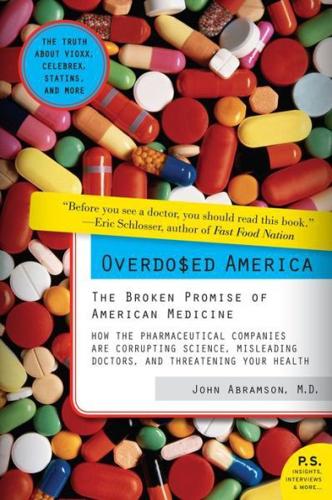
Overdosed America: The Broken Promise of American Medicine
by
John Abramson
Published 20 Sep 2004
New York Times, October 3, 1999. 52 found that his data were fraudulent: Denise Grady, “More Deception Is Suspected in Cancer Study,” New York Times, March 10, 2000. 52 The researcher’s article was retracted: Eric Nagourney, “National briefing: Cancer Study Retracted,” New York Times, April 27, 2001. 52 failed to show any benefit: Stadtmauer E. A., O’Neill A., Goldstein L. J., et al., “Conventional-Dose Chemotherapy Compared with High-Dose Chemotherapy Plus Autologous Hematopoietic Stem-Cell Transplantation for Metastatic Breast Cancer,” New England Journal of Medicine, 342(15): 1069–1076, 2000. 52 “this form of treatment for women: Lippman M. E., “High-Dose Chemotherapy Plus Autologous Bone Marrow Transplantation for Metastatic Breast Cancer,” New England Journal of Medicine, 342:1119–1120, 2000. 53 “One thing is for certain: George W.
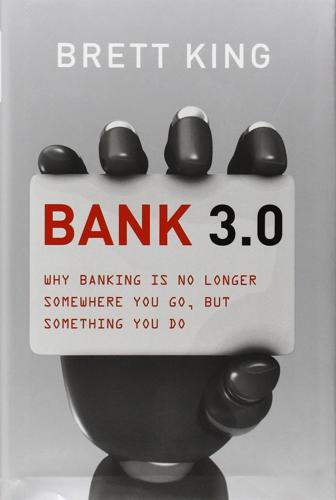
Bank 3.0: Why Banking Is No Longer Somewhere You Go but Something You Do
by
Brett King
Published 26 Dec 2012
Already 3D printers today can print wearable fabrics, integrated circuits, blood vessels, cells and organs (a kidney, a bladder and an ear have recently been printed, for example9), engine components, model aircraft, etc. It currently takes around six hours to print a human kidney using a 3D bioprinter, starting with a scaffold and adult stem cells from the patient’s own body so that the new organ is not rejected. While still largely in development, imagine what the 3D printer will do to the world’s manufacturing sector. There will be a huge business in manufacturing 3D printers at least! Well, that is, until we can print a new 3D printer using your old one . . .

Who Owns the Future?
by
Jaron Lanier
Published 6 May 2013
What I would like to point out, though, is that a great deal of the confusion and rancor in the world today concerns tension at the boundary between religion and modernity—whether it’s the distrust among Islamic or Christian fundamentalists of the scientific worldview, or even the discomfort that often greets progress in fields like climate change science or stem-cell research. If technologists are creating their own ultramodern religion, and it is one in which people are told to wait politely as their very souls are made obsolete, we might expect further and worsening tensions. But if technology were presented without metaphysical baggage, is it possible that modernity would make people less uncomfortable?
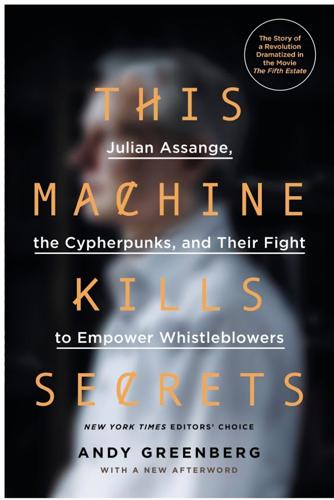
This Machine Kills Secrets: Julian Assange, the Cypherpunks, and Their Fight to Empower Whistleblowers
by
Andy Greenberg
Published 12 Sep 2012
And instead of merely holding an eleven-person protest as he had in his cypherpunk days, this time he fired back with both barrels. “WikiLeaks will not comply with legally abusive requests from Scientology any more than WikiLeaks has complied with similar demands from Swiss banks, Russian off-shore stem cell centers, former African kleptocrats, or the Pentagon. WikiLeaks will remain a place where people of the world may safely expose injustice and corruption,” read a letter sent back to the church’s lawyer. “In response to the attempted suppression, Wikileaks will release several thousand additional pages of Scientology material next week.”

What to Think About Machines That Think: Today's Leading Thinkers on the Age of Machine Intelligence
by
John Brockman
Published 5 Oct 2015
But we’re getting far better at vascular surgery—bypassing, stitching, and grafting both big and microscopic vessels. There have been similar advances in rebuilding muscles and damaged vertebrae. Even the reattachment of severed spinal cords in mice and primates is progressing. Partial brain transplants are likely a long way off. Other than in certain stem-cell procedures, attaching parts of one brain to another is a highly complex undertaking, given the consistency of most brain mass and the trillions of connections. But as extreme operations—reattachment of fingers, limbs, even faces—become commonplace, the question of whether we could, or should, transplant an entire human head looms closer.

Giving the Devil His Due: Reflections of a Scientific Humanist
by
Michael Shermer
Published 8 Apr 2020
Indeed, I’ve made most of these arguments in my belief trilogy (Why People Believe Weird Things, How We Believe, and The Science of Good and Evil), yet I am often cast as a moderate for my more conciliatory approach towards religion. What is the right tactic to take? The answer depends on what one wants to accomplish. Since the turn of the millennium, a new militancy has arisen among religious skeptics in response to three threats to science and freedom: (1) evolution education and stem cell research, (2) breaks in the barrier separating church and state, leading to political preferences for some faiths over others, and (3) fundamentalist terrorism here and abroad. In addition, they loudly and proudly proclaim that it is okay to be an atheist, and they free themselves of the burden of having to respect others’ beliefs when they don’t respect ours.
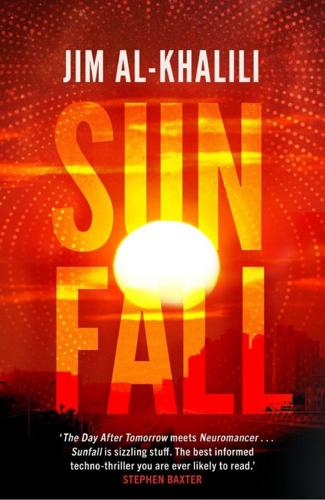
Sunfall
by
Jim Al-Khalili
Published 17 Apr 2019
The rich aroma of chorizo and shellfish in her large pot of asopao permeated the whole of her ground-floor apartment. She’d now cooked enough food to feed a platoon for a week and began portioning up the thick soup. She’d keep most of it in her fridge but decided to take a couple of portions up to Grace Morales on the fifth floor. Camila was feeling rejuvenated after the recent stem-cell injections had cleared up the arthritis in her knees, and was keen to impress her friend with her newfound vigour. Besides, she wanted to have a better view out to sea than she had from her own flat on the ground floor. It had been an exceptionally warm and sticky week, and now the rain had started.
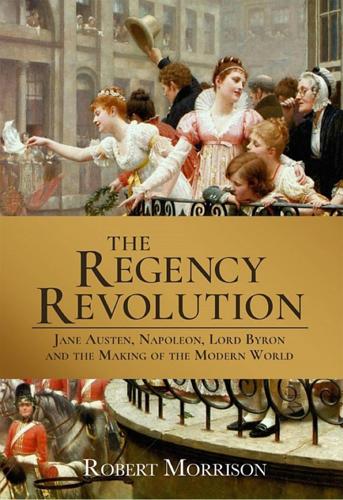
The Regency Revolution: Jane Austen, Napoleon, Lord Byron and the Making of the Modern World
by
Robert Morrison
Published 3 Jul 2019
In addition to launching the entirely new genre of science fiction, it has had an incalculable impact on the way we imagine science. Deeply indebted to Regency speculations on electricity, anatomy, and the vital life force, the novel both anticipates and illuminates a host of moral issues in modern medicine and science, from animal cloning, stem-cell research, and genetic engineering, through organ transplants, artificial intelligence, and heterografting (the use of animal organs in human bodies), to biometrics, gene therapy, and cybernetic technologies. Frankenstein unnervingly reveals that scientific research has the potential to improve our lives in countless ways, but that if we deny or ignore our responsibilities, new discoveries have also the potential to pass dangerously far beyond the control of their makers and assume hideous and unpredictable forms that may betray or even destroy us.
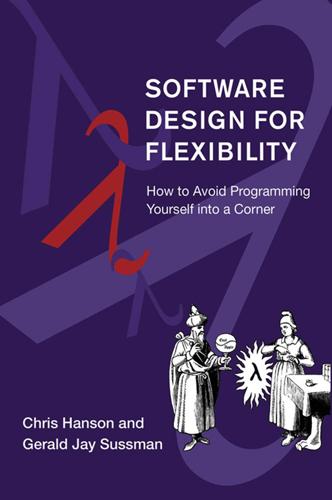
Software Design for Flexibility
by
Chris Hanson
and
Gerald Sussman
Published 17 Feb 2021
But there are universal electrical building blocks (a programmable computer with analog interfaces, for example!).12 For low-frequency applications one can build analog systems from such blocks. If each block had all of the code required to be any block in the system, but was specialized by interactions with its neighbors, and if there were extra unspecialized “stem cells” in the package, then we could imagine building self-reconfiguring and self-repairing analog systems. But for now we still design and build these parts individually. In programming we do have the idea of a universal element: the evaluator. An evaluator takes a description of some computation to be performed and inputs to that computation.
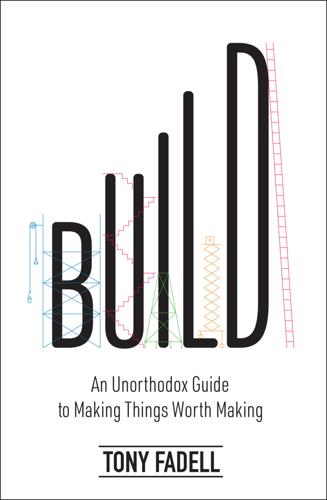
Build: An Unorthodox Guide to Making Things Worth Making
by
Tony Fadell
Published 2 May 2022
In the beginning each cell is the same, but quickly they break out and individualize. This one is going to be a nerve, this one a muscle. The more the organism grows, the more differentiated each cell has to be, the more complicated the system becomes. But it also becomes more resilient, able to survive for years, decades. The same happens in business. But people are not stem cells. Sometimes you’ll work with a specialist who’s thrilled by the idea of focusing on just one element of their job, but for most people narrowing their responsibility doesn’t feel natural and inevitable—it freaks them out. And this process is particularly terrifying in the very beginning, after everyone gets used to doing everything, when there are virtually no management layers and you all just agree on a direction and start sprinting.

The Awoken: A Novel
by
Katelyn Monroe Howes
Published 8 Aug 2022
Keeping in line with that philosophy, cryogenics was in the UA’s crosshairs from the beginning, an obvious threat to the Natural Order. It was a hot-button topic around the world, one that impassioned people on both sides. Look, I get it, bringing people back from the dead, what could seem less natural? If it took decades to change popular opinion about stem cell research, I wouldn’t expect an overnight global acceptance of resurrection. Change is terrifying. Each country had to decide how it would react to this earth-shattering innovation. The legality of bringing a person back from the dead was the moral issue of the millennia. The world divided along ideals: those that restricted or even banned resurrection and turned away from technology, and those that embraced medical advancement and bodily autonomy.
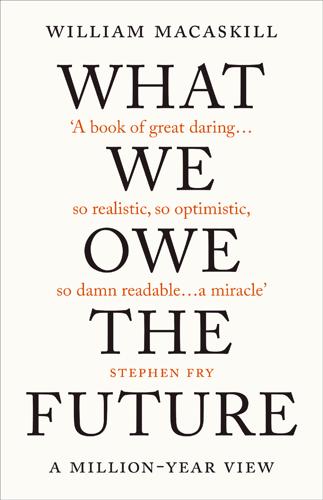
What We Owe the Future: A Million-Year View
by
William MacAskill
Published 31 Aug 2022
The second best-selling book is the Quran.30 Confucius’s Analects still sells hundreds of thousands of copies annually.31 Every day, quotes from these sources influence political decision-making around the world. The Babylonian Talmud, compiled over a millennium ago, states that “the embryo is considered to be mere water until the fortieth day”—and today Jews tend to have much more liberal attitudes towards stem cell research than Catholics, who object to this use of embryos because they believe life begins at conception.32 Similarly, centuries-old dietary restrictions are still widely followed, as evidenced by India’s unusually high rate of vegetarianism, a $20 billion kosher food market,33 and many Muslims’ abstinence from alcohol.

These Strange New Minds: How AI Learned to Talk and What It Means
by
Christopher Summerfield
Published 11 Mar 2025
At the time of writing, the ability of multimodal LLMs to caption and describe images, or respond to questions about image content, is limited but improving rapidly. For example, ChatGPT will draw nonsensical scientific diagrams, and earnestly describe the contents, blissfully unaware that it makes no sense. This was delightfully illustrated in early 2024, when researchers from Jiaotong University in China published a paper about spermatogonial stem cells in the rat and asked ChatGPT for help with Figure 1. ChatGPT happily obliged, generating a textbook-style image of a rat being dwarfed by its own gigantic erect penis, which was helpfully labelled ‘dck’ (the paper has since been retracted).[*9] There have been several (unsuccessful, so far) attempts to train an LLM to win the New Yorker Cartoon contest, a challenge that requires powerful analytic skills, as well as both a healthy dose of urbane wit and a tendency to look sideways at the world.

The Optimist: Sam Altman, OpenAI, and the Race to Invent the Future
by
Keach Hagey
Published 19 May 2025
He has co-founded the company behind Worldcoin, a for-profit cryptocurrency project that travels the world with a bowling ball–sized orb, scanning people’s irises in exchange for cryptocurrency that could one day be used to distribute a kind of global UBI. And he personally funded long-running studies into the efficacy of UBI. His other investments include moonshots that would extend the human lifespan by ten years, treat Parkinson’s disease with stem cells, bring back supersonic commercial flight, and create an implant to connect a brain to a computer. One gets the sense that he would never personally invest in anything as square as enterprise software (never mind that that’s largely what OpenAI and its partner Microsoft have to date actually produced).

Northern California Travel Guide
by
Lonely Planet
California’s biotech industry has been nothing to sneeze at, either. In 1976 an upstart company called Genentech was founded in the San Francisco Bay Area, and quickly got to work cloning human insulin and introducing the Hepatitis B vaccine. In 2004 California voters approved a $3 billion bond measure for stem-cell research. By 2008 California had become the USA’s biggest funder of stem-cell research, as well as the focus of Nasdaq's new Biotechnology Index, and by 2014 the Bay Area was home to 1377 life science and biotech companies reporting revenues of $4.1 billion and employing more than 140,000 people. In 2015, with hefty contributions by the tech, biotech and aerospace industries, California generated a collective income of $2.46 trillion and surpassed the GDP of France to become the world's sixth-largest economy.
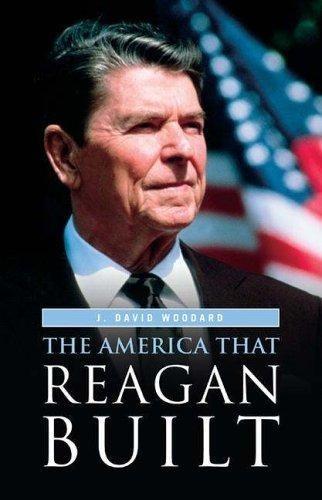
The America That Reagan Built
by
J. David Woodard
Published 15 Mar 2006
Are government programs for health and welfare destructive of individual rights and liberties, or are they helpful to those who need them? Is the death penalty cruel and unusual punishment, or is it necessary for social order? Should same-sex unions have the same rights as traditional heterosexual marriage or be outlawed? Should embryonic stem cells be cloned to prevent disease, or is such a project the harvesting of human uniqueness for genetic engineering? The culture of a country is defined by the overt and understood patterns of behavior for those who live in a particular place and time. Every human subgroup has some ideals that are historically derived and are an embodiment of its essential beliefs.
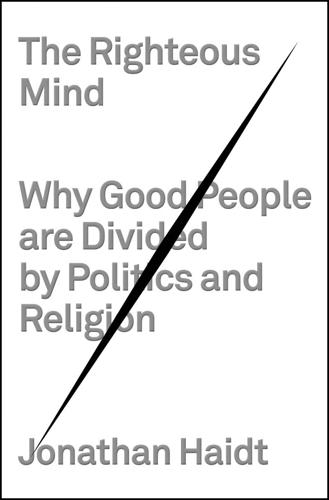
The Righteous Mind: Why Good People Are Divided by Politics and Religion
by
Jonathan Haidt
Published 13 Mar 2012
If you dismiss the Sanctity foundation entirely, then it’s hard to understand the fuss over most of today’s biomedical controversies. The only ethical question about abortion becomes: At what point can a fetus feel pain? Doctor-assisted suicide becomes an obviously good thing: People who are suffering should be allowed to end their lives, and should be given medical help to do it painlessly. Same for stem cell research: Why not take tissue from all those embryos living in suspended animation in fertility clinics? They can’t feel pain, but their tissues could help researchers develop cures that would spare sentient people from pain. The philosopher Leon Kass is among the foremost spokesmen for Shweder’s ethic of divinity, and for the Sanctity foundation on which it is based.

Jennifer Morgue
by
Stross, Charles
Published 12 Jan 2006
Unlike most of the cosmetics on the market, it really does render the wrinkles invisible. The ingredients are a bit of a pain, but she's got that well in hand; instead of needing an endless supply of young women just to keep one old bat pretty we can make do with only about ten parts per million of maid's blood in the mix. It's just one of the wonders of modern stem cell technology. Shame we can't find a replacement for the stress prostaglandins, but those are the breaks." He clicks his mouse. "Here's the other end of the operation." It's a room full of skinny, suntanned guys in short-sleeved shirts hunched over cheap PCs, row upon row of them: "My floating offshore programmer ranch, the SS Hopper.
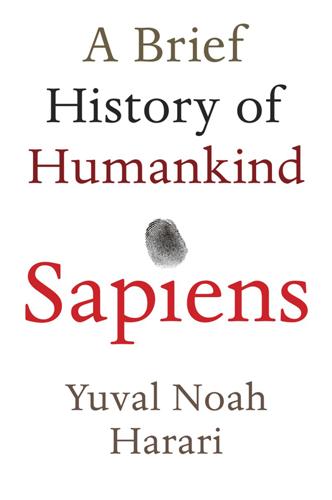
Sapiens: A Brief History of Humankind
by
Yuval Noah Harari
Published 1 Jan 2011
The answer to this question might send them careening in entirely different directions. Most people prefer not to think about it. Even the field of bioethics prefers to address another question, ‘What is it forbidden to do?’ Is it acceptable to carry out genetic experiments on living human beings? On aborted fetuses? On stem cells? Is it ethical to clone sheep? And chimpanzees? And what about humans? All of these are important questions, but it is naïve to imagine that we might simply hit the brakes and stop the scientific projects that are upgrading Homo sapiens into a different kind of being. For these projects are inextricably meshed together with the Gilgamesh Project.
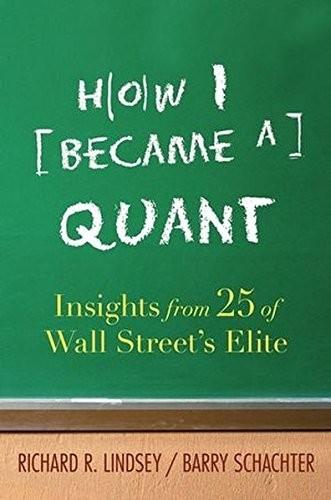
How I Became a Quant: Insights From 25 of Wall Street's Elite
by
Richard R. Lindsey
and
Barry Schachter
Published 30 Jun 2007
And they are proud of it! There is a discipline to science and mathematics that is different from other human endeavors. When you write a scientific paper, you have to prove what you say. If there is a hole in your proof or a flaw in your experiment, your competitors will shoot you down. Cold fusion and stem cell cloning didn’t survive long. But quantitative finance is also subject to a discipline—the discipline of making money. If your idea is wrong or not implemented properly, a lot of money, not to mention your job, may be lost. The old jibe “if you’re so smart, why aren’t you rich?” is appropriate in a financial institution.
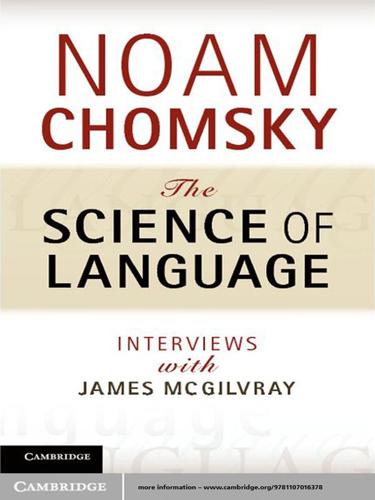
The Science of Language
by
Noam Chomsky
Published 24 Feb 2012
It is not entirely clear what exactly Waddington had in mind by way of an explanation of canalization, although one dominant theme is his appeal to “buffering” due to epigenetic ‘networks’ – intuitively, interactions between alleles and the environment. A prominent example is the transformation of stem cells (which can be ‘made into anything,’ as the popular press puts it) into cells of a specific sort: their DNA remains the same, and the environment ‘specializes’ them. Are epigenetic factors “third factor” contributions? Plausibly, yes: they involve more than DNA coding. The phenomena themselves are in general obvious enough.
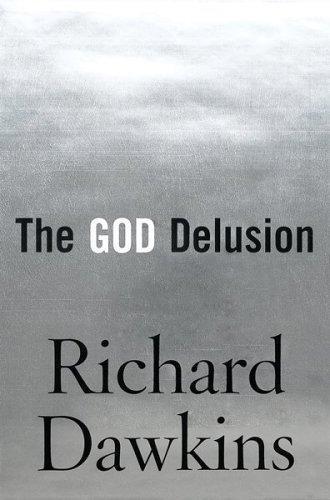
The God Delusion
by
Richard Dawkins
Published 12 Sep 2006
Slippery slope arguments might be seen as a way in which consequentialists can reimport a form of indirect absolutism. But the religious foes of abortion don’t bother with slippery slopes. For them, the issue is much simpler. An embryo is a ‘baby’, killing it is murder, and that’s that: end of discussion. Much follows from this absolutist stance. For a start, embryonic stem-cell research must cease, despite its huge potential for medical science, because it entails the deaths of embryonic cells. The inconsistency is apparent when you reflect that society already accepts IVF (in vitro fertilization), in which doctors routinely stimulate women to produce surplus eggs, to be fertilized outside the body.
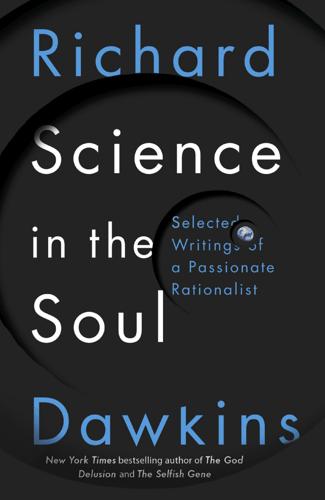
Science in the Soul: Selected Writings of a Passionate Rationalist
by
Richard Dawkins
Published 15 Mar 2017
Drawing on his reserves of scientific and medical knowledge – informed and deepened by the Values that only faith can bring – His Holiness explained that the scourge of AIDS is made worse, not better, by condoms. His advocacy of abstinence may have dismayed some medical experts (and the same goes for his deeply and sincerely held opposition to stem-cell research). But surely to goodness we must find room for a diverse range of opinions. All opinions, after all, are equally valid, and there are many ways of knowing, spiritual as well as factual. That, at the end of the day, is what the Foundation is all about. ‘We have established Face to Faith, an interfaith schools programme to counter intolerance and extremism.’

The Future Is Asian
by
Parag Khanna
Published 5 Feb 2019
Japanese scientists have long led the way in Asia’s contributions to global research, winning numerous Nobel Prizes in medicine and physics, as well as the prestigious Shaw and Lasker prizes in life sciences. Japan’s Shinya Yamanaka, the winner of the 2012 Nobel Prize in Physiology or Medicine, tops the Asian Scientist list for revolutionizing the field of stem cell research, and in 2016 Yoshinori Osumi won the Nobel Prize for his research on autophagy (cellular decay). The 2015 Nobel Prize in Physiology or Medicine was awarded to the Chinese pharmacologist Tu Youyou for her discovery of the malarial treatment artemisinin, shared with the Japanese biochemist Satoshi Omura.
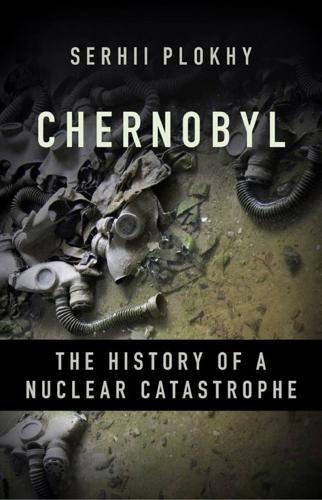
Chernobyl: The History of a Nuclear Catastrophe
by
Serhii Plokhy
Published 1 Mar 2018
They include nervousness, confusion, watery diarrhea, and sometimes loss of consciousness. For those absorbing a dose of between 10 and 50 grays, loss of appetite, nausea, and vomiting occur within hours after exposure; for those receiving 1 to 10 grays, the same symptoms set in anywhere between several hours and two days after exposure. In all cases, radiation kills stem cells in bone marrow, but radiation in the range of 10 to 50 grays also kills cells in the gastrointestinal tract. When radiation exceeds 50 grays, the cardiovascular and nervous systems are affected. All patients go through three main stages of the disease. In the first stage, symptoms of the syndrome appear; in the second, latent stage, patients may appear to be fine, and they feel well; in the final stage, the symptoms return with greater severity.

The Hype Machine: How Social Media Disrupts Our Elections, Our Economy, and Our Health--And How We Must Adapt
by
Sinan Aral
Published 14 Sep 2020
She began posting to Instagram when it launched in 2010. Her appearance and demeanor on her posts were fashionable, subtle, and uplifting, and she frequently posted glowing updates about her family. But the influence she had was anything but subtle. When she posted a picture of the Peter Thomas Roth Rose Stem Cell Bio-Repair Gel Mask to Snapchat in 2016, her story sold $17,565 worth of masks in a day. That sales rate, if sustained, would generate “$527,000 in a month or almost $6.4 million in a year” in revenues. Her first apparel collaboration with Nordstrom sold $1 million in the first twenty-four hours.

Open: The Story of Human Progress
by
Johan Norberg
Published 14 Sep 2020
Now no one would use transportation services any more.21 My ambition is not to show how silly previous generations are. If anything, it shows how silly we all are – these are universal reactions to things that are new and strange. In recent memory, similar anxiety has been widely felt about innovations like the internet, video games, genetically modified organisms and stem-cell research. Soon they too will end up in the Pessimists Archive. Not all of these fears were unfounded. New technologies do result in accidents, they disturb traditional cultures and habits, and destroy old jobs while simultaneously creating new ones. But the only way to learn how to make the best use of them and reduce the risks is trial and error, not wild speculation.
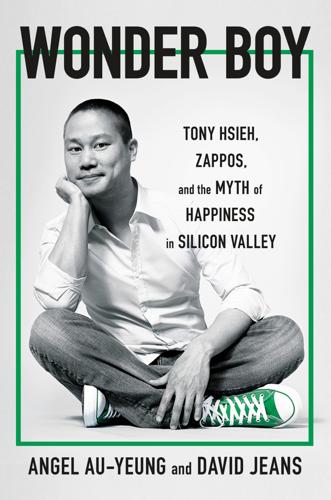
Wonder Boy: Tony Hsieh, Zappos, and the Myth of Happiness in Silicon Valley
by
Angel Au-Yeung
and
David Jeans
Published 25 Apr 2023
In addition to cold exposure therapy and enhanced breathing techniques, Dorsey had spoken about eating only one meal a day and fasting completely on weekends as a way to improve his tolerance of stress and optimize other aspects of his health. Others had invoked biohacking as the logic behind various experiments aimed to increase longevity. Dave Asprey, the self-described “father of biohacking” who founded the Silicon Valley supplement startup Bulletproof Nutrition, underwent an operation where a doctor harvested stem cells from his bone marrow and then injected them back into his body in the hope that it would enable him to live to 180 years old. And in the far nether regions of biohacking are people who call themselves “grinders,” those who implant computer chips under their skin in experiments to wire the brain directly to a digital output.
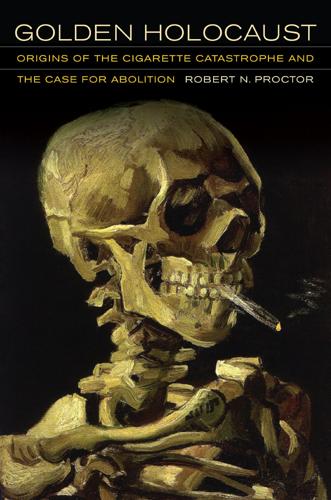
Golden Holocaust: Origins of the Cigarette Catastrophe and the Case for Abolition
by
Robert N. Proctor
Published 28 Feb 2012
The Council for Tobacco Research was shuttered in 1998 as part of the Master Settlement Agreement reached between cigarette manufacturers and the attorneys general of forty-six states. By this time, however, the body was already moribund. The CTR had stopped accepting grant proposals on June 20, 1997, with the last grant going to Judith A. Shizuru, a physician at Stanford’s School of Medicine, for work on a project titled “Bone Marrow Stem Cell Transplants for the Treatment of Autoimmune Disease.” The Council did not disappear but by the terms of the MSA was no longer allowed to offer grants. Staffing was stripped down to a skeleton crew of four, having as their sole purpose to respond to litigation. James F. Glenn, president and CEO of the expiring body, in 1998 wrote to Stanford’s Judith F.
…
Seitz knew that “only a few human cancers seem to be linked to virus infections,” but he also informed his paymaster that research along these lines had produced a “detailed working model of a cancer-causing system at the molecular level.” Seitz reviewed other work funded by Reynolds: on cellular membranes and stem cells at Colorado’s School of Medicine, on chromosomal markers for genetic diseases at Rockefeller, on viral diseases at the Wistar Institute, and similar work at Duke, the University of Utah, the Eleanor Roosevelt Institute for Cancer Research in Denver, and so forth. All perfectly respectable science, and perfectly irrelevant (or worse) to the problem of tobacco and disease.
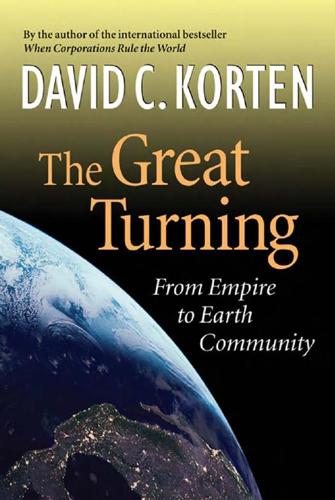
The Great Turning: From Empire to Earth Community
by
David C. Korten
Published 1 Jan 2001
The public debate in the United States over intelligent design versus mechanism and chance discussed in chapter 15 brings such questions relating to human origin and purpose to the fore and challenges the more extreme and doctrinaire fundamentalism of both the scientific and religious establishments. Another development in the United States with important implications for the cultural turning is the claim by media pundits that Christian voters decided the outcome of the 2004 U.S. presidential election based on moral values relating to abortion, gay marriage, and stem cell research. This announcement stunned members of the broader faith community — including a great many Evangelicals — who consider war, poverty, and environmental destruction to be far more pressing moral issues. They vowed they would no longer allow a fringe minority with an extremist political agenda at odds with scripture to be the arbiters of Christian morality.
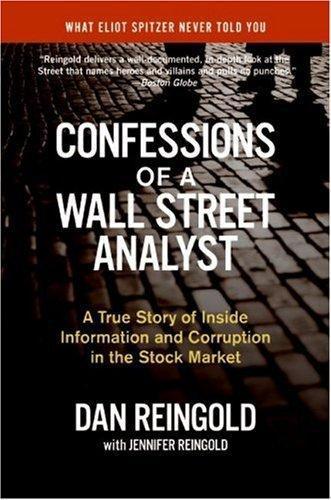
Confessions of a Wall Street Analyst: A True Story of Inside Information and Corruption in the Stock Market
by
Daniel Reingold
and
Jennifer Reingold
Published 1 Jan 2006
He’s also taken to academia—he’s a visiting professor at the Sloan School of Management at MIT, and he was recently named to a volunteer position at Johns Hopkins Medicine that oversees cooperation between the noted medical school and teaching hospitals in Baltimore. He has become a champion of stem cell research. He splits time between Darien, Connecticut, and Naples, Florida, with his wife, Anne.3 Jim Crowe—The former CEO of MFS has been CEO of Level 3 Communications since 1997.4 He’s still going strong, though Level 3’s stock price has never recovered from its dot-com collapse. Carol Cutler—Left the investment profession and is now working at Calvin Klein in Manhattan as a gift registry specialist.
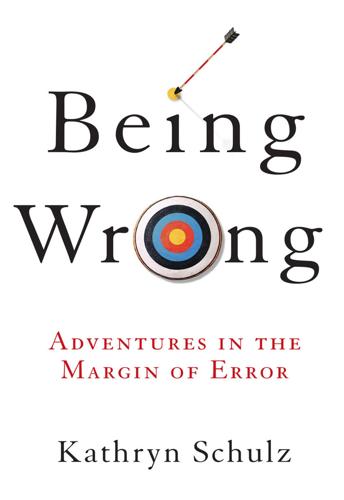
Being Wrong: Adventures in the Margin of Error
by
Kathryn Schulz
Published 7 Jun 2010
Background information on the Bromgard case comes from my interview with Neufeld; I am grateful to him as well for providing me with a copy of the deposition, from which the direct quotations are taken: “The deposition of Michael McGrath in the United States Judicial District Court for the District of Montana Billings Division, Jimmy Ray Bromgard, plaintiff, v. State of Montana, County of Yellowstone, Chairman Bill Kennedy, Commissioner John Ostlund, Commissioner Jim Reno, Arnold Melnikoff, and Mike Greely, defendants,” Sept. 29, 2006. Chimerism. Clive Niels Svendsen and Allison D. Ebert, eds., The Encyclopedia of Stem Cell Research (Sage Publications, 2008), 96. When other forensic scientists reviewed his work. John O. Savino, Brent E. Turvey, and John J. Baeza, The Rape Investigation Handbook (Academic Press, 2005), 32. “‘I saw murder in his eyes.’” This story was told to me by Peter Neufeld. The next story in this paragraph, about Calvin Johnson, was mentioned by Neufeld in our interview and appears as well in Scheck et al., 193–210.
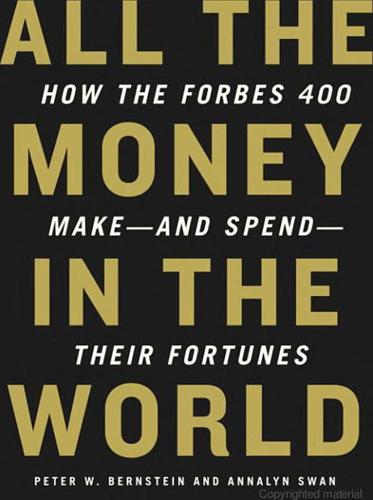
All the Money in the World
by
Peter W. Bernstein
Published 17 Dec 2008
The list of megamillionaires funding research for cures of ailments and diseases, some of which afflict them or family members, goes on and on: Eli Broad; real-estate tycoon Mort Zuckerman; and California billionaires Ray Dolby (sound pioneer) and William Gross (Pimco investment firm), who are both backing stem-cell research. But are they seeing returns on their investments? Not if they are looking for medical miracles, say philanthropy experts. That’s partly due to the time-intensive nature of medical research. Broad, for one, is convinced that the $200 million he has given in the past two years to the Broad Institute at MIT and Harvard is already showering him with rewards.
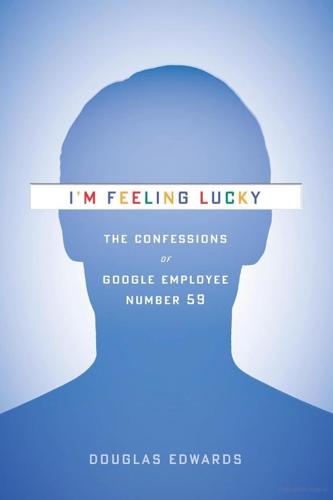
I'm Feeling Lucky: The Confessions of Google Employee Number 59
by
Douglas Edwards
Published 11 Jul 2011
"Nobody had experience with search engines," Urs recalls. "What was most important was what else they had done, how good they were technically, and how quickly they could learn." He dictated a mantra to Google's HR staff: "Hire ability over experience."* Brilliant generalists could reprogram themselves like stem cells within the corporate body: they would solve a problem, then morph and move on to attack the next challenge. "The key thing," Urs said, "was that they be able to independently make progress, because there wasn't much room for babysitting. They had to have good judgment about whether to coordinate or not."
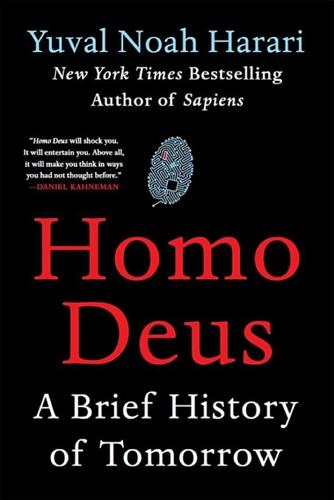
Homo Deus: A Brief History of Tomorrow
by
Yuval Noah Harari
Published 1 Mar 2015
Discussing the then popular eugenics movement, Duncan said, ‘Just imagine a child with my beauty and your brains!’ France responded, ‘Yes, but imagine a child with my beauty and your brains.’) Well then, why not rig the lottery? Fertilise several eggs, and choose the one with the best combination. Once stem-cell research enables us to create an unlimited supply of human embryos on the cheap, you can select your optimal baby from among hundreds of candidates, all carrying your DNA, all perfectly natural, and none requiring any futuristic genetic engineering. Iterate this procedure for a few generations, and you could easily end up with superhumans (or a creepy dystopia).
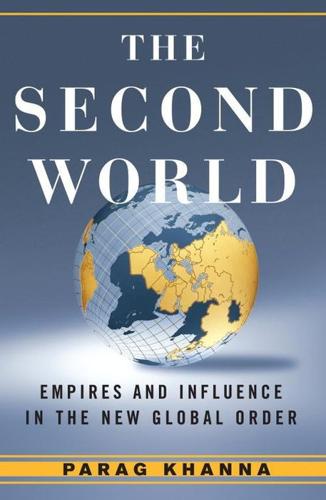
Second World: Empires and Influence in the New Global Order
by
Parag Khanna
Published 4 Mar 2008
“Singapore is virtually synonymous with globalization,” a multinational businessman reminded, pointing out how frequently he has changed jobs with the times. For decades it has constantly shifted its place in the global supply chain, becoming a center of oil-refinery and oil-rig construction even though it has no oil. Its new Biopolis for life sciences (including stem cell) research attracts Western scientists seeking hassle-free employment. The world-class port management, controlled prostitution, casinos, and simplified citizenship for professionals that Dubai envies are all already a reality in “Singapore, Inc.” In the precious little space of Singapore, acreage is zoned years in advance to anticipate future housing and industry needs; high-tech industrial areas are referred to as “estates.”
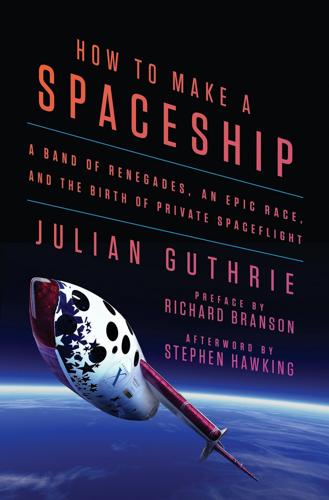
How to Make a Spaceship: A Band of Renegades, an Epic Race, and the Birth of Private Spaceflight
by
Julian Guthrie
Published 19 Sep 2016
Most recently Peter has cofounded two new companies that continue his duality between space and medicine. The first, Planetary Resources, Inc., is building deep-space drones for the prospecting of asteroid resources (as well monitoring terrestrial agricultural and energy resources). The second, Human Longevity, Inc. (HLI), is a genomics-, stem-cell-, and machine-learning-driven company focused on “extending the healthy human lifespan.” HLI is Peter’s mechanism for achieving longevity—his Harvard Medical School redux—so he can one day be assured his trip to space. In addition, the ZERO-G Corporation has flown more than fifteen thousand people, ages nine to ninety-three, into weightlessness.

Capitalism in America: A History
by
Adrian Wooldridge
and
Alan Greenspan
Published 15 Oct 2018
Mark Twain and Charles Dudley Warner’s contention that “in America nearly every man has his dream, his pet scheme, whereby he is to advance himself socially or pecuniarily” remains as true now as when they wrote it in the preface to The Gilded Age (1873). America’s current generation of entrepreneurs is refashioning civilization just as fundamentally as the robber barons did. They are gripped by the same “madness of great men” that gripped the robber barons. Sergey Brin wants to grow meat from stem cells. Elon Musk wants to “reinvent” railways by shooting passengers down hermetically sealed tubes. Peter Thiel of PayPal proclaims that “the great unfinished task of the modern world is to turn death from a fact of life to a problem to be solved.” These great revolutions may well lay the foundations of improved prosperity just as the steel and petroleum revolutions did in the nineteenth century.
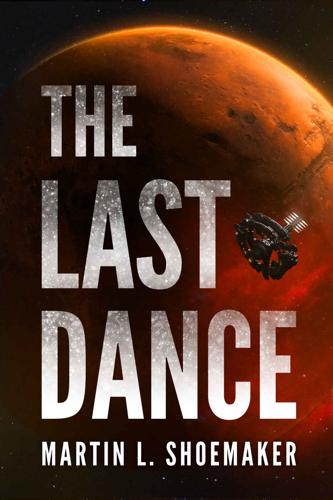
The Last Dance
by
Martin L. Shoemaker
Published 2 Nov 2019
“He’s . . . right across the aisle.” She turned back to me. “His burns were much more severe, deep tissue. His lungs are— We’re printing new ones. We’ve got him on oxy-nanos and detoxers to take the strain off what lung tissue remains. And the toxins are all through his liver, but we’ll . . . we’ll clean that out, get some stem cells in there to replace the damaged tissue. He . . .” She fell silent. I tried to speak again. “Sorry.” Her eyes flared. “Don’t you be sorry!” I thought she was angry, but there was something else. Hope? Determination? No, pride. “He was doing his duty. That’s all he ever wanted. Don’t you . . .” She trailed off again.
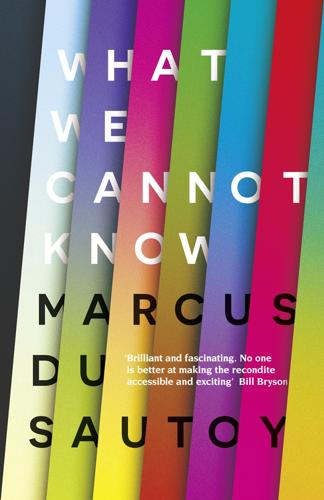
What We Cannot Know: Explorations at the Edge of Knowledge
by
Marcus Du Sautoy
Published 18 May 2016
Science is giving us unprecedented insights into some of the big questions that have challenged humanity ever since we’ve been able to formulate those questions. Where did we come from? What is the ultimate destiny of the universe? What are the building blocks of the physical world? How does a collection of cells become conscious? In the last ten years alone we’ve landed a spaceship on a comet, made robots that can create their own language, used stem cells to repair the pancreas of diabetic patients, discovered how to use the power of thought alone to manipulate a robotic arm, sequenced the DNA of a 50,000-year-old cave girl. Science magazines are bursting with the latest breakthroughs emerging from the world’s laboratories. We know so much. The advances of science are extremely intoxicating.
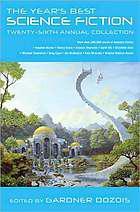
The Year's Best Science Fiction: Twenty-Sixth Annual Collection
by
Gardner Dozois
Published 23 Jun 2009
What is known for certain is that in 2001 disgraced stem cell biologist Hwang Woo-Suk cloned the world’s first dog, an afghan. In 2006, he revealed that he’d tried and failed to clone a mammoth on three separate occasions. Western labs had talked about it, but the Koreans had actually tried. This would prove to be the pattern. In 2011 the Koreans finally succeeded, and a mammoth was born from an elephant surrogate. Other labs followed. Other species. The Pallid Beach Mouse. The Pyrenean Ibex. And older things. Much older. The best scientists in the US had to leave the country to do their work. US laws against stem cell research didn’t stop scientific advancement from occurring; it only stopped it from occurring in the United States.
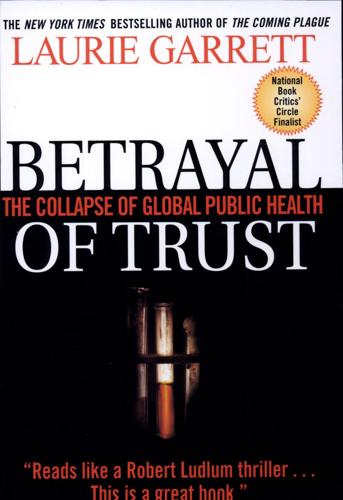
Betrayal of Trust: The Collapse of Global Public Health
by
Laurie Garrett
Published 15 Feb 2000
Surgery might even lose its preeminence in treatment of other disorders, such as burns, spinal cord trauma, and brain damage. In 1998 scientists successfully brewed batches of healthy cells by cloning a normal adult cell, or stem cell. And researchers also proved that, contrary to prior dogma, neurons could grow and reproduce in the brains of adults. So in the future, optimists forecast, burns and spinal cord injuries might be treated with direct growth of appropriate stem cells on the injured site. Getting even further away from surgery, economist Juan Enriquez, who at Harvard University studied the future of health cere, saw nutraceuticals on the horizon.
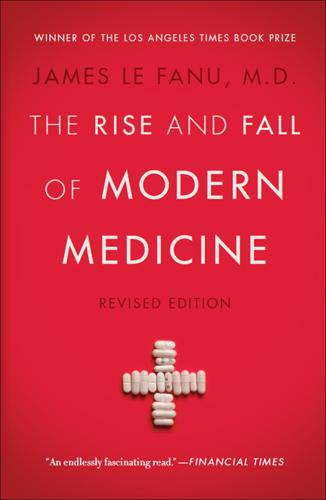
The Rise and Fall of Modern Medicine
by
M. D. James le Fanu M. D.
Published 1 Jan 1999
It is possible that the biological therapies just considered might further improve the prognosis in the common age-determined cancers of the breast, lung, gut and so on. But that, as suggested, will pose a substantial financial strain on the health services of the Western world. Similar considerations apply to the more distant and yet unfulfilled promises of ‘regenerative medicine’ with the prospect that customised stem cells from foetal tissue or bone marrow might repair, for example, damaged nerve cells to become a viable treatment for multiple sclerosis or brain disorders such as Parkinson’s and Alzheimer’s. While the everyday practice of medicine, whether in hospital or general practice, is likely to remain much the same, the two driving forces of intellectual enquiry and therapeutic advance, the Big Science that medical research has become and Big Pharma, can scarcely survive in their present form.

The Billionaire's Apprentice: The Rise of the Indian-American Elite and the Fall of the Galleon Hedge Fund
by
Anita Raghavan
Published 4 Jun 2013
In the high-tech sphere, McKinsey counted as clients eight of the ten largest semiconductor companies and nine of the top ten software companies. It was also a powerhouse in health care, another area of interest to Galleon. Its clients included seventeen US-based biotechnology companies, mainly on the West Coast. It could offer expertise in a variety of disciplines, among them the hot area of stem cell therapies. Tellingly, the presentation made no claim about McKinsey’s knowledge and experience in serving hedge funds. Rajaratnam was singularly unimpressed, but he did not let on. Instead, he politely listened to Stephenson’s pitch and then asked some penetrating questions. After the meeting, he felt there was nothing the McKinsey consultant could tell him that he didn’t already know.
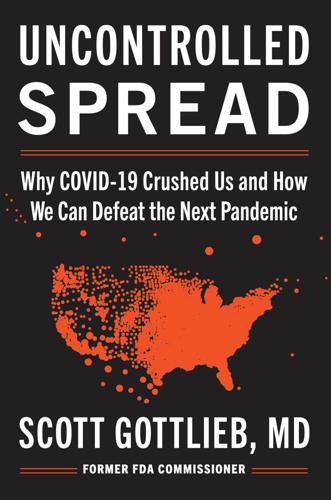
Uncontrolled Spread: Why COVID-19 Crushed Us and How We Can Defeat the Next Pandemic
by
Scott Gottlieb
Published 20 Sep 2021
See Josh Rogin, “Opinion: State Department Cables Warned of Safety Issues at Wuhan Lab Studying Bat Coronaviruses,” Washington Post, April 14, 2020. 46.US Department of State, “Fact Sheet: Activity at the Wuhan Institute of Virology.” 47.Bryan A. Johnson, Xuping Xie, and Vineet D. Menachery, “Loss of Furin Cleavage Site Attenuates SARS-CoV-2 Pathogenesis,” Nature 591 (2021): 293–9; and Yiran Wu and Suwen Zhao, “Furin Cleavage Sites Naturally Occur in Coronaviruses,” Stem Cell Research 50 (2021): 102115. 48.Nicholas Wade, “Origin of Covid—Following the Clues,” Medium, May 3, 2021. 49.Cyranoski, “Inside the Chinese Lab Poised to Study World’s Most Dangerous Pathogens.” 50.Josh Rogin, “In 2018, Diplomats Warned of Risky Coronavirus Experiments in a Wuhan Lab. No One Listened.,” Politico, March 8, 2021; U.S.
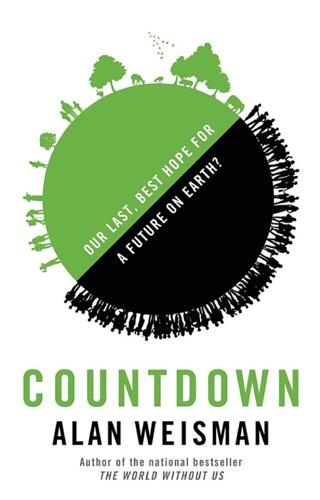
Countdown: Our Last, Best Hope for a Future on Earth?
by
Alan Weisman
Published 23 Sep 2013
But before firing up our barbecues, it’s best to recall that lab-grown nutrients won’t be conjured from thin air: even synthetic food requires a feedstock. The Oxford group hopes to grow muscle tissue from Cyanobacteria hydrolysate, a primitive algae; their Dutch counterparts, with substantial government backing, are trying pig stem cells—and Japanese researchers claim to have alchemized meat from proteins in human waste. Ick factors aside, producing ground beef artificially anytime soon would cost thousands of dollars a pound, and food scientists suspect that commercial production is at least three decades away. By then, assuming no catastrophes, we’ll be well past 9 billion, headed to 10 billion and more.

Architects of Intelligence
by
Martin Ford
Published 16 Nov 2018
We’re now getting clinical applications—it’s a trickle today, but it’ll be a flood over the next decade. There are hundreds of profound interventions in process that are working their way through the regulatory pipeline. We can now fix a broken heart from a heart attack, that is, rejuvenate a heart with a low ejection fraction after a heart attack using reprogrammed adult stem cells. We can grow organs and are installing them successfully in primates. Immunotherapy is basically reprogramming the immune system. On its own, the immune system does not go against cancer because it did not evolve to go after diseases that tend to get us later on in life. We can actually reprogram it and turn it on to recognize cancer and treat it as a pathogen.
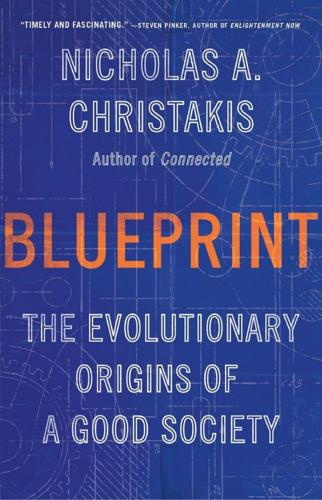
Blueprint: The Evolutionary Origins of a Good Society
by
Nicholas A. Christakis
Published 26 Mar 2019
Artists and storytellers have explored the unnerving nature of human-animal hybrids for a very long time, at least as far back as the Chimera of Greek mythology. But modern science has had its own fixation with hybrids: animal-to-human blood transfusions in the seventeenth century, the first xenotransplantation of a pig cornea to a human in 1838, the insertion of a baboon heart into the newborn Baby Fae in 1984, and the successful integration of human stem cells into a growing pig embryo in 2017. D. K. C. Cooper, “A Brief History of Cross-Species Organ Transplantation,” Baylor University Medical Center Proceedings 25 (2012): 49–57; K. Reemtsma, “Xenotransplantation: A Historical Perspective,” Institute for Laboratory Animal Research Journal 37 (1995): 9–12. 4.
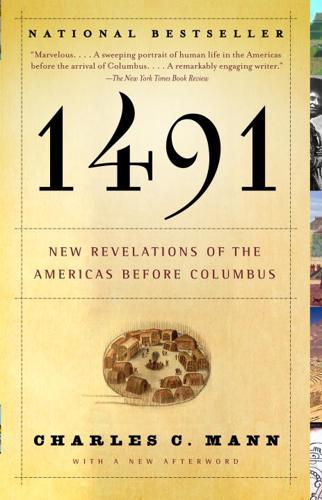
1491
by
Charles C. Mann
Published 8 Aug 2005
The reason for the subtitle is that for the most part these revelations—the great antiquity, size, and sophistication of Indian societies—are new to the public. The question, implicit in the previous, is the cause of the gap. Why don’t intelligent non-specialists, the sort of people who know a bit about stem cells and read contemporary literature, already know something about how researchers think of the Americas before Columbus? Another way of putting the question would be to ask: Why isn’t this material already in high-school textbooks? In the past one could have simply pointed to institutional racism.

Power and Progress: Our Thousand-Year Struggle Over Technology and Prosperity
by
Daron Acemoglu
and
Simon Johnson
Published 15 May 2023
But organizing paid off, and soon there was an about-face by lawmakers and the medical policy establishment. Millions of dollars started pouring into HIV research. Once the money and societal pressure built up, the direction of medical research altered, and by the late 1990s, there were new drugs that could slow down AIDS infections, as well as novel therapeutics, including early stem-cell treatments, immunotherapies, and genome-editing strategies. By the early 2010s, an effective cocktail of drugs was available to contain the spread of the virus and provide more normal life conditions for most infected people. Several HIV vaccines are now in clinical trials. What seemed impossible was achieved fairly rapidly in the fight against HIV/AIDS, as it was in renewable energy.

Fodor's Essential Israel
by
Fodor's Travel Guides
Published 2 Aug 2023
Athletes have enjoyed occasional bright moments on the Olympic podium—and Israeli Paralympians are always among the medalists—and in European club basketball. Israel is also a world-class chess nation. Academia is strong. Twelve Israelis have been awarded Nobel Prizes since 1966. Innovative research in fields like nanotechnology and stem-cell treatment continue to make important biological and medical breakthroughs, at the conceptual, technological, and pharmacological levels, for the treatment of cancer and other diseases. In the important business of Arab–Jewish relations (within Israel), much needs to be done; but there are joint business ventures, bilingual theater groups and bands, and interschool dialogue and collaborative projects.

The Bill Gates Problem: Reckoning With the Myth of the Good Billionaire
by
Tim Schwab
Published 13 Nov 2023
Patents 7998696, 8304203, and 8765391, Assignment of Patents from Bill and Melinda Gates Foundation to Stemcell Technologies Canada, Reel/Frame 040405/0749, May 31, 2016. a 2019 charitable grant: The Gates Foundation’s grant records show a $2.9 million donation to Stemcell Technologies “to develop optimized methods for the generation of antibody producing B-cells from stem cells to be used to protect against infectious diseases in the developing world.” drug discovery platform: David Bank and Dennis Price, “Returns on Investment: How a Broad Bet on a Biotech Company Paid Off in Promising Drugs for Neglected Diseases,” Making Markets Work for the Poor, Supplement, Stanford Social Innovation Review (Summer 2016): 35–36.
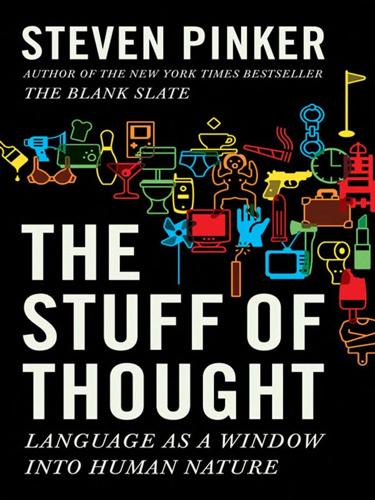
The Stuff of Thought: Language as a Window Into Human Nature
by
Steven Pinker
Published 10 Sep 2007
And the ability to frame an event in alternative ways is not just a reason to go to court but also the source of the richness of human intellectual life. As we shall see, it provides the materials for scientific and literary creativity, for humor and wordplay, and for the dramas of social life. And it sets the stage in countless arenas of human disputation. Does stem-cell research destroy a ball of cells or an incipient human? Is the American military incursion into Iraq a case of invading a country or of liberating a country? Does abortion consist of ending a pregnancy or of killing a child? Are high tax rates a way to redistribute wealth or to confiscate earnings?
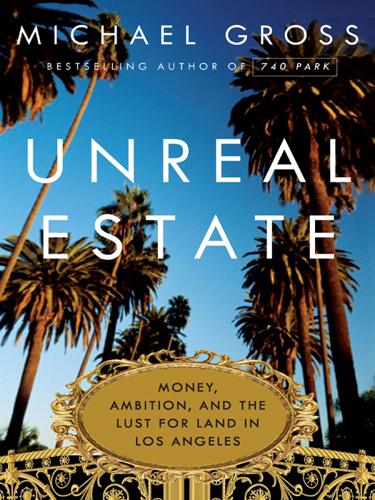
Unreal Estate: Money, Ambition, and the Lust for Land in Los Angeles
by
Michael Gross
Published 1 Nov 2011
“The boys lived there after his death,” says granddaughter Whittier Woods. “I was a child there. Helen remained a Christian Scientist, but my father became interested in founding hospitals.” Today, his L. K. Whittier Foundation, with assets of just under $90 million, supports colleges and hospitals, and stem cell and nanobiology research that Max Whittier might not have approved of. In 1928, the mansion was sold to Samuel Berch, owner of a large dairy and ice cream maker. The Berches, too, opened the house for good causes, typically Jewish ones. They had only one brush with notoriety, when one of their four daughters ran off to Tijuana at seventeen and married a nightclub performer ten years her senior.
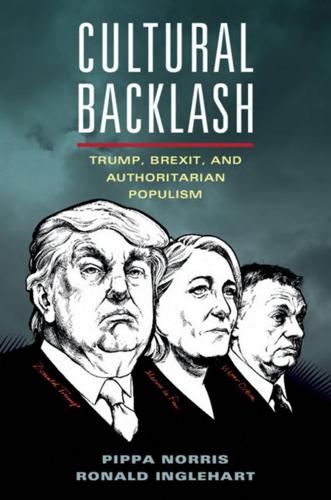
Cultural Backlash: Trump, Brexit, and Authoritarian Populism
by
Pippa Norris
and
Ronald Inglehart
Published 31 Dec 2018
Part II Authoritarian-Populist Values 99 Table 4.1. The silent revolution in social values in America, 2001–2017 First year asked % 2017 % Change % MORE LIBERAL VIEWS Gay/lesbian relations Having a baby outside of marriage (2002) Sex between an unmarried man and woman Divorce Medical testing on animals Polygamy (2003) Human embryo stem cell research (2002) Doctor-assisted suicide Cloning humans Pornography (2011) Suicide Death penalty Sex between teenagers (2013) 40 45 53 59 65 7 52 49 7 30 13 63 32 63 62 69 73 51 17 61 57 14 36 18 58 36 23 17 16 14 –14 10 9 8 7 6 5 –5 4 NO CHANGE Extramarital affairs Gambling (2003) Birth control (2012) Abortion Cloning animals Animal fur clothing (buying/wearing) 7 63 89 42 31 60 9 65 91 43 32 57 2 2 2 1 1 –3 Note: The items were first asked in the survey in 2001 unless otherwise indicated.

Doomsday Book
by
Connie Willis
Published 1 Jan 1992
Gilchrist and the rest of Mediaeval might be incompetent, but Kivrin wasn’t. She had learned Middle English and Church Latin and Anglo-Saxon. She had memorized the Latin masses and taught herself to embroider and milk a cow. She had come up with an identity and a rationale for being alone on the road between Oxford and Bath, and she had the interpreter and augmented stem cells and no appendix. “She’ll do swimmingly,” Dunworthy said, “which will only serve to convince Gilchrist Mediaeval’s methods aren’t slipshod and dangerous.” Gilchrist walked over to the console and handed the carryboard to Badri. Kivrin folded her hands again, closer to her face this time, her mouth nearly touching them, and began to speak into them.
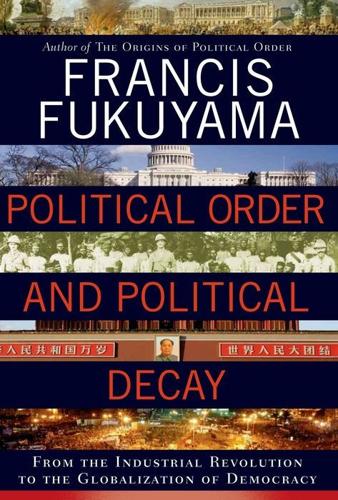
Political Order and Political Decay: From the Industrial Revolution to the Globalization of Democracy
by
Francis Fukuyama
Published 29 Sep 2014
This bias is not a random one but tends to work against the interests of the unorganized, who are often poor, poorly educated, or otherwise marginalized.17 Morris Fiorina has provided substantial evidence that what he labels the American “political class” is far more polarized than the American people themselves. He presents a wide variety of data showing that on many supposedly contentious issues, from abortion to deficits to school prayer to gay marriage, poll data show that majorities of the American public support compromise positions—for example, use of federal funding to support stem cell research on excess embryos in fertility clinics. Party activists are invariably more ideological and take more extreme positions, whether on the left or right, than the rank-and-file party voters. But the majorities supporting middle-of-the-road positions do not feel very passionately about them, and they are largely unorganized.
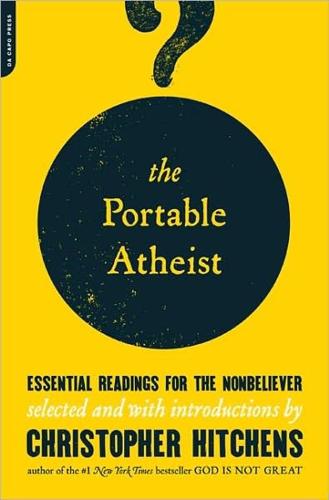
The Portable Atheist: Essential Readings for the Nonbeliever
by
Christopher Hitchens
Published 14 Jun 2007
Or shift your gaz to the western bank of the Jordan, where Messianic settlers hope, by stealing the land of others in accordance with biblical directives, to bring on Armageddon in their own way. The chief international backers of these religious colonists, the American evangelical fundamentalists, are simultaneously trying to teach stultifying pseudo-science in schools, criminalize homosexuality, forbid stem-cell research, and display Mosaic law in courtrooms. From Rome, the Holy Father proposes to remedy the situation by restoring the historically anti-Semitic “Tridentine” form of the Mass, preaching crusading rhetoric with one hand while capitulating to Islamism on the other and maintaining that condoms are worse than AIDS.
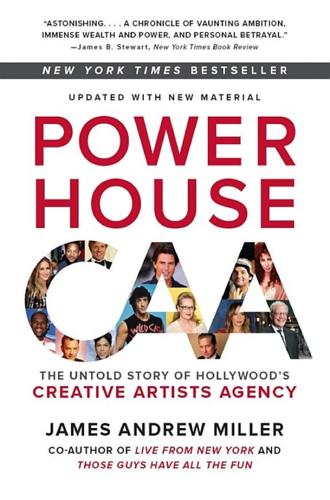
Powerhouse: The Untold Story of Hollywood's Creative Artists Agency
by
James Andrew Miller
Published 8 Aug 2016
Eight days later, my wife Sharon was diagnosed with Hodgkin’s lymphoma. My friends in town and at CAA could not have been more generous. I took off six months to raise Sarah; Sharon was on radiation and chemo, so she couldn’t be around a newborn. We celebrated remission. Nine months later it came back and we moved to City of Hope for a stem-cell transplant. The next couple years were safe enough to adopt my boy Luke. Along the way, I left CAA in 2005 after an inspired meeting with Peter Guber. I realized that I’d rung all the bells I’d wanted to ring and staying there longer would just be about money, and that was never my thing. I went on to start a feature and TV career, which have allowed me to spend more time with my family.

I Am Charlotte Simmons: A Novel
by
Tom Wolfe
Published 9 Nov 2004
At the moment the court was congested with entertainers-the cheerleaders shaking their fannies, the Chazzies dance troupe shaking their fannies, the gymnasts hurling their twirling girls into the air and catching them, and the Zulj Brothers-twin sophomores from Slovenia majoring in clonotic biology (the study of undifferentiated stem cells) who also happened to be jugglers-juggling alarming things such as serially lit cherry-bomb firecrackers. Even after almost a month of it, Charlotte was agog at this zany show that seemed to pop up from out of the floor to the uber-exuberant accompaniment of the Charlies' Children's Alumni Band whenever the players were not on the floor.

Palo Alto: A History of California, Capitalism, and the World
by
Malcolm Harris
Published 14 Feb 2023
All these ideas eventually did turn into successful web plays—though not by Netscape—so there was plenty of potential there, and besides some servers and office space, the firm was untethered from physical restrictions, leaving it able to pivot on a dime and scale up without a clear limit. The stock performed similarly. Netscape straddled the line between the internetworking companies discussed in this chapter’s first section—the round of devices that evolved from Bechtolsheim’s circuit board like different organs from the same stem cells—and the true web start-ups of the internet boom. Navigator was software, leaving the silicon to someone else—they just had to get disks to users. If the idea of being mailed a physical copy of a single program sounds woefully inefficient now, the idea of downloading a file so large over a phone line was preposterous at the time.

USA Travel Guide
by
Lonely, Planet
When the bubble burst, plunging the state’s economy into chaos, Californians blamed their Democratic governor, Gray Davis, and, in a controversial recall election, voted to give Arnold Schwarzenegger a shot at fixing things. Despite some early fumbles, the actor-turned-Republican-politician ‘Governator’ surprisingly put environmental issues and controversial stem-cell research at the top of his agenda. Budget shortfalls have caused another staggering financial crisis that Sacramento lawmakers and once-again Governor Jerry Brown have yet to resolve. Meanwhile, the need for public education reform builds, prisons overflow, state parks are chronically underfunded and the conundrum of illegal immigration from Mexico, which fills a critical cheap labor shortage (especially in agriculture), continues to vex the state.
…
All that said, America’s biggest schism isn’t between religions or even between faith and skepticism. It’s between fundamentalist and progressive interpretations within each faith. Most Americans don’t care much if you’re Catholic, Episcopalian, Buddhist or atheist. What they do care about are your views on abortion, contraception, gay rights, stem-cell research, teaching of evolution, school prayer and government displays of religious icons. The country’s Religious Right (the oft-used term for evangelical Christians) has pushed these issues onto center stage, and the group has been effective at using politics to codify its conservative beliefs into law.
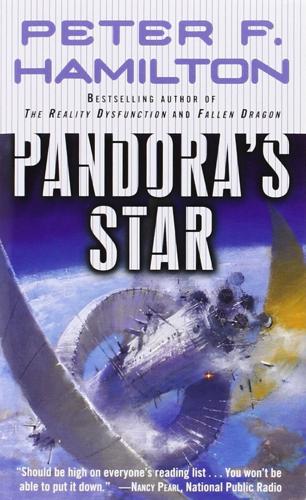
Pandora's Star
by
Peter F. Hamilton
Published 2 Mar 2004
His mind underwent just the tiniest tweak of envy at the prospect of what would come in the midterm future, events and miracles whose timetable and budget allocations meant they might just elude him. The Europeans can afford to wait, though. While thanks to the dominant influence of the Religious Right over the last few administrations, the U.S. had halted all genetic work centered around stem cells, the Federal government in Brussels had poured money into biogenic research, with spectacular results. Now that the early bugs had been ironed out of the hugely expensive procedure, they’d begun to rejuvenate people. The first man to receive the treatment, Jeff Baker, had died in a climax of global publicity; but in the following seven years there had been eighteen successes.
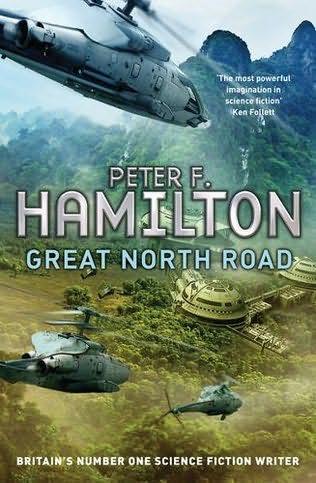
Great North Road
by
Peter F. Hamilton
Published 26 Sep 2012
And now, by painful increments, his body was being returned to its youthful ideal. Even better, this time around his reconstituted genes would have the one-in-ten sequence factored in. The process was phenomenally expensive. Some organs could be regrown for him; the heart, lungs, kidney, liver, spleen, bladder, muscles … a long useful list that modified stem cells could shape themselves into around pre-molded scaffolds of tissue, producing a viable body part ready for transplanting. But that still left the remainder of the human body: the all-important skin, and bone, and blood vessels and nerves, all of which had to be rejuvenated in situ with gene-replacement therapy.
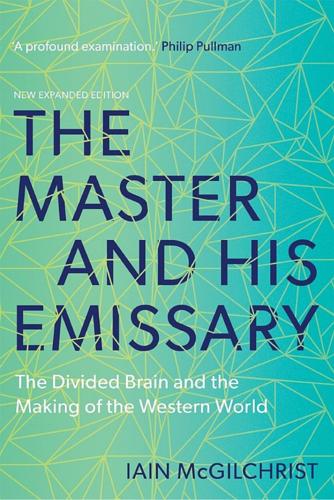
The Master and His Emissary: The Divided Brain and the Making of the Western World
by
Iain McGilchrist
Published 8 Oct 2012
M., Botvinick, M. et al., ‘Parsing executive processes: strategic vs. evaluative functions of the anterior cingulate cortex’, Proceedings of the National Academy of Sciences of the USA, 2000, 97(4), pp. 1944–8 Cassileth, B. R., Vickers, A. J. & Magill, L. A., ‘Music therapy for mood disturbance during hospitalization for autologous stem cell transplantation: a randomized controlled trial’, Cancer, 2003, 98(12), pp. 2723–9 Cassirer, E., An Essay on Man, Yale University Press, New Haven CT, 1948 ——, The Problem of Knowledge, trans. W. H. Woglom & C. W. Hendel, Yale University Press, New Haven CT, 1950 Castle, T., The Female Thermometer: Eighteenth-Century Culture and the Invention of the Uncanny, Oxford University Press, Oxford, 1995 Cavanna, A.

The Better Angels of Our Nature: Why Violence Has Declined
by
Steven Pinker
Published 24 Sep 2012
Its loss leaves no gap in any family circle, deprives no children of their breadwinner or their mother, no human being of a friend, helper, or companion.138 Today we know that infants do feel pain, but in other ways Mercier’s line of reasoning has been taken up by several contemporary philosophers—invariably pilloried when their essays are brought to light—who have probed the shadowy regions of our ethical intuitions in cases of abortion, animal rights, stem cell research, and euthanasia.139 And while few people would admit to observations like Mercier’s, they creep into intuitions that in practice distinguish the killing of a newborn by its mother from other kinds of homicide. Many European legal systems separate the two, defining a separate crime of infanticide or neonaticide, or granting the mother a presumption of temporary insanity.140 Even in the United States, which makes no such distinction, when a mother kills a newborn prosecutors often don’t prosecute, juries rarely convict, and those found guilty often avoid jail.141 Sometimes, as with the trash-can moms of 1997, a media circus removes any possibility of leniency, but even these young women were paroled after three years in jail.